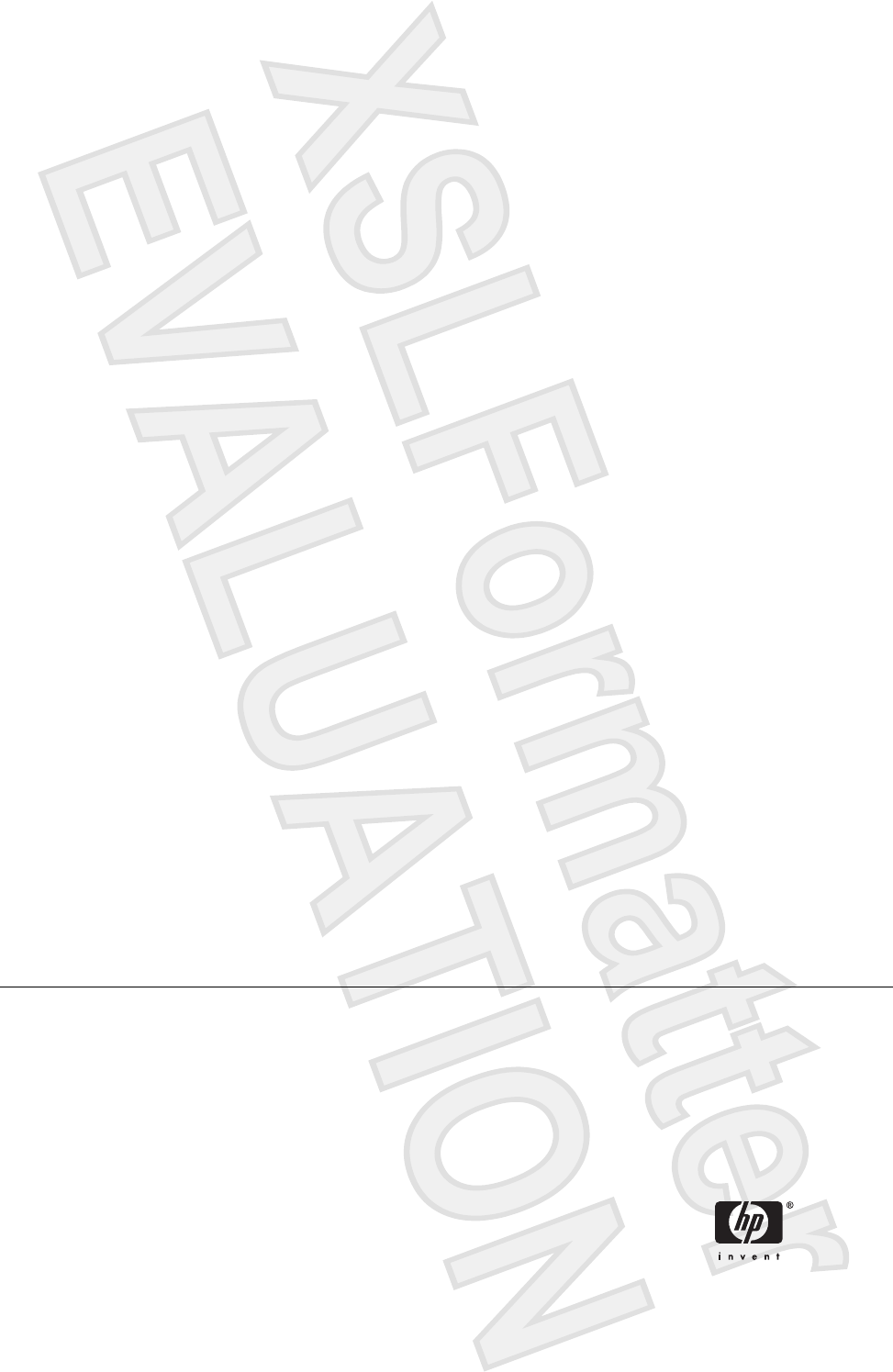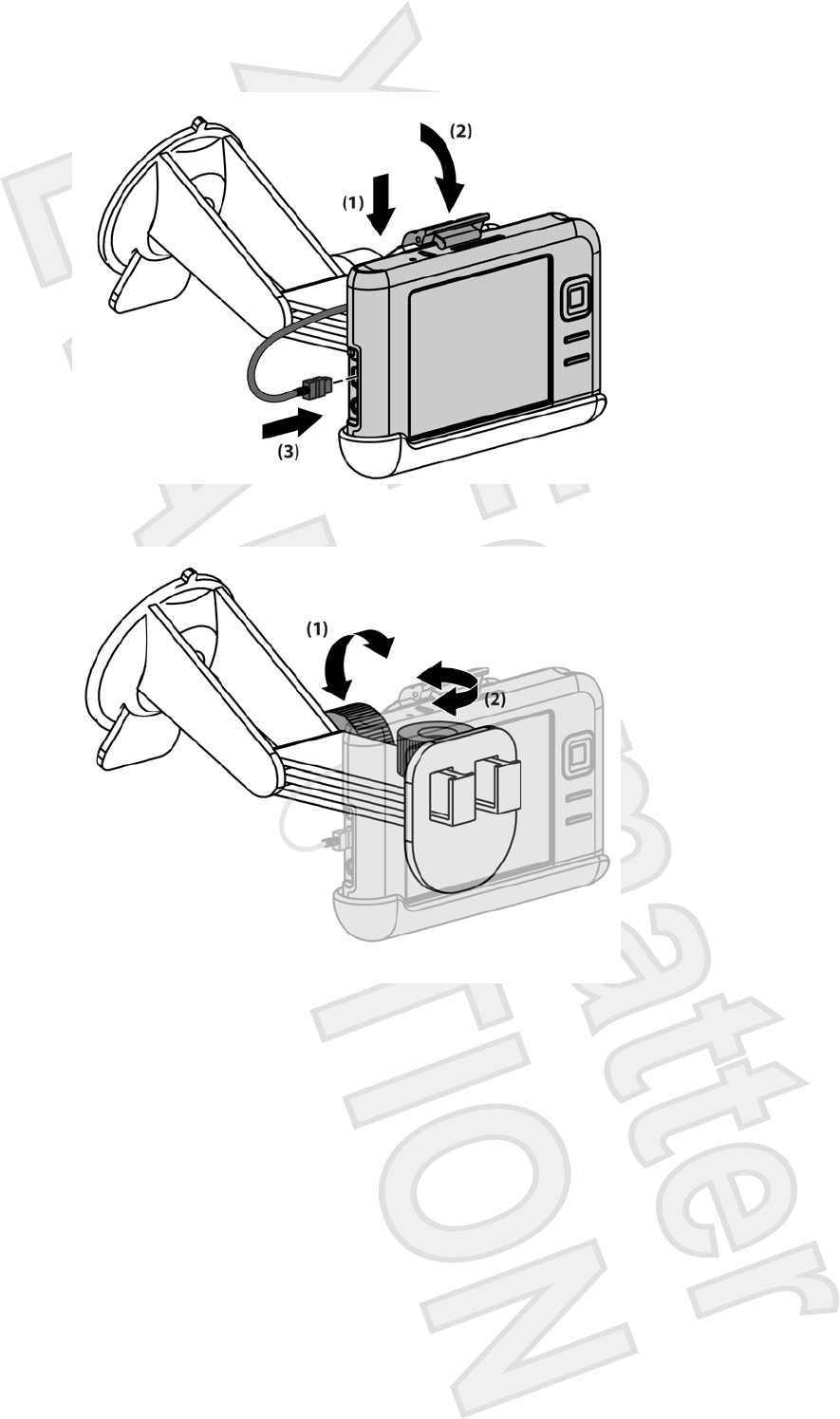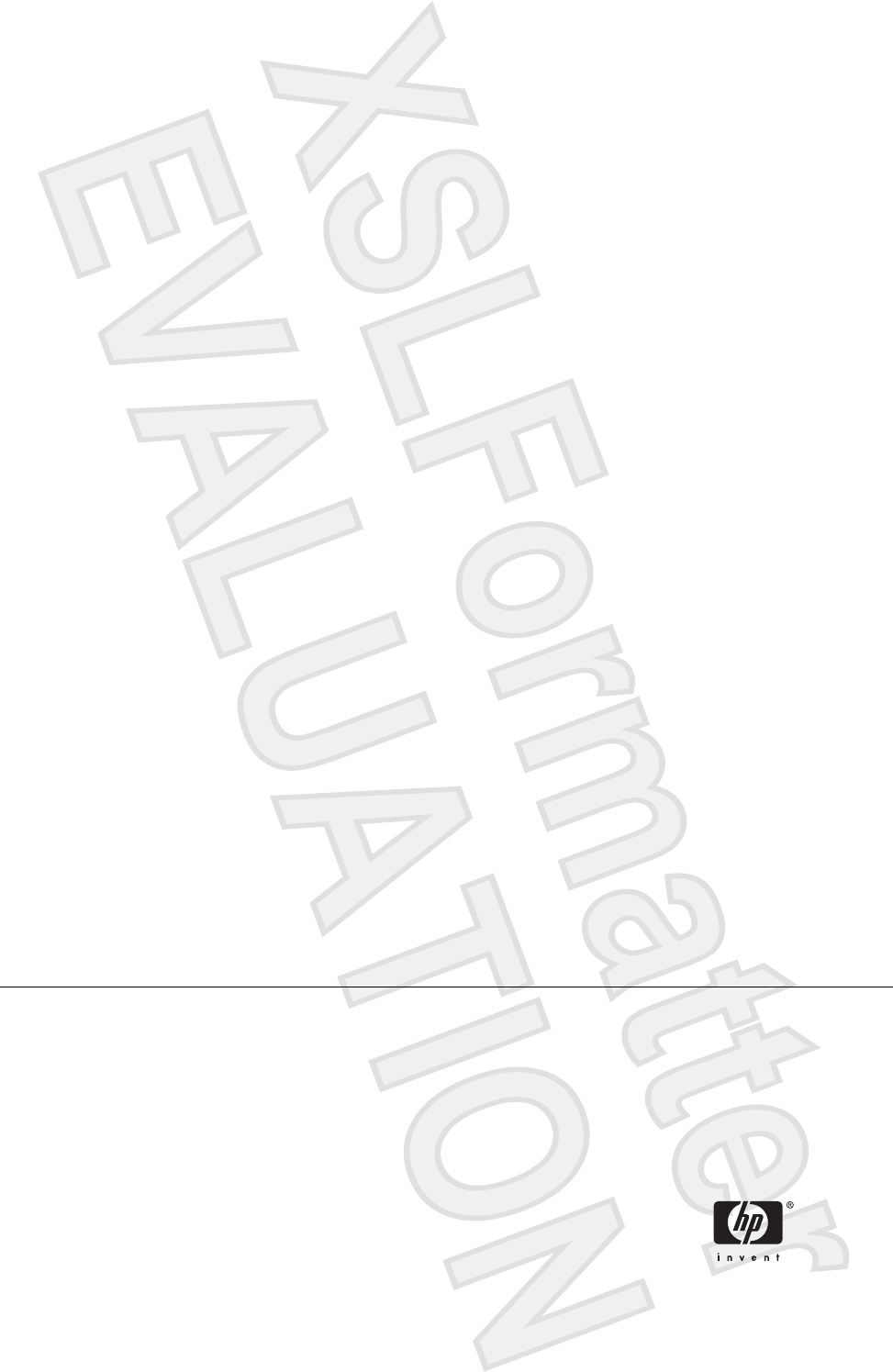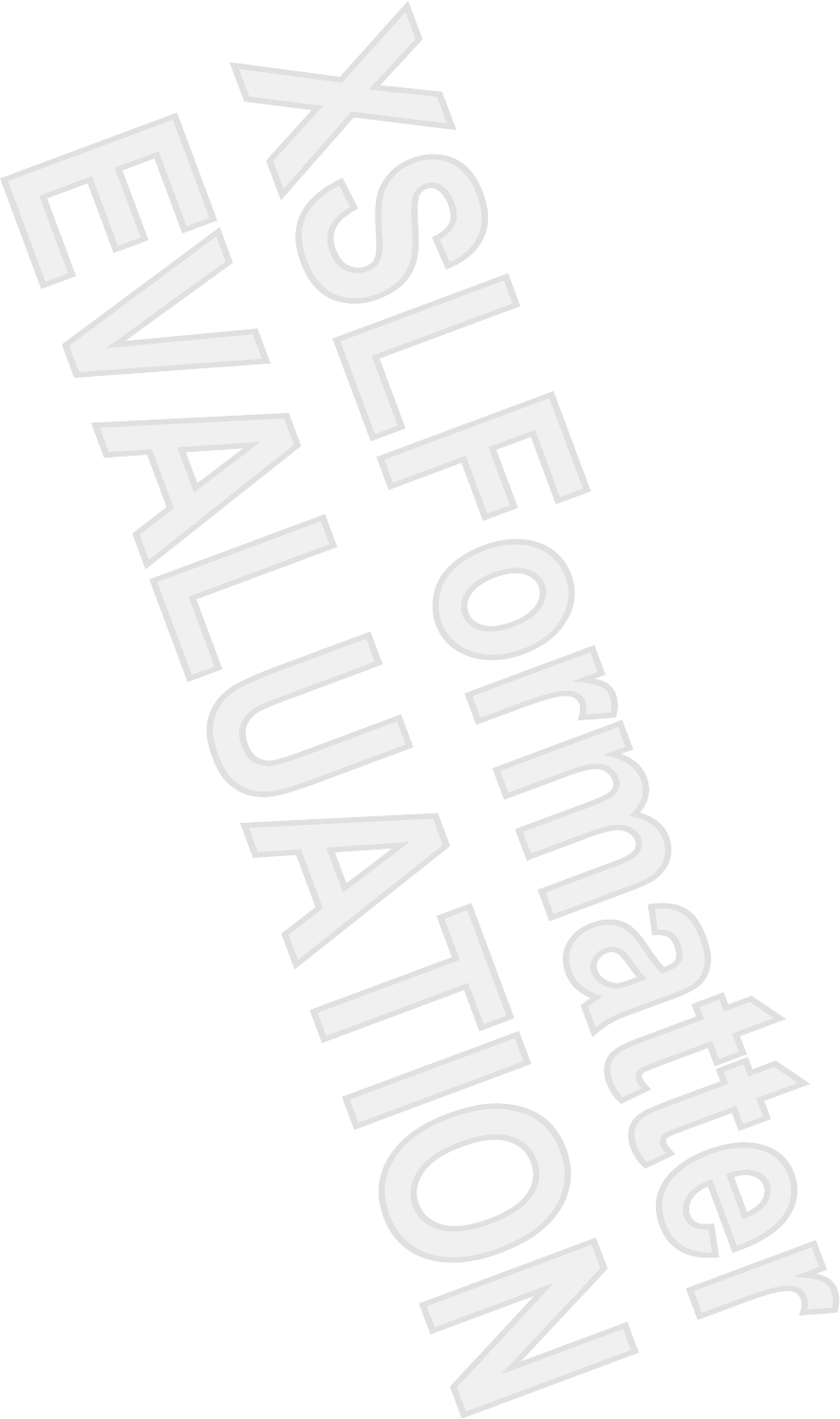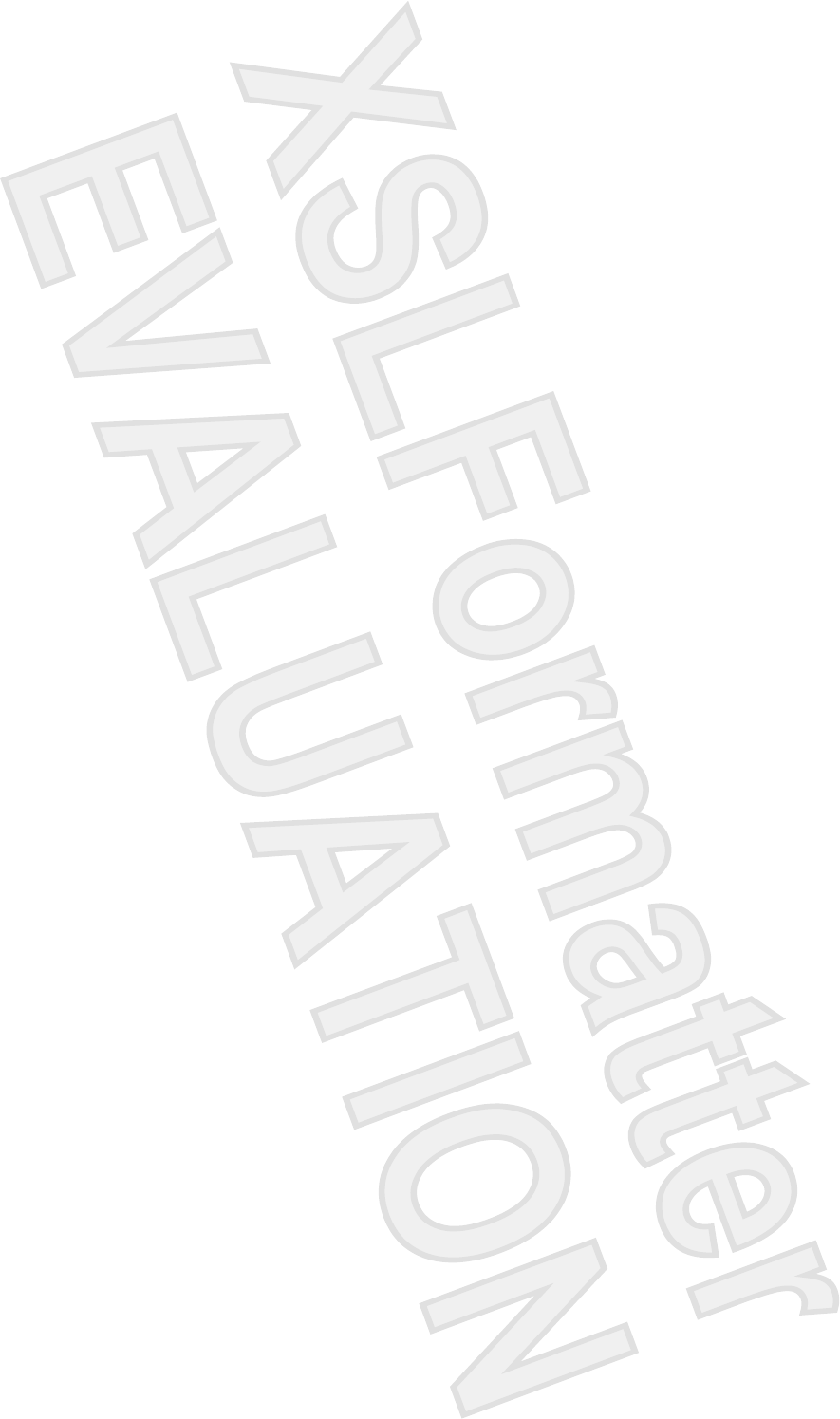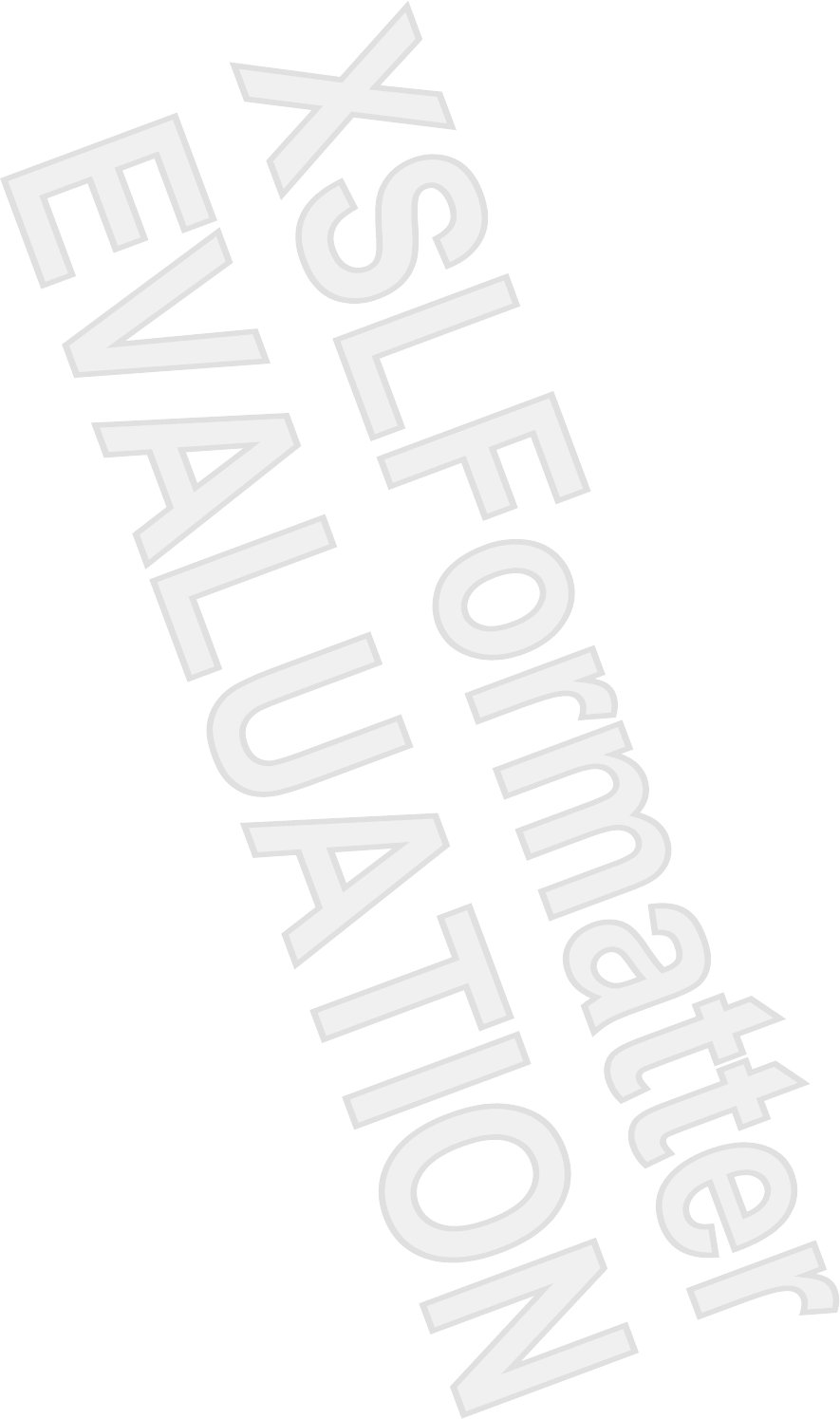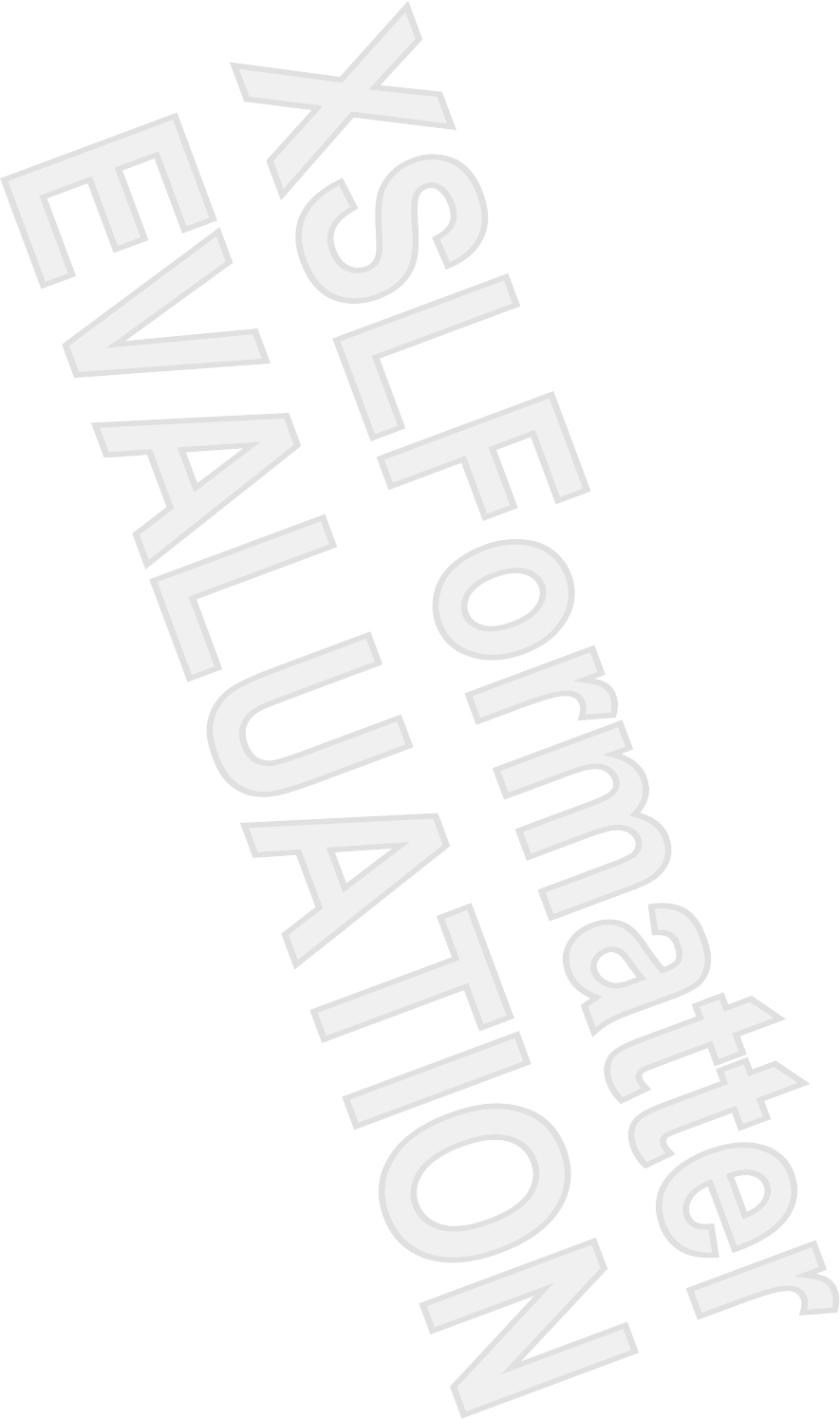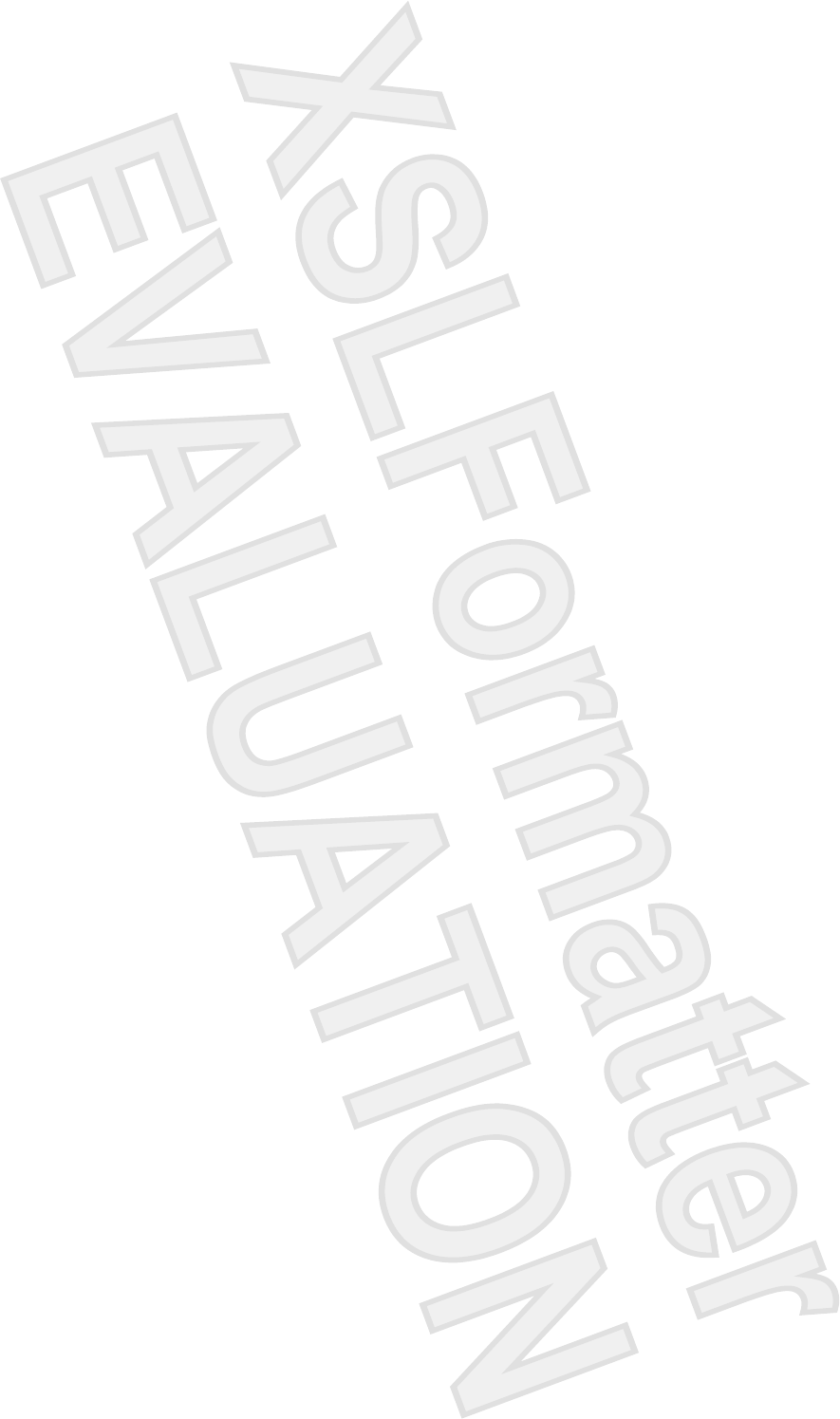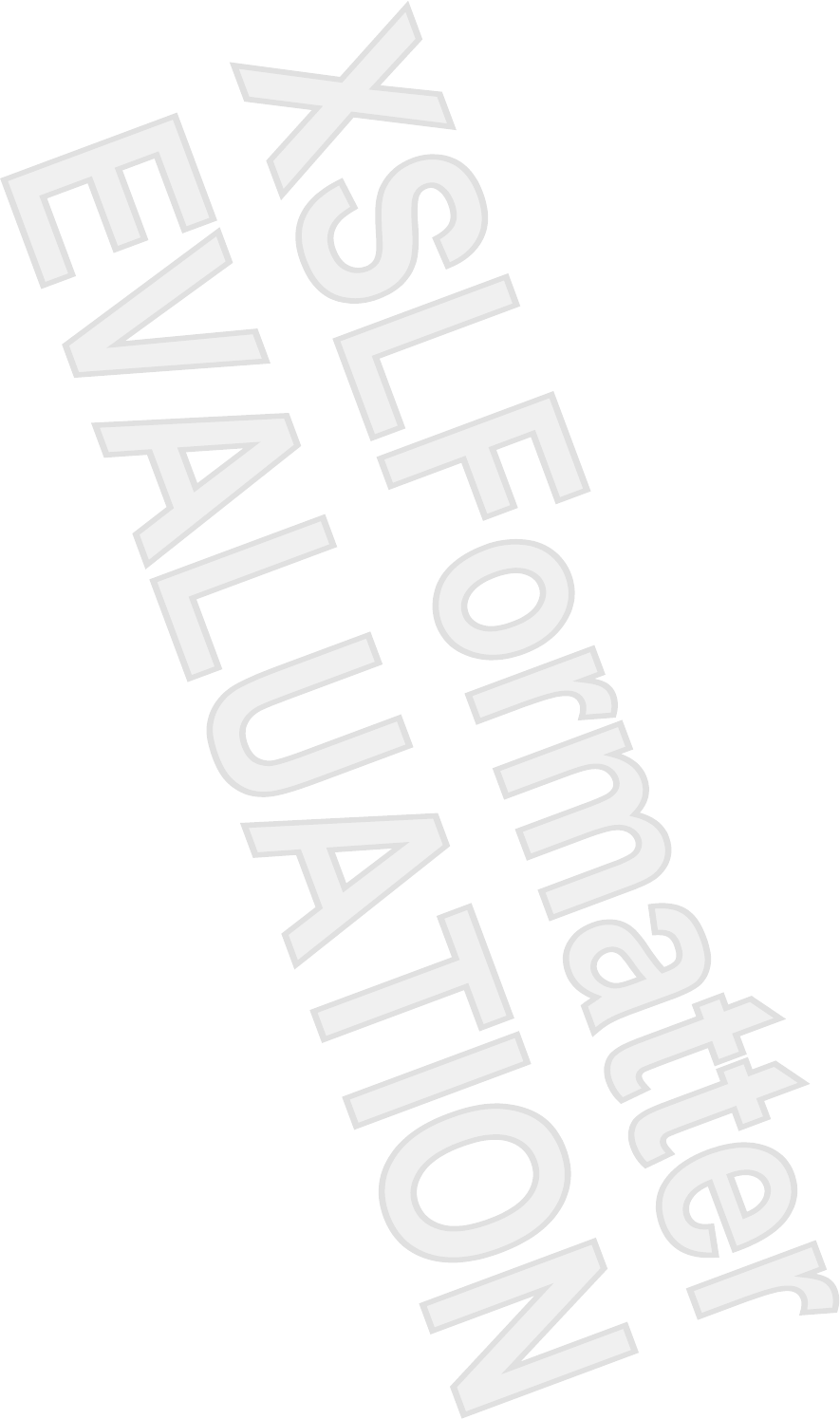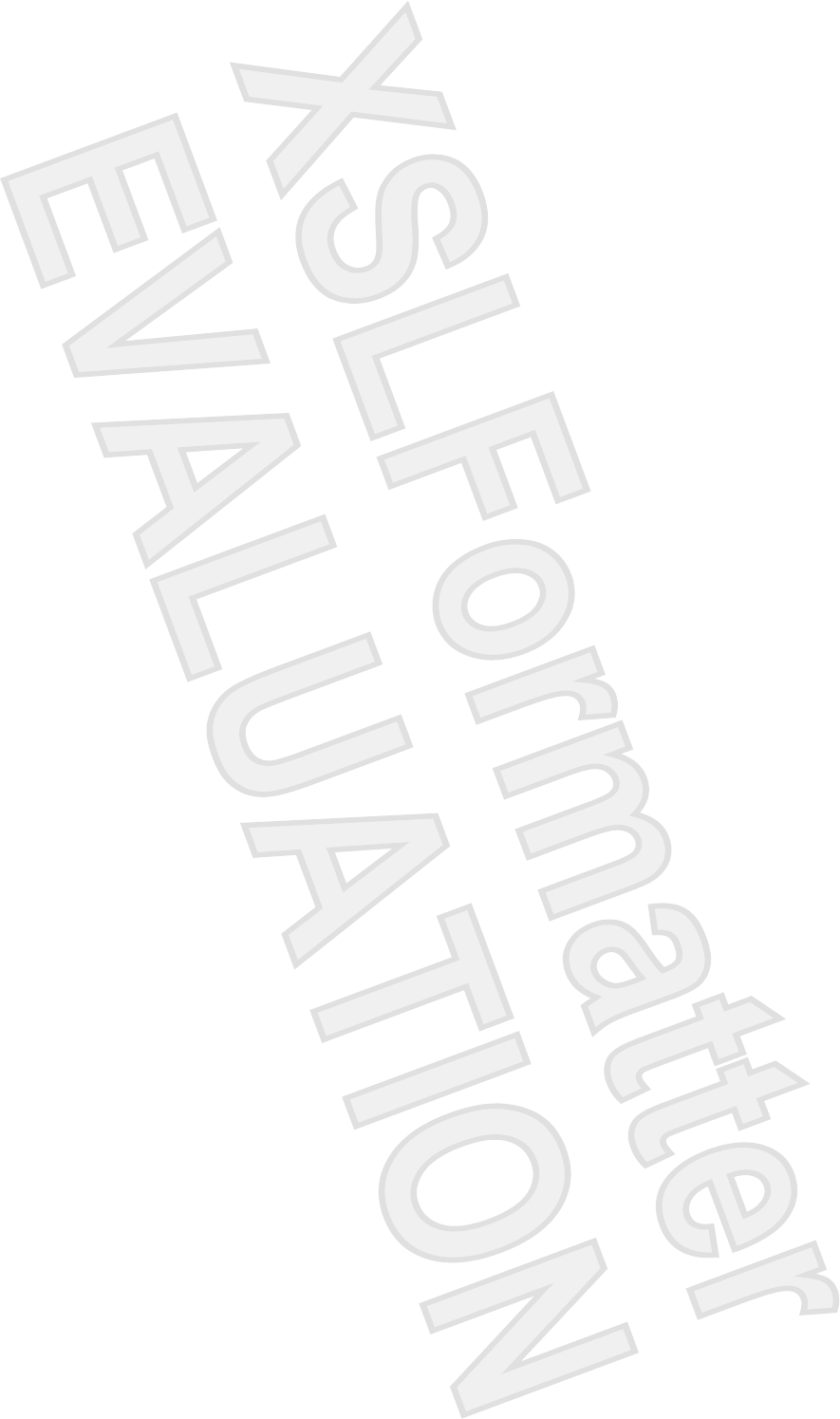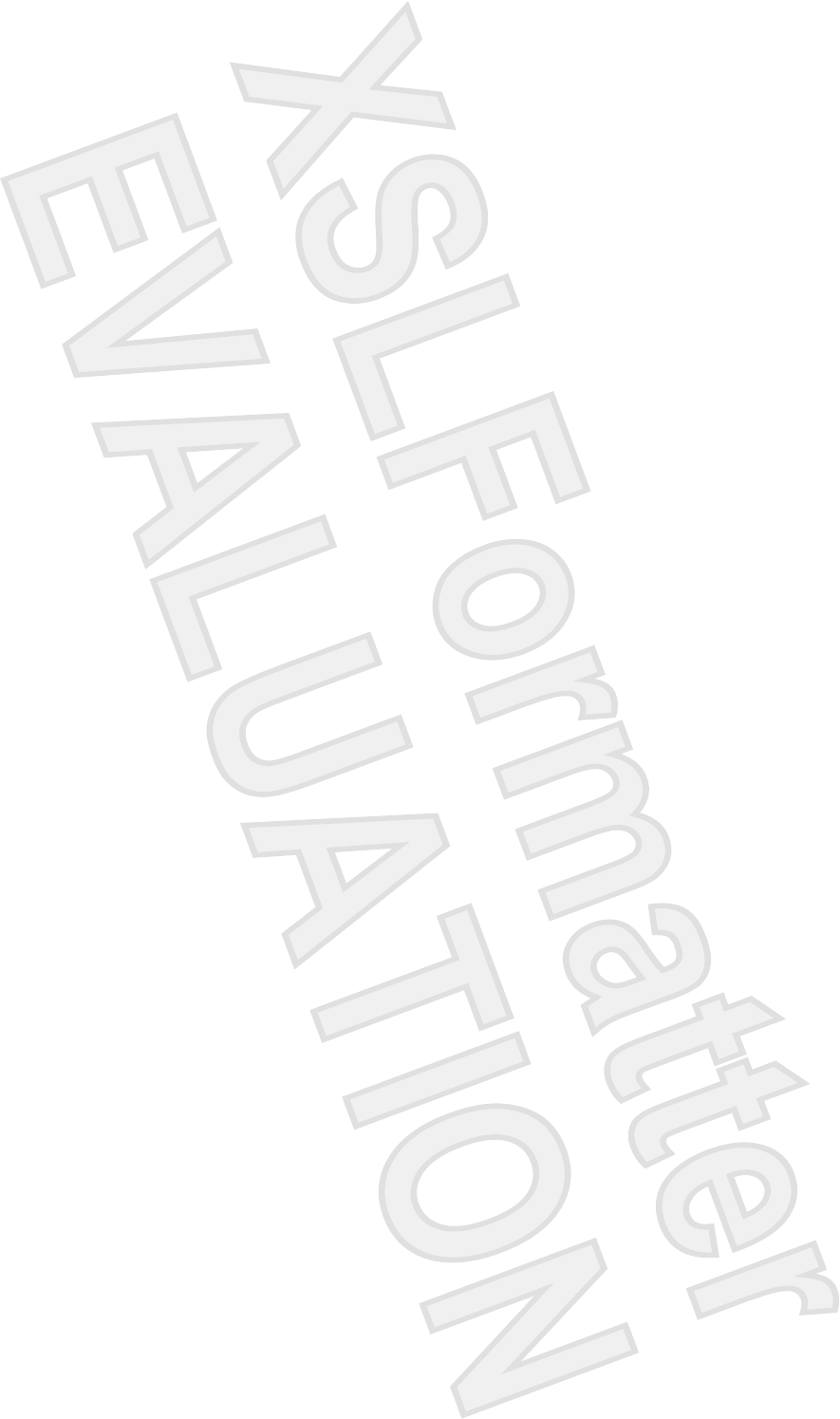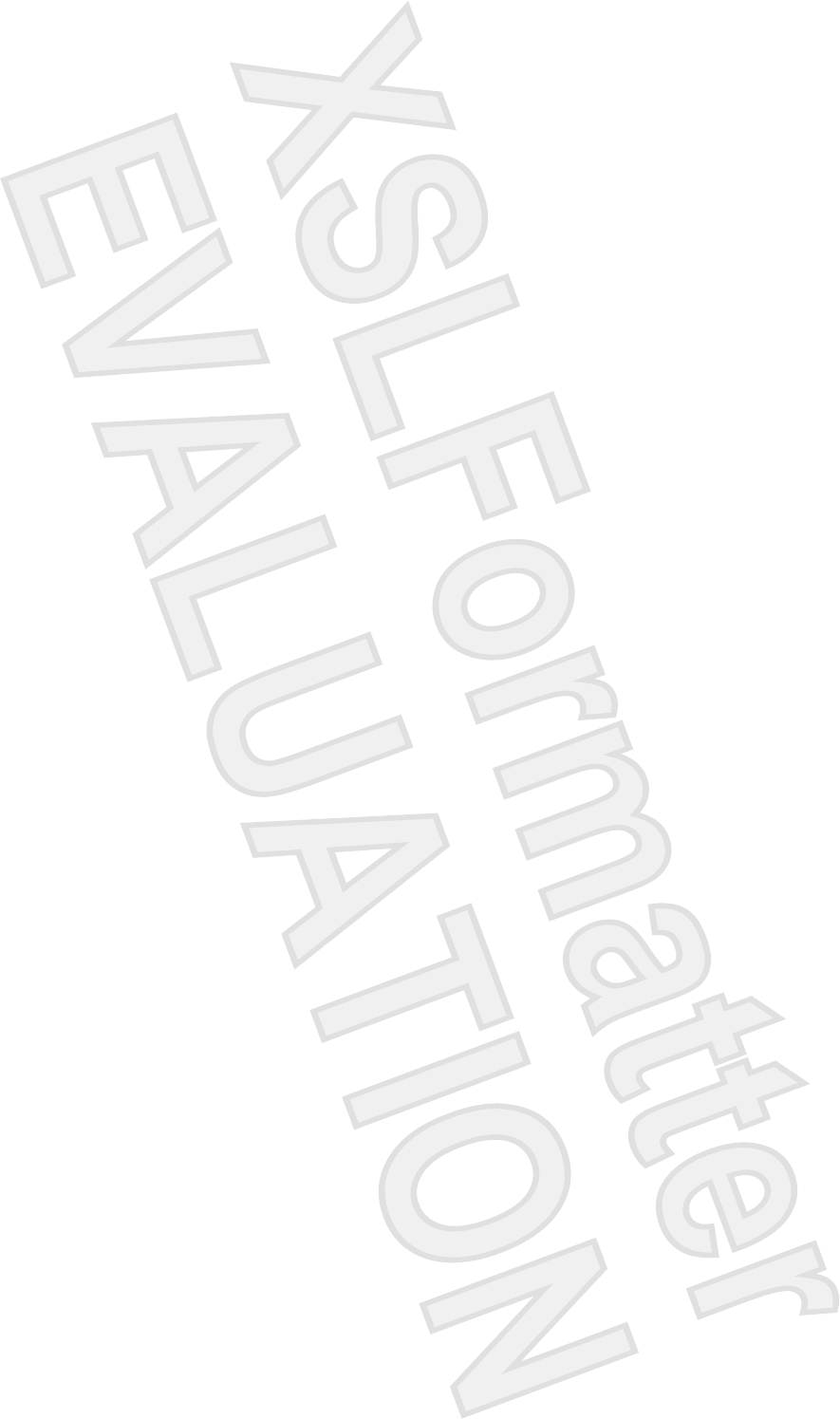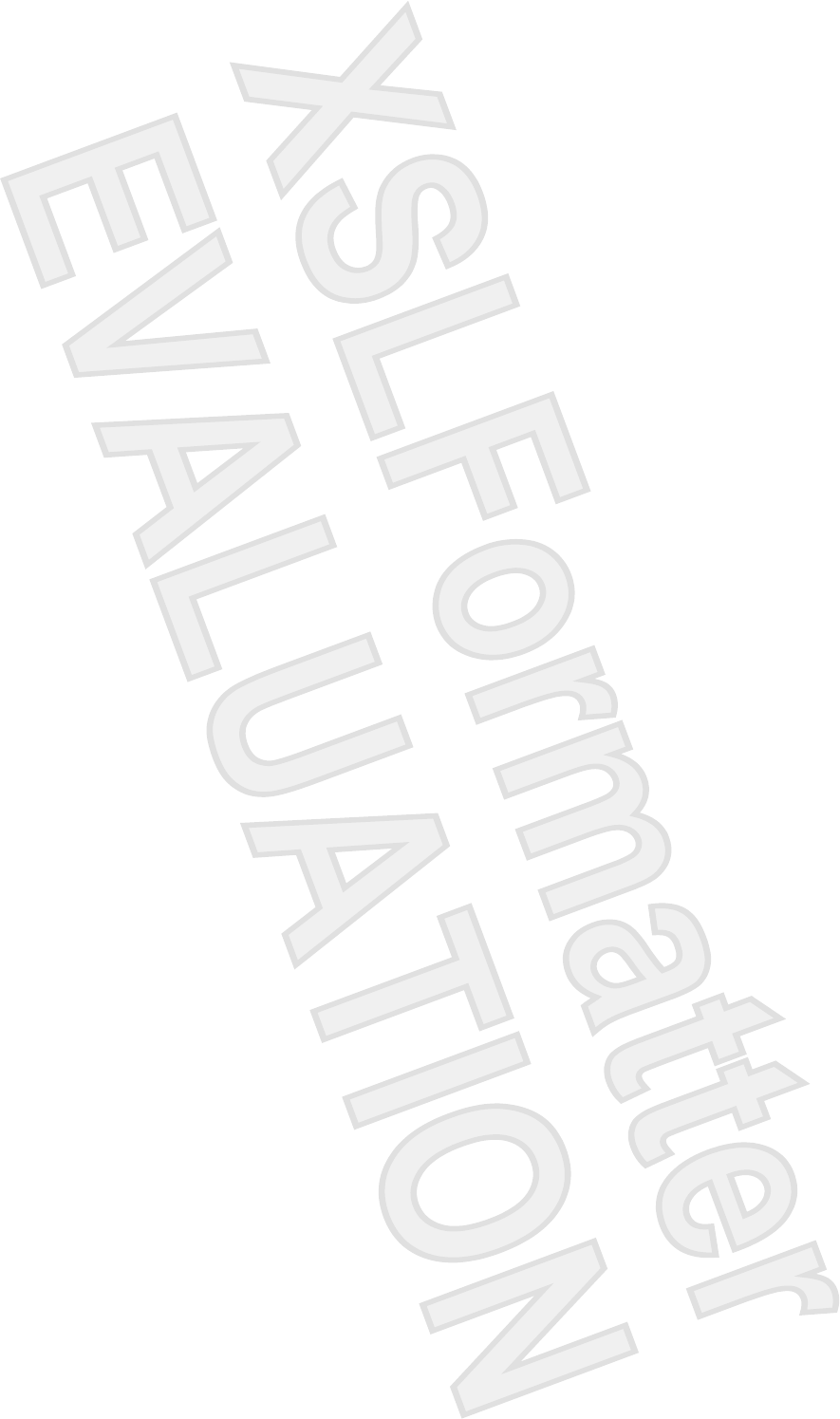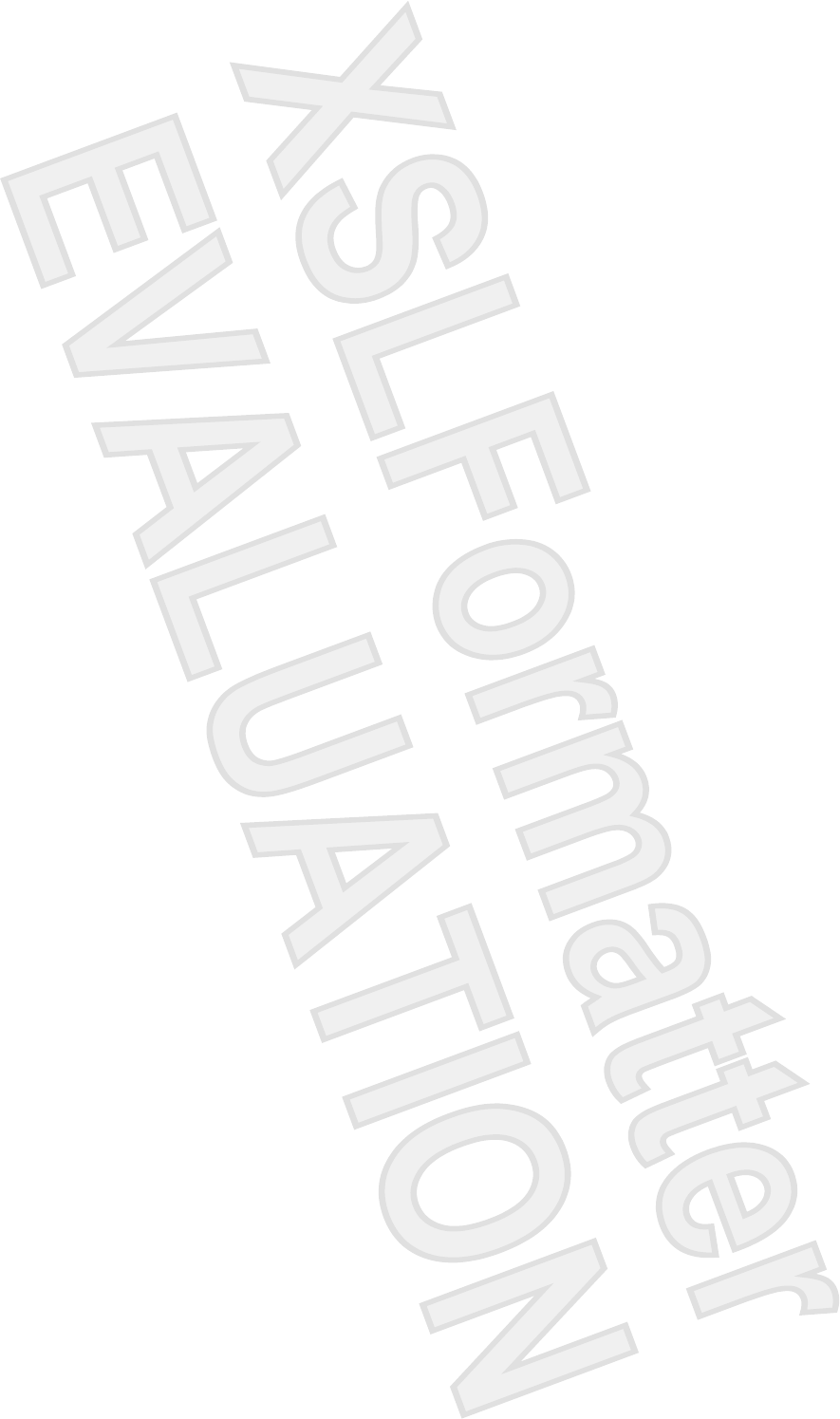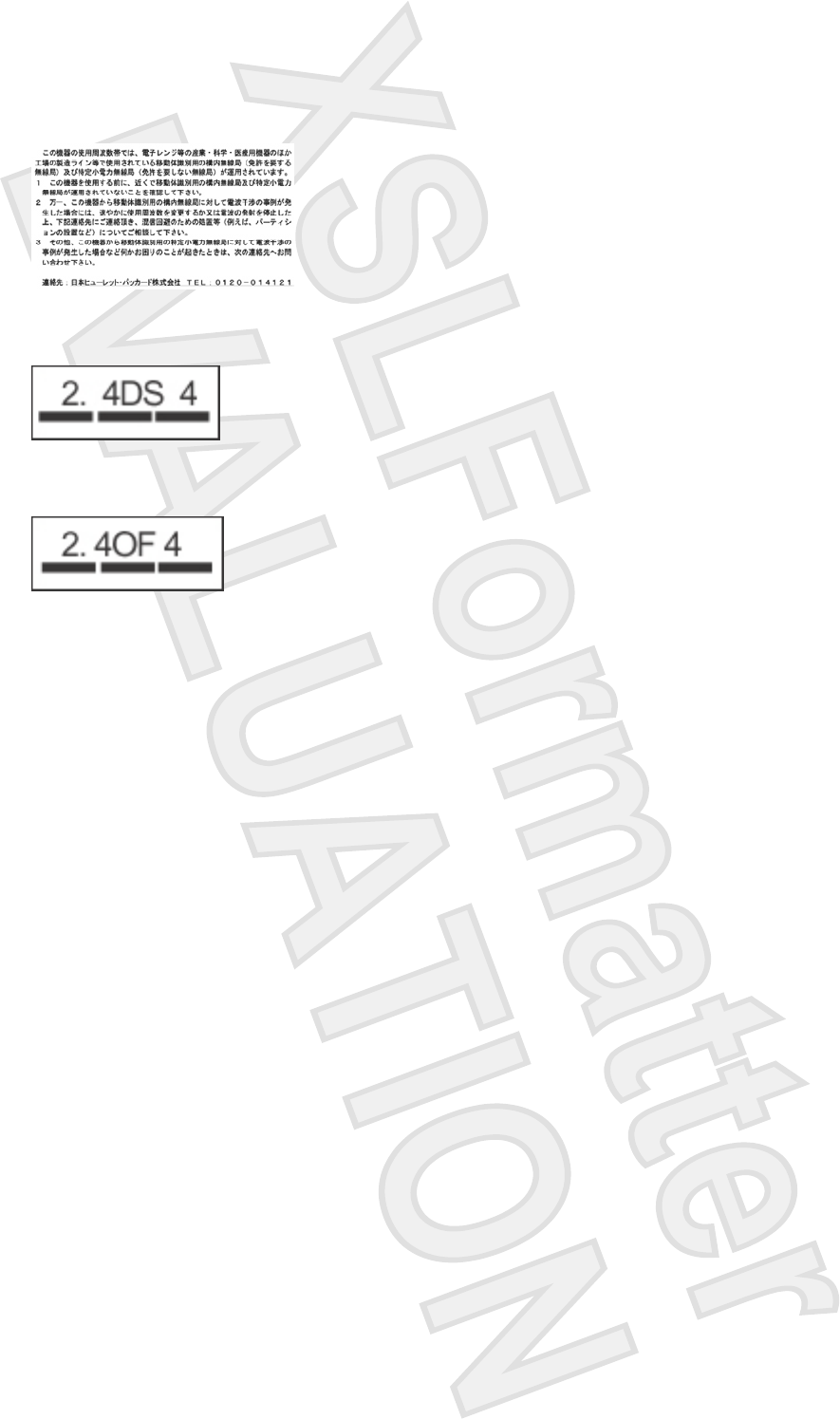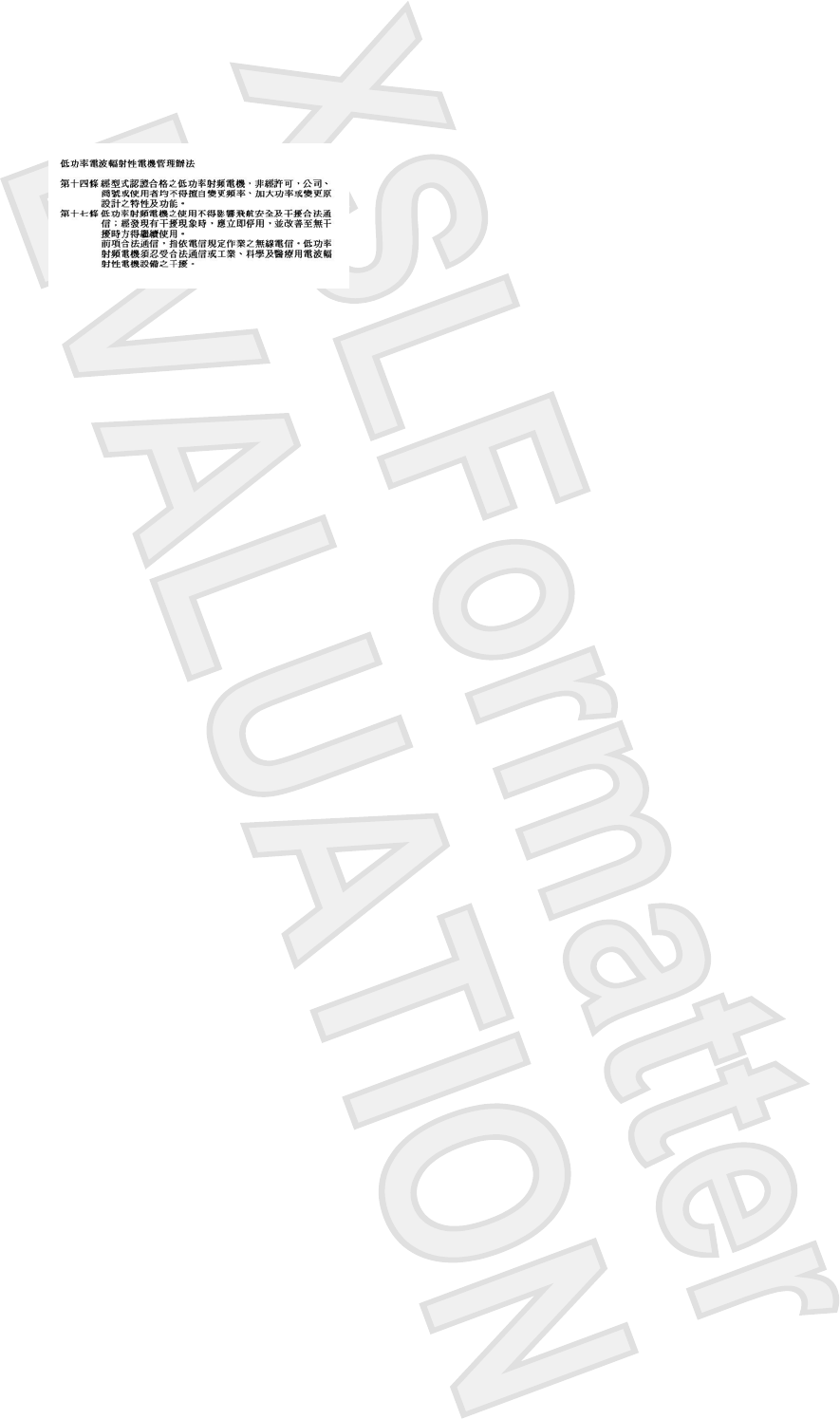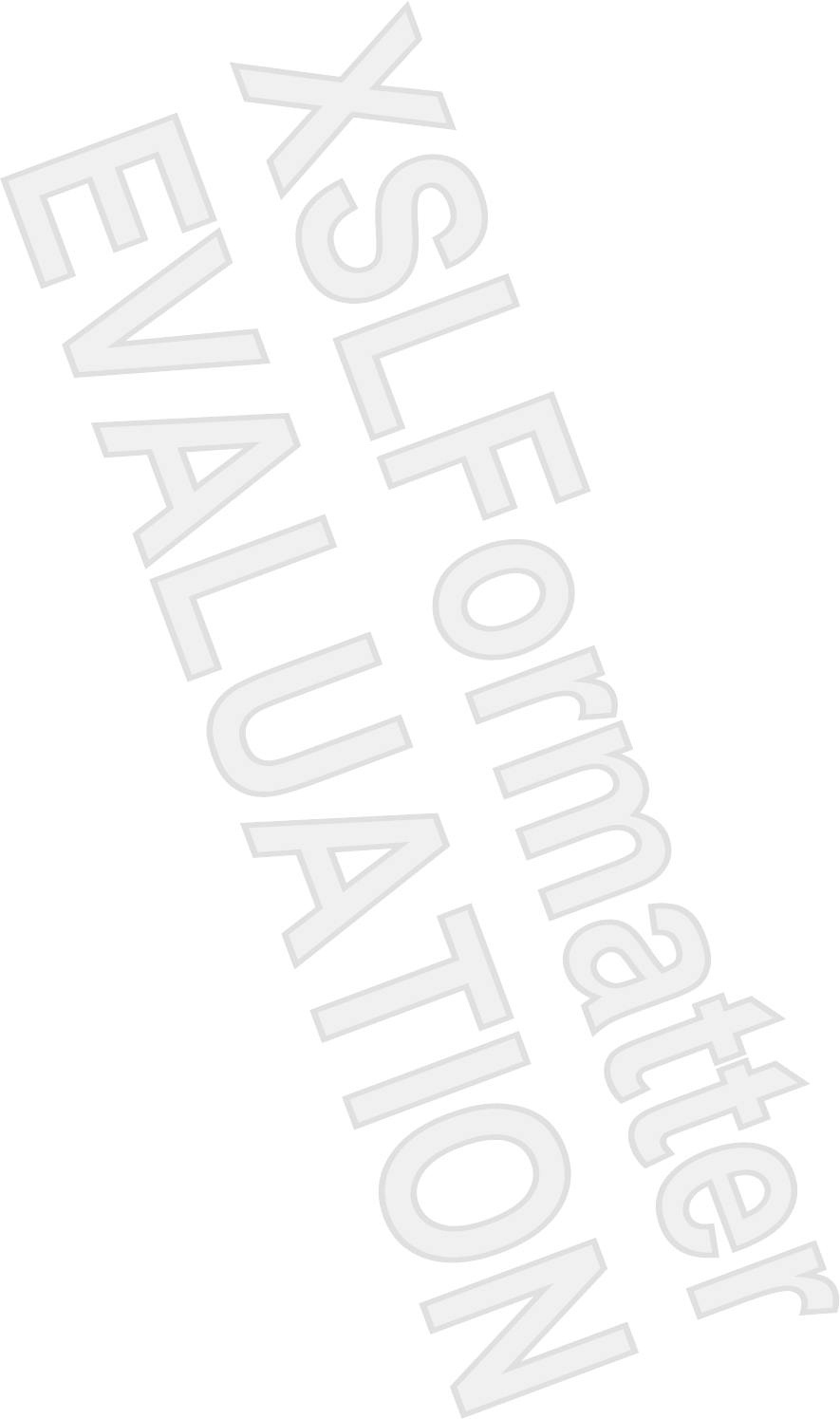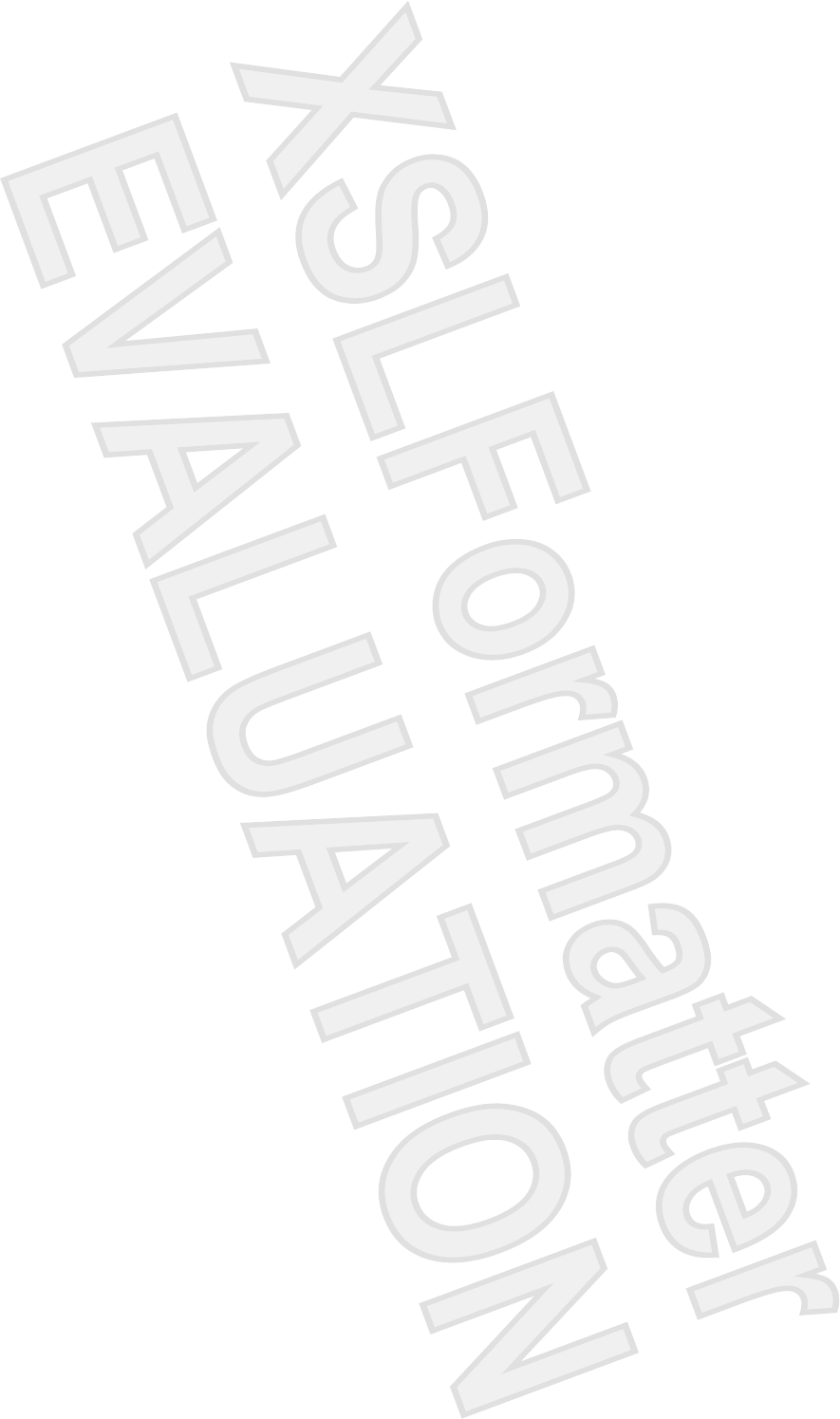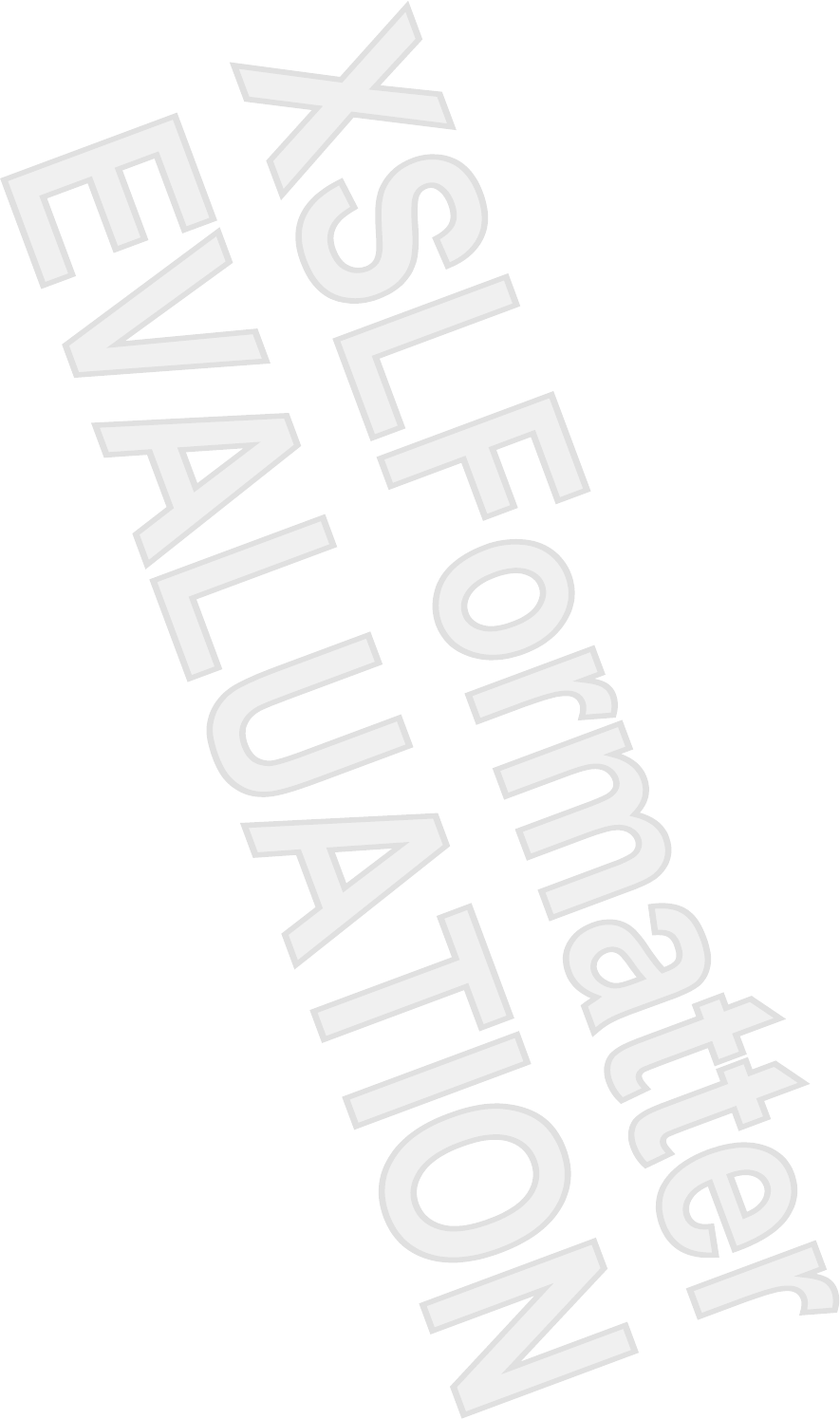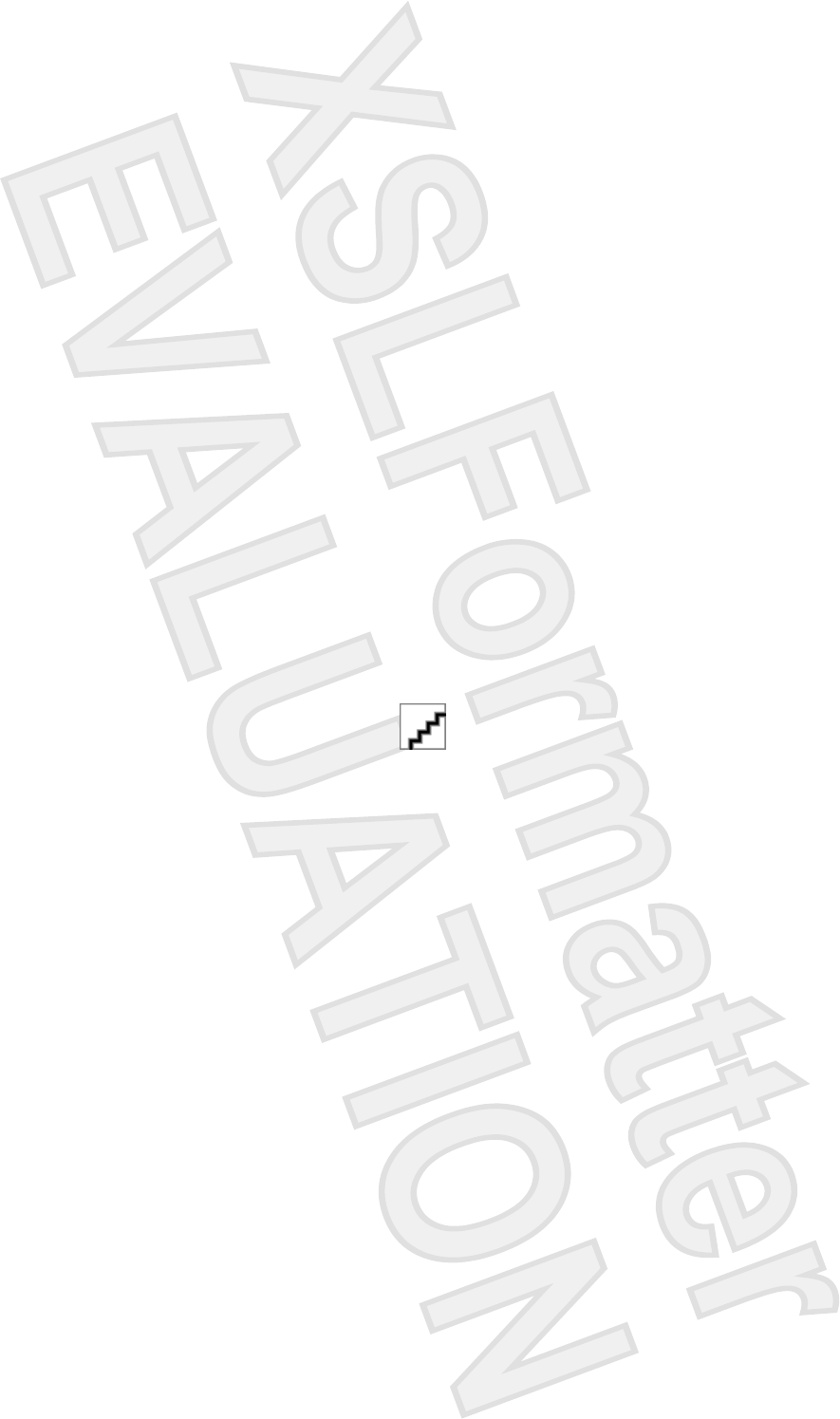LG Electronics USA PDA-L12C-WL PDA User Manual Revised
LG Electronics USA PDA Users Manual Revised
Contents
Users Manual Revised
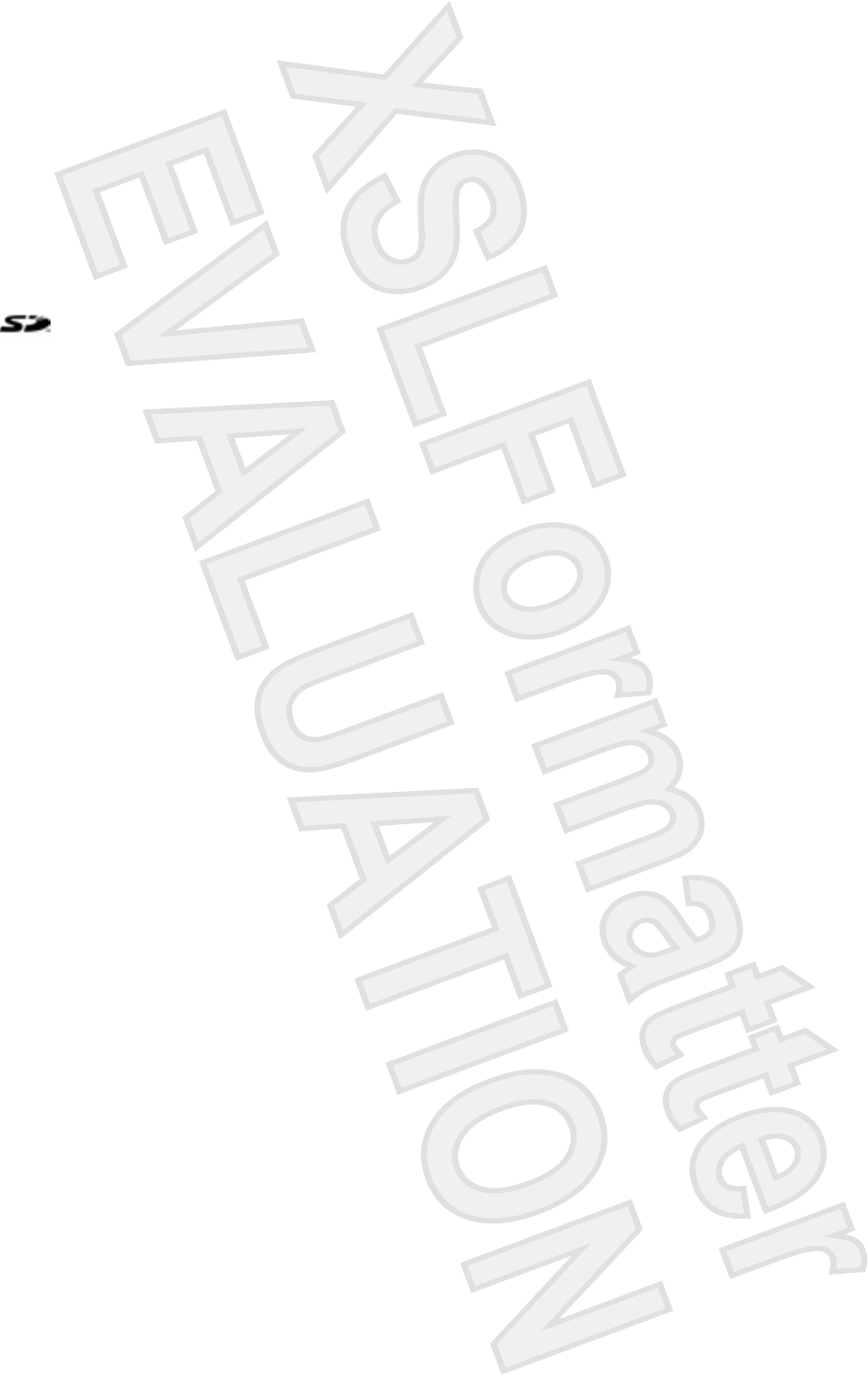
© 2006 Hewlett-Packard Development
Company, L.P.
Microsoft, Windows, the Windows logo,
Outlook, and ActiveSync are trademarks of
Microsoft Corporation in the U.S. and other
countries.
HP iPAQ Products are Powered by
Microsoft® Windows Mobile™ 5.0 software
for Pocket PC.
SD Logo is a trademark of its
proprietor.
Bluetooth® is a trademark owned by its
proprietor and used by Hewlett-Packard
Development Company, L.P. under license.
All other product names mentioned herein
may be trademarks of their respective
companies.
Hewlett-Packard Company shall not be liable
for technical or editorial errors or omissions
contained herein. The information is
provided “as is” without warranty of any kind
and is subject to change without notice. The
warranties for Hewlett-Packard products are
set forth in the express limited warranty
statements accompanying such products.
Nothing herein should be construed as an
additional warranty.
This document contains proprietary
information that is protected by copyright. No
part of this document may be photocopied,
reproduced, or translated to another
language without the prior written consent of
Hewlett-Packard Development Company,
L.P.
HP iPAQ Product Information Guide
First Edition (September 2006)
Antenna House XSL Formatter (Evaluation) http://www.antennahouse.com/
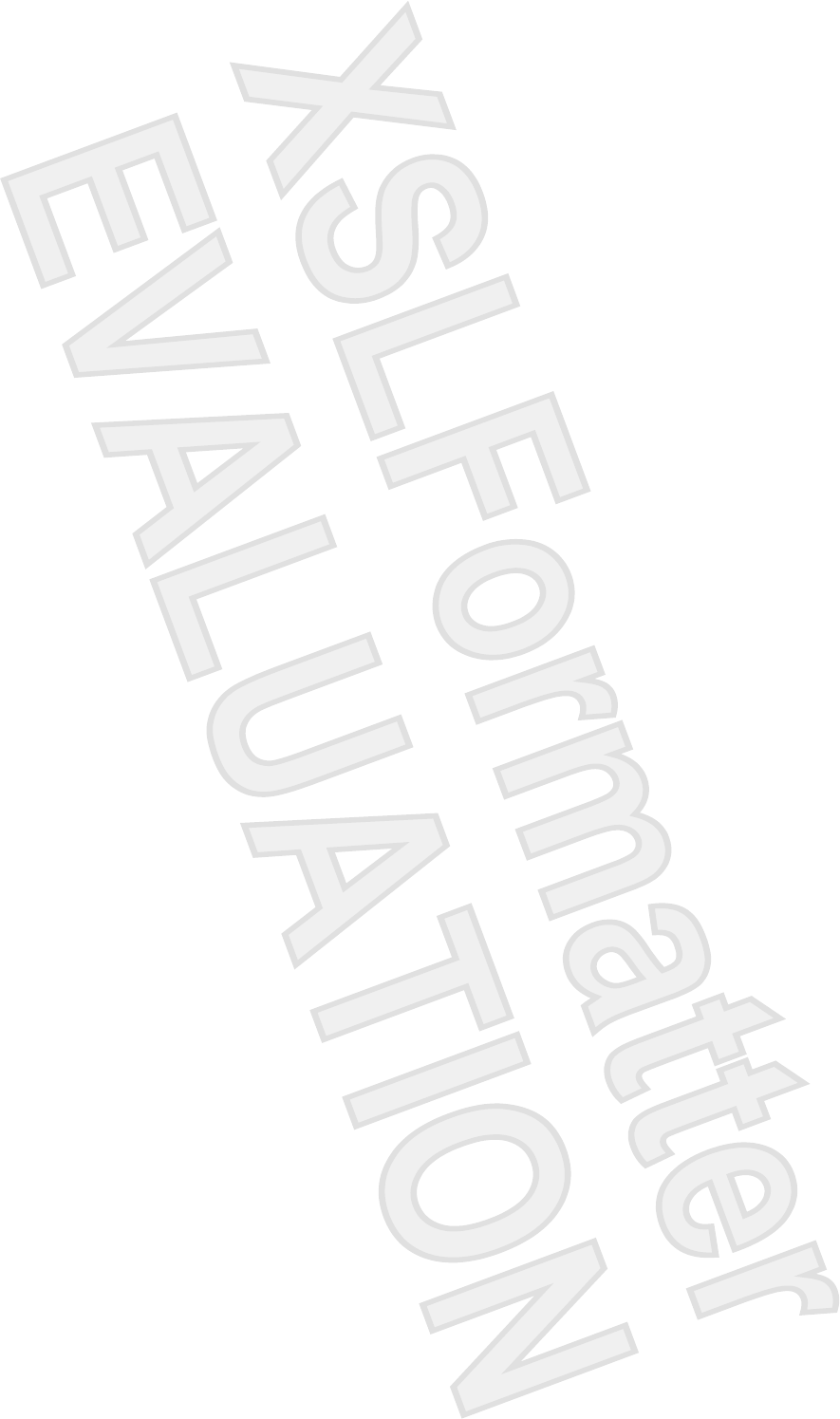
Table of contents
HP iPAQ Product Information Guide
Welcome .............................................................................................................................................. 1
Box Contents ........................................................................................................................................ 2
Components ......................................................................................................................................... 3
Top Components ................................................................................................................. 3
Front Components ............................................................................................................... 4
Back Components ............................................................................................................... 5
Left and Right Side Components ......................................................................................... 6
Getting Started CD Contents ................................................................................................................ 7
Navigation Quick Start .......................................................................................................................... 8
Installing the Battery ............................................................................................................ 8
Powering On and Setting Up ............................................................................................. 10
HP Quick Launch ............................................................................................................... 10
Navigation Setup ............................................................................................................... 11
Car Kit Setup ..................................................................................................................... 12
Using TomTom Navigator 6 ............................................................................................... 15
Navigating to Destinations ................................................................................ 15
Menus ............................................................................................................... 15
Saving Destinations .......................................................................................... 16
Preferences ....................................................................................................... 16
Points of Interest (POI) ...................................................................................... 17
TomTom Plus .................................................................................................... 17
Travel Tools ....................................................................................................................... 18
WorldMate Standard Edition ............................................................................. 18
Organizer Features ........................................................................................... 18
Continuing Setup ................................................................................................................................ 18
Setting Up the Travel Companion ...................................................................................... 18
Finding the Serial Number and Model Number ................................................................. 22
Protecting Your HP iPAQ with a Password ....................................................................... 22
Today Screen .................................................................................................................... 23
Status Icons ...................................................................................................... 23
iPAQ Wireless ................................................................................................... 24
Checking the Battery Charge Level ................................................................................... 25
Battery Saving Tips ............................................................................................................ 25
Entering Text ...................................................................................................................................... 25
Entering Text Using Block Recognizer .............................................................................. 26
Entering Text Using the On-screen Keyboard ................................................................... 26
Entering Text Using Letter Recognizer .............................................................................. 27
Writing with Transcriber ..................................................................................................... 27
Resetting Your HP iPAQ .................................................................................................................... 27
ENWW iii
Antenna House XSL Formatter (Evaluation) http://www.antennahouse.com/
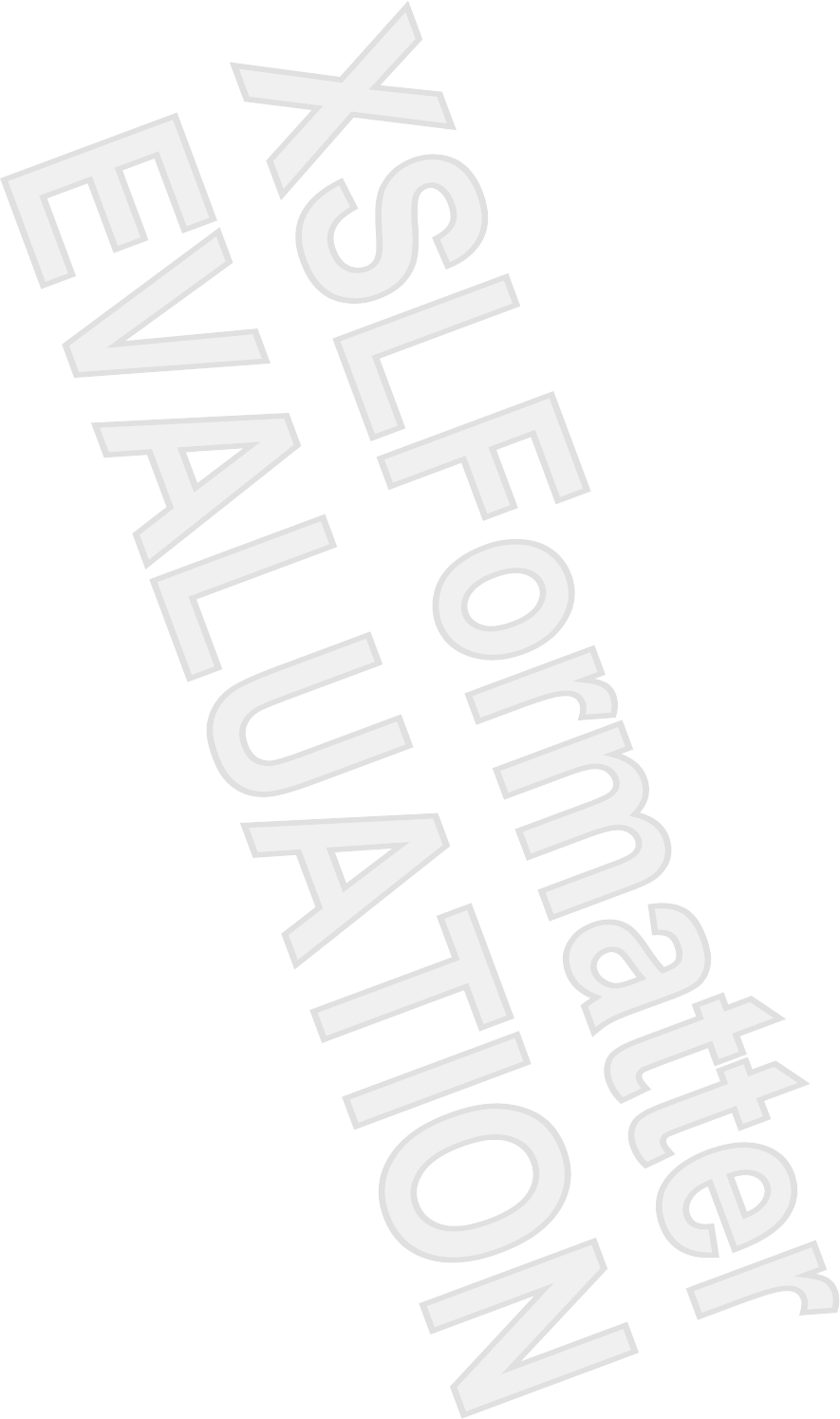
Performing a Soft Reset .................................................................................................... 27
Performing a Factory Reset ............................................................................................... 28
Entertainment ..................................................................................................................................... 28
Windows Media Player 10 Mobile ...................................................................................... 28
Listening to Music and Watching Videos .......................................................... 29
Clearing the Now Playing List ........................................................................... 29
Updating a Library ............................................................................................. 29
HP Photosmart Mobile ....................................................................................................... 29
Attaching a Voice Note to a Picture .................................................................. 30
E-mailing Pictures ............................................................................................. 30
Viewing a Slideshow ......................................................................................... 30
Mobile Office ...................................................................................................................................... 31
Calendar ............................................................................................................................ 31
Accessing Calendar .......................................................................................... 31
Viewing Today's Agenda ................................................................................... 31
Viewing Appointments ....................................................................................... 32
Scheduling an Appointment .............................................................................. 32
Sending a Meeting Request .............................................................................. 32
Contacts ............................................................................................................................. 33
Accessing Contacts ........................................................................................... 33
Creating a Contact ............................................................................................ 33
Finding a Contact .............................................................................................. 34
Tasks ................................................................................................................................. 34
Creating a Task ................................................................................................. 34
Locating a Task ................................................................................................. 34
E-mail ................................................................................................................................. 35
Different Ways to Access E-mail Messages ..................................................... 35
Setting up an E-mail Account on an Exchange Server ..................................... 35
Setting up a POP3, HTTP, or IMAP4 E-mail Account ....................................... 36
Composing and Sending Outlook E-mail Messages ......................................... 37
Replying to or Forwarding an Outlook E-mail Message .................................... 37
Sorting the Message List ................................................................................... 37
Internet Explorer Mobile ..................................................................................................... 37
Word Mobile ....................................................................................................................... 38
Excel Mobile ...................................................................................................................... 38
PowerPoint Mobile ............................................................................................................. 38
WLAN ................................................................................................................................................. 39
Turning WLAN On or Off ................................................................................................... 39
Searching for WLAN Networks to Access ......................................................................... 40
Configuring Network Security Settings .............................................................................. 40
Bluetooth ............................................................................................................................................ 40
Turning Bluetooth On or Off ............................................................................................... 41
Connecting to a Bluetooth Headset ................................................................................... 41
Protecting the HP iPAQ Screen from Cracking or Damage ............................................................... 41
Obtaining Services for a Cracked or Damaged Screen ..................................................................... 42
Additional Guidelines for Using Your HP iPAQ .................................................................................. 42
Frequently Asked Questions .............................................................................................................. 42
Finding More Information ................................................................................................................... 43
Index ................................................................................................................................................................. 45
iv ENWW
Antenna House XSL Formatter (Evaluation) http://www.antennahouse.com/
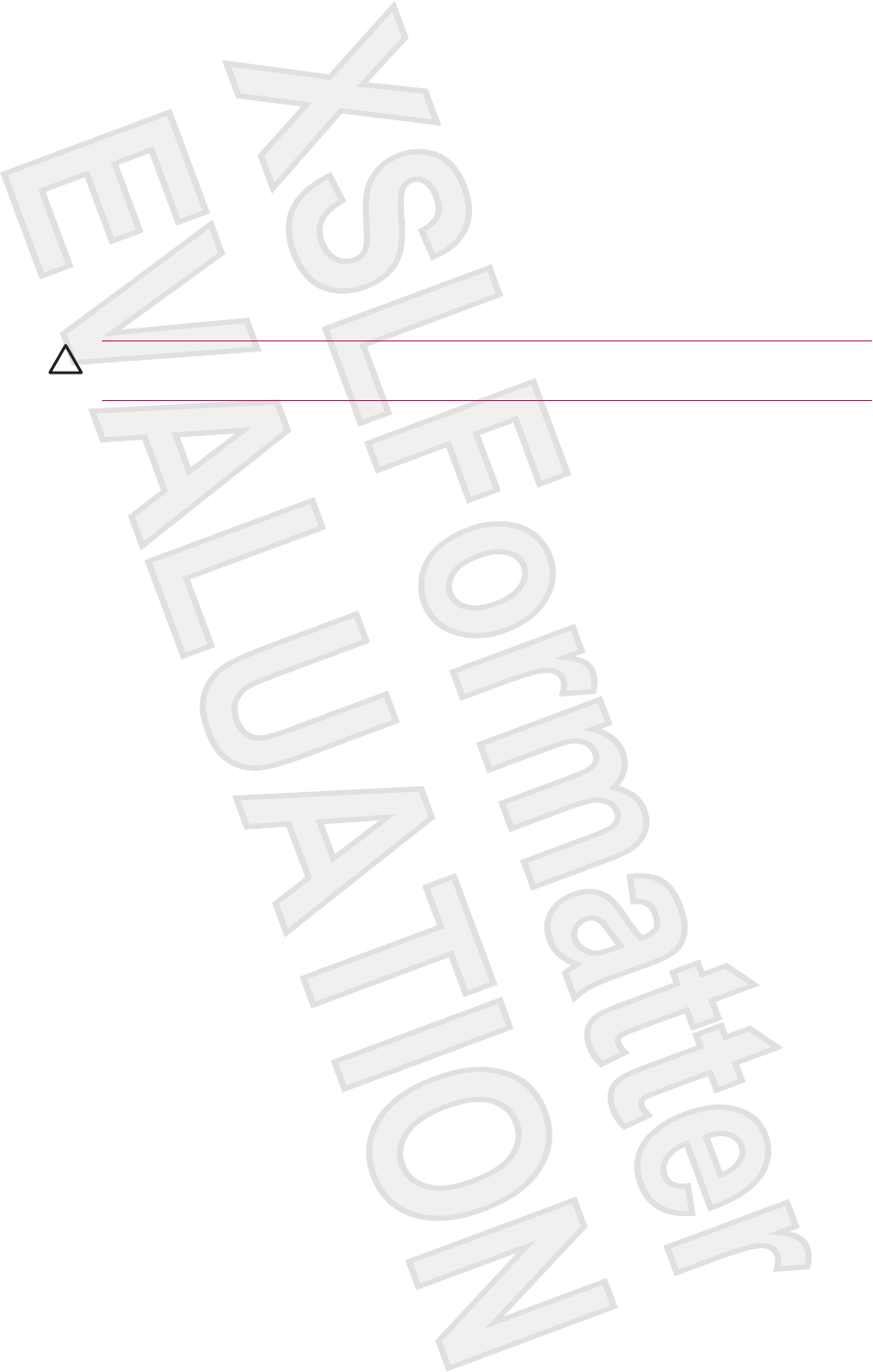
HP iPAQ Product Information Guide
CAUTION Text set off in this manner indicates that failure to follow directions could result in
damage to equipment or loss of information.
Welcome
Thank you for purchasing the HP iPAQ Travel Companion. This guide has been designed to help you
begin using your device quickly. For more detailed information, please refer to the Finding More
Information section. In this guide you will learn how to:
●Use the travel-related functionality of the Travel Companion, including the built-in Global
Positioning System (GPS) and WorldMate travel assistant.
●Set the Travel Companion to synchronize digital media and personal information such as Calendar,
Contacts, and E-mail with a personal computer.
●Protect the Travel Companion from unintended damage by showing how to properly replace the
battery cover on the device and by providing important information about protecting the device
screen.
●Improve the device battery life, allowing for longer use between charges.
●Perform a soft reset or a factory reset to adjust device performance.
●Troubleshoot common device issues, including synchronizing.
●Use the on-screen keyboard, function keys, Calendar, Contacts, and Tasks.
●Use messaging, WLAN*, and Bluetooth.
*WLAN is available on rx5900 series models only.
ENWW Welcome 1
Antenna House XSL Formatter (Evaluation) http://www.antennahouse.com/
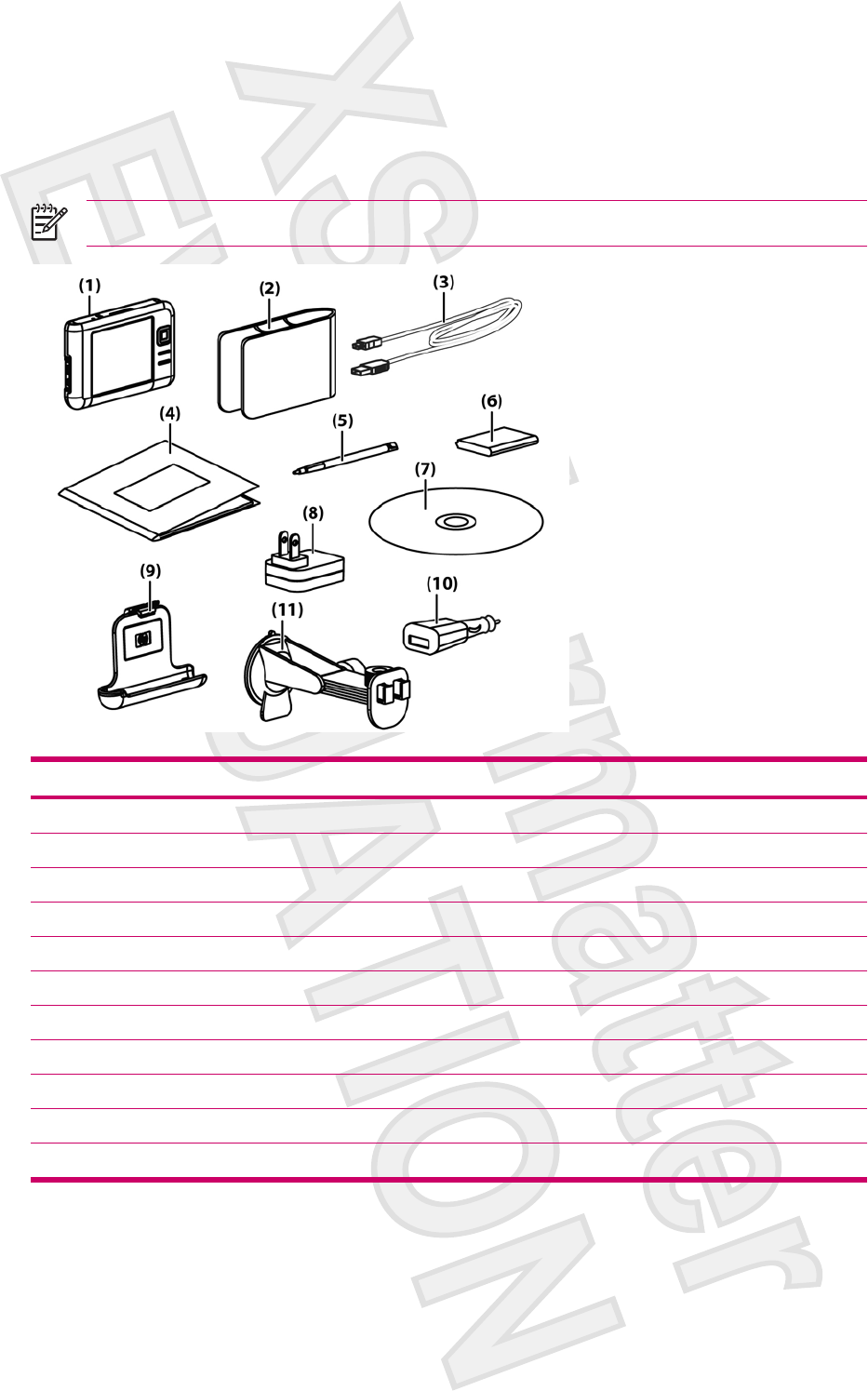
Box Contents
This illustration depicts the items that come in the box with the Travel Companion. Use this illustration
to become more familiar with the device.
NOTE Box contents vary by model.
Box Contents
(1) HP iPAQ
(2) Case
(3) Mini-USB synchronization cable/power cable (2 ea)
(4) HP iPAQ Documentation
(5) Stylus
(6) 1,700mAH li-ion removable/rechargeable battery
(7) Getting Started CD with special software
(8) AC adapter with interchangeable plug
(9) Car kit — holder
(10) Car kit — Travel power adapter
(11) Car kit — windshield mounting bracket
2 HP iPAQ Product Information Guide ENWW
Antenna House XSL Formatter (Evaluation) http://www.antennahouse.com/
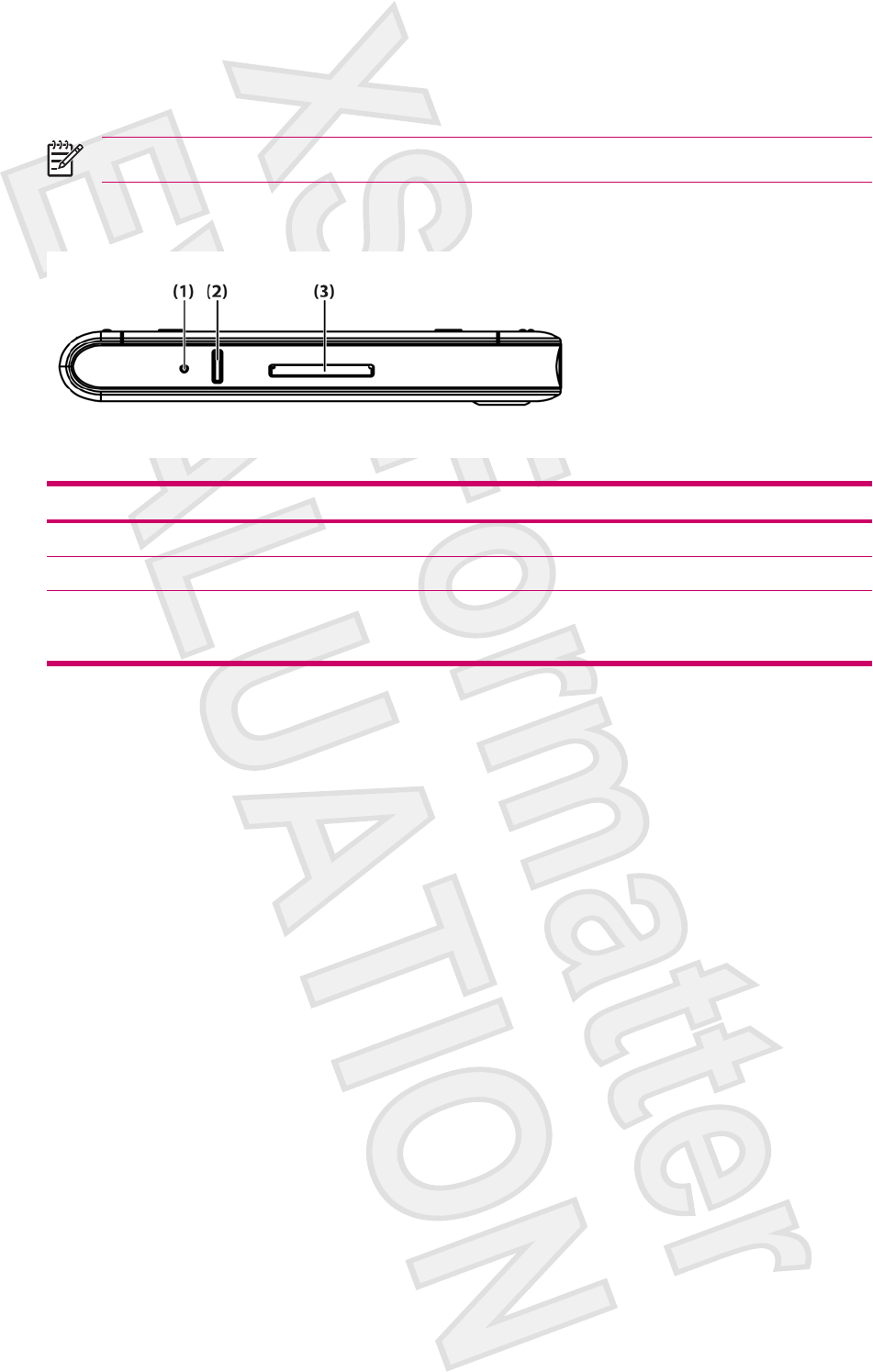
Components
NOTE Not all models or features are available in all regions.
Top Components
Component Function
(1) Reset Button Press to perform a soft reset of the Travel Companion.
(2) Record Button Press to record voice or sound.
(3) SD Slot Insert a Secure Digital (SD) storage card for data storage or a Secure Digital
Input/Output card (SDIO) card to extend the functionality of the Travel
Companion.
ENWW Components 3
Antenna House XSL Formatter (Evaluation) http://www.antennahouse.com/
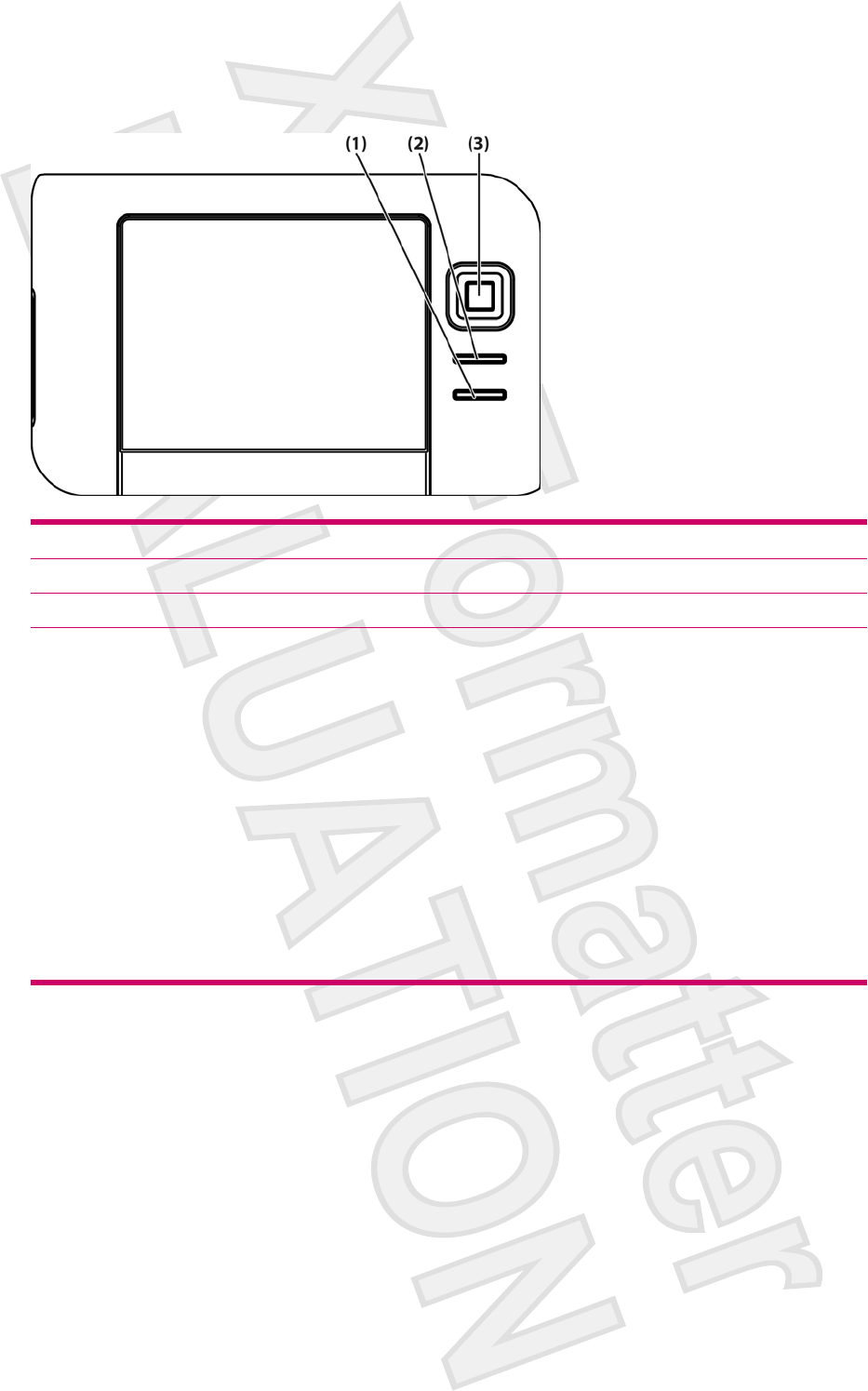
Front Components
Component Function
(1) Start Menu Button Press to open the Start menu.
(2) OK Button Press to close the current window or exit the current application.
(3) 9–Way Navigation Button ●When in Standard mode:
●Top — Scroll up
●Bottom — Scroll down
●Left — Scroll left
●Right — Scroll right
●When using GPS:
●Top — Zoom in
●Bottom — Zoom out
●Left — Volume down
●Right — Volume up
4 HP iPAQ Product Information Guide ENWW
Antenna House XSL Formatter (Evaluation) http://www.antennahouse.com/
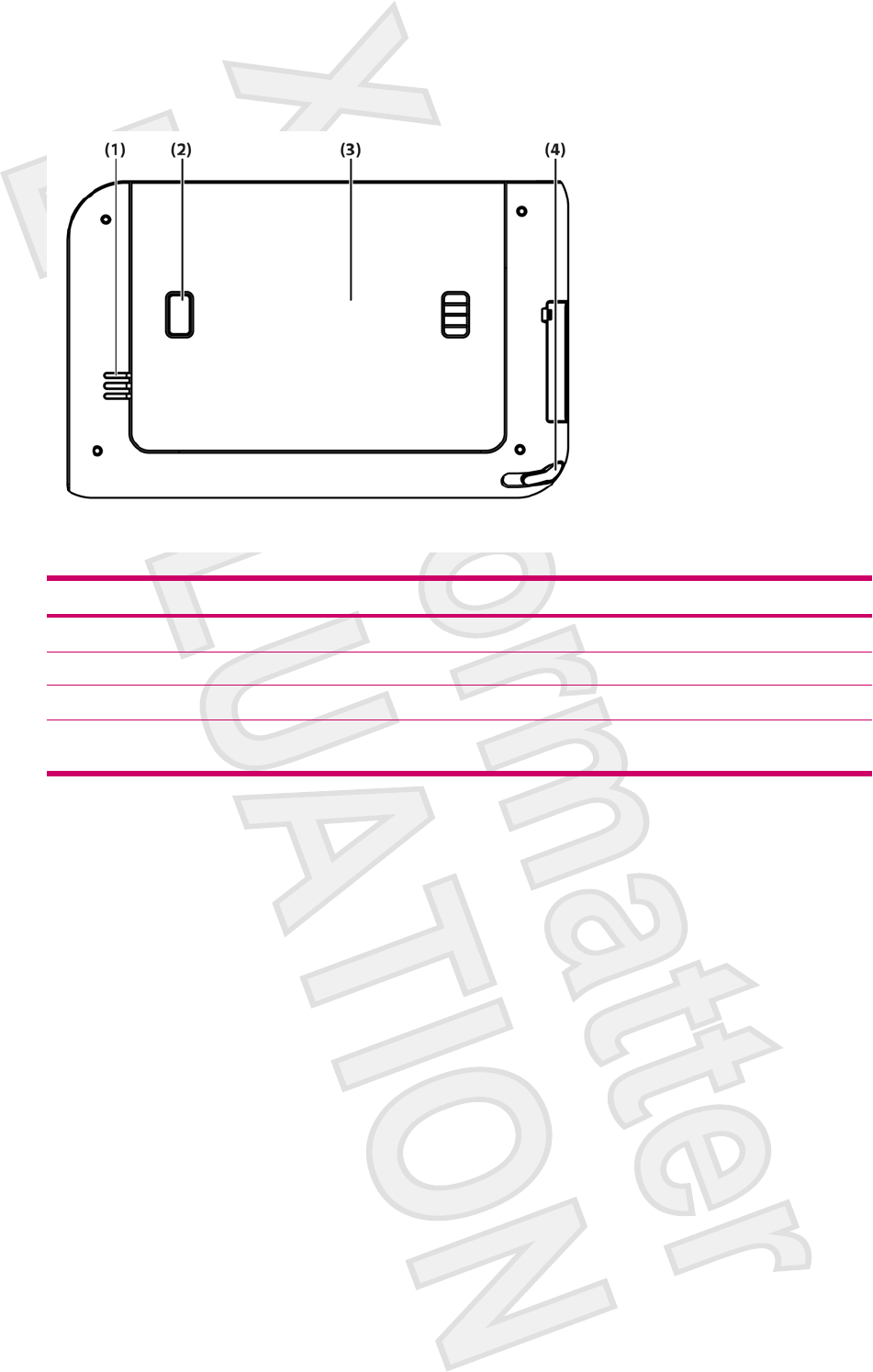
Back Components
Component Function
(1) Speaker Use the speaker to get spoken navigation instructions.
(2) Battery Cover Release Button Press to remove the battery cover.
(3) Battery Cover Remove to install or remove the battery.
(4) Stylus Use to input information. Slide out to remove the stylus. Slide in to replace
the stylus.
ENWW Components 5
Antenna House XSL Formatter (Evaluation) http://www.antennahouse.com/
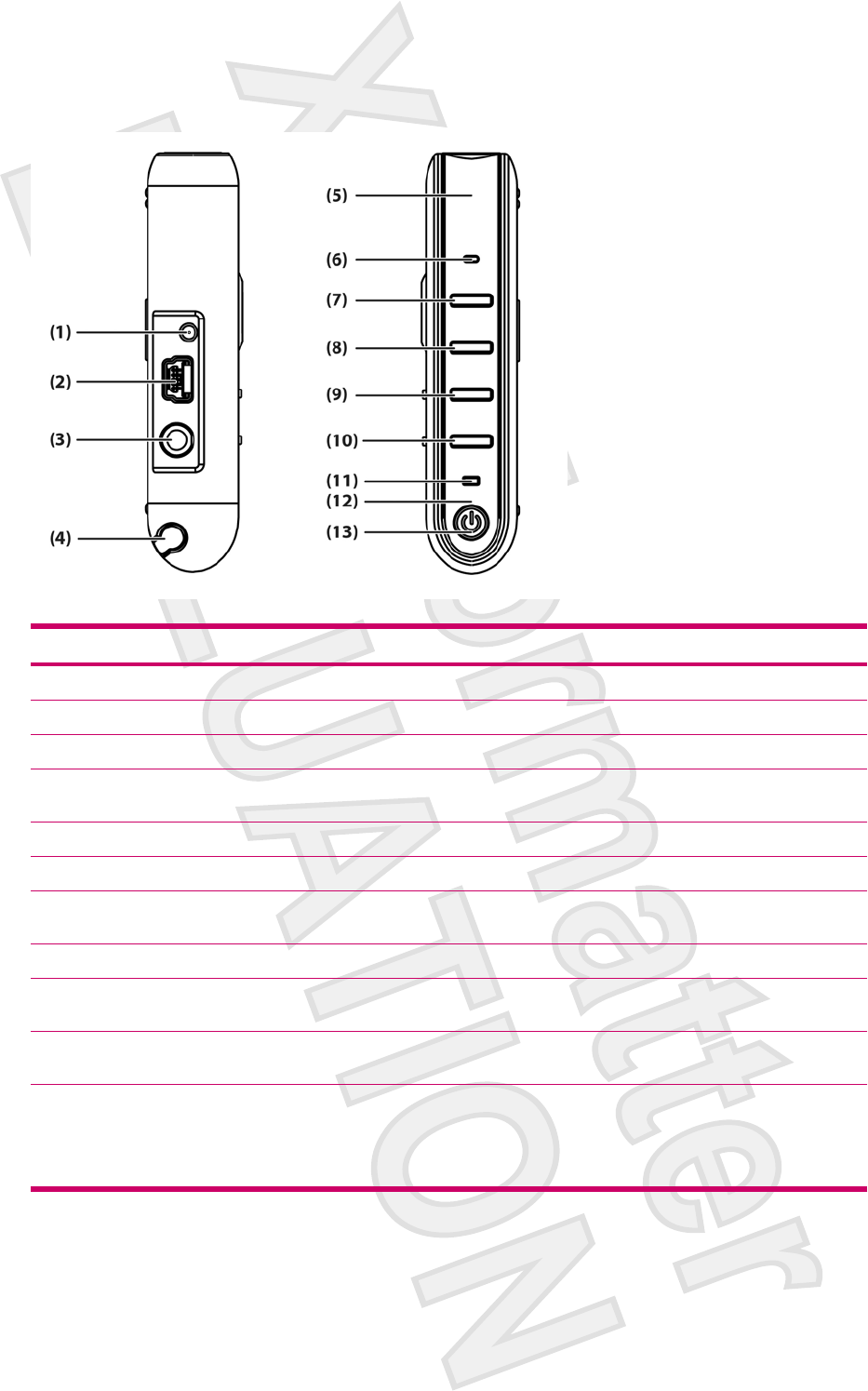
Left and Right Side Components
Component Function
(1) MMCX External Antenna Port Connects to 3V active external GPS antenna.
(2) Charging/Communications Port Connects to mini-USB synchronization cable.
(3) Headset Connector Plug a headset into this connector to listen to music.
(4) Stylus Use to input information. Slide out to remove the stylus. Slide in to replace
the stylus.
(5) Internal WLAN Antenna* Allows connection to wireless networks. (rx5900 series models only)
(6) Microphone Speak into the microphone to record voice notes.
(7) Quick Launch Button Press to access the HP Quick Launch screen. Press and hold to launch
Calendar.
(8) Navigation Button Press to launch GPS navigation. Press and hold to launch Contacts.
(9) Windows Media Player Button Press to launch Windows Media Player. Press and hold to launch Pocket
Internet Explorer.
(10) Rotate Screen Button Press to rotate the screen to portrait or landscape orientation. Press and
hold to launch Photosmart Mobile.
(11) Wireless LED ●Blue LED—WLAN*, Bluetooth, or GPS is on.
●LED off—WLAN*, Bluetooth, or GPS is off.
*WLAN is available on rx5900 series models only.
6 HP iPAQ Product Information Guide ENWW
Antenna House XSL Formatter (Evaluation) http://www.antennahouse.com/
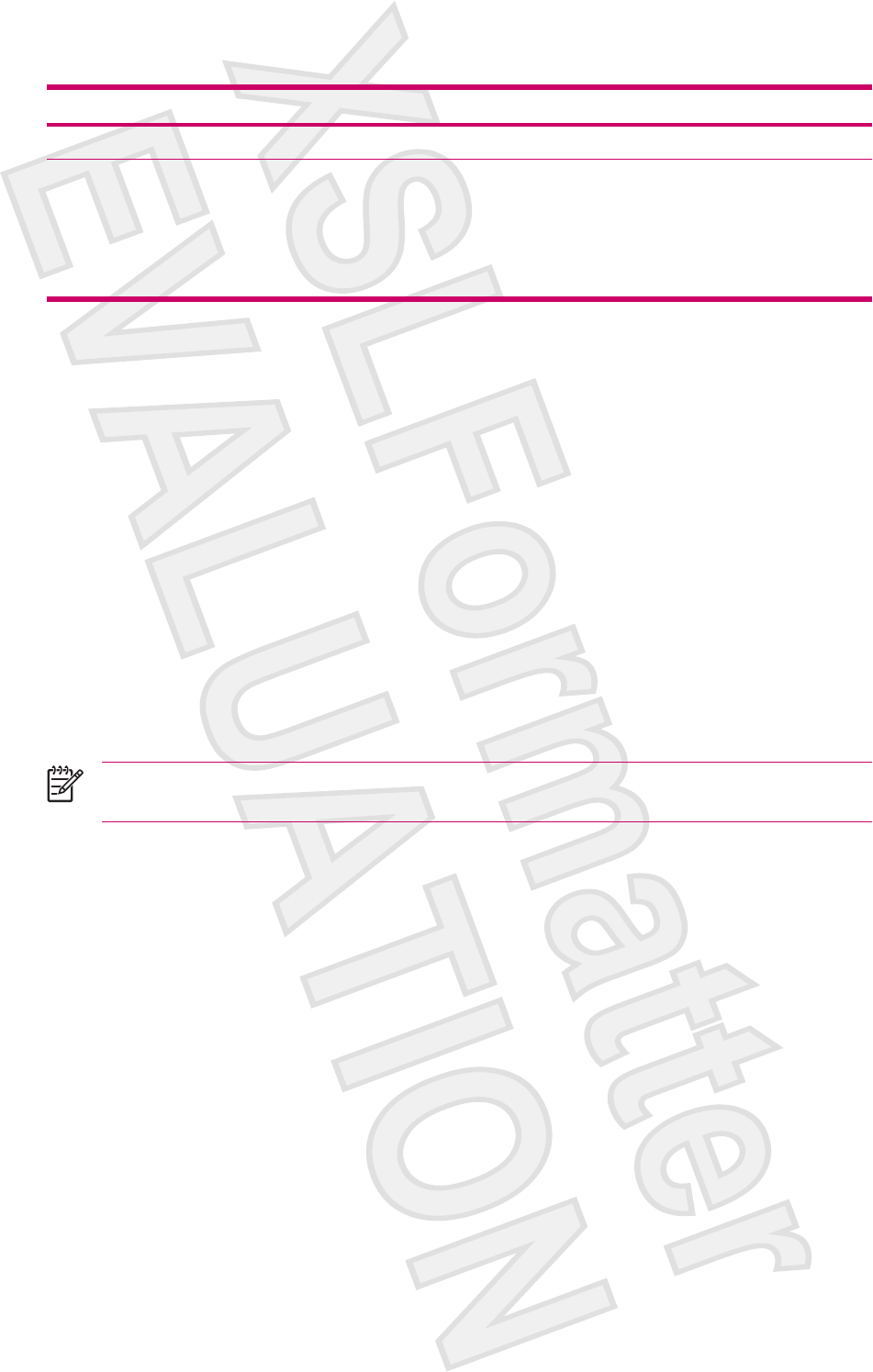
Component Function
(12) Internal Bluetooth Antenna Allows connection to other Bluetooth devices.
(13) Power Button and LED Press to turn the unit on and off.
●Solid amber light — Battery is charging
●Solid green light — Battery is fully charged
●Flashing amber light — Reminder or alarm
Getting Started CD Contents
The Getting Started CD includes:
●Microsoft ActiveSync 4.1 or later
●Microsoft Outlook 2002
●Additional Product Information
●Important Safety Information
●WorldMate Active Sync Plug-in
●HP Photosmart Premier
●Additional software for the Travel Companion and personal computer
All software and documents are designed to be installed on a personal computer to enable use of the
Travel Companion to its full potential.
NOTE All current Microsoft operating systems are supported by ActiveSync 4.1, except
Windows 98SE and Windows ME.
ENWW Getting Started CD Contents 7
Antenna House XSL Formatter (Evaluation) http://www.antennahouse.com/
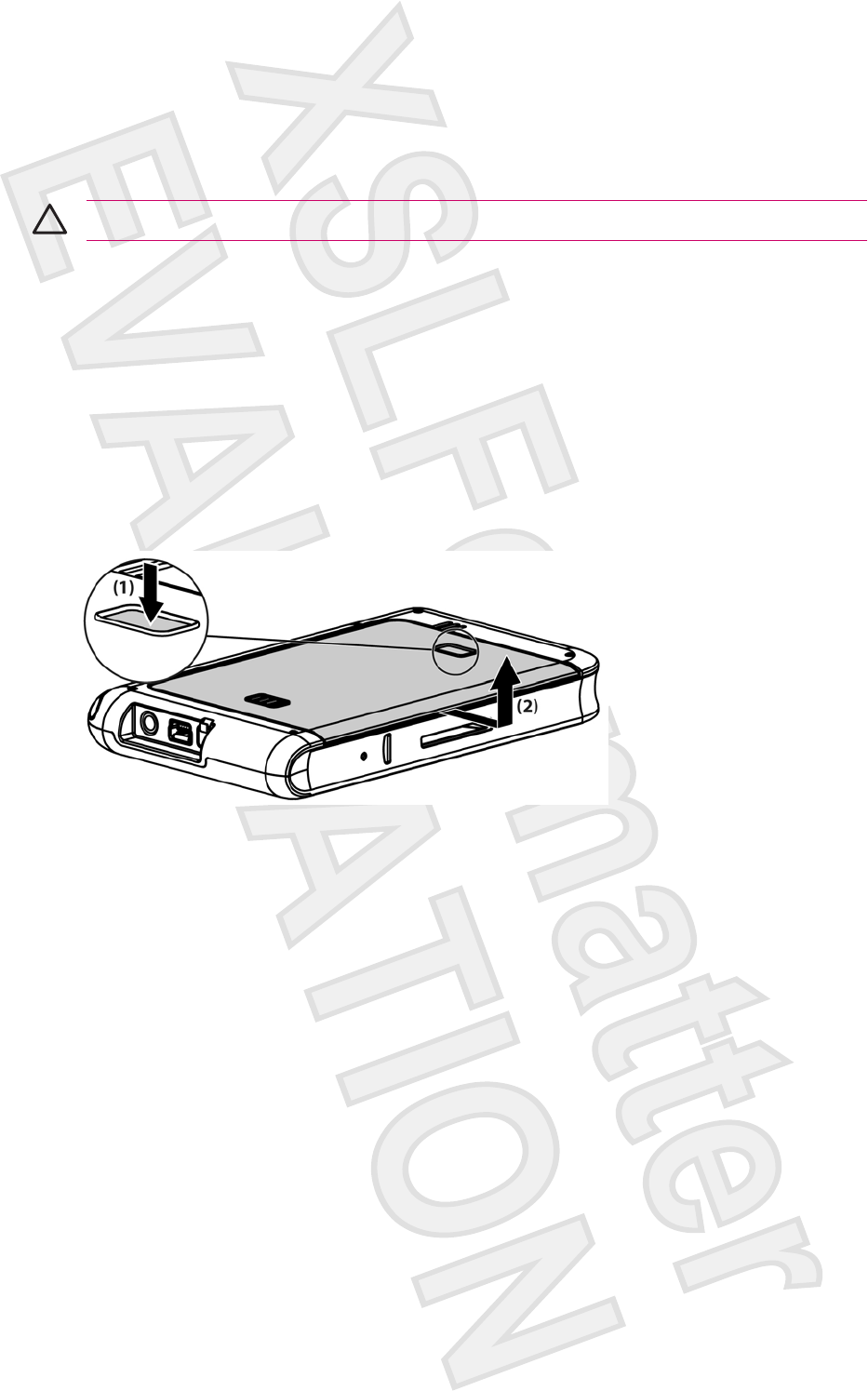
Navigation Quick Start
The Travel Companion can be used as a GPS navigation system right out of the box. The sections that
follow provide instruction to prepare and use the Travel Companion immediately after purchase.
CAUTION Drive with due care and attention when using the Travel Companion for navigation.
Installing the Battery
The battery provides power for the Travel Companion to operate. The Travel Companion comes with a
mini-USB synchronization cable, which you must use with a power adapter to charge the device.
To install the battery:
1. Turn the Travel Companion over so you can see the back battery cover.
2. Press the battery release button (1).
3. Slide the battery compartment cover down about 1/2 inch, and then lift the cover off the Travel
Companion (2).
8 HP iPAQ Product Information Guide ENWW
Antenna House XSL Formatter (Evaluation) http://www.antennahouse.com/
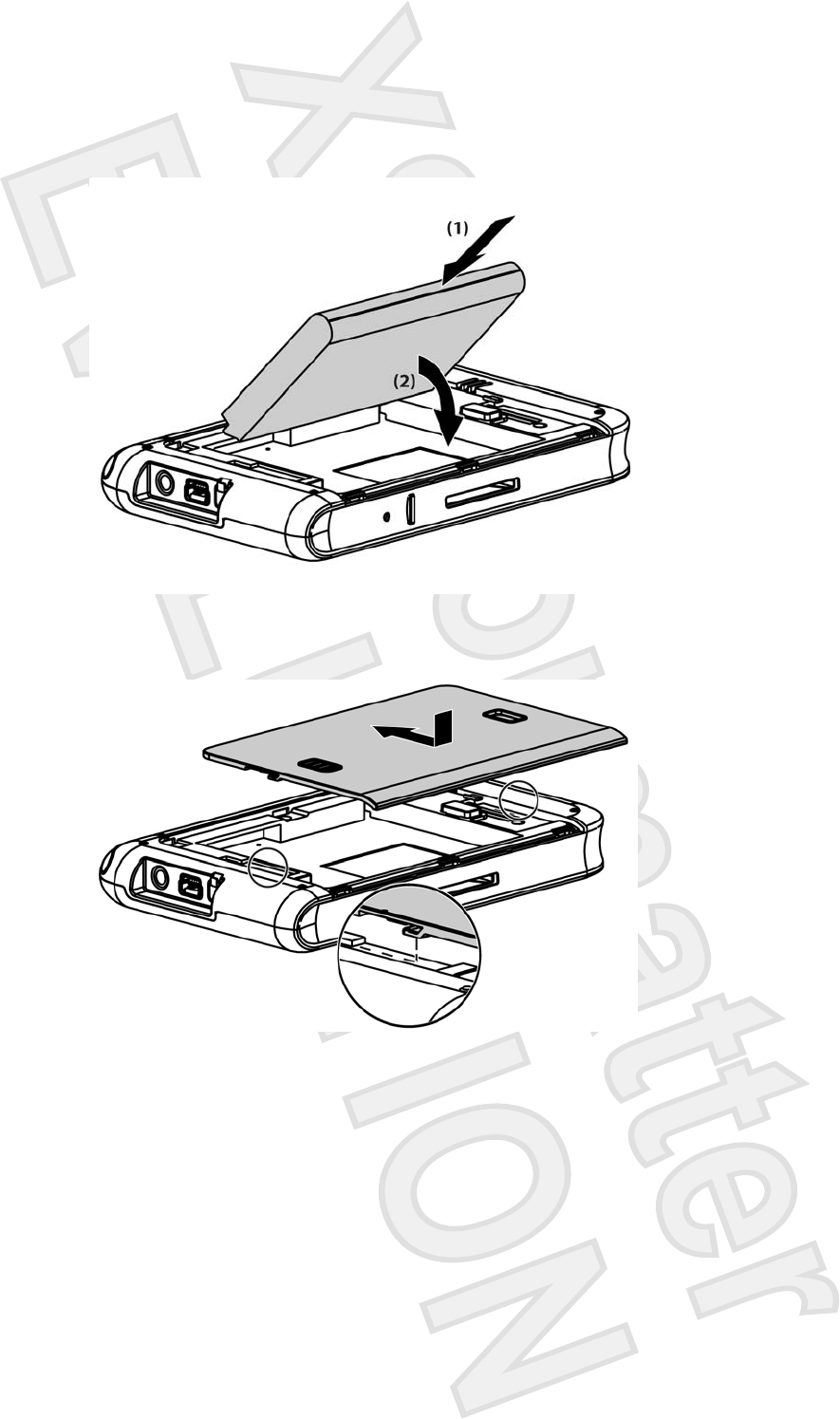
4. Insert the battery into the compartment (1) so that the connectors on the battery mate with the pins
in the battery compartment, and then press down until the battery locks into place (2). As you insert
the battery, be sure to pull the battery removal tab out so it is on the outside of the battery.
5. Replace the cover by first laying the cover on the battery compartment opening, aligning the tabs,
and then sliding the cover until it locks into place.
Do not attempt to insert the battery cover tabs into the compartment slots without first placing the cover
onto the compartment and sliding it closed.
ENWW Navigation Quick Start 9
Antenna House XSL Formatter (Evaluation) http://www.antennahouse.com/
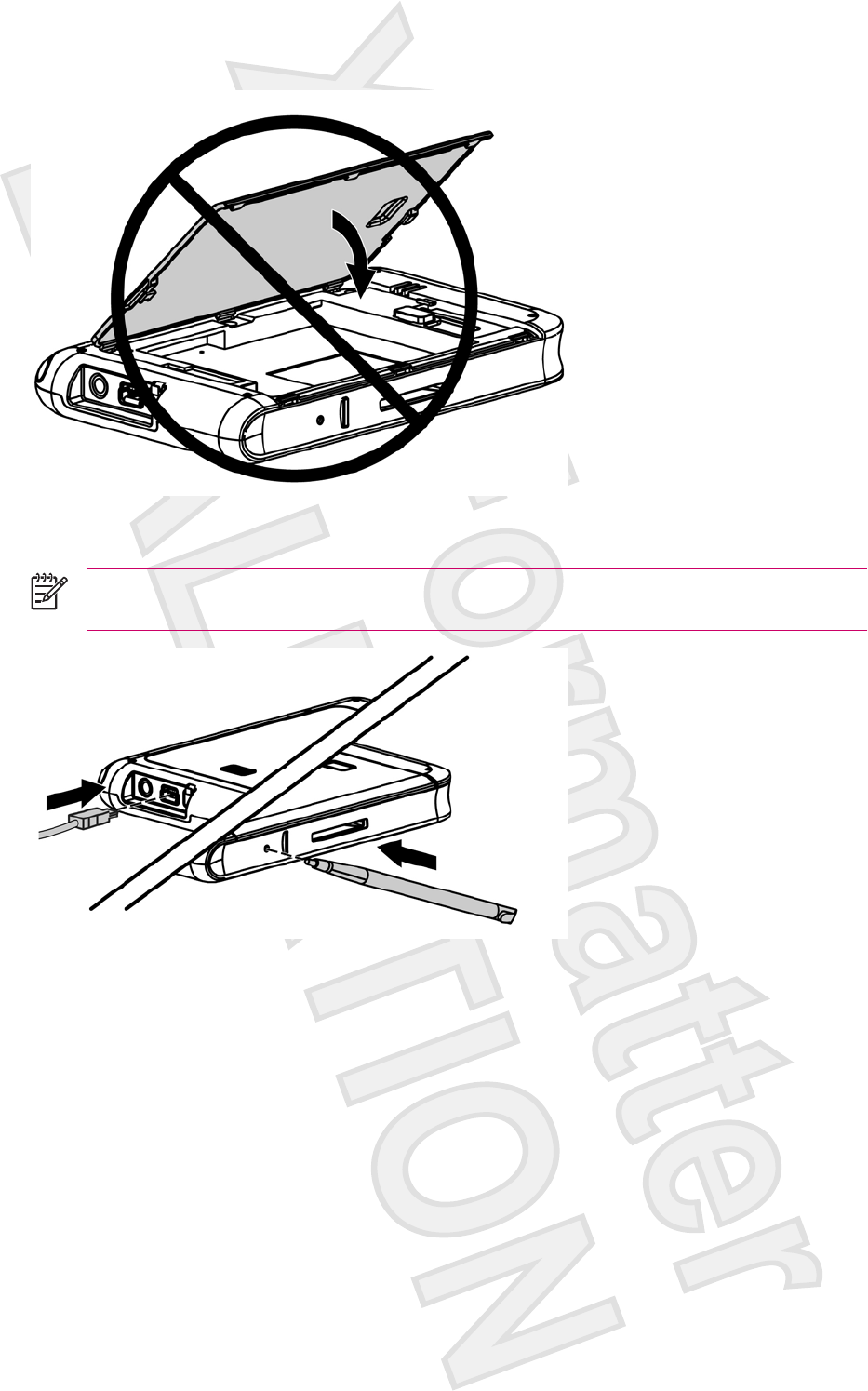
Powering On and Setting Up
NOTE To start the Travel Companion after installing the battery, press and hold the Reset
button for at least two seconds, or connect to power (AC or travel adapter).
The first time you turn on the Travel Companion, follow the on-screen set up instructions. After
completing this initial setup, the Travel Companion displays the Quick Start Tour, which provides
information about using the Travel Companion. View as much of the Quick Setup Tour as needed. When
exiting the tour, the Travel Companion initiates the HP Quick Launch screen, which provides the ability
quickly and easily open applications on your iPAQ.
HP Quick Launch
HP Quick Launch is a simple way to open the most frequently used programs on the Travel Companion.
●Tap the Today icon to access the Today page.
●Tap the Travel Assistant icon to access WorldMate travel applications, Calendar, Contacts, and
the Calculator.
10 HP iPAQ Product Information Guide ENWW
Antenna House XSL Formatter (Evaluation) http://www.antennahouse.com/
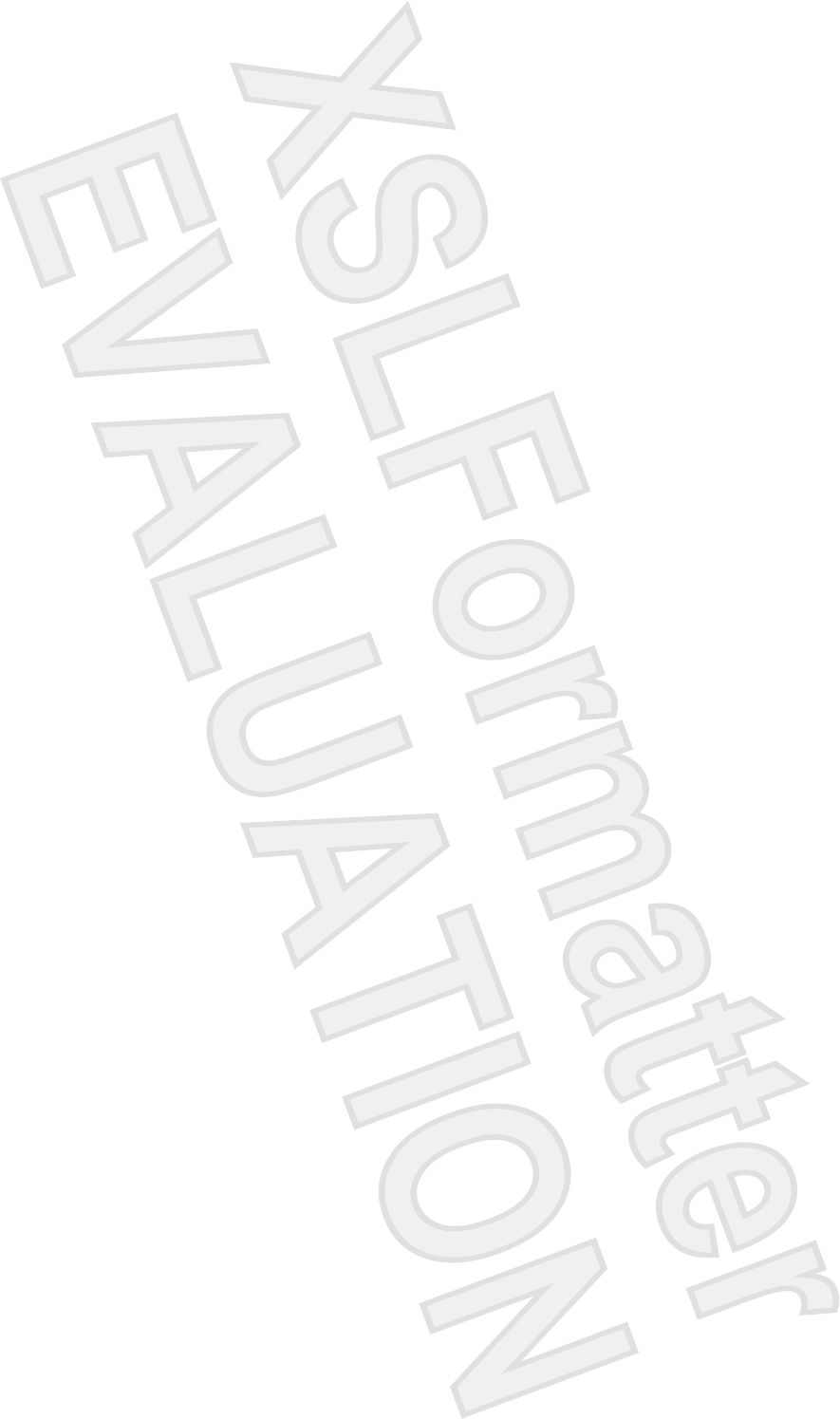
●Tap the Entertainment icon to access entertainment applications like Windows Media Player 10,
Photosmart Mobile, and games.
●Tap the Internet icon to access the Internet browser.
●Tap the Navigation icon to use GPS navigation.
HP Quick Launch is configured by default to be the home screen of the Travel Companion. Switch to
use the Today screen as the home screen by tapping Menu > Settings and clearing the check boxes.
You can also access the Today screen from the Start menu.
You can also configure Quick Launch by tapping Menu > Settings and:
●Selecting Launch On Reset to automatically start Quick Launch every time the device is soft reset.
●Selecting Launch on Wakeup to automatically start Quick Launch every time the device is
switched on.
To learn more about the capabilities of the Travel Companion, refer to this guide as well as the Additional
Product Information on the Getting Started CD. To begin navigation, proceed to the next step.
Navigation Setup
If you do not want to navigate now, continue learning about the Travel Companion and refer back to this
section when you do want to use navigation.
You can use the navigation features of the Travel Companion right out of the box. The easiest way to
open the GPS application is from the HP Quick Launch screen. When launching the GPS application
for the first time, follow the on-screen instructions to configure and set up personal preferences.
The Travel Companion includes a built-in GPS receiver. To navigate to a destination, the GPS
application must determine your current position, for which it uses the Global Positioning System (GPS).
Available for free and without subscription, GPS uses satellites to transmit signals to GPS receivers.
GPS signals work in all weather, anywhere in the world.
To establish a GPS signal, use the GPS receiver outdoors with a clear view of the sky. The GPS
application can take up to five minutes to find your current position during its first use. If it takes longer
than five minutes, make sure that you are in an open place without tall buildings or trees nearby. In
subsequent uses, the GPS application will find your position much faster. Once the GPS application
locates your current position, the application shows your position on the map.
If you want to immediately start navigating:
1. Press the power button to power on the Travel Companion. If this is the first time powering on the
Travel Companion, you must either press the Reset button or connect to power for the unit to power
on.
2. Start the GPS application by tapping Navigation from the HP Quick Launch screen.
3. Place the Travel Companion in a location with a clear view of the sky.
4. Install the car kit.
5. Insert the Travel Companion and plug it in using the travel power adapter.
ENWW Navigation Quick Start 11
Antenna House XSL Formatter (Evaluation) http://www.antennahouse.com/
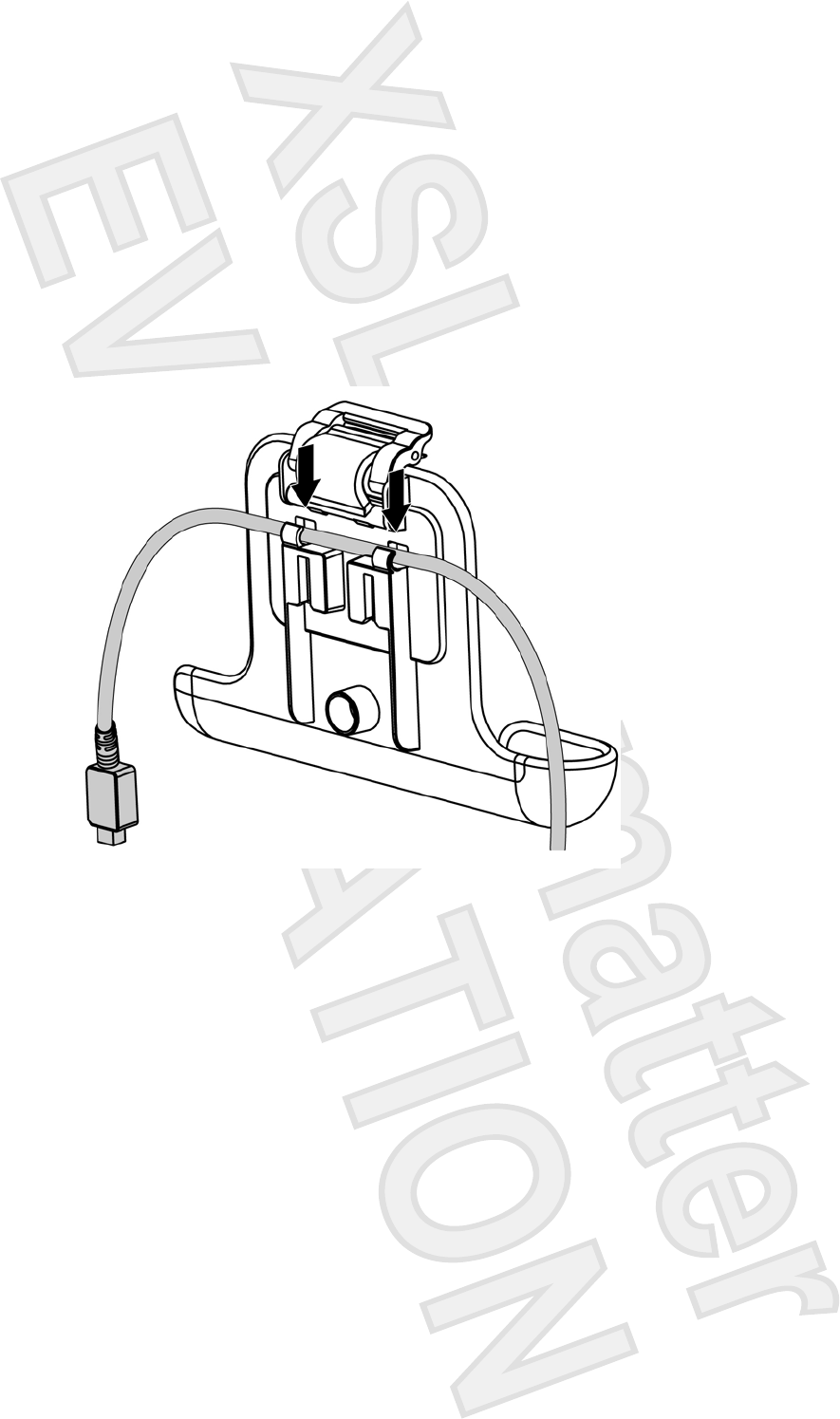
Car Kit Setup
The car kit allows you to mount the Travel Companion in a location in your car that provides the best
access to a GPS signal.
To install the car kit:
1. Plug the power cable into the Travel Power Adapter, and then plug the adapter into a vehicle power
outlet.
2. Attach the power cable to the clips on the back of the Travel Companion holder. Be sure to leave
enough cable to plug into the Travel Companion, and that the connector is turned the correct way
to plug into the unit.
12 HP iPAQ Product Information Guide ENWW
Antenna House XSL Formatter (Evaluation) http://www.antennahouse.com/
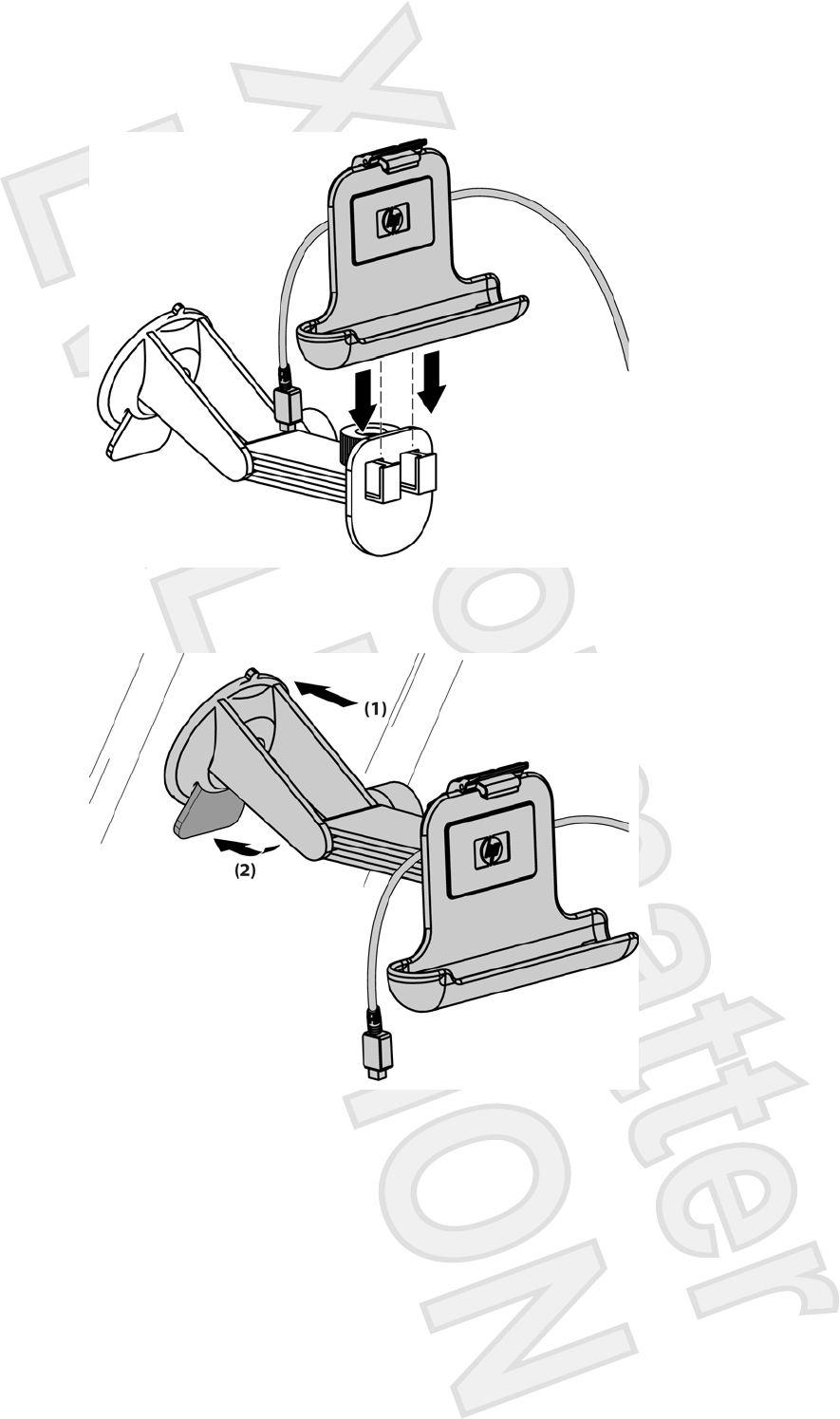
3. Install the holder onto the windshield mounting bracket.
4. Place the car kit assembly onto the windshield (1), and then press the locking lever (2) to securely
mount the assembly into place.
5. To install the Travel Companion:
a. Insert the Travel Companion into the mounted car kit holder (1).
b. Insert the securing clip into the slot on the top of the Travel Companion (2).
c. Plug the power cable into the Travel Companion (3).
ENWW Navigation Quick Start 13
Antenna House XSL Formatter (Evaluation) http://www.antennahouse.com/
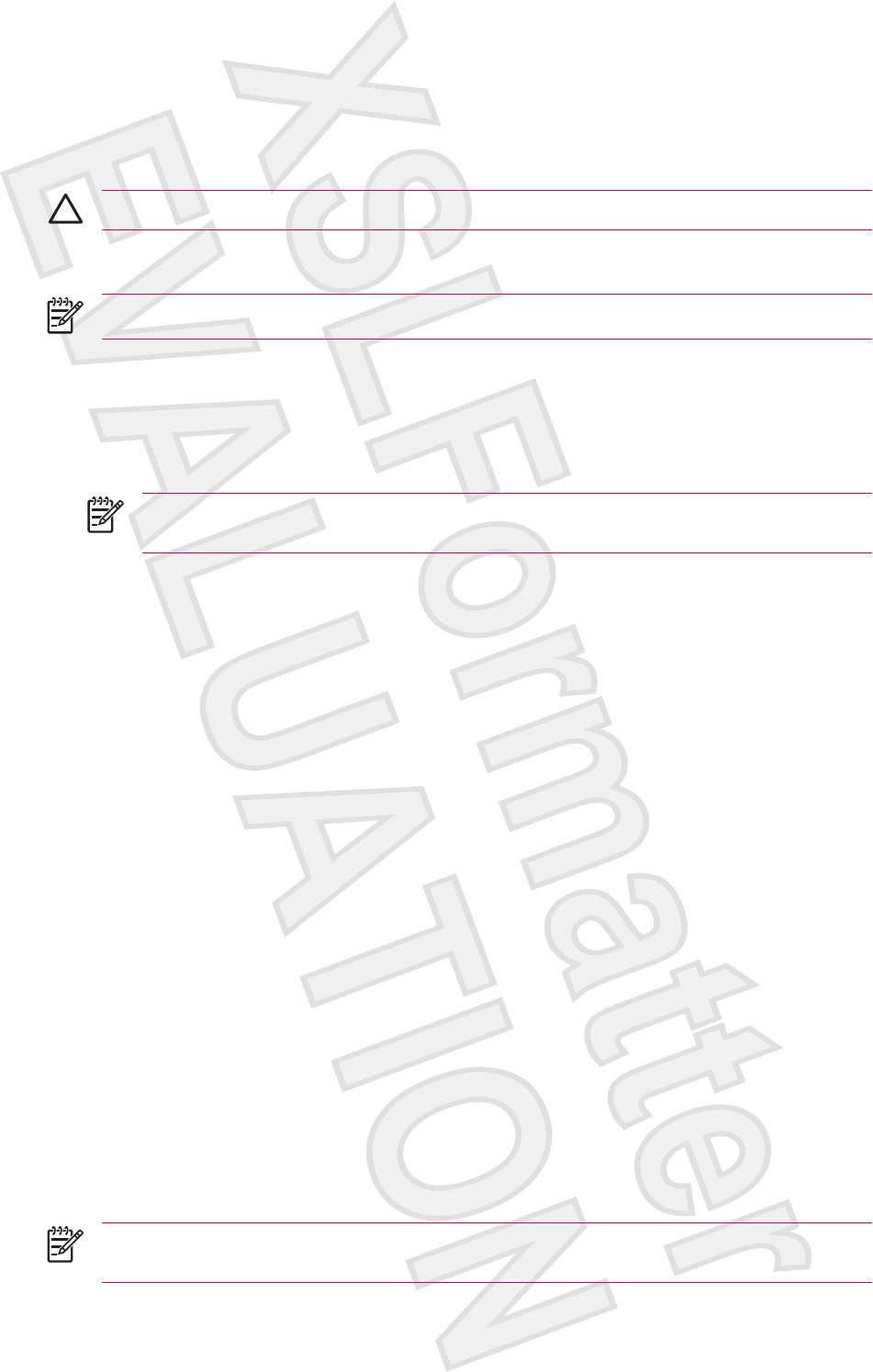
Using TomTom Navigator 6
For more detailed information about TomTom Navigator 6, see the TomTom user guide on the Getting
Started CD.
CAUTION Drive with due care and attention when using the Travel Companion for navigation.
Navigating to Destinations
NOTE TomTom Navigator 6 must first locate its current position before it can plan a route.
To plan a route:
1. With TomTom open, tap the screen to display the main menu.
2. Tap Navigate to. There are several options to navigate to. This procedure demonstrates navigating
to an address.
NOTE Travel Companion/GPS integration also allows you to navigate to any entry in your
personal Contact list that has an address entered.
3. Tap Address. When entering an address, select from the following options:
●City center: Tap to set the destination as the center of a city or town.
●Street and house number: Tap to set an exact address as the destination.
●Zip Code: Tap to enter a zip code as the destination.
●Cross street or intersection: Tap to set the destination as the point where two streets meet.
This procedure demonstrates navigating to an exact address.
4. Tap Street and house number.
5. Start to type the name of the town to which to navigate. As you type, names of towns display that
match what you have typed. When the correct town displays, select it.
6. Start to type the name of the street. As you type, the names of the streets display that match the
street you typed. When the correct street displays, select it.
7. Type the house number of the destination, and then tap Done.
8. TomTom asks whether you need to arrive at a particular time. If you tap YES and select an arrival
time, TomTom indicates whether you will arrive on time.
9. After TomTom calculates the route, tap Done.
TomTom immediately starts guiding you to your destination with spoken and visual instructions.
Menus
To open the main menu, tap the screen at any time when TomTom displays the Driving View.
NOTE The following list is only a subset of all of the available menus. For a complete list, see
the TomTom Navigator 6 documentation on the Getting Started CD.
ENWW Navigation Quick Start 15
Antenna House XSL Formatter (Evaluation) http://www.antennahouse.com/
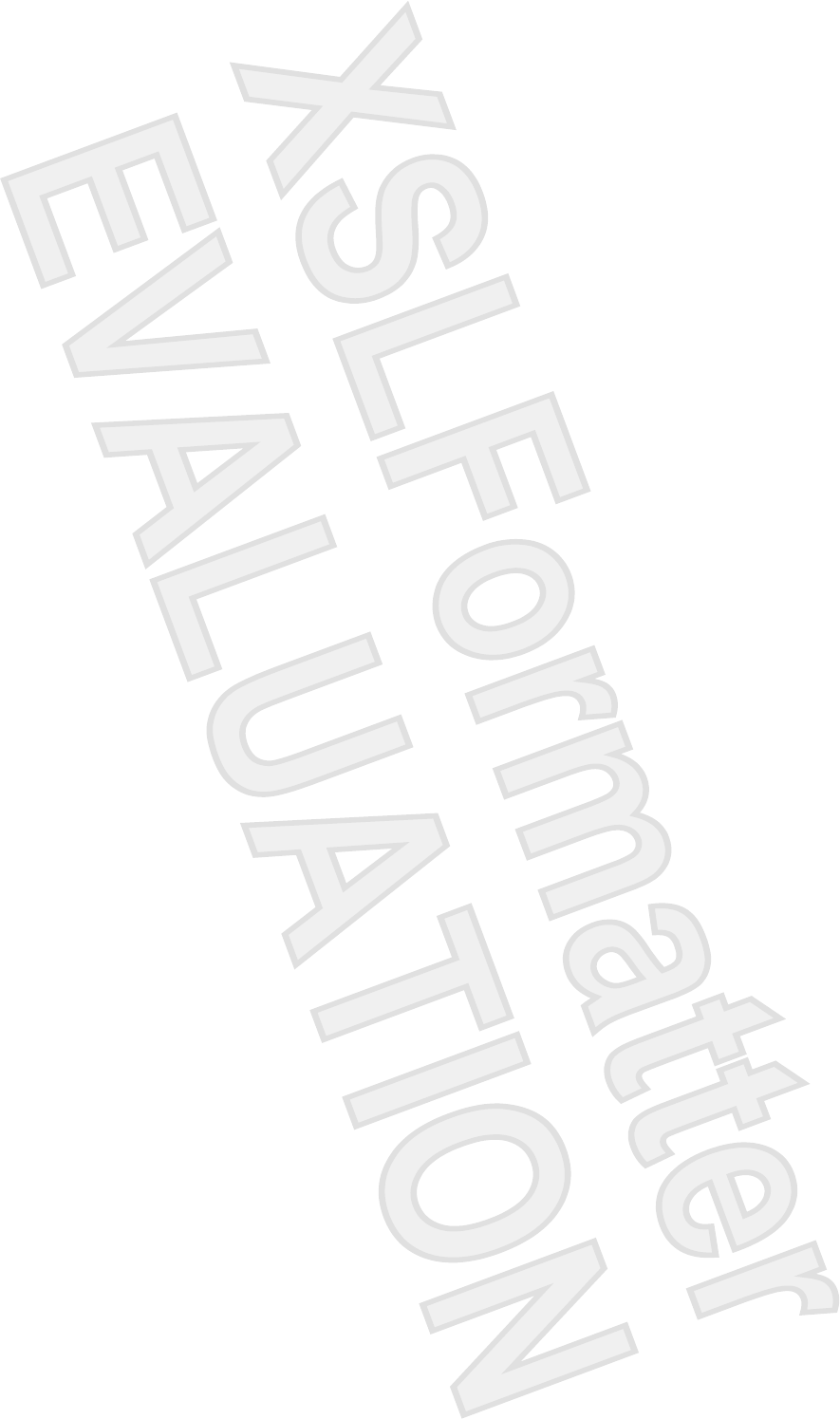
Navigate to: Tap to start planning a route.
Find alternative: Tap if you want to avoid part of the route, travel by way of a specific location, or
calculate an alternative route.
TomTom Traffic: Tap to access information about the traffic along your route. TomTom Traffic is not
available in all countries.
Add favorite: Tap to create a Favorite, which may be a favored location, or a frequently visited location.
Change preferences: Tap to open the Preferences menu and change the way TomTom behaves.
Saving Destinations
Use the Favorites feature to save destinations to make it easy to navigate to them later. Favorites are
frequently visited places. Create Favorites to avoid entering an address every time you want to navigate
there.
To create and save a favorite destination:
1. From the Main Menu, tap Add Favorite. Select the location of the Favorite from the following list :
●Home: You can specify your Home location as a Favorite.
●Address: You can specify an address as a Favorite. When entering an address, choose from
the same four options available in the Navigate to menu.
●Recent destination: Select a Favorite location from a list of recently used destinations.
●Point of interest (POI): Add a Point of Interest (POI) as a Favorite.
●GPS position: Add your current position as a Favorite.
●Point on map: Create a Favorite using the map browser. Select the location of the Favorite
using the cursor, and then tap Done.
●Latitude/Longitude: Create a Favorite by entering latitude and longitude values.
●TomTom Buddy: Create a Favorite based on the current position of a TomTom Buddy.
TomTom Buddies are other TomTom users that you can track, exchange Points of Interest
with, etc.
2. Assign the contact a name that is easy to remember. TomTom suggests a name, usually the
address of the Favorite. Start typing to specify a different name.
Preferences
To change the behavior of TomTom, tap Change preferences in the Main Menu. Some of the options
include:
●Use night colors: Tap to reduce the brightness and use darker colors on the map.
●Turn off 3D display: Tap to view the map from above while navigating. When you turn off the 3D
display, you can choose whether the map shows north or your direction of travel at the top.
●Enable/disable POIs: Tap to set which Point of Interest categories display on the map.
●Safety preferences: Tap to set the safety preferences such as the safety lock. When you enable
the safety lock, you cannot access all buttons and features of TomTom while driving.
16 HP iPAQ Product Information Guide ENWW
Antenna House XSL Formatter (Evaluation) http://www.antennahouse.com/
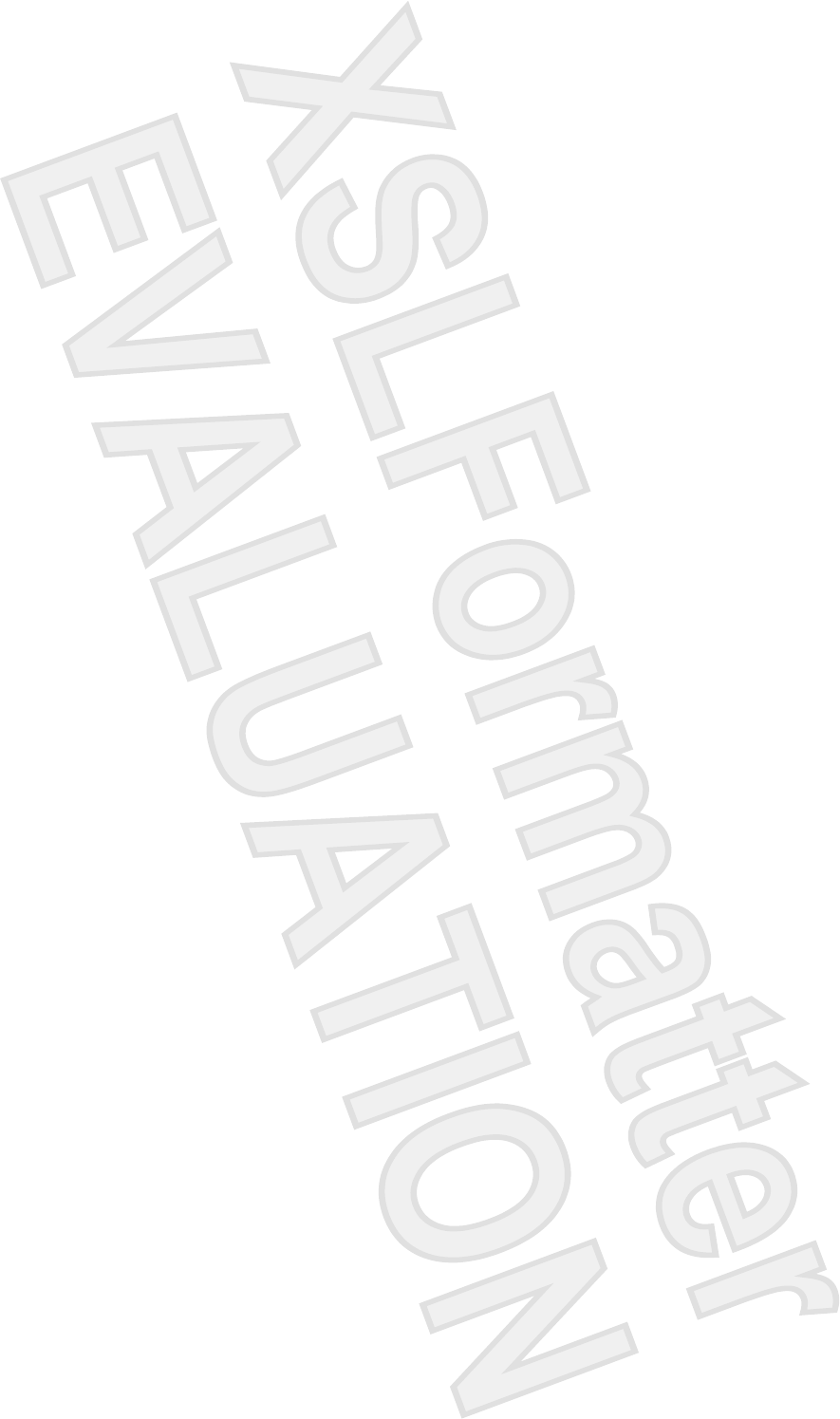
●Change voice: Tap change the voice that provides spoken instructions.
●Tap the arrow to open the next page of buttons.
Points of Interest (POI)
Points of Interest or POIs are useful locations on the map. Examples include:
●Restaurants
●Hotels
●Museums
●Parking garages
●Gas stations
To navigate to a POI:
1. Tap the screen to display the main menu.
2. Tap Navigate to in the main menu.
3. Tap Point of Interest.
4. Narrow the number of POIs by selecting the area of the POI location. Select one of these options:
●POI near you: To search from a list of POIs near your current position.
●POI in city: To choose a POI in a particular town or city.
●POI near Home: To search from a list of POIs near your Home location.
If currently navigating to a destination, you can select from a list of POIs that are on the route or
near the destination. Choose one of these options:
●POI along route
●POI near destination
5. Select the category of POI.
Tap any POI category to search for a POI by name. If you do not find the POI, tap its category. Tap
the arrow to choose from the complete list of categories. Select the category from the list or start
to type the name of the category and select it when it displays in the list.
6. From the list of POIs, select the POI to navigate to. If you know the name of the POI, tap Find, and
then type the name. Select it from the list when it displays.
After you select a POI, TomTom calculates the route to the POI.
TomTom Plus
TomTom PLUS is a collection of services that keep you informed and entertained while on the road.
You can subscribe to a range of extras and download them either directly to your Travel Companion or
download them to your computer, and then transfer them to your Travel Companion.
ENWW Navigation Quick Start 17
Antenna House XSL Formatter (Evaluation) http://www.antennahouse.com/
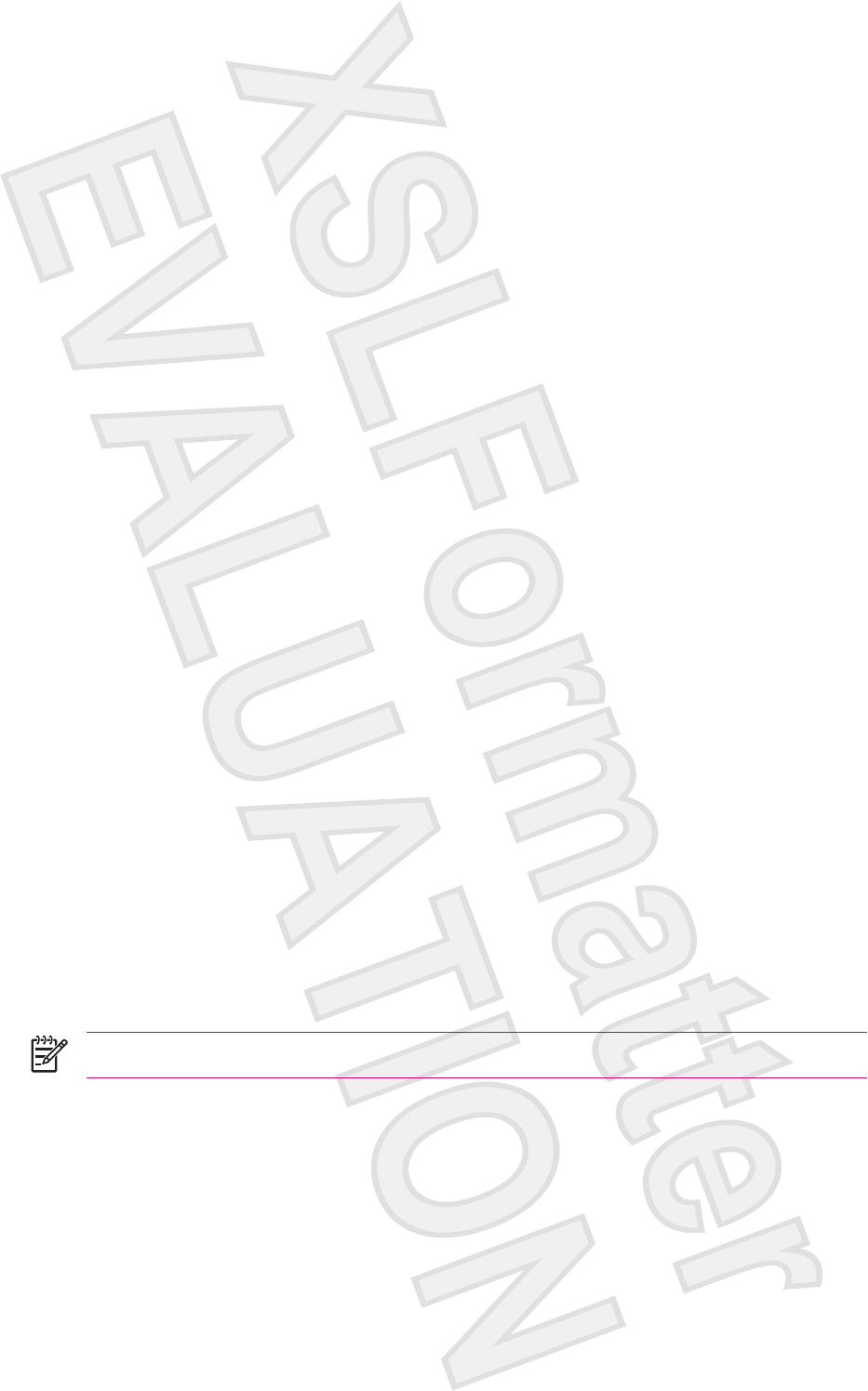
Travel Tools
WorldMate Standard Edition
The Travel Companion comes preinstalled with WorldMate Standard Edition. This travel assistant
provides a host of tools that aid in travel planning. Features include:
●Clocks for global city list
●Currency converter with ability to automatically or manually update currency rates
●World map with city locator
●Weather forecasts for global city list
●Measurement converter
●Country phone codes and area codes
●Clothing size chart
●Extensive packing lists
Weather forecasts and automatic currency conversion require synchronizing the Travel Companion with
a PC that is connected to the Internet and running WorldMate Active PC Sync Plug-in.
For more information about WorldMate Standard Edition, see the Additional Product Information on the
Getting Started CD.
Organizer Features
The Travel Companion includes a number of organizer features that allow you to manage busy travel
times.
E-mail — While traveling, you can use an Internet Service Provider (ISP) to send and receive Outlook
and Internet e-mail. You can also access e-mail using a VPN connection.
Calendar — Sync with the company network and use the built-in Outlook calendar to update and manage
appointments, including meetings and other events. You can display appointments for the day on the
Today screen.
Contacts — Use the built-in contacts database to manage travel contacts.
Wireless — Using WLAN* and Bluetooth, connect to and exchange information with other handheld
devices, various network types, or the Internet.
NOTE WLAN is available on rx5900 series models only.
Continuing Setup
Setting Up the Travel Companion
Use the following steps to quickly set up the Travel Companion. These steps allow you to load software
so you can sync with your personal computer and update WorldMate information, integrate with e-mail
and contacts, etc.
18 HP iPAQ Product Information Guide ENWW
Antenna House XSL Formatter (Evaluation) http://www.antennahouse.com/
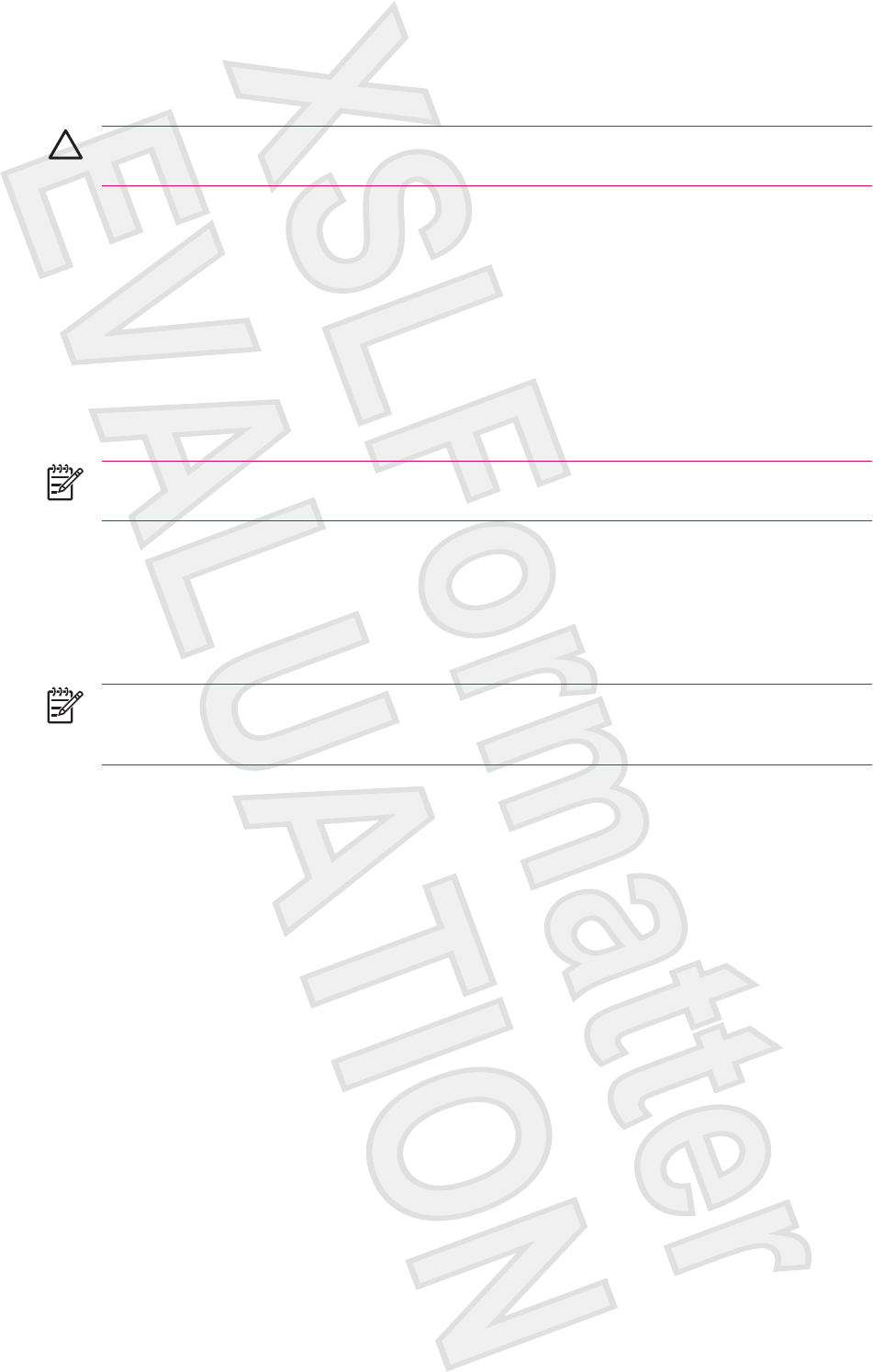
Step 1: Charge the battery
CAUTION To avoid damaging the Travel Companion or the AC adapter, be sure all connectors
are properly aligned before connecting.
It takes approximately 2 to 4 hours to fully charge the battery the first time. Subsequent charges may
take longer.
1. Insert the USB end of the mini-USB cable into the port on the AC adapter.
2. Install the appropriate head onto the AC adapter.
3. Connect the AC adapter to an electrical outlet.
4. Connect the mini-USB cable to the charging/communications port on the Travel Companion. The
cable connector only fits one way, so do not force it. If the connector does not insert easily, turn it
over.
NOTE Whenever a replacement battery is inserted into the Travel Companion, press and hold
the Reset button for at least two seconds, or attach an AC adapter to turn on the device.
Step 2: Insert the Getting Started CD into the CD drive of a personal computer
Use the Getting Started CD to complete the setup of the Travel Companion and to synchronize the
Travel Companion with a personal computer.
The HP Install Wizard automatically opens, and the application starts to run.
NOTE Do you have administrative rights on your personal computer? If not, you may have
problems installing the applications from the Getting Started CD. An administrator needs to install
the applications.
Step 3: Follow the personal computer on-screen instructions
The HP Install Wizard installs:
●Microsoft Outlook 2002
●Microsoft ActiveSync
●WorldMate Active Sync Plug-in
●Additional software applications
Step 4: Synchronize your HP iPAQ with your personal computer
Synchronization
Microsoft ActiveSync software, located on the Getting Started CD, allows your HP iPAQ and your
personal computer to communicate with each other.
For synchronization to work properly, install Microsoft ActiveSync on your personal computer before
connecting your HP iPAQ to your computer.
ENWW Continuing Setup 19
Antenna House XSL Formatter (Evaluation) http://www.antennahouse.com/
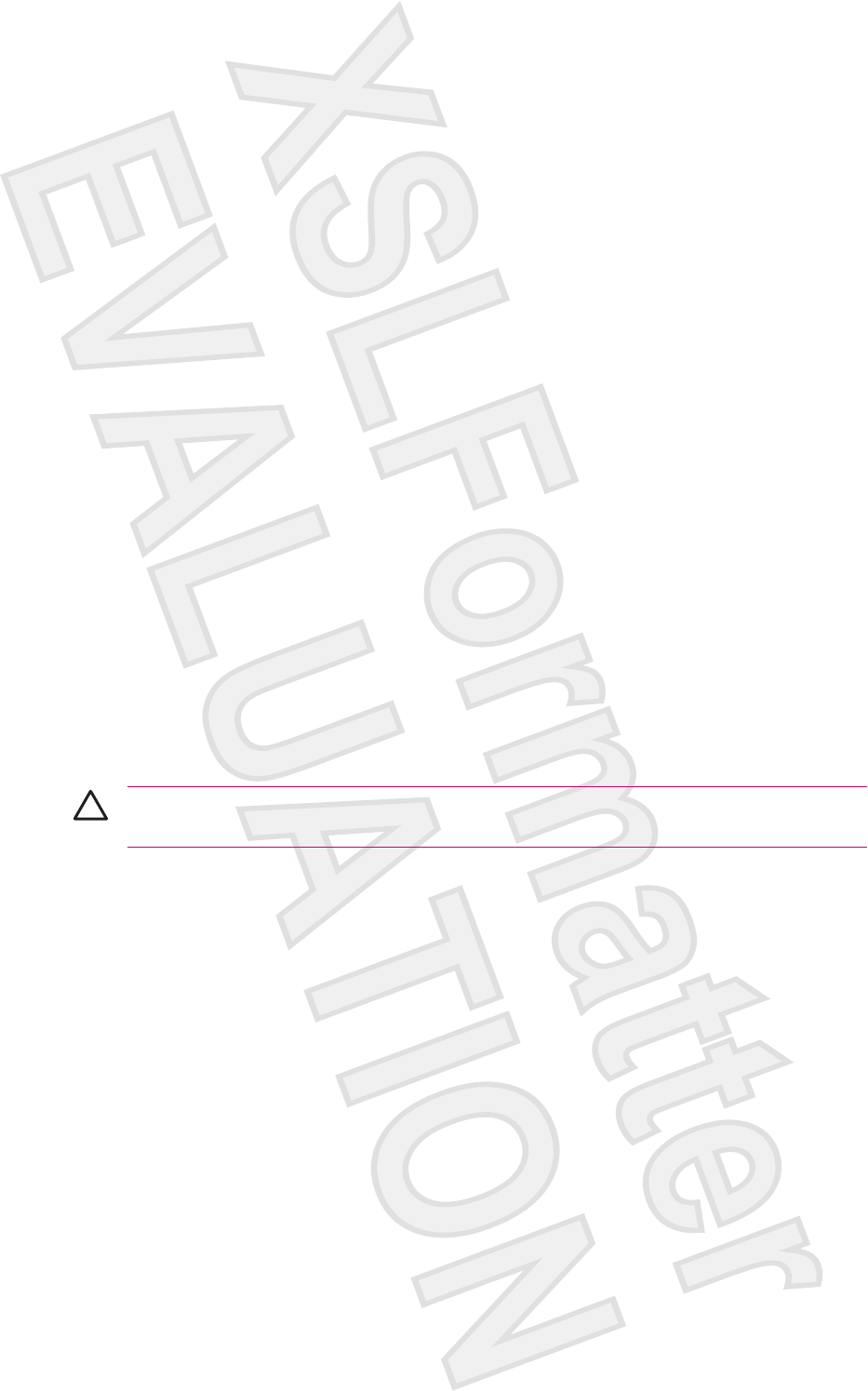
Use Microsoft ActiveSync to:
●Synchronize information between your HP iPAQ and up to two computers or one server so that
the latest information is in all locations.
●Change synchronization settings and the synchronization schedule.
●Copy files between your HP iPAQ and computer.
●Install applications on your HP iPAQ.
●Synchronize links.
●Send and receive e-mail.
●Request meetings.
Synchronizing your HP iPAQ with a personal computer keeps the same information (such as calendar,
contacts, and e-mails) on both units, making it available when you work on your personal computer or
when you take your HP iPAQ on the go. Synchronize your HP iPAQ with a personal computer using
one of the following methods:
●Mini-USB synchronization cable
●Bluetooth
To synchronize your HP iPAQ and a personal computer using the mini-USB synchronization cable:
1. Be sure ActiveSync 4.1 or later is installed on your personal computer.
2. Plug the USB end of the synchronization cable into your personal computer.
3. Connect the mini-USB end on the synchronization cable to the charging/communications port on
your HP iPAQ.
CAUTION To avoid damaging your HP iPAQ or the AC adapter, check to be sure all
connectors are properly aligned before connecting them.
Synchronization begins automatically.
4. Click Next on the Synchronization Setup Wizard screen.
5. Perform one of the following:
●By default, the check box is selected to synchronize directly with a Microsoft Exchange Server.
Clear this check box if you do not want to synchronize directly with a Microsoft Exchange
server, and then click Next.
●Click Next to synchronize directly with a Microsoft Exchange server.
6. When the Synchronization Options screen displays, select the items to synchronize between
your HP iPAQ and your computer, and then click Next.
7. After the items have been synchronized, click Finish. The Synchronization Setup Wizard starts
synchronizing the items you checked.
If ActiveSync does not begin synchronizing, start it manually:
On your personal computer, open ActiveSync by selecting the Start menu > Programs > Microsoft
ActiveSync.
20 HP iPAQ Product Information Guide ENWW
Antenna House XSL Formatter (Evaluation) http://www.antennahouse.com/

Troubleshooting Help for Synchronization Issues
Following is a list of symptoms that may indicate synchronization issues are occurring:
●No ActiveSync chimes sound (or a gray icon displays), and there is no activity in the ActiveSync
window on your personal computer.
●ActiveSync chimes sound, and the ActiveSync icon on your personal computer changes to a
swirling green icon. The “retrieving settings” message appears on your personal computer, but the
ActiveSync connection drops prior to establishing the partnership.
●ActiveSync is searching for a connection but none occurs. (The green icon on your personal
computer continues to spin.)
●Synchronization has been established between your HP iPAQ and personal computer but
connection is dropped. (The green icon on your personal computer stops spinning and grays out.)
●Firewall or other network protection software message box is displayed for ActiveSync to access
the network or Internet.
If you experience difficulty while synchronizing your HP iPAQ and personal computer, try the following
solutions to troubleshoot any synchronization issues:
●Confirm that you are running ActiveSync on your personal computer with a supported operating
system (OS).
●To get more information about the supported OS versions, visit: www.microsoft.com/
windowsmobile.
●The latest version of ActiveSync is at: www.microsoft.com/windowsmobile/downloads.
●If you are running ActiveSync 4.1 or later and personal firewall software on your personal computer,
please add ActiveSync to the firewall program’s exception list.
(Firewall software, such as Sygate Personal Firewall, TrendMicro PC-cillin Internet Security, Norton
Personal Firewall, McAfee Personal Firewall, or Zone Alarm Security Suite may block
synchronization.) Refer to the documentation that came with your firewall program to determine
how to add ActiveSync 4.1 or later to the program’s exception list. To further troubleshoot a firewall
application and enable ActiveSync 4.1 or later, visit: www.microsoft.com/windowsmobile/help/
activesync.
●During the ActiveSync installation, if you inadvertently left the Microsoft Exchange Server option
box checked and are not planning to connect to an Exchange server, follow these steps:
●Connect your HP iPAQ to your personal computer. Be sure an ActiveSync connection is
established.
●On your personal computer, click Start > All Programs > Microsoft ActiveSync.
●Click Tools > Options > Sync Options tab.
●Uncheck the boxes for the sync items listed under the Server group.
●Place a checkmark in the boxes under the Desktop group for those items to synchronize.
●Disconnect your HP iPAQ from your personal computer and wait for the ActiveSync message
confirming that your device is no longer connected. Reconnect your HP iPAQ to your personal
computer. Wait for about two minutes to see if your HP iPAQ connects to your personal computer.
ENWW Continuing Setup 21
Antenna House XSL Formatter (Evaluation) http://www.antennahouse.com/
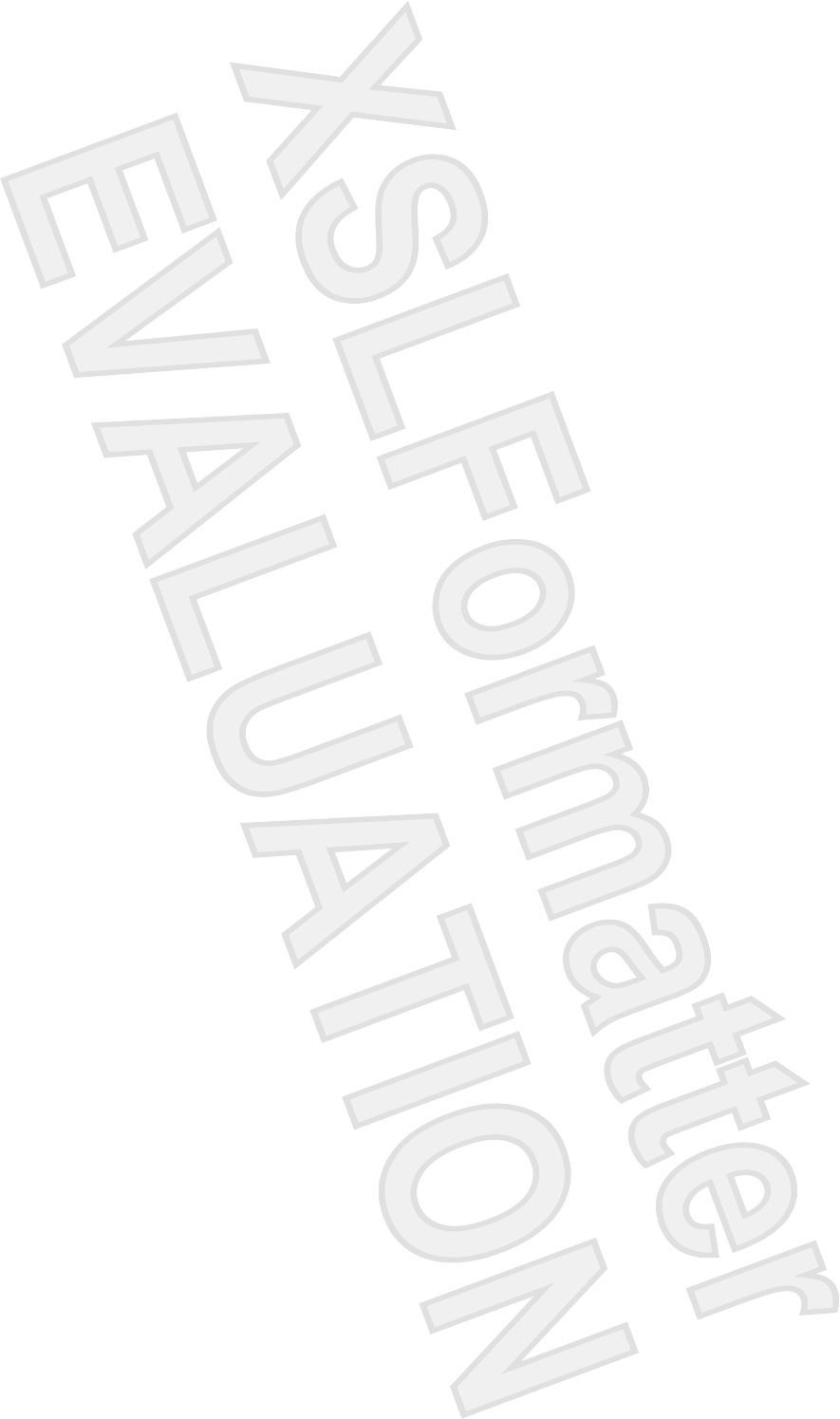
●On your personal computer, in ActiveSync, select File > Connection Settings. Confirm that USB
is selected as a connection method.
●Connect your HP iPAQ to a different USB port on your personal computer.
●Check your mini-USB synchronization cable. Consider using another mini-USB synchronization
cable if one is available.
●Try synchronizing via a Bluetooth connection.
●Restart your personal computer and perform a soft reset on your HP iPAQ. (A soft reset does not
erase any settings, programs or data.) Use the stylus to lightly press the Reset button. Your HP
iPAQ restarts and displays the HP QuickStart Tour. Once your personal computer and HP iPAQ
restart, reconnect your HP iPAQ to your personal computer.
●Uninstall ActiveSync from your personal computer and then reinstall it. To uninstall ActiveSync
from your personal computer, click Start > Control Panel > Add or Remove Programs >
Microsoft ActiveSync. Then click the Remove button and click Yes.
●After trying the above solutions without any success in solving the connection problem, perform a
factory reset on your HP iPAQ. (A factory reset clears all user-installed settings, programs, and
data and restores your HP iPAQ to factory settings.)
Reinstall applications on your HP iPAQ once the factory reset is complete by using ActiveSync on your
personal computer. Once your HP iPAQ is synchronized properly, go to ActiveSync on your personal
computer and select Tools > Add/Remove Programs and select any programs to reinstall.
Finding the Serial Number and Model Number
Locate the serial and model numbers before contacting HP Customer Support, particularly if you are
calling for in-warranty support.
View the serial number and model ID by tapping Start > Programs > HP Help And Support > Serial
and Model Number.
You can also find this information next to the battery of your HP iPAQ. To locate the serial number:
1. Remove the battery cover.
2. Locate the label containing the serial number next to the battery.
Protecting Your HP iPAQ with a Password
Keep your data more secure by requiring a password every time you turn on your HP iPAQ.
1. Tap Start >Settings > Personal tab > Lock > Password tab.
2. Select the Prompt if device unused for check box, and select the amount of time from the list
box that your HP iPAQ must be unused before the password is required.
3. In the Password type field, select the type of password you would like to use. Enter the password
and confirm the password.
22 HP iPAQ Product Information Guide ENWW
Antenna House XSL Formatter (Evaluation) http://www.antennahouse.com/
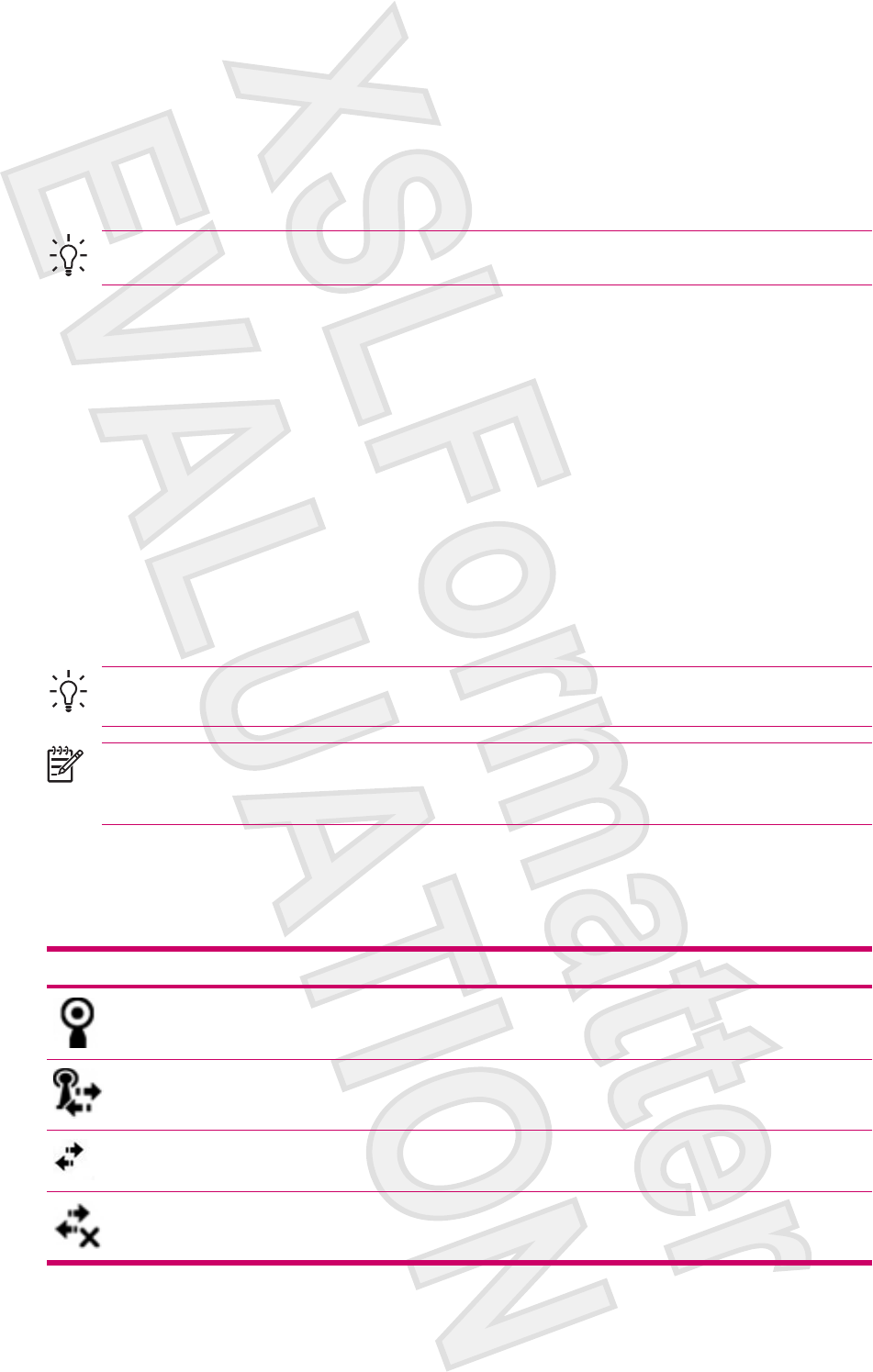
4. On the Hint tab, enter a phrase to help you remember your password. Be sure that your hint doesn't
allow others to guess your password. The hint is displayed after the wrong password is entered
five times.
5. When prompted, tap OK. The next time your HP iPAQ is unused for the specified amount of time,
you are prompted to enter your password.
Tip Use the same steps as above to change or reset your password.
Today Screen
Access the Today screen by tapping Start > Today.
The Today screen shows appointments, active tasks, and information about e-mail messages. Along
the top of the Today screen are the connectivity indicators, Volume icon, the battery level indicator,
and the clock.
Tap a section of the Today screen to open the program that is associated with that section.
To customize the Today screen:
1. Tap Start > Settings > Today.
2. On the Appearance tab, select the desired theme for the background of the Today screen.
3. On the Items tab, select the items to appear on the Today screen.
Tip To change the order of items displayed on the Today screen, tap the item, and tap Move
Up or Move Down.
NOTE There are two default softkeys on the bottom of the Today screen: Calendar and
Contacts. On the Today screen, the Calendar softkey is also the Notification softkey. Any type
of alert, such as a meeting reminder is displayed on the Today screen as a notification.
Status Icons
The following status icons are displayed on the Navigation or Command bar. Tap the icon on the HP
iPAQ screen to view more information related to the item.
Icon Status
Indicates that one or more networks are present. Tap the icon to access an available network.
Indicates connection to a wireless network.
Indicates connection to ActiveSync, but not currently synchronizing.
Inactive connection to computer or wireless network.
ENWW Continuing Setup 23
Antenna House XSL Formatter (Evaluation) http://www.antennahouse.com/
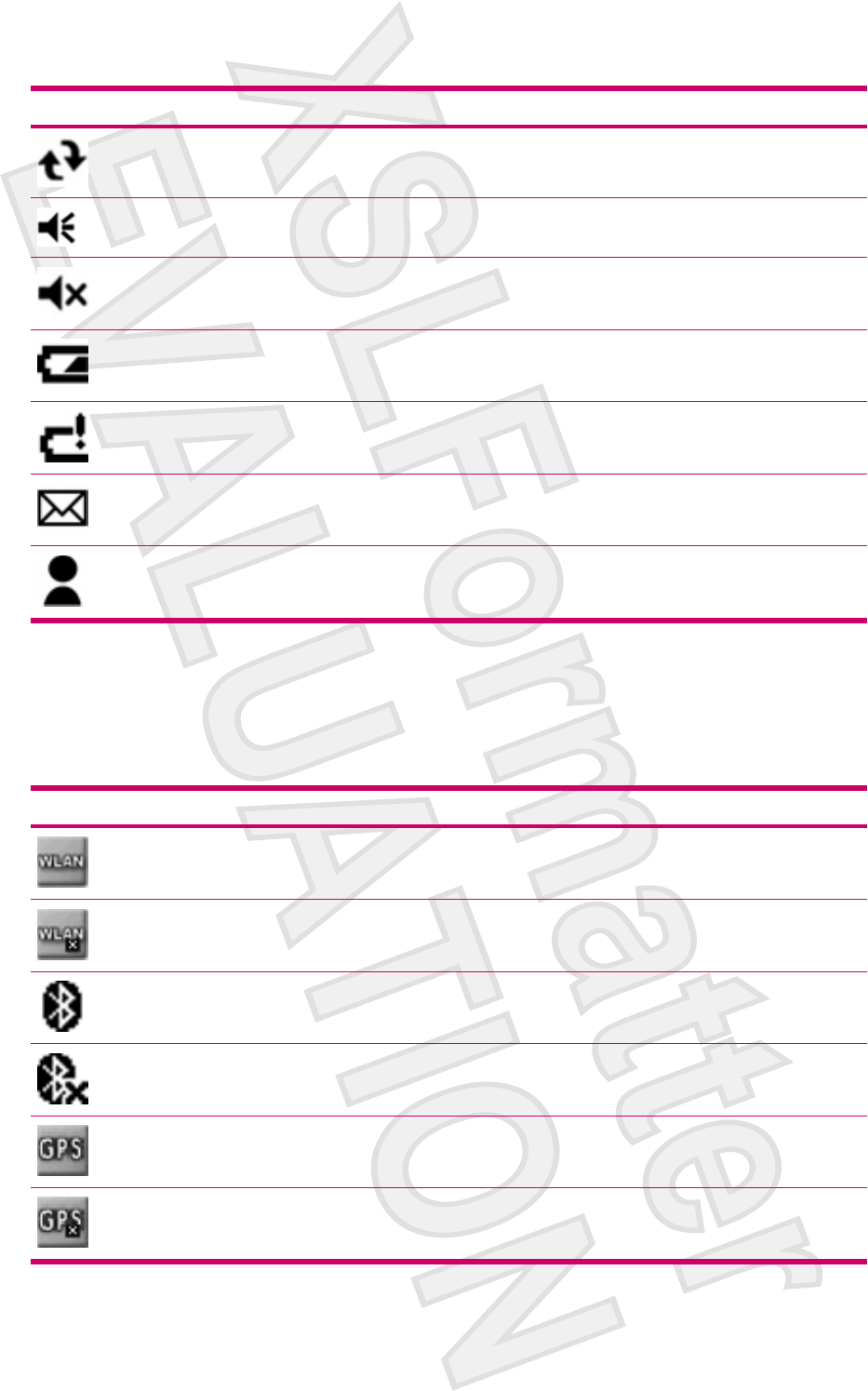
Icon Status
Microsoft ActiveSync is synchronizing.
Speaker is on.
Speaker is off (or in mute position).
Battery power is low.
Battery power is very low.
E-mail has been received.
Instant messages received.
iPAQ Wireless
Tap Start > iPAQ Wireless or tap the iPAQ Wireless icon on the Today screen to launch iPAQ
Wireless, which provides a control center to turn WLAN and Bluetooth on and off, and to configure their
settings. The GPS software controls the GPS receiver.
Icon Status
WLAN is on.
WLAN is off.
Bluetooth is on.
Bluetooth is off.
GPS receiver is on.
GPS receiver is off.
24 HP iPAQ Product Information Guide ENWW
Antenna House XSL Formatter (Evaluation) http://www.antennahouse.com/
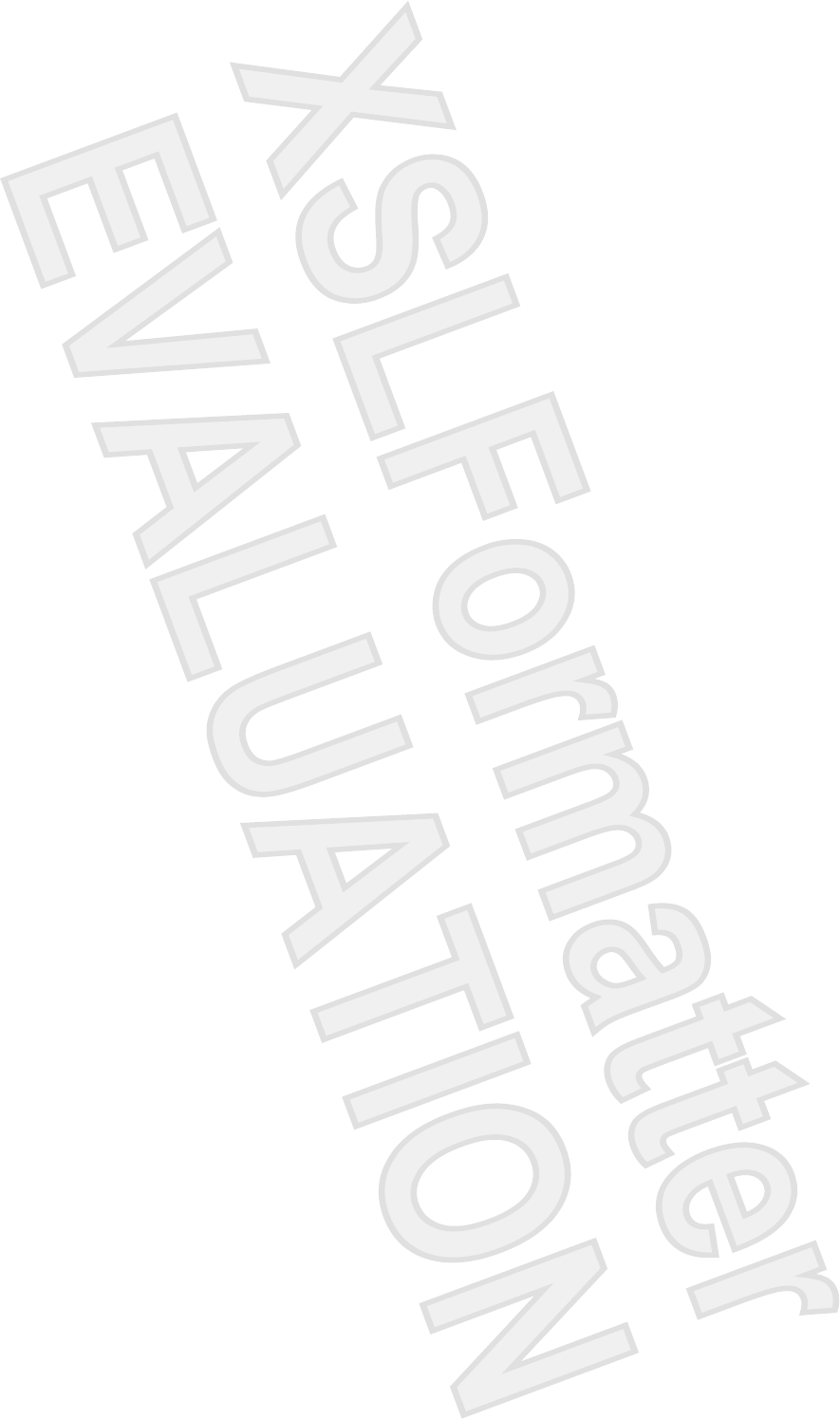
*WLAN is available on rx5900 series models only.
The iPAQ Wireless screen has two power buttons to turn wireless features on and off. The WLAN and
Bluetooth tabs allow you to access each wireless activity individually. Configure wireless connections
by tapping View WLAN Networks on the WLAN tab or Bluetooth Settings on the Bluetooth tab.
Checking the Battery Charge Level
To monitor the battery power, tap either the Battery icon on the TodayPanel Lite or tap Start > Settings
> System tab > Power.
If the battery charge level is low, connect to AC power.
Battery Saving Tips
The HP iPAQ is as individual as you are. Adjust the settings on your HP iPAQ to fit your individual needs
and to help the battery last as long as possible between charges. Here are some recommendations for
how to conserve battery life.
●Dim the Backlight – Keep the display only as bright as required to view the screen easily. On
the Today screen, use the stylus to adjust the Backlight Brightness Level slider, near the Light
bulb icon.
●Auto Turn Off the Backlight – On the Today screen, tap the Light bulb icon and make sure the
first box is checked. Specify a short amount of time to wait before turning off the backlight.
●Keep Wireless Features Off – Always turn off the WLAN and Bluetooth power when they are not
in use. Tap Start > iPAQ Wireless, and then tap the WLAN or Bluetooth button to turn the features
off. WLAN is available on rx5900 series models only.
●Sounds & Notifications – Every time you are notified of an event, battery power is consumed. Go
to Start > Settings > Sounds & Notifications > Notifications tab and turn off any notification
types that are unnecessary.
●Auto Turn Off Device – On the Today screen, tap the Battery icon, and then tap the Advanced
tab. Make sure the first box is checked, so the device automatically powers off when not in use.
Specify a short amount of time to wait before automatically powering off your HP iPAQ.
●Turn GPS off – Always turn off the GPS receiver when you are not using GPS. Close the GPS
application to turn off the receiver.
To keep your HP iPAQ charged, remember to use the car charger when using your HP iPAQ in the car.
Entering Text
Depending on your preference, use the on-screen keyboard or a handwriting recognition feature such
as Block Recognizer, Letter Recognizer, or Transcriber to enter text in programs.
1. Tap Start > Settings > Personal tab > Input.
2. On the Input Method tab, select a text input method and change options as appropriate.
3. Tap OK.
You can now go to a program (such as Notes) and start entering text.
ENWW Entering Text 25
Antenna House XSL Formatter (Evaluation) http://www.antennahouse.com/
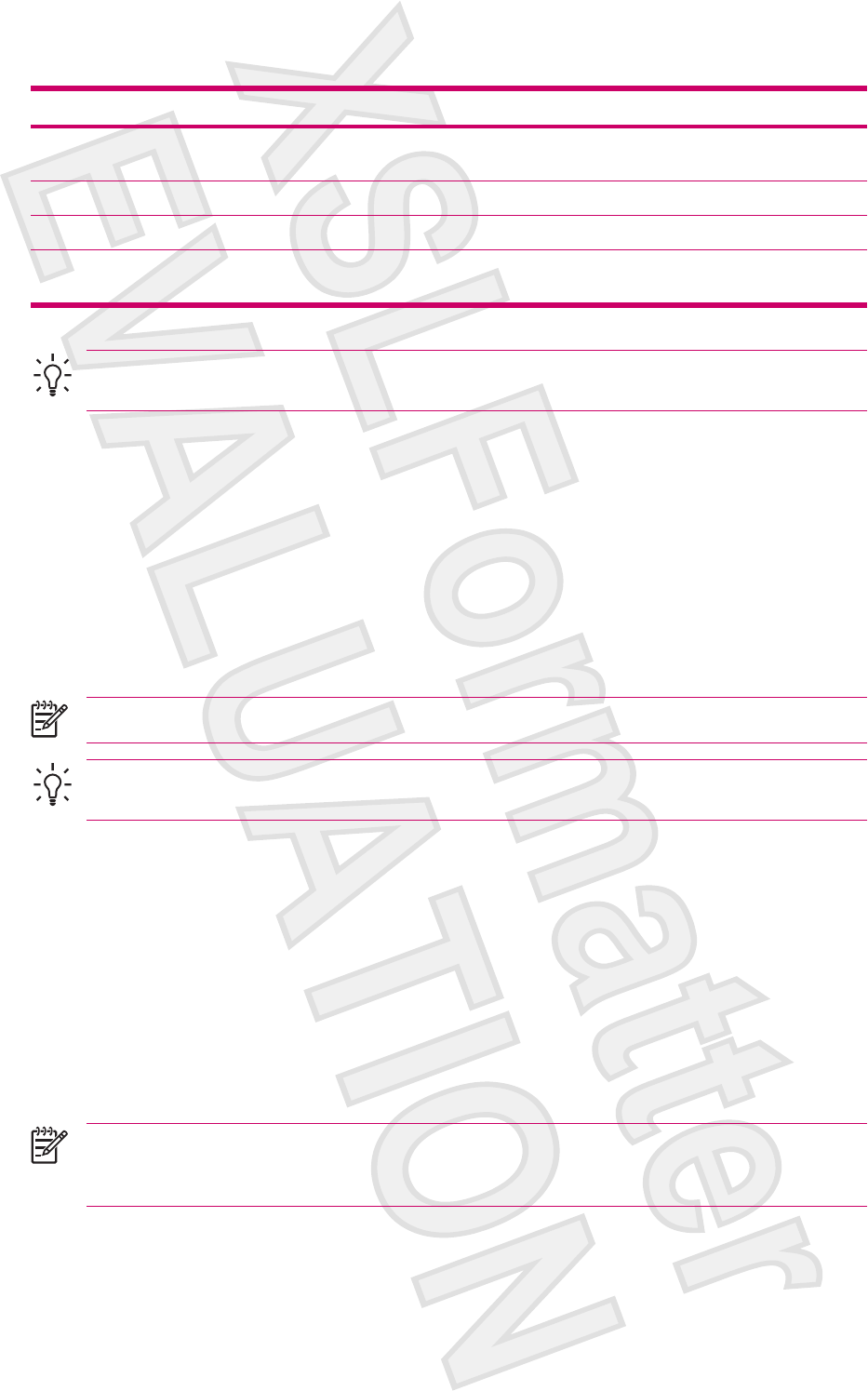
Text Input Method Definition
Block Recognizer Use a single stroke to write letters, numbers, symbols, and punctuation that are then
converted into typed text. Perform gestures to enter Return and Backspace.
Keyboard Tap keys on the on-screen keyboard displayed on the screen to enter text.
Letter Recognizer Write individual letters, numbers, and punctuation that are converted into typed text.
Transcriber Write in cursive, print, or mixed handwriting (consisting of both cursive and print) and
convert writing into typed text.
Tip Change the text input method from within any program by tapping the Input Selector arrow
and tapping an input method.
Entering Text Using Block Recognizer
1. From any program, tap the Input Selector arrow, and then Block Recognizer.
2. Write characters, numbers, and symbols in the designated writing area.
●Enter letters by writing in the abc (left) area of the box.
●Enter numbers by writing in the 123 (right) area of the box.
●Enter symbols and punctuation by tapping in either area of the box and then writing the desired
character.
NOTE Block Recognizer is available when text entry is possible.
Tip For help with writing characters with Block Recognizer, tap the question mark near the
writing area.
Entering Text Using the On-screen Keyboard
1. From any program, tap the Input Selector arrow, and then Keyboard.
2. Tap on the appropriate characters, numbers, and symbols on the on-screen keyboard.
Increase the size of the on-screen keyboard keys to make them easier to tap.
1. Tap Start > Settings > Personal tab > Input.
2. On the Input Method tab, select Keyboard as the input method, and tap Large keys.
3. Tap OK.
NOTE Enlarge the keys even more by selecting the Use gestures for the following keys
check box. Fewer keys appear on the keyboard, but you can do gestures for Space, Backspace,
Enter, and Shift+key.
26 HP iPAQ Product Information Guide ENWW
Antenna House XSL Formatter (Evaluation) http://www.antennahouse.com/
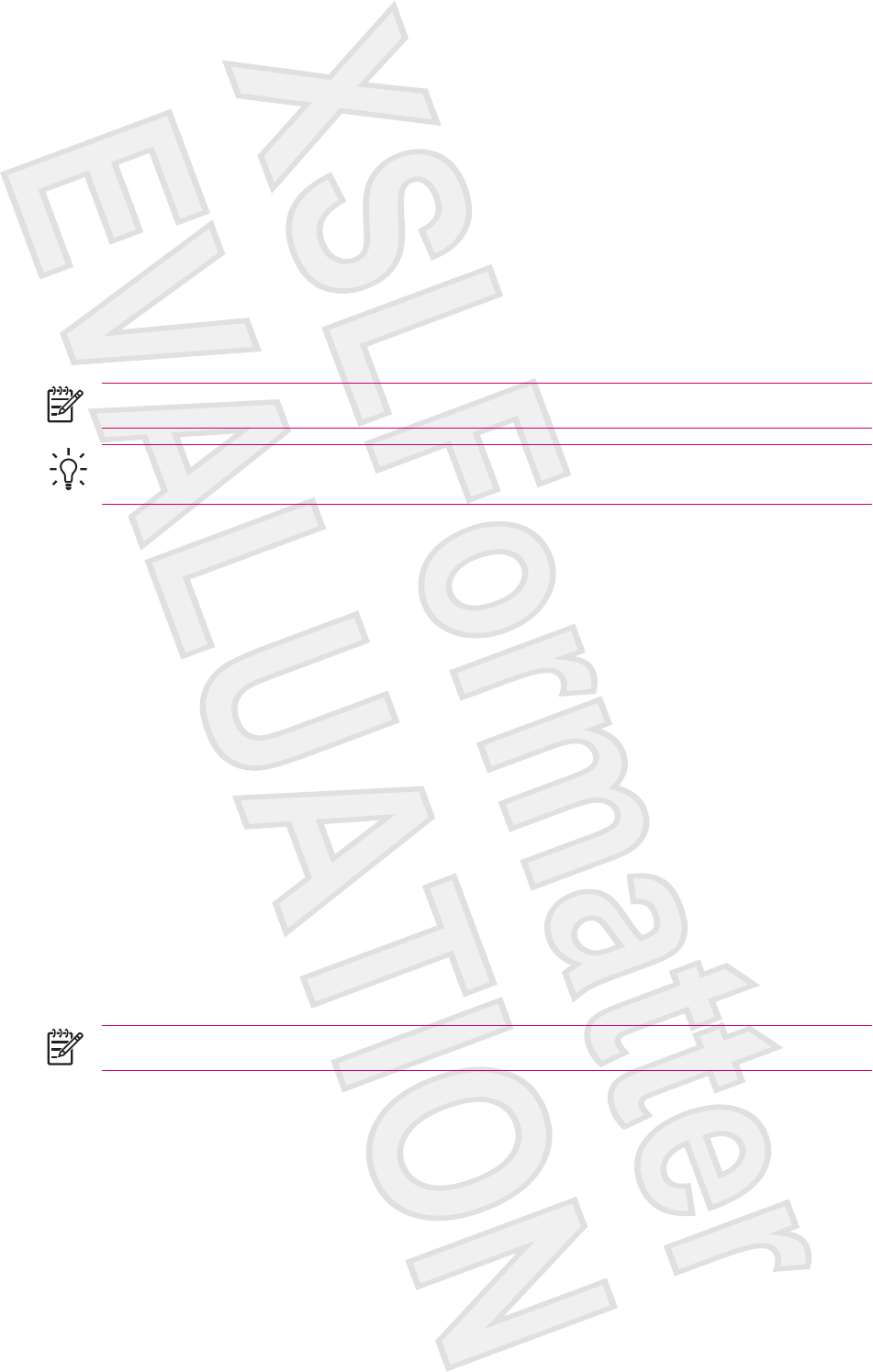
Entering Text Using Letter Recognizer
1. From any program, tap the Input Selector arrow, and then Letter Recognizer.
2. Write characters, numbers, and symbols in the designated writing area.
●Enter capital letters by writing in the ABC (left) area of the box.
●Enter lowercase letters by writing in the abc (middle) area of the box.
●Enter numbers by writing in the 123 (right) area of the box.
●Enter punctuation and symbols by tapping in either area of the box and then writing the desired
character.
NOTE Letter Recognizer is available when text entry is possible.
Tip For help with writing characters with Letter Recognizer, tap the question mark near the
writing area.
Writing with Transcriber
Transcriber works transparently in the background of programs, recognizing words with its integrated
dictionary. When Transcriber is turned on, it interprets stylus movement anywhere on the screen as
handwriting input.
To write with Transcriber:
1. From any program, position the cursor where you want the text to appear.
2. Use the stylus to write anywhere on the screen.
The handwriting is converted to text shortly after you lift the stylus from the screen.
Resetting Your HP iPAQ
You might need to perform a soft reset if your HP iPAQ stops responding. The two types of resets are
soft and factory.
Performing a Soft Reset
A soft reset stops all running applications, but does not erase any programs or saved data.
NOTE Be sure to close all running applications before performing a soft reset.
To perform a soft reset:
1. Locate the recessed Reset button on your HP iPAQ.
2. Use the stylus to lightly press the Reset button.
The HP iPAQ restarts and displays the HP QuickStart Tour.
ENWW Resetting Your HP iPAQ 27
Antenna House XSL Formatter (Evaluation) http://www.antennahouse.com/

Performing a Factory Reset
A factory reset clears all user-installed settings, programs, and data, and restores your HP iPAQ to
factory settings.
To perform a factory reset and return your HP iPAQ to factory settings:
1. Press and hold the Quick Launch and Rotate Screen buttons.
2. While holding these buttons, use the stylus to lightly press the Reset button on the HP iPAQ until
the device restarts.
3. When the HP iPAQ restarts, release all of the buttons, and then remove the stylus from the
Reset button.
The HP iPAQ restarts and powers on.
Entertainment
Your HP iPAQ lets you have fun with several entertainment features:
●Play music and watch videos
Play music and watch videos on your HP iPAQ with Windows Media Player 10 Mobile. Synchronize
media files between a Windows-based computer and your HP iPAQ. Update playlists, copy music
library, and use online music services with Windows Media DRM protection.
●View and manage digital photos
Use your HP iPAQ with HP Photosmart Mobile as a digital photo album that’s always with you to
view and share photos in high-quality color. Use the Slide Show to watch photos of friends and
family, while your HP iPAQ charges.
●Play games
Let your HP iPAQ help to fill your spare time with games like Solitaire or Bubble Breaker. Purchase
other Windows Mobile game titles and useful applications by visiting http://mobile.handango.com/
hp or find more information on the Getting Started CD.
Windows Media Player 10 Mobile
Microsoft Windows Media Player 10 Mobile with enhanced features allows you to enjoy digital media in
new ways both at home and on the go. The personal computer (PC) version of Windows Media Player
10 can be downloaded for free from Microsoft.
With this new version:
●Sync music, playlists, videos, and recorded TV to your HP iPAQ for easy enjoyment on the go.
●Automatically convert video and recorded TV during sync to an optimized and size reduced format
for better viewing on your HP iPAQ.
●Manually select digital media to sync to your HP iPAQ, or automatically sync to your HP iPAQ each
time you connect, based on your preferences.
●New music subscription services enable you to pay a monthly fee and download all the music you
want. With Windows Media Player 10, you can now take those songs with you on your HP iPAQ.
28 HP iPAQ Product Information Guide ENWW
Antenna House XSL Formatter (Evaluation) http://www.antennahouse.com/

For a complete list of features and more, visit www.microsoft.com/windows/windowsmedia/player/
windowsmobile.
NOTE Protected files are digital media files that are secured with a license to prevent
unauthorized use or playback. Licenses are created and managed by using the Digital Rights
Management (DRM) technology.
Listening to Music and Watching Videos
Use Windows Medial Player 10 Mobile to play songs, videos, and playlists that are stored on your HP
iPAQ or removable storage card.
1. If you are not on the Library screen, tap Menu > Library.
2. If necessary, on the Library screen, tap the Library arrow (near the top of the screen), and then
tap the library that you want to use (for example, Storage Card).
3. Tap a category (for example, My Music or My Playlists), tap and hold the item that you want to
play (such as a song, album, or artist name), and then tap Play or Queue Up.
NOTE To play a file stored on your HP iPAQ but that is not in a library, on the Library screen,
tap Menu > Open File. Tap and hold the item that you want to play (such as a file or a folder)
and then tap Play or Queue Up.
Clearing the Now Playing List
Under Windows Media Player, the Now Playing playlist displays the currently playing file and any files
that are queued up to play next. Quickly remove all items from the playlist by clearing it.
1. If you are on the Library screen, select the Now Playing category to display the Now Playing
screen.
If you are on the Playback screen, select Now Playing to display the Now Playing screen.
2. On the Now Playing screen, tap Menu > Clear Now Playing.
Updating a Library
In most cases, Windows Media Player 10 Mobile automatically updates your libraries as necessary.
However, you can manually update a library to ensure that it has links to any new files that you might
have recently copied to your HP iPAQ or a removable storage card.
1. If you are not already on the Library screen, tap Menu > Library.
2. On the Library screen, tap Menu > Update Library.
3. Wait for the files to be added, and then tap Done.
HP Photosmart Mobile
Use HP Photosmart Mobile to:
●View pictures stored on the HP iPAQ or a storage card.
●Add voice or text notes to pictures.
●Print pictures.
ENWW Entertainment 29
Antenna House XSL Formatter (Evaluation) http://www.antennahouse.com/
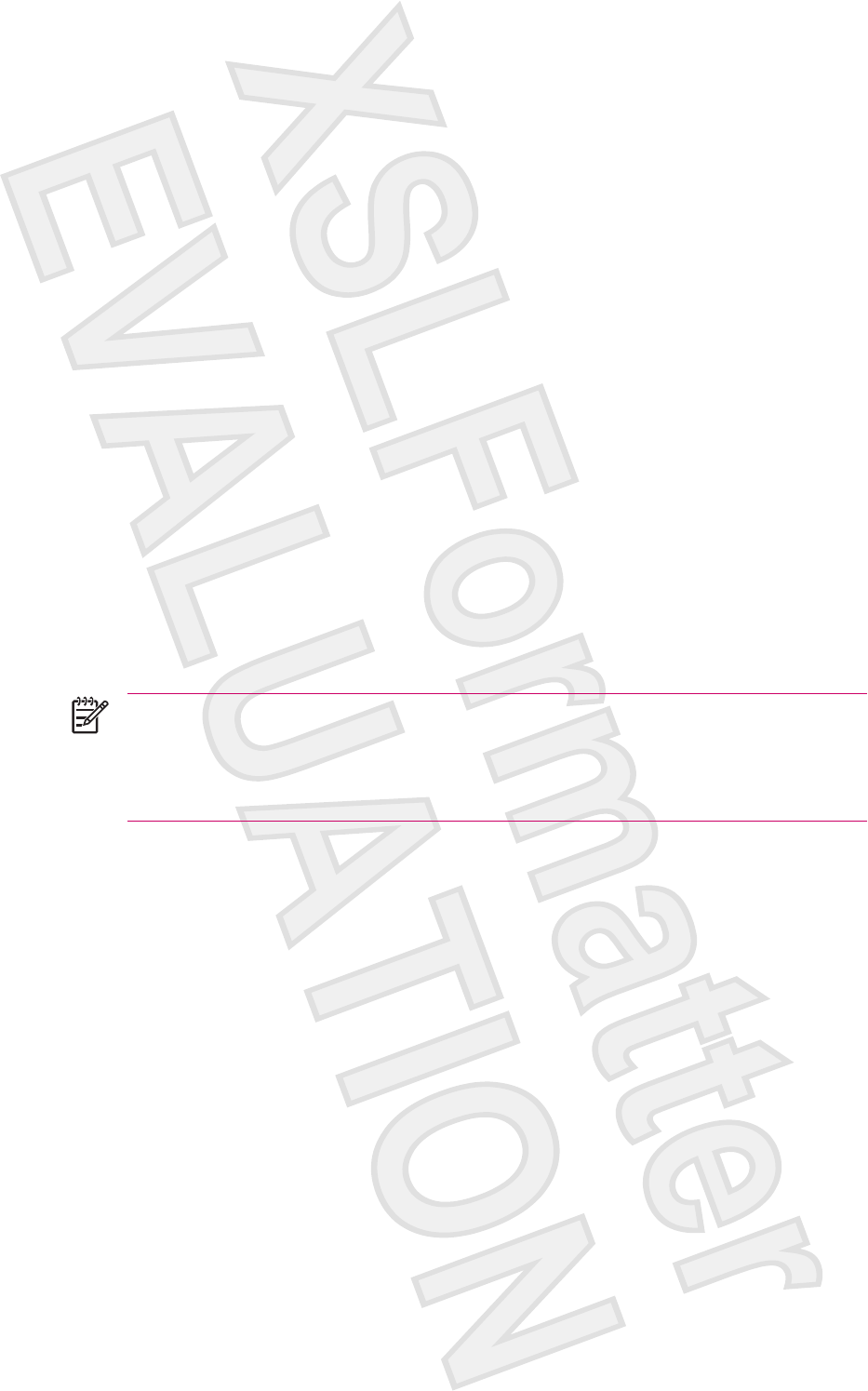
●View a slideshow.
●Send pictures by e-mail attachments.
●Associate a picture with a Contact.
●Assign a picture to the Today screen background.
Attaching a Voice Note to a Picture
To attach a sound file to a picture:
1. Tap Start > Programs > Photosmart Mobile.
2. Tap the thumbnail picture in which you want to add a voice note.
3. Tap the Cassette icon.
4. Tap the Record button on the Recording toolbar.
5. Speak into the microphone to record the sound file and tap the Stop button when finished.
6. Tap the Cassette icon again to close the Recording toolbar.
E-mailing Pictures
1. Tap Start > Programs > Photosmart Mobile.
2. Tap the thumbnail picture to be e-mailed.
NOTE If you cannot view or hear the media file to be e-mailed, the file may be protected
by Digital Rights Management (DRM). DRM is software that enables secure distribution and
prevents illegal distribution of pictures, videos, music, movies, and ring tones over the
Internet. For more information on DRM, refer to the on-screen Help by tapping Start >
Help and search on DRM.
3. Tap Menu > Send.
4. Tap E-mail Attachment.
5. Tap the Reduce sent photo size to check box and select the reduction percentage desired.
6. Tap Next.
7. Enter the appropriate e-mail address or use Contacts by tapping Menu > Add Recipient.
8. Enter other appropriate information, such as an e-mail title and message.
9. Tap Send.
Viewing a Slideshow
To view a slideshow:
1. Tap Start > Programs > Photosmart Mobile.
2. Tap the slideshow icon at the bottom of the screen.
3. Tap the screen to view the Pause, Forward, Backward, and Stop buttons.
30 HP iPAQ Product Information Guide ENWW
Antenna House XSL Formatter (Evaluation) http://www.antennahouse.com/
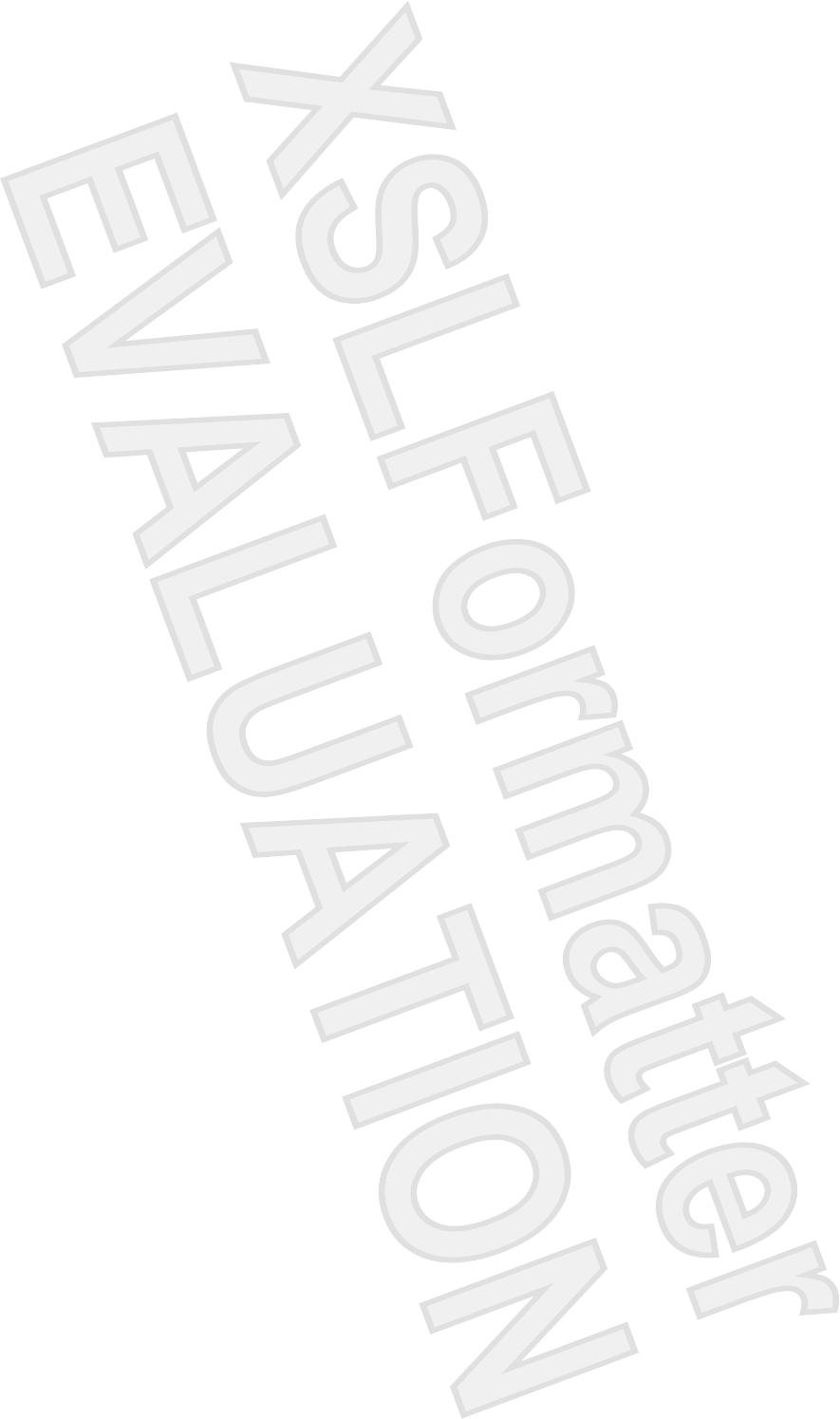
Mobile Office
Your HP iPAQ includes the following programs:
●Calendar
●Contacts
●Tasks
●E-Mail
●Internet Explorer Mobile
●Word Mobile
●Excel Mobile
●PowerPoint Mobile
With these applications:
●Manage contacts and calendar.
●Send and receive e-mail.
●Browse the Internet.
●Open and view slide show presentations.
●Create and edit documents and templates.
●Create and edit Excel workbooks and more.
To access these productivity tools and learn more about the features, tap Start > Programs.
Calendar
Accessing Calendar
Use Calendar to schedule appointments, meetings, and other events.
You can display appointments on the Today screen. If you use Outlook on your personal computer, you
can synchronize appointments between your HP iPAQ and computer. You can also set Calendar to
remind you of appointments with a sound or flashing LED.
You can look at your appointments in various views (Day, Week, Month, and Agenda). To see detailed
appointment information in any view, tap the appointment. You can also change the Calendar view.
For easy access to your calendar, tap Calendar on the bottom of the Today screen. You can also access
your calendar by tapping Start > Calendar.
For more information, refer to Additional Product Information located on the Getting Started CD.
Viewing Today's Agenda
1. Tap Start > Calendar.
2. Tap Menu > View > Agenda.
ENWW Mobile Office 31
Antenna House XSL Formatter (Evaluation) http://www.antennahouse.com/
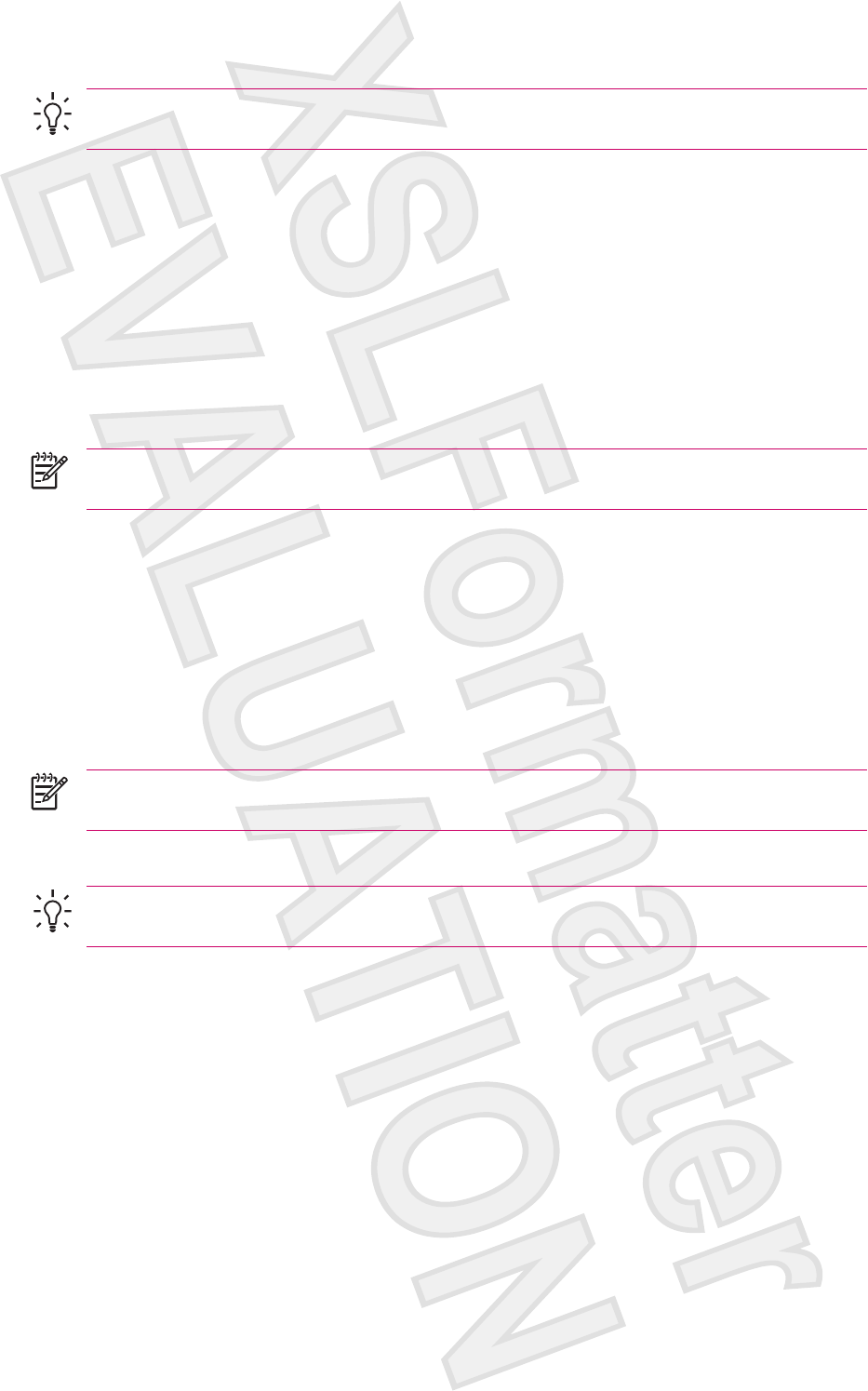
Tip To quickly view today’s agenda, on the Today screen, tap one of your upcoming
appointments.
Viewing Appointments
To view an appointment on your calendar:
1. Tap Start > Calendar.
2. Tap the appointment to view.
To view appointments for the week:
1. Tap Start > Calendar.
2. Tap Menu > View > Week.
NOTE You can also view appointments for the month or year by tapping the appropriate
selection.
Scheduling an Appointment
1. Tap Start > Calendar.
2. Tap Menu > New Appointment.
3. Enter a name for the appointment and information such as start and end times.
To schedule an all-day event, in the All Day box, tap Yes.
4. When finished, tap OK to return to the calendar.
NOTE All-day events do not occupy blocks of time in Calendar; instead, they appear in banners
at the top of the calendar.
To cancel an appointment, tap the appointment and tap Menu > Delete.
Tip To have the time entered automatically in Day view, tap the time slot for the new
appointment, and tap Menu > New Appointment.
Sending a Meeting Request
Use Calendar to schedule meetings via e-mail with contacts who use Outlook or Outlook Mobile.
To send a meeting request:
1. Tap Start > Calendar.
2. Schedule a new appointment, or open an existing one and tap Edit.
3. Tap Attendees.
4. Tap the name of the contact to invite.
5. To invite additional attendees, tap Add and the tap the name.
6. Tap OK. The meeting request is sent to the attendees the next time you synchronize your HP iPAQ.
32 HP iPAQ Product Information Guide ENWW
Antenna House XSL Formatter (Evaluation) http://www.antennahouse.com/
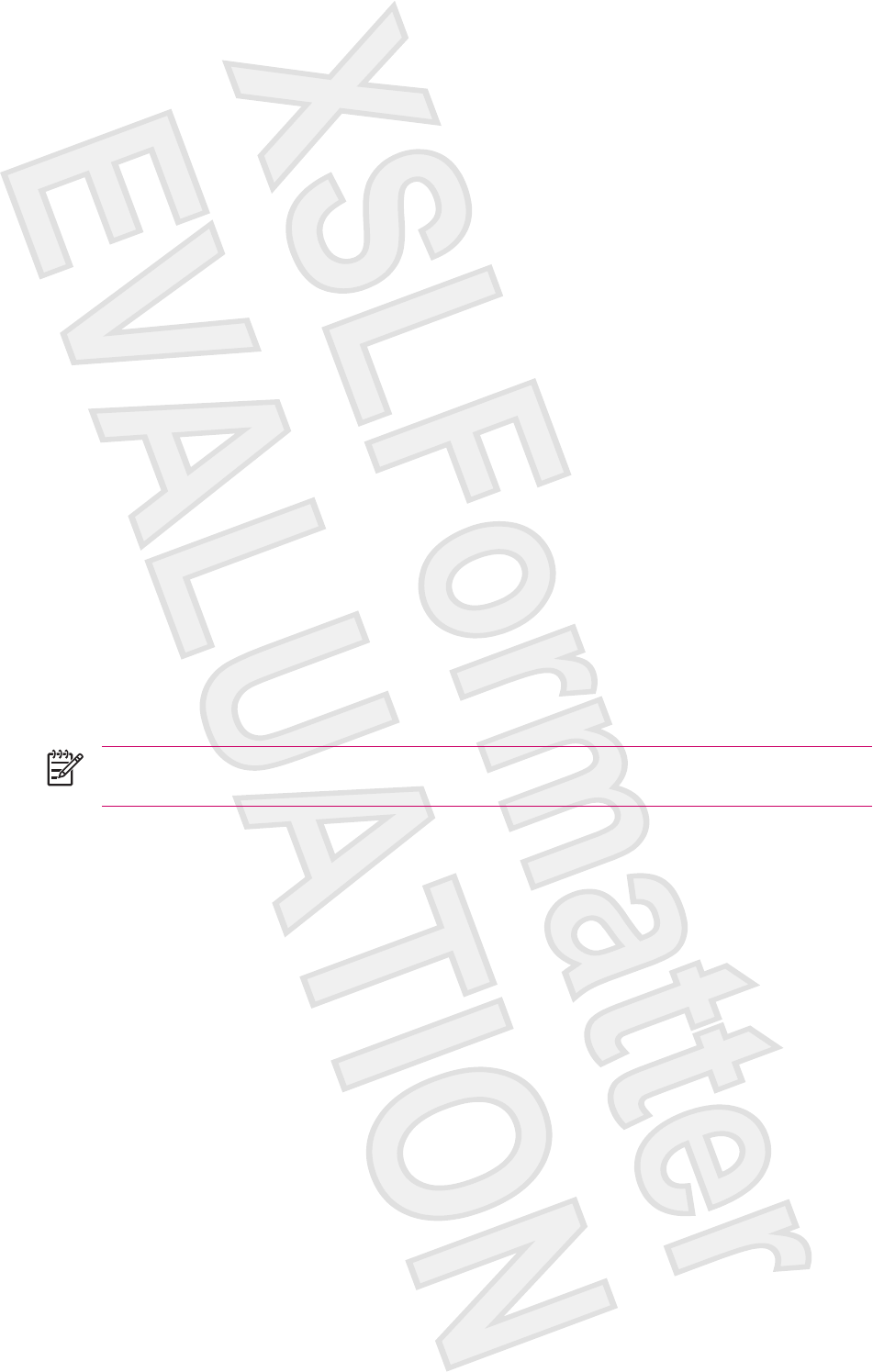
When attendees accept a meeting request, the meeting is automatically added to their calendars. When
their response is sent back to you, your calendar is also updated.
Contacts
Accessing Contacts
Use Contacts to:
●Store phone numbers, e-mail addresses, home addresses, and any other information that relates
to a contact, such as a birthday or an anniversary date.
●Add a picture to a contact.
●Quickly communicate with people.
For easy access to contacts, tap the Contacts softkey on the bottom of the Today screen or tap Start
> Contacts.
Tap a contact in the list for a summary of contact information.
If you use Outlook on your computer, synchronize contacts between your HP iPAQ and your personal
computer.
Creating a Contact
1. Tap Start > Contacts.
2. Tap New and enter the contact information.
3. When finished, tap OK.
NOTE If your contact list has been filtered by a category when you create a contact, that
category is automatically assigned to the new contact.
To include a nickname, title, and more, while creating a contact, tap the Name arrow.
If most of the contacts you create have phone numbers that begin with the same area code, in Contacts,
tap Menu > Options and enter that area code in the Area code box.
For more information about creating contacts, tap Start > Help on your HP iPAQ.
ENWW Mobile Office 33
Antenna House XSL Formatter (Evaluation) http://www.antennahouse.com/
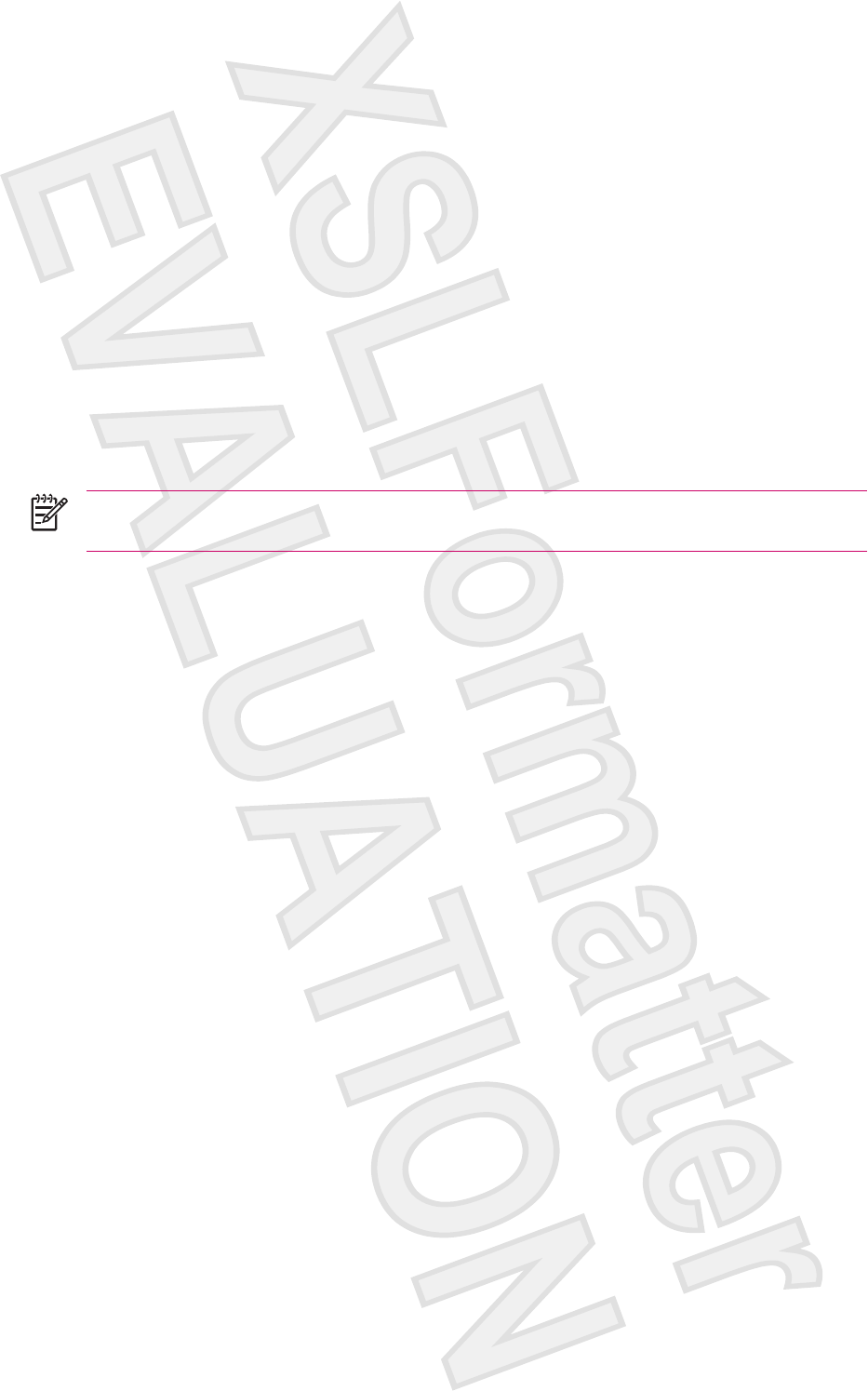
Finding a Contact
To find a contact on a long list:
1. Tap Start > Contacts.
2. If you are not in Name view, tap Menu > View By > Name.
3. Do one of the following:
●Begin entering a name or phone number in the provided text box until the contact is displayed.
To show all contacts again, tap the text box and clear the text, or tap the arrow to the right of
the text box.
●Use the alphabetical index displayed at the top of the contact list. Tap the tab that corresponds
to the first letter of the contact’s name.
●Filter the list by categories. In the contact list, tap Menu > Filter. Then tap a category you've
assigned to a contact. To show all contacts, select All Contacts.
NOTE To search for a contact by entering a name or phone number, or by using the alphabetical
index, you must be in Name view.
Tasks
Creating a Task
Easily create to-do tasks in the Task list.
1. Tap Start > Programs > Tasks.
2. Tap Menu > New Task, enter a subject for the task, and fill in information such as start and due
dates.
3. When finished, tap OK.
For more information, refer to Additional Product Information located on the Getting Started CD.
Locating a Task
When the task list is long, display a subset of the tasks or sort the list to quickly find a specific task.
1. Tap Start > Programs > Tasks.
2. In the task list, do one of the following:
●Sort the list. Tap Menu > Sort By, and tap a sort option.
●Filter the list by category. Tap Menu > Filter, and tap the category to display.
34 HP iPAQ Product Information Guide ENWW
Antenna House XSL Formatter (Evaluation) http://www.antennahouse.com/
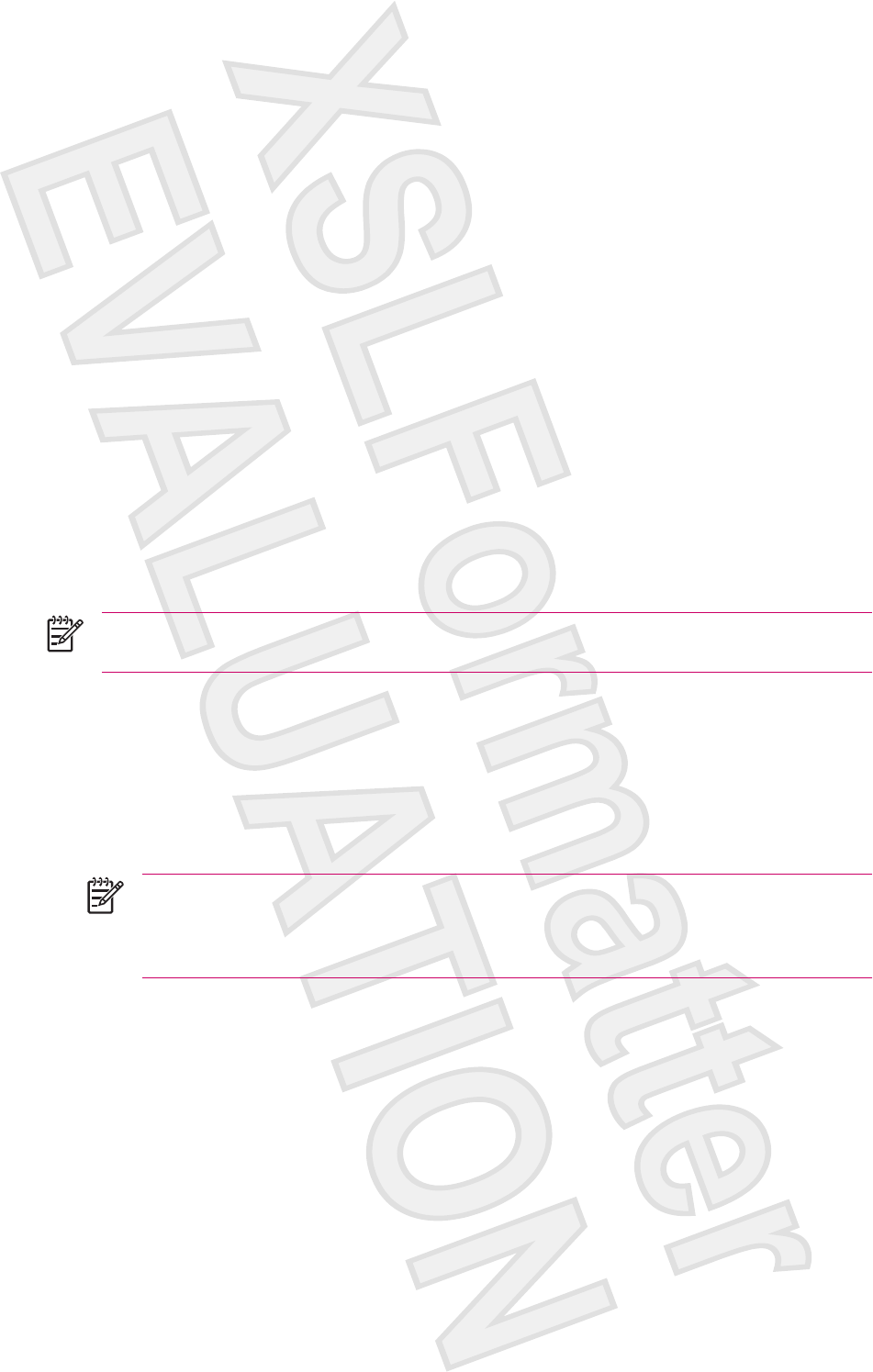
E-mail
Different Ways to Access E-mail Messages
When using Messaging, you can send and receive e-mail messages several ways:
●Synchronize Outlook e-mail with your personal computer
Tap Start > Messaging to use your Outlook e-mail address.
●Microsoft Exchange 2003
Exchange enables you to wirelessly synchronize your Inbox, Calendar, and Contacts to remotely
check appointments and other information. For more information about Exchange, contact your IT
administrator.
●Messaging & Security Feature Pack (MSFP) with Microsoft Exchange 2003 Service Pack 2
Push technology keeps Outlook Mobile up-to-date by delivering Inbox, Calendar, Contacts, and
Tasks list quickly and directly to your HP iPAQ. For more information about Connect to Mobile
Business E-mail using Exchange Server 2003, contact your IT administrator.
●Internet e-mail messages
Use the e-mail address you received from your Internet Service Provider (ISP) or your employer.
NOTE Some of the messaging applications may vary and are available only on select HP iPAQ
models.
Setting up an E-mail Account on an Exchange Server
Synchronize directly with an Exchange Server using a connection to a wireless network or a personal
computer.
To set up e-mail on an Exchange server:
1. Tap Start > Programs > ActiveSync.
NOTE If a screen displays several messages, click on the link that reads If your company
supports synchronizing directly with its Exchange Server you can set up your HP
iPAQ to synchronize with it, then follow the series of steps to synchronize your e-mail
account with the Exchange Server. Otherwise, continue with the steps below.
2. Tap Menu > Configure Server.
If you have not set up a synchronization server link, the following message is displayed: Add Server
Source.
3. In the Server address box, enter the name of the server running Exchange 2003.
4. Select the This server requires an encrypted (SSL) connection check box if required by your
IT department.
Most companies require this option, and if this box is not checked, you cannot sync with your
company Exchange Server.
5. Tap Next.
ENWW Mobile Office 35
Antenna House XSL Formatter (Evaluation) http://www.antennahouse.com/
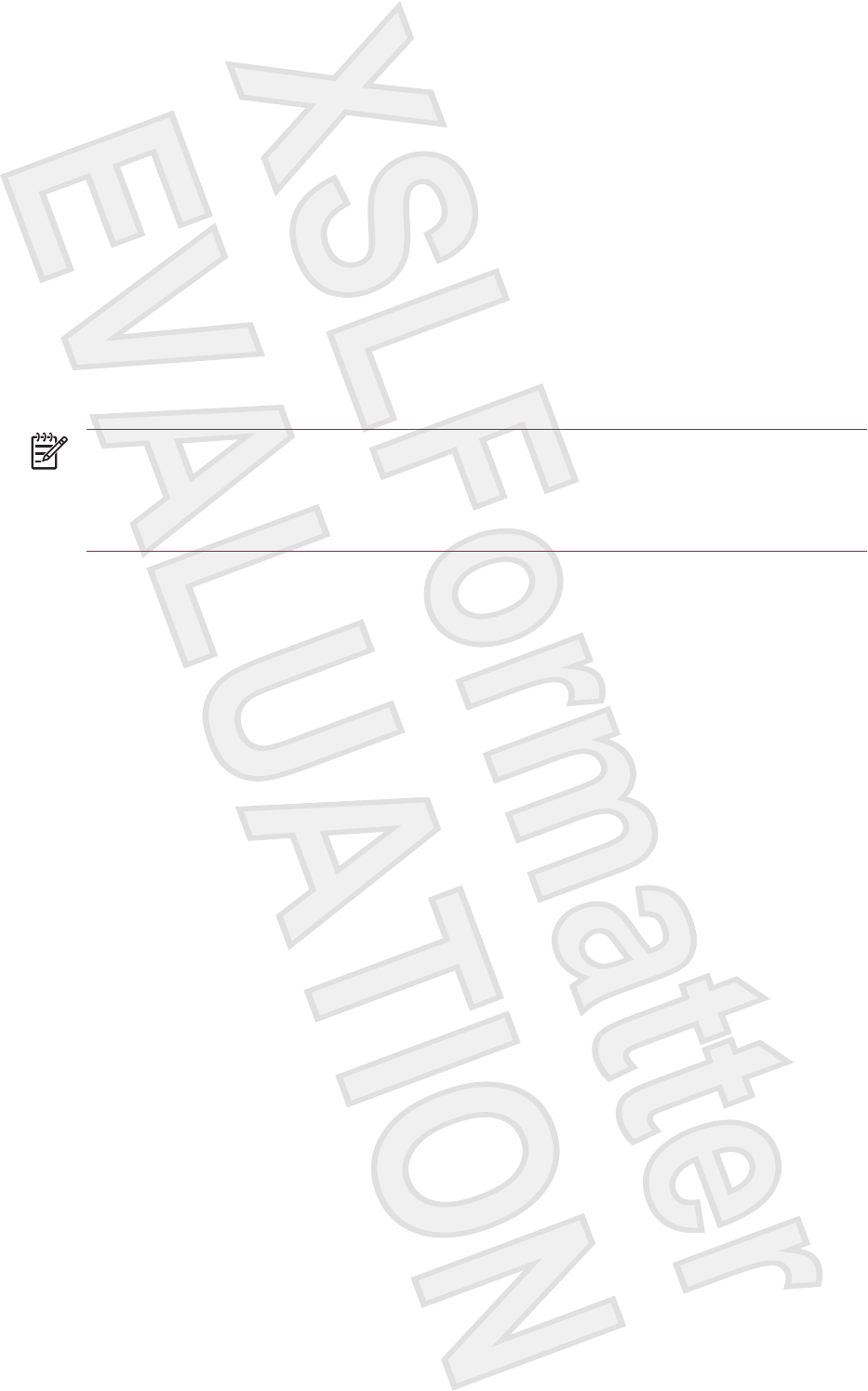
6. Enter your name, password, and domain, and then tap Next.
7. Select the Save password text box if you want to enable automatic sync.
8. To change the rules for resolving synchronization conflicts, tap Advanced.
9. Select the check boxes for the types of information items that you want to synchronize with
Exchange Server.
10. To change available synchronization settings, select the type of information and tap Settings.
11. Tap Finish.
You can set up your HP iPAQ to synchronize with Exchange Server over a wireless network or through
a cable or Bluetooth connection to a personal computer. You must have the following information to
sync wirelessly: server name, user name, password, and domain name.
NOTE Synchronizing directly with Exchange Server is supported only on Windows Mobile-
powered Pocket PC 2002 or later.
By clicking Tools > Options, you can determine whether an information type is synchronized
with a personal computer or with Exchange Server.
Setting up a POP3, HTTP, or IMAP4 E-mail Account
To send and receive mail, you need to set up an e-mail account with an Internet Service Provider (ISP)
or have an account that you access using a virtual private network (VPN) server connection (typically
a work account).
Be sure you have the proper plan with your wireless service provider and the connections have been
set up correctly.
To set up an e-mail account on your HP iPAQ:
1. Tap Start > Messaging.
2. Tap Menu > Tools > New Account.
3. Enter your e-mail address, and tap Next.
Auto configuration attempts to download necessary e-mail server settings so that you do not need
to enter them manually.
4. Once Auto configuration has finished, tap Next.
5. Enter your name (the name you want displayed when you send e-mail) and your password.
If Auto configuration is successful, your user name is already entered. Tap Next, then Finish to complete
setting up your account, or tap Options to access additional settings. For example:
●Change the time intervals for downloading new messages
●Download attachments
●Limit the number of messages that are downloaded
If Auto configuration is unsuccessful, tap Start > Help and search on email.
36 HP iPAQ Product Information Guide ENWW
Antenna House XSL Formatter (Evaluation) http://www.antennahouse.com/
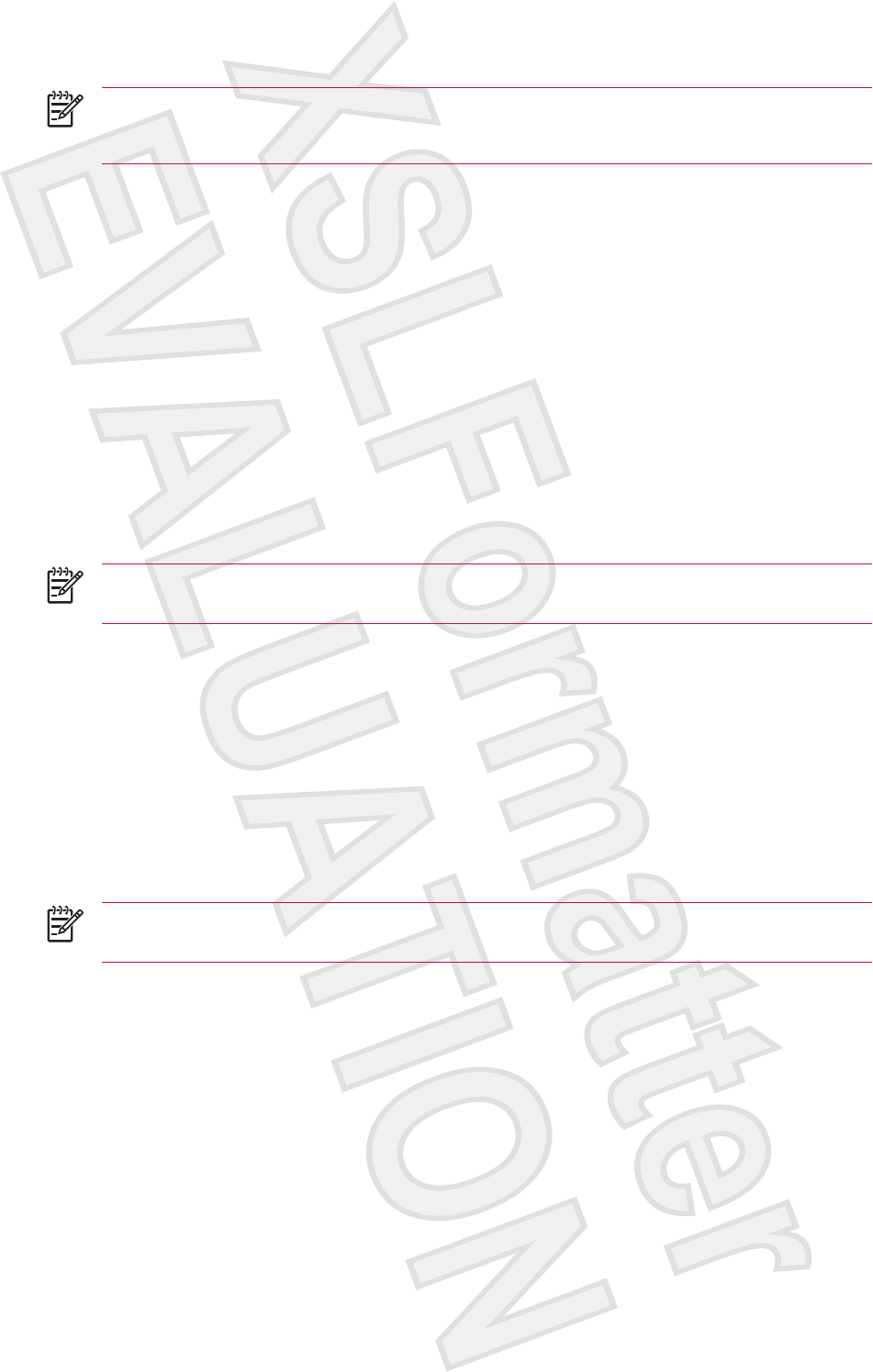
NOTE You can set up several e-mail accounts in addition to your Outlook E-mail account.
You cannot add a new account while connected. Tap Menu > Stop Send/Receive to disconnect.
Composing and Sending Outlook E-mail Messages
To compose and send a message:
1. Tap Start > Messaging. Outlook E-mail is displayed.
2. Tap New. An Outlook E-mail text box is displayed.
3. Enter the e-mail address or phone number of one or more recipients, separating them with a
semicolon. To access addresses and phone numbers from Contacts, tap To.
4. Enter your message. To quickly add a canned message, tap Menu > My Text and tap a desired
message.
5. To check spelling, tap Menu > Spell Check.
6. Tap Send. If you are working offline, your message is moved to the Outbox folder and is sent the
next time you connect.
NOTE Tap the Inbox drop-down arrow to access other Outlook folders such as Drafts, Outbox,
and Sent Items.
Replying to or Forwarding an Outlook E-mail Message
To reply to or forward a message:
1. Tap on the message to open it, and then tap Menu > Reply, Reply All, or Forward.
2. Enter your response. To quickly add common messages, tap Menu > My Text and tap a desired
message.
3. To check spelling, tap Menu > Spell Check.
4. Tap Send.
NOTE To keep the original text with the outgoing message, tap Menu > Tools > Options then
tap the Message tab. You must check the When replying to e-mail, include body option.
Sorting the Message List
To sort the message list:
1. In the message list, tap the sort list (labeled Received by default) and select an option.
2. Select the option again to reverse the sort order (ascending and descending).
Internet Explorer Mobile
Use Internet Explorer Mobile to view and download web pages as well as browse web sites through
synchronization, or when connected to the Internet.
ENWW Mobile Office 37
Antenna House XSL Formatter (Evaluation) http://www.antennahouse.com/
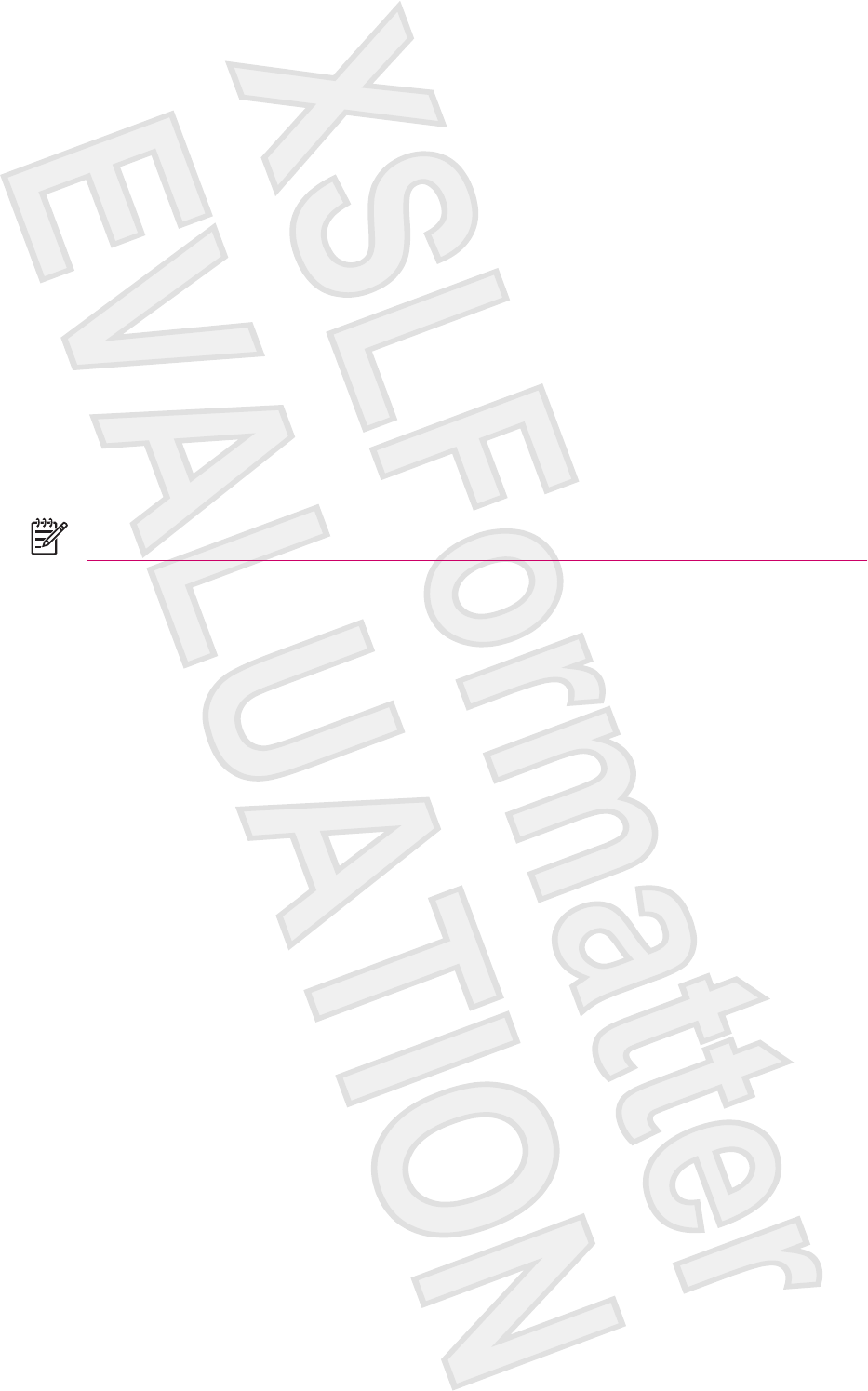
Before connecting to the Internet, setting up a wireless connection or network card, obtain the following:
●Internet Service Provider (ISP) or wireless service provider
●ISP server phone number or access point
●User name and password
To access Internet Explorer Mobile, tap Start > Internet Explorer.
Word Mobile
You can create and edit documents and templates in Word Mobile. You can also save the documents
and templates as .doc, .rtf, .txt, and .dot files.
With Word Mobile:
●Edit Word documents and templates created on your computer.
●Open and edit Pocket Word (*.psw) documents.
NOTE If you edit a file, save it in .doc, .rtf, .txt, or .dot format.
To access Word Mobile, tap Start > Programs > Word Mobile.
Excel Mobile
Create and edit workbooks and templates on your HP iPAQ with Excel Mobile.
With Excel Mobile:
●View, edit, and create charts and graphics, which can be embedded as objects in a worksheet or
placed on a separate worksheet.
●Enter formulas and functions, and then filter data to see the subset of information you want.
●Split panes to view different parts of a worksheet at the same time.
●Freeze the top and left-most panes in a worksheet to keep row and column labels or other data
visible as you scroll through a sheet.
To access Excel Mobile, tap Start > Programs > Excel Mobile.
PowerPoint Mobile
Use PowerPoint Mobile to open and view slide show presentations created on your computer.
With PowerPoint Mobile:
●Open a presentation from an e-mail message.
●Download a presentation from a file share or the Internet.
●Copy a presentation to your HP iPAQ via a storage card.
●Obtain a presentation by synchronizing with your computer.
38 HP iPAQ Product Information Guide ENWW
Antenna House XSL Formatter (Evaluation) http://www.antennahouse.com/
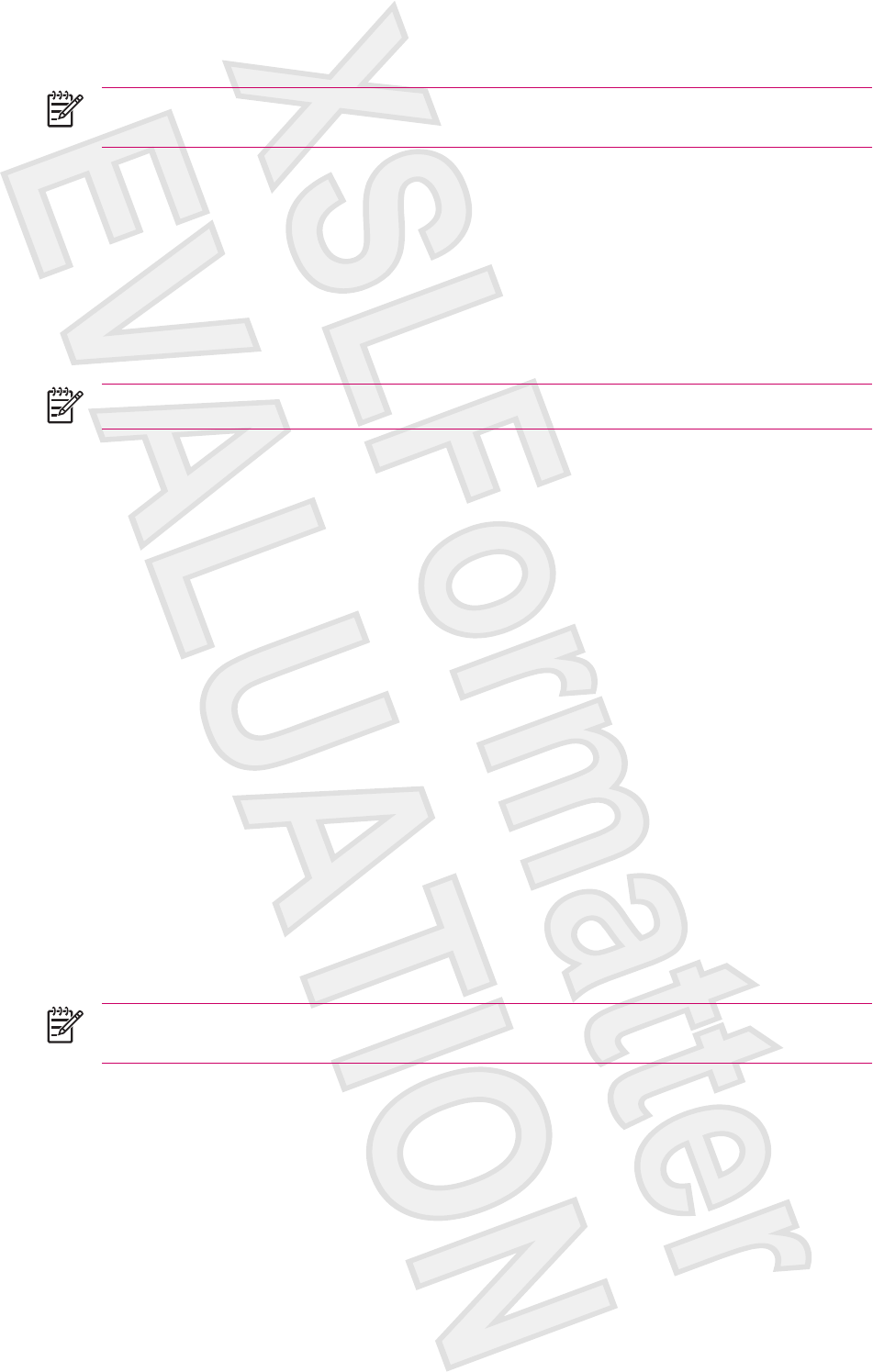
NOTE Slide shows created in *.ppt or *.pps format with PowerPoint ‘97 and later can be viewed
on your device.
PowerPoint features that are not supported on your HP iPAQ include:
●Notes: Notes written for slides are not visible.
●Rearranging or editing slides: PowerPoint Mobile is a viewer only.
To access PowerPoint Mobile, tap Start > Programs > PowerPoint Mobile.
WLAN
NOTE WLAN is available on rx5900 series models only.
With wireless access, cables are not needed to connect your HP iPAQ to the Internet. Instead, access
points transmit data to and from your wireless device. Your HP iPAQ can connect to an 802.11b/g WLAN
or connect directly to other WLAN-enabled devices. With WLAN, you can:
●Access the Internet
●Send and receive e-mail
●Access corporate network information
●Use virtual private networks (VPNs) for secure remote access
●Use hotspots for wireless connectivity
Turning WLAN On or Off
To turn WLAN on or off:
1. Tap Start > Today > iPAQ Wireless.
2. Tap the WLAN icon on the iPAQ Wireless screen.
When WLAN is on:
●The WLAN icon on the iPAQ Wireless screen turns amber or green.
●The wireless light-emitting diode (LED) on your HP iPAQ flashes blue.
NOTE Even though the indicator is blue to indicate WLAN is turned on, it does not necessarily
mean a connection has been established with another device or access point.
Turn WLAN off when you are not using it by tapping the WLAN icon again.
When WLAN is off, the WLAN icon turns gray, and the blue LED turns off.
ENWW WLAN 39
Antenna House XSL Formatter (Evaluation) http://www.antennahouse.com/
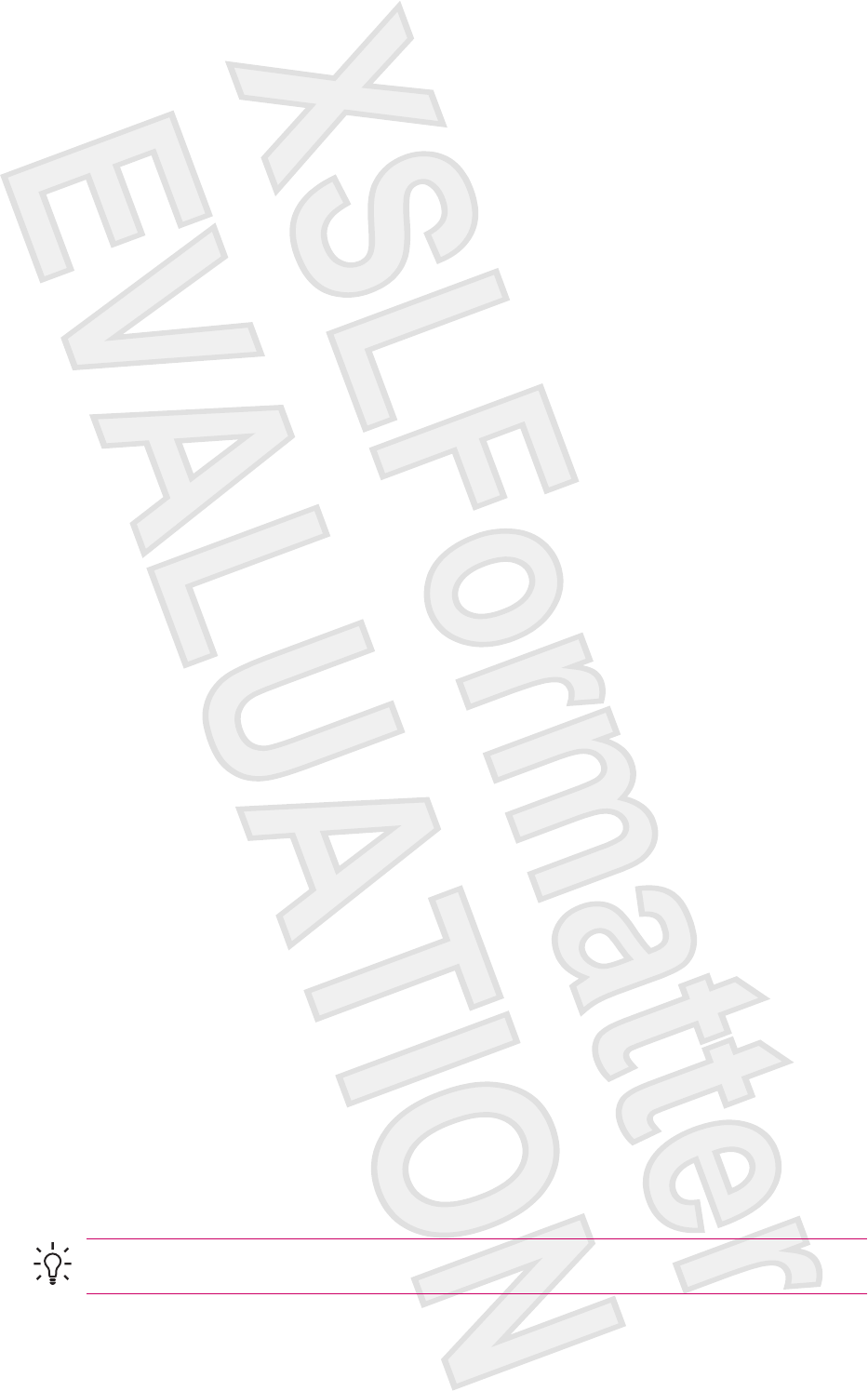
Searching for WLAN Networks to Access
Networks that have been already configured are preferred networks. Choose whether to connect only
to preferred networks or to have your HP iPAQ search for and connect to any available network
(preferred or not).
1. Tap Start > Today > iPAQ Wireless.
2. Tap the WLAN icon to turn on WLAN.
3. Tap View WLAN Networks.
4. In the Networks to access box, tap the type of network to connect to (All Available, Only access
points, or Only computer-to-computer).
5. Tap the wireless network to which you want to connect.
Configuring Network Security Settings
A wireless network can be added when the network is automatically detected. Or, manually enter the
settings information to add the network. To determine if authentication information is needed, check with
your Network Administrator or Hotspot Service Provider.
1. Tap Start > Today > iPAQ Wireless.
2. Turn on WLAN by tapping the WLAN icon.
3. Tap View WLAN Networks to choose an available network.
4. In Configure Wireless Networks, select the network to configure.
5. To use authentication, tap the Network Key tab and select the authentication method from the
Authentication list.
6. To use data encryption, select an encryption method from the Data Encryption list.
7. To automatically use a network key, tap The key is automatically provided. Otherwise, enter the
network key manually.
Bluetooth
Your HP iPAQ comes with built-in Bluetooth which is a short-range wireless communications technology.
Devices with Bluetooth capabilities can exchange information over a distance of about 30 feet (10
meters) without requiring a physical connection.
Use Bluetooth to:
●Transfer information, such as files, appointments, tasks, and contact cards, between devices that
have Bluetooth capabilities.
●Print data to a Bluetooth-designated printer.
●Use a Bluetooth service. Once you connect to another device or computer using Bluetooth, you
can locate and use any of the services available on that device.
Tip Your HP iPAQ may include additional Bluetooth features.
40 HP iPAQ Product Information Guide ENWW
Antenna House XSL Formatter (Evaluation) http://www.antennahouse.com/
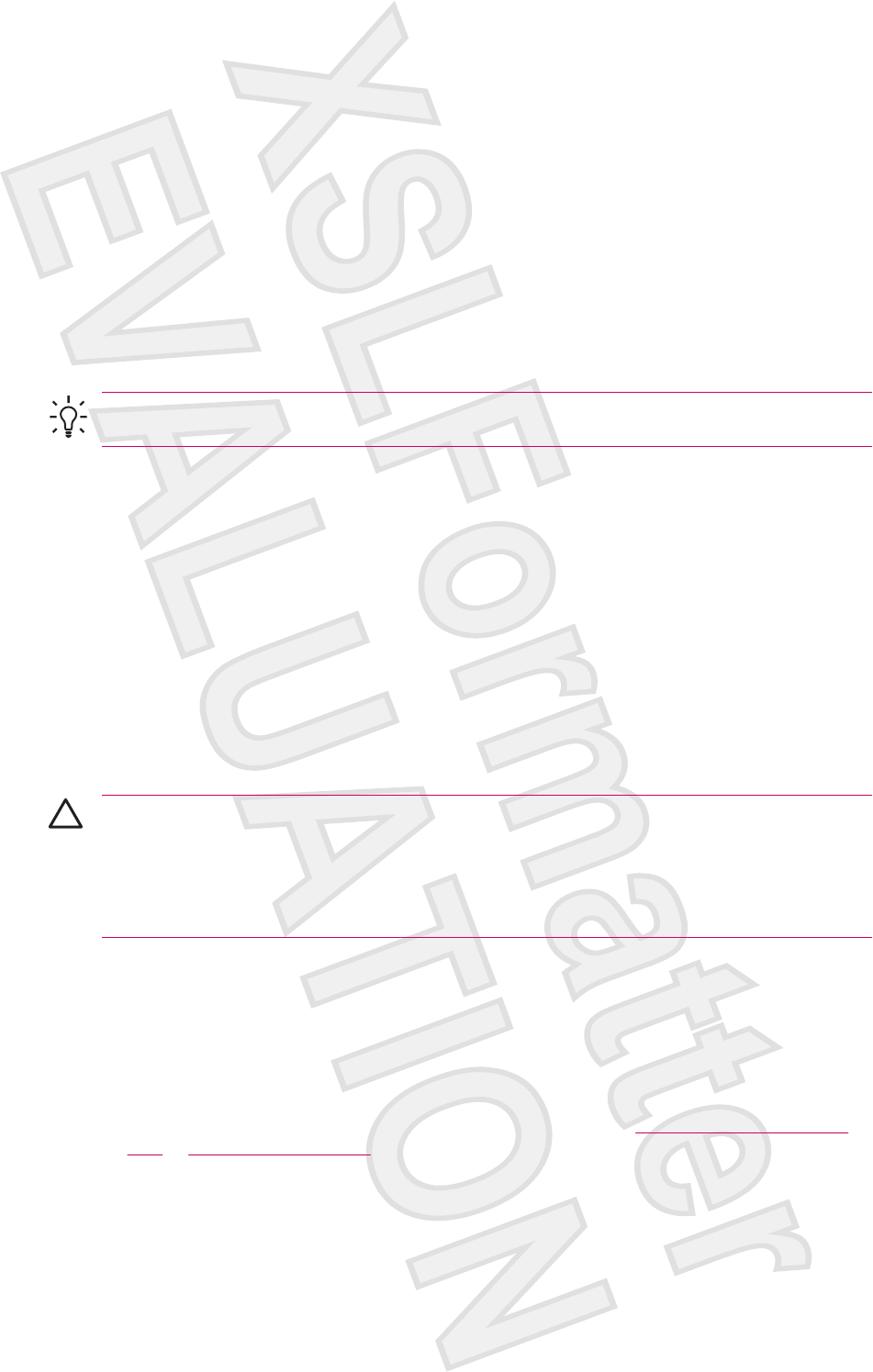
For more information, refer to Additional Product Information located on the Getting Started CD.
Turning Bluetooth On or Off
To turn on Bluetooth:
1. Tap Start > Today > iPAQ Wireless.
2. On the iPAQ Wireless screen, tap the Bluetooth icon.
When Bluetooth is turned on, the wireless LED on your HP iPAQ flashes blue.
To turn off Bluetooth, tap the Bluetooth icon again. When Bluetooth is turned off, the Bluetooth LED
turns off and no incoming or outgoing Bluetooth connections are possible.
Tip To save battery power, turn Bluetooth off when you are not using it.
Connecting to a Bluetooth Headset
You can use a Bluetooth headset (or other Bluetooth hands-free device) with your HP iPAQ when you
create a partnership between them.
1. Make sure that the two devices are turned on, discoverable, and within close range.
2. Tap Start > Today > iPAQ Wireless > Bluetooth tab.
3. Tap Bluetooth Connections > New.
4. Select Hands-free/Headset setup and follow the on-screen instructions.
Protecting the HP iPAQ Screen from Cracking or Damage
CAUTION The screen of your HP iPAQ is made of glass and can be damaged or broken by
drops, impacts, or pressure.
To reduce the risk of damage to the internal components, do not spray liquid directly on the
screen, or allow excess liquid to drip inside your HP iPAQ. Using soap or other cleaning products
on the screen might discolor the finish and damage it.
●Observe the following practices to protect the screen of your HP iPAQ from damage:
●Do not sit on your HP iPAQ.
●When transporting your HP iPAQ in a purse, pocket, briefcase, etc., ensure the device does
not get compressed, bent, dropped, or hit.
●When not in use, use the protective screen cover (if one is available) on your HP iPAQ and
store it in a case. Select from a wide variety of case options at www.hp.com/accessories/
ipaq or www.casesonline.com.
●Do not place anything on top of your HP iPAQ.
●Do not bang your HP iPAQ against hard objects.
ENWW Protecting the HP iPAQ Screen from Cracking or Damage 41
Antenna House XSL Formatter (Evaluation) http://www.antennahouse.com/
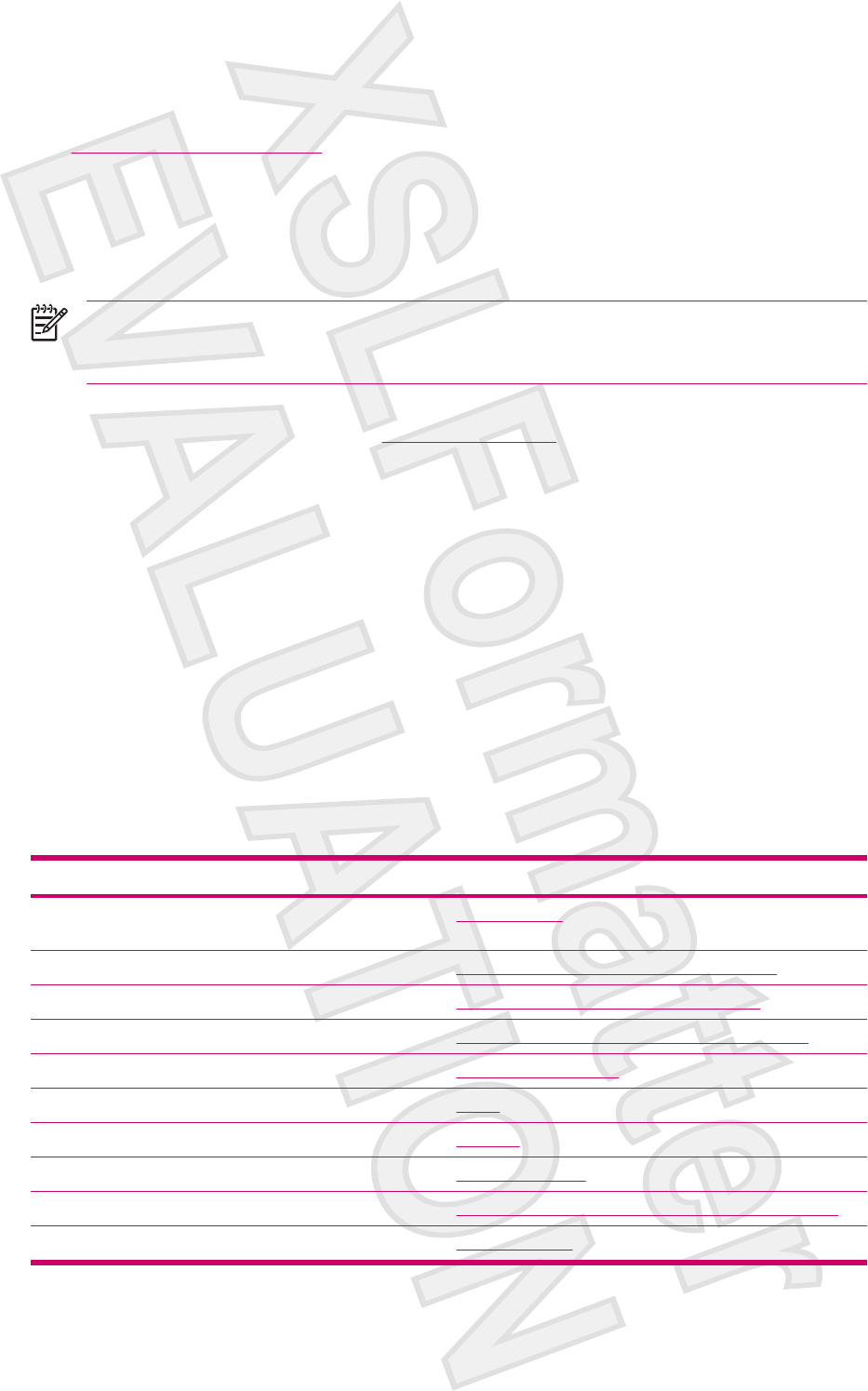
●Never use any device other than the stylus that comes with the HP iPAQ or an approved
replacement to tap or write on the screen. If you lose or break your stylus, order extras at
www.hp.com/accessories/ipaq.
●Clean your HP iPAQ by wiping the screen and the exterior with a soft, damp cloth lightly moistened
only with water.
Obtaining Services for a Cracked or Damaged Screen
NOTE HP is not responsible for damage that occurs as a result of failure to follow the
instructions that came with the HP branded product. Refer to the warranty document included
with your HP iPAQ for more information.
If you have a nonwarranty event occur such as a damaged or cracked screen and want your device
repaired, contact HP Customer Support at www.hp.com/support for service. However, contacting HP
customer service on a nonwarranty event results in a charge for the repair.
Additional Guidelines for Using Your HP iPAQ
●Disconnect all external devices.
●Take the AC adapter and charger adapter with you.
●Keep your HP iPAQ in a protective case and keep it in your carry-on luggage.
●For air travel, be sure to turn off Bluetooth and WLAN. To turn off all wireless features, tap Start
> Today > iPAQ Wireless.
●When traveling internationally, be sure you have the plug adapter appropriate for the country you
are visiting.
Frequently Asked Questions
How Do I… Find information here…
Install Microsoft ActiveSync and create an ActiveSync
partnership?
Synchronization
Troubleshoot ActiveSync? Troubleshooting Help for Synchronization Issues
Locate the serial and model number for my HP iPAQ? Finding the Serial Number and Model Number
Set up an e-mail account? Setting up an E-mail Account on an Exchange Server
Perform a soft or factory reset? Resetting Your HP iPAQ
Use wireless connections?* WLAN
Use built-in Bluetooth technology? Bluetooth
Conserve battery power? Battery Saving Tips
Protect my HP iPAQ from screen damage and cracking? Protecting the HP iPAQ Screen from Cracking or Damage
Start the GPS software? HP Quick Launch
42 HP iPAQ Product Information Guide ENWW
Antenna House XSL Formatter (Evaluation) http://www.antennahouse.com/

NOTE WLAN is available on rx5900 series models only.
Finding More Information
For information on… See this source…
Using your HP iPAQ Additional Product Information on the Getting Started CD.
Connecting to and synchronizing with a computer ActiveSync Help on your computer. To view Help, start
ActiveSync, then click Help > Microsoft ActiveSync Help.
Troubleshooting on ActiveSync connections ActiveSync Troubleshooting on your computer. From
ActiveSync, click Help > Microsoft ActiveSync Help >
Troubleshooting.
Programs that are on your HP iPAQ Getting Started CD and Help located on the HP iPAQ. From
the Start menu, tap Help.
Safety precautions Important Safety Information on the Getting Started CD.
Web sites optimized for your HP iPAQ www.hp.com/go/ipaqmobile
Accessory products www.hp.com/accessories/ipaq
Warranty information www.hp.com/go/handheldwarranty
ENWW Finding More Information 43
Antenna House XSL Formatter (Evaluation) http://www.antennahouse.com/
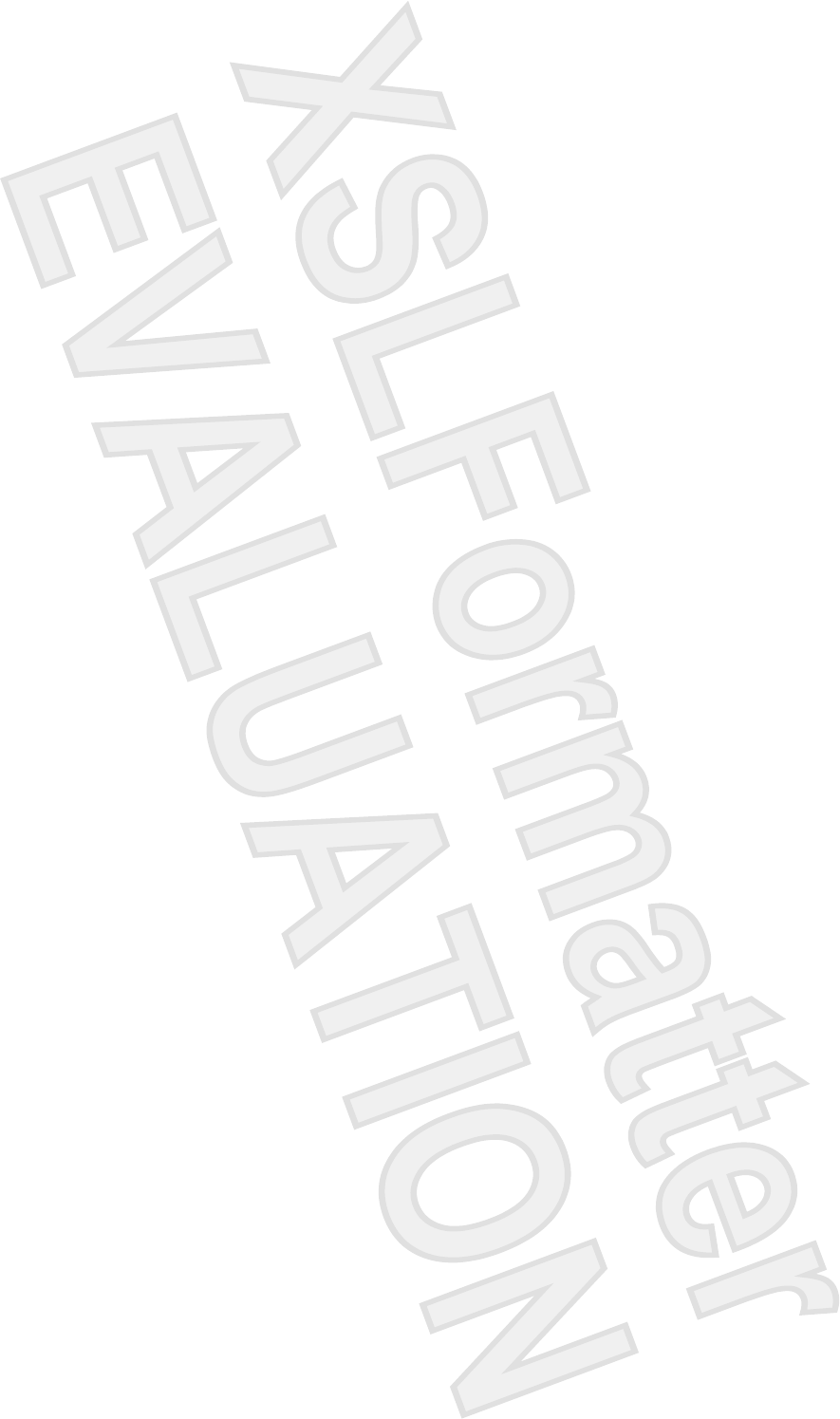
© Copyright 2006 Hewlett-Packard
Development Company, L.P.
Microsoft, Windows, the Windows logo,
Outlook, and ActiveSync are trademarks of
Microsoft Corporation in the U.S. and other
countries.
HP iPAQ Products are Powered by
Microsoft® Windows Mobile
TM
Version 5.0
for Pocket PC.
SD Logo is a trademark of its proprietor.
Bluetooth® is a trademark owned by its
proprietor and used by Hewlett-Packard
Development Company, L.P. under license.
All other product names mentioned herein
may be trademarks of their respective
companies.
The information contained herein is subject
to change without notice. The only
warranties for HP products and services are
set forth in the express warranty statements
accompanying such products and services.
Nothing herein should be construed as
constituting an additional warranty. HP shall
not be liable for technical or editorial errors
or omissions contained herein.
This document contains proprietary
information that is protected by copyright. No
part of this document may be photocopied,
reproduced, or translated to another
language without the prior written consent of
Hewlett-Packard Development Company,
L.P.
First Edition September 2006
Document Part Number: 433176-xx1
Antenna House XSL Formatter (Evaluation) http://www.antennahouse.com/
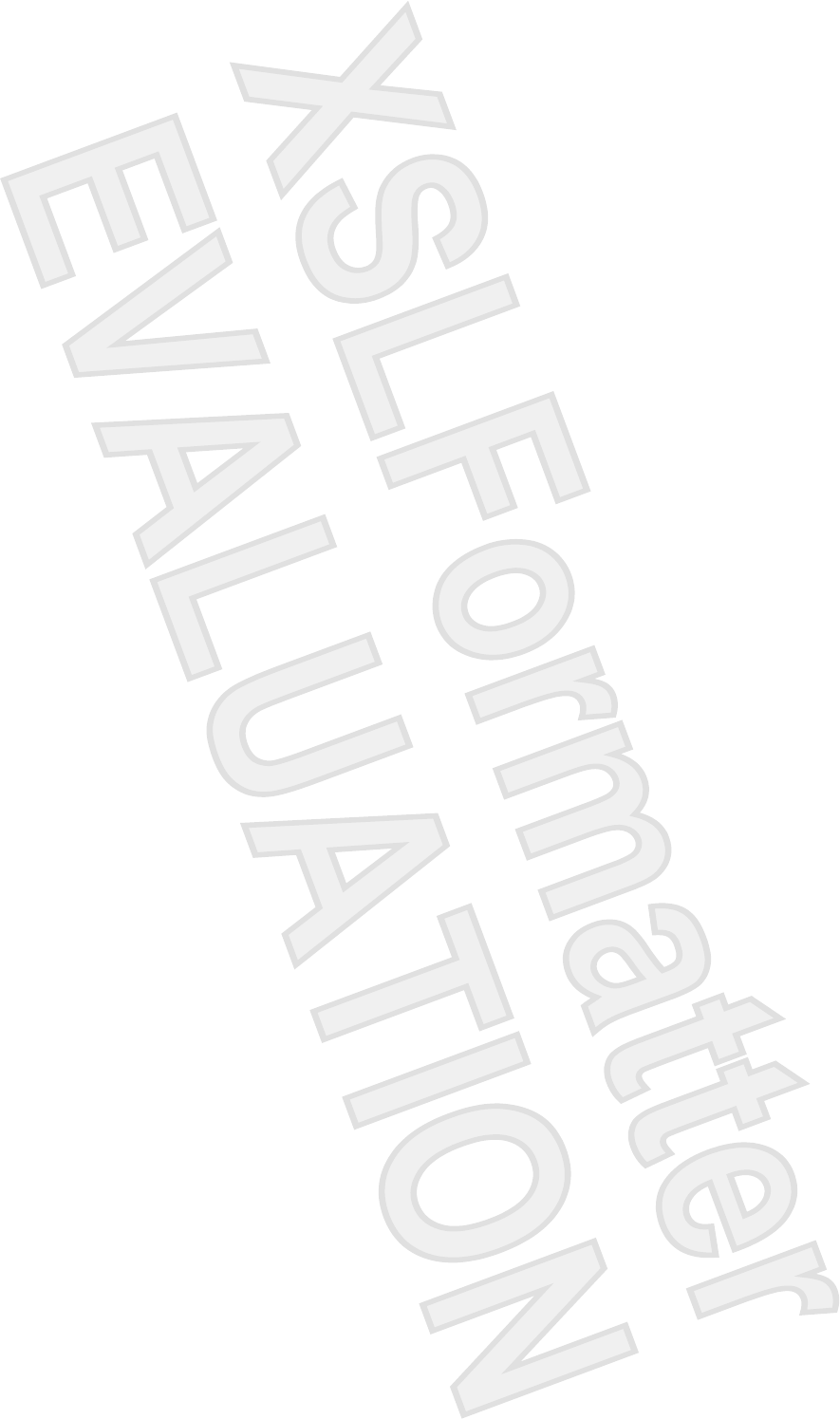
Table of contents
1 Registering the iPAQ
Registering your HP iPAQ .................................................................................................................... 1
2 GPS
GPS General Information ..................................................................................................................... 3
Verifying Compatibility .......................................................................................................................... 4
Configuring My GPS Software to Connect to My HP iPAQ's GPS Receiver ....................................... 5
Managing GPS Automatically ............................................................................................................... 6
Identifying the COM Port for My GPS Receiver ................................................................................... 7
Identifying Your HP iPAQ's Embedded Receiver ................................................................................. 8
Using an External Antenna with your GPS Receiver ........................................................................... 9
Losing The GPS Signal While in My Car ............................................................................................ 10
Losing the GPS Signal Frequently ..................................................................................................... 11
Common Reasons For Interference When Using GPS Software ....................................................... 12
3 Travel Assistant
WorldMate Travel Assistant Standard Edition .................................................................................... 13
Screen Navigation .............................................................................................................................. 13
Clocks ................................................................................................................................................. 14
Using the Alarm .................................................................................................................................. 15
World Map .......................................................................................................................................... 16
Weather Service ................................................................................................................................. 17
City List ............................................................................................................................................... 18
Currency Converter Service ............................................................................................................... 19
Updating Currency Rates ................................................................................................................... 20
Measurement Converter Service ........................................................................................................ 21
Country and Area Codes .................................................................................................................... 22
Clothing Sizes .................................................................................................................................... 23
Packing List ....................................................................................................................................... 24
WorldMate's ActiveSync Settings ....................................................................................................... 25
4 Connections
Connections ....................................................................................................................................... 27
Connecting to Intranet URLs .............................................................................................................. 28
Changing an Intranet URL .................................................................................................................. 29
Setting Up an Automatic Choice for Connections .............................................................................. 30
Setting Up Proxy Server Settings ....................................................................................................... 31
Configuring Advanced Proxy Settings ................................................................................................ 32
Using Advanced Connection Settings ................................................................................................ 33
ENWW iii
Antenna House XSL Formatter (Evaluation) http://www.antennahouse.com/
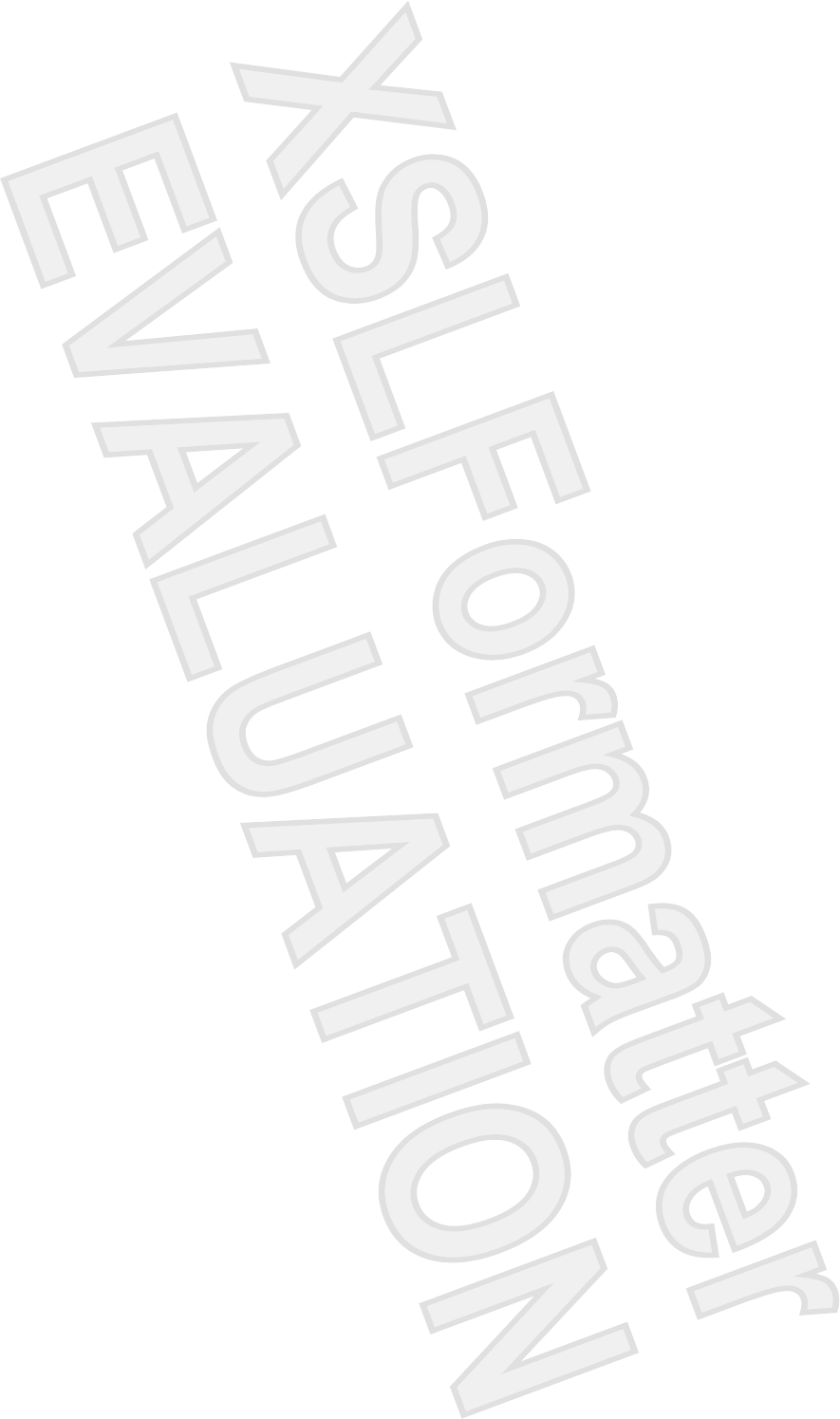
Setting Up a VPN Server Connection ................................................................................................ 34
Changing a Connection Group Name ................................................................................................ 35
Ending a Connection .......................................................................................................................... 36
Wi-Fi ................................................................................................................................................... 37
Wi-Fi .................................................................................................................................. 37
Wi-Fi Terms ....................................................................................................................... 37
Automatically Connecting to a Wi-Fi Network .................................................................... 38
Manually Connecting to a Wi-Fi Network ........................................................................... 38
Finding an IP Address ....................................................................................................... 38
Deleting a Wireless Network .............................................................................................. 39
Configuring 802.1x Authentication Settings ....................................................................... 39
Bluetooth ............................................................................................................................................ 40
Bluetooth Terms ................................................................................................................ 40
Working with Bluetooth Manager ....................................................................................... 40
Connecting to a Computer using Bluetooth ....................................................................... 41
Bluetooth Device Profiles ................................................................................................... 41
Creating, Ending, and Accepting a Bluetooth Partnership ................................................. 42
Renaming a Bluetooth Partnership .................................................................................... 42
Making a Device Discoverable .......................................................................................... 43
Opening Bluetooth Settings ............................................................................................... 43
Setting Up an Incoming or Outgoing Bluetooth Serial (COM) Port .................................... 43
5 HP Photosmart Mobile
HP Photosmart Mobile ....................................................................................................................... 45
Attaching a Voice Note to a Picture .................................................................................................... 46
E-mailing Pictures .............................................................................................................................. 47
Viewing a Slideshow .......................................................................................................................... 48
6 HP Photosmart Premier
HP Photosmart Premier ..................................................................................................................... 49
7 Messaging
Understanding Messaging .................................................................................................................. 51
Using Folders ..................................................................................................................................... 52
Synchronizing E-mail .......................................................................................................................... 53
Setting Up Messaging Accounts ........................................................................................................ 54
Receiving Attachments ...................................................................................................... 54
Receiving Meeting Requests ............................................................................................. 54
Creating or Changing a Signature ..................................................................................... 55
Using Messaging ................................................................................................................................ 56
Composing and Sending Messages .................................................................................. 56
Replying to or Forwarding a Message ............................................................................... 56
Adding an Attachment to a Message ................................................................................. 56
Downloading Messages ..................................................................................................... 56
Downloading Messages from a Server .............................................................................. 57
Installing an Online Address Book ..................................................................................... 57
8 Learning The Basics
Entering Owner Information ............................................................................................................... 59
iv ENWW
Antenna House XSL Formatter (Evaluation) http://www.antennahouse.com/
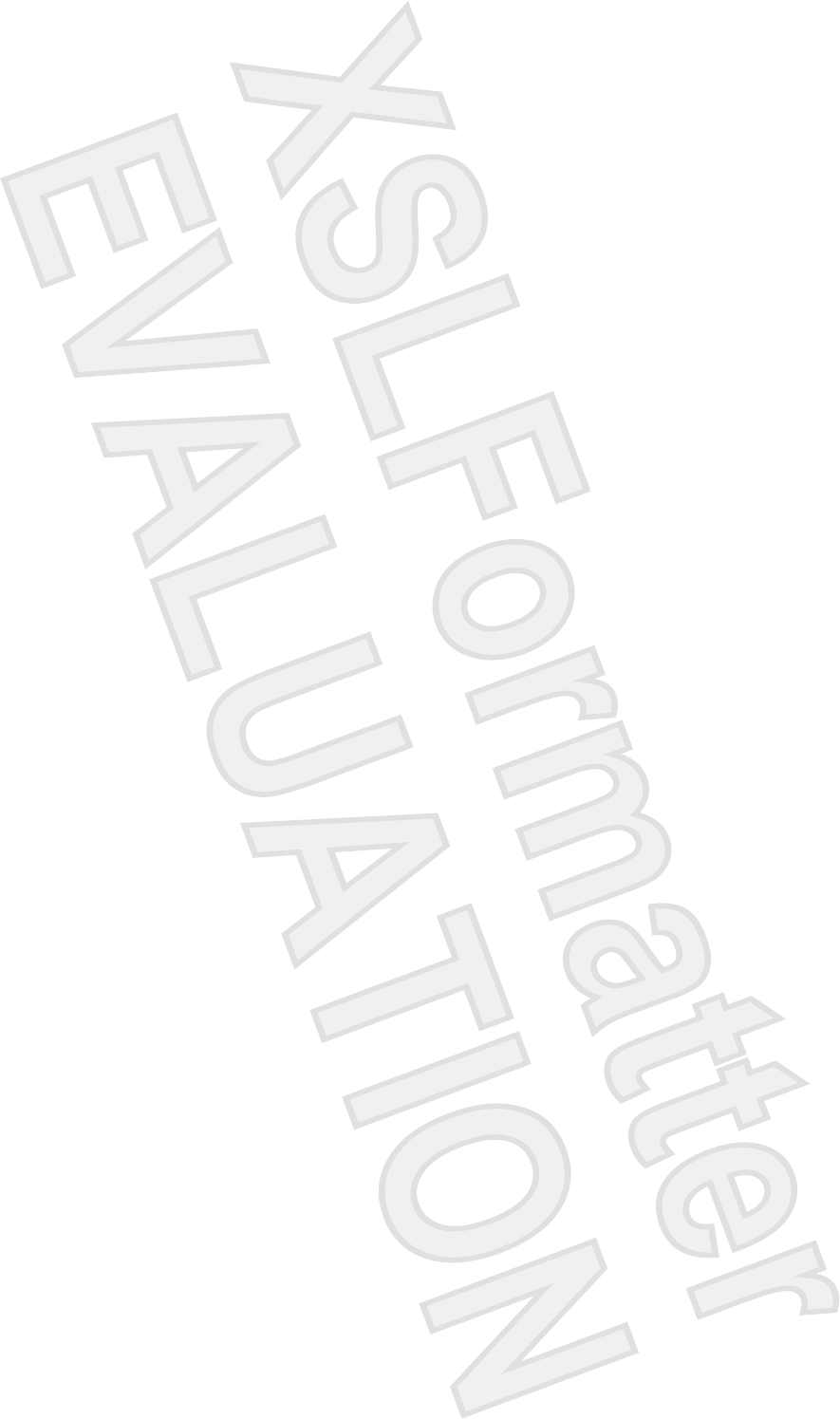
Using TodayPanel Lite ....................................................................................................................... 60
Viewing the Operating System Information ........................................................................................ 61
Changing the Regional Settings ......................................................................................................... 62
Adjusting the Volume ......................................................................................................................... 63
Changing Power Management Settings ............................................................................................. 64
Dimming or Adjusting the Brightness of the Backlight ........................................................................ 65
Installing and Removing Programs .................................................................................................... 66
Opening and Closing Programs ......................................................................................................... 67
Customizing the HP iPAQ .................................................................................................................. 68
Setting Alarms .................................................................................................................................... 69
Shortcut Menus .................................................................................................................................. 70
Showing the Clock in All Programs .................................................................................................... 71
Creating and Assigning a Category .................................................................................................... 72
Adjusting the Speed for Scrolling Through Items in a List .................................................................. 73
9 Calendar
Accessing Calendar ........................................................................................................................... 75
Changing the Display of the Work Week ............................................................................................ 75
Setting a Default Reminder for All New Appointments ....................................................................... 76
Updating an Appointment ................................................................................................................... 77
Canceling an Appointment ................................................................................................................. 78
10 Contacts
Creating a Contact ............................................................................................................................. 79
Finding a Contact ............................................................................................................................... 80
Deleting a Contact .............................................................................................................................. 81
Changing Contact Information ............................................................................................................ 82
Copying a Contact .............................................................................................................................. 83
Sending an E-mail Message to a Contact .......................................................................................... 84
Adding and Removing a Picture ......................................................................................................... 85
Working with the Contact List ............................................................................................................. 86
11 Notes
Writing a Note ..................................................................................................................................... 87
Converting a Handwritten Note to Typed Text ................................................................................... 88
Creating a Copy of a Note .................................................................................................................. 89
12 Storage Cards
Using Storage Cards .......................................................................................................................... 91
Installing a Storage Card .................................................................................................................... 92
Removing a Storage Card .................................................................................................................. 93
Viewing Content of a Storage Card .................................................................................................... 94
13 Synchronizing
Copying (or Transferring) Files ........................................................................................................... 95
Migrating Data from Palm Desktop to Microsoft Windows Mobile 5.0 ................................................ 96
Wireless Synchronization Cost Saving Tips ....................................................................................... 97
ENWW v
Antenna House XSL Formatter (Evaluation) http://www.antennahouse.com/
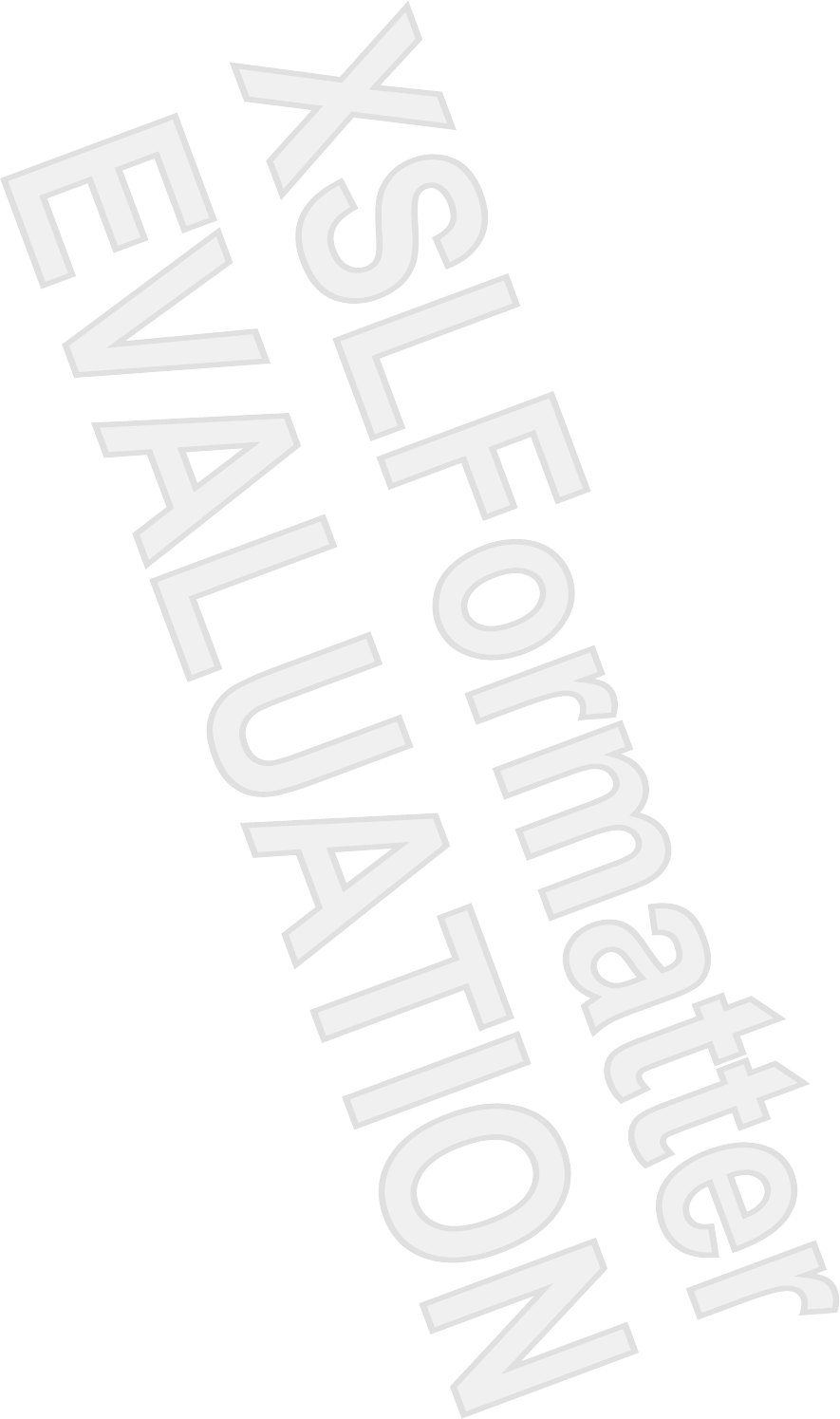
14 Tasks
Setting the Start and Due Dates for a Task ........................................................................................ 99
Showing Start and Due Dates in the Task List ................................................................................. 100
Setting Options for Displaying Tasks on the Today Screen ............................................................. 101
Marking a Task as Completed .......................................................................................................... 102
15 Product Specifications
System Specifications ...................................................................................................................... 103
Physical Specifications ..................................................................................................................... 105
Operating Environment .................................................................................................................... 106
16 Regulatory Notices
Federal Communications Commission Notice ................................................................................. 107
Modifications .................................................................................................................... 107
Cables .............................................................................................................................. 107
Declaration of Conformity for products marked with the FCC logo (United States
only) ................................................................................................................................. 108
Canadian Notice ............................................................................................................................... 108
Avis Canadien .................................................................................................................................. 108
European Union Notice .................................................................................................................... 108
Battery Warning ................................................................................................................................ 109
Battery Recycling ............................................................................................................................. 110
Equipment Warning .......................................................................................................................... 111
Medical Electronic Equipment .......................................................................................................... 112
Wireless Notices ............................................................................................................................... 113
U.S. Regulatory Wireless Notice ..................................................................................... 113
Canadian Regulatory Wireless Notice ............................................................................. 113
Brazilian Notice ................................................................................................................ 113
Japanese Notice ............................................................................................................................... 114
Wireless LAN 802.11b devices ........................................................................................ 114
Wireless LAN 802.11g devices ........................................................................................ 114
Taiwan Notice ................................................................................................................................... 115
Korean Notice ................................................................................................................................... 116
Index ................................................................................................................................................................. 117
vi ENWW
Antenna House XSL Formatter (Evaluation) http://www.antennahouse.com/

1 Registering the iPAQ
Registering your HP iPAQ
When you register your HP iPAQ with Hewlett-Packard, you receive e-mail regarding special offers and
promotions. Take time now to register your HP iPAQ online at http://www.register.hp.com.
If your mailing or e-mail address needs to be updated after registering, enter your user ID and registration
password to edit your online profile at http://www.register.hp.com.
ENWW Registering your HP iPAQ 1
Antenna House XSL Formatter (Evaluation) http://www.antennahouse.com/
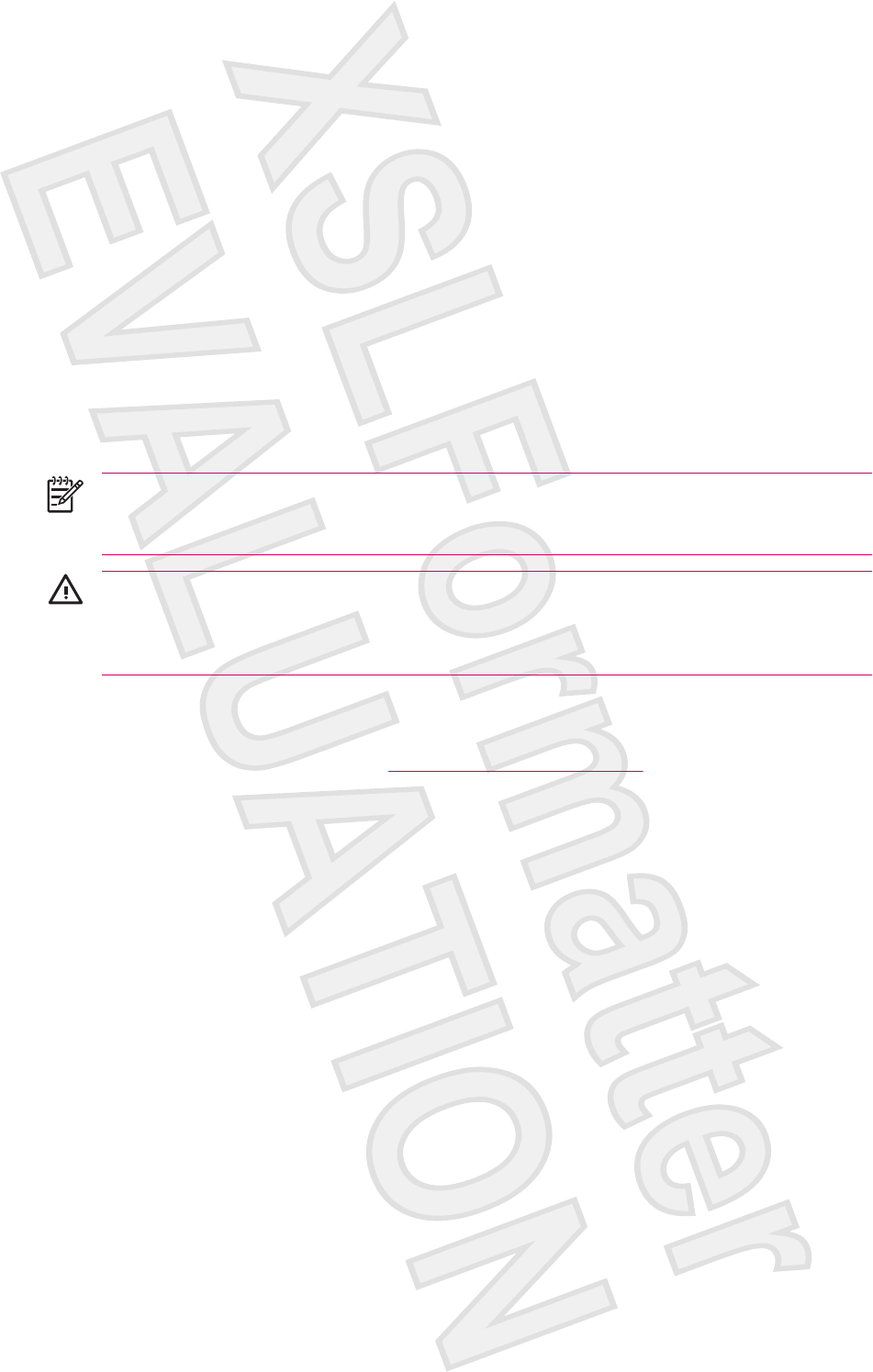
2GPS
GPS General Information
Satellite signal reception for your GPS-enabled HP iPAQ generally requires that you go outdoors to start
the GPS navigation software. Place the HP iPAQ where there is a clear view of the sky or on the
dashboard of a vehicle that does not have thermal glass windshields or windows.
NOTE Interference might take place close to tall buildings or large trees, and under very cloudy
or overcast skies, all of which can block the satellite signal from reaching the HP iPAQ. Try to
avoid these obstructions before using GPS.
WARNING! When using hardware and software navigation aids, in a vehicle or elsewhere, it
is your sole responsibility to place, secure, and use these aids in a manner that will not cause
accidents, personal injury, property damage or obstruct your view. You are solely responsible for
observing safe driving practices. Do not operate this product while driving. Park the vehicle first.
If you are going to use GPS navigation in your vehicle for an extended period of time, charge your HP
iPAQ using the Auto adapter.
For information on GPS accessories, visit www.hp.com/go/ipaqnavigation.
ENWW GPS General Information 3
Antenna House XSL Formatter (Evaluation) http://www.antennahouse.com/
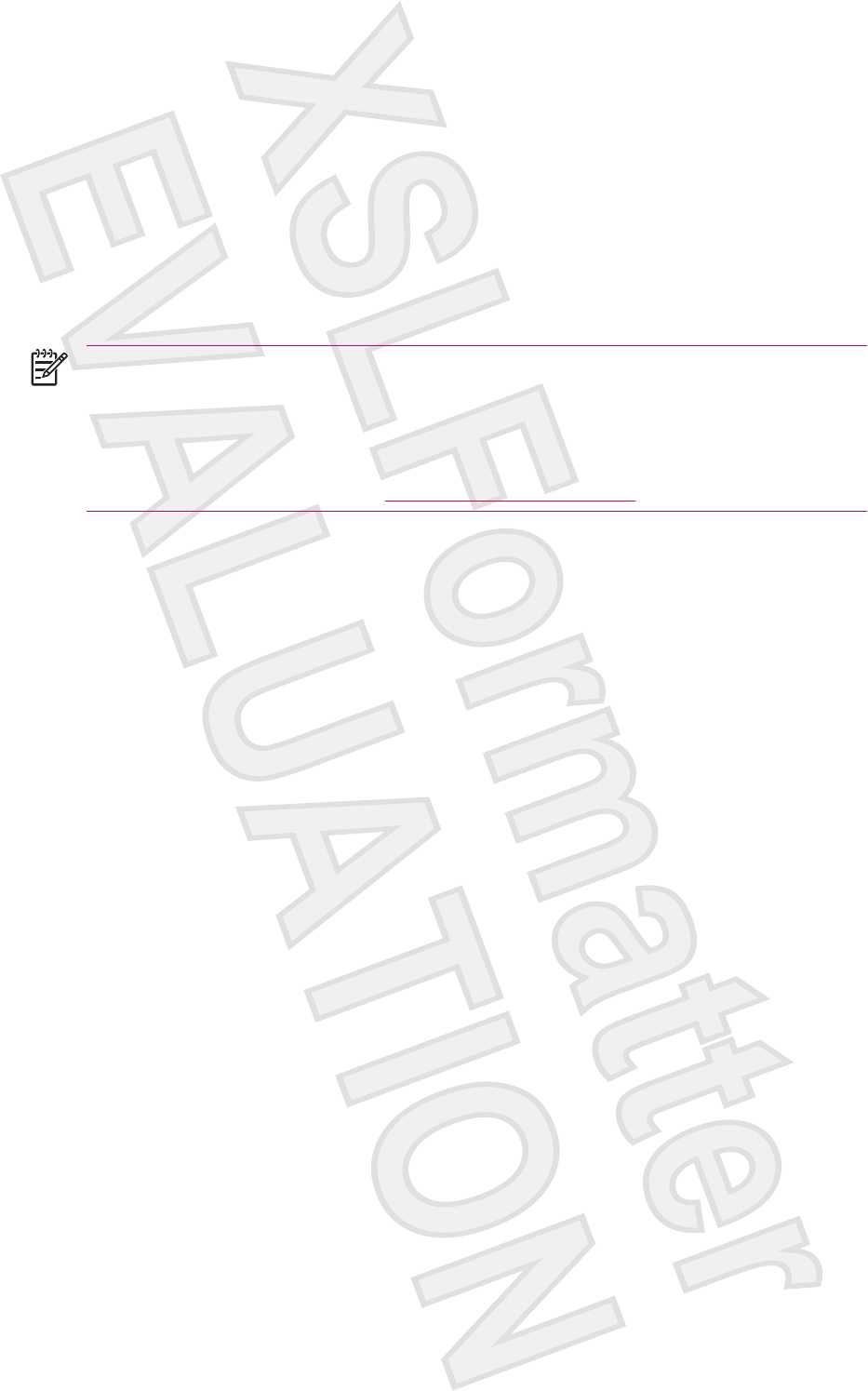
Verifying Compatibility
All HP iPAQ Global Positioning System (GPS) enabled devices come with HP iPAQ compatible GPS
navigation software solutions.
If you are interested in purchasing additional GPS navigation software to use on your HP iPAQ, check
with the GPS software supplier (before you purchase, download, or install any GPS navigation software)
to determine that the application is compatible with your specific HP iPAQ model.
Once you have verified compatibility, purchase and install a map onto the HP iPAQ or memory card to
be able to start using the GPS navigation technology.
NOTE HP recommends that you download all GPS maps to a memory card that is compatible
with your specific HP iPAQ model, or to the iPAQ File Store folder. This prevents you from losing
your map data due to a possible power loss or a need to perform a clean reset on your HP iPAQ.
Since your HP iPAQ model uses Windows Mobile 5.0, you can store maps in main memory that
is not erased if the battery loses power.
You can purchase memory cards at www.hp.com/accessories/ipaq.
4 Chapter 2 GPS ENWW
Antenna House XSL Formatter (Evaluation) http://www.antennahouse.com/
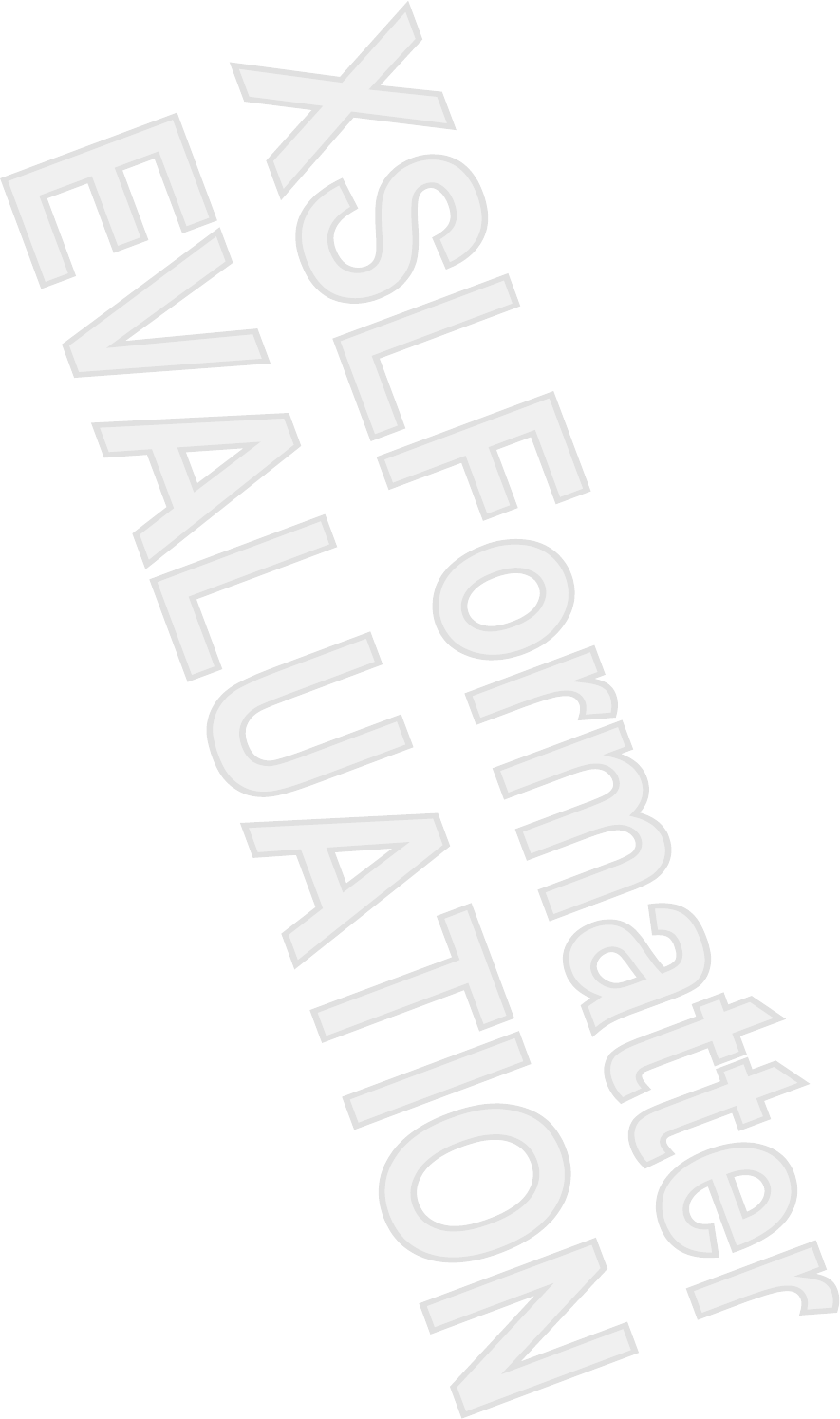
Configuring My GPS Software to Connect to My HP iPAQ's
GPS Receiver
All GPS software applications need to know which communications port to use to access GPS data.
Your HP iPAQ already has the GPS port specified for the GPS software applications that came with the
device. However, if you install additional GPS applications onto your HP iPAQ, you may need to specify
the GPS port in your GPS application's configuration settings.
If your GPS software does not automatically discover the GPS receiver on your HP iPAQ, set your GPS
application's configuration settings to COM7 and a baud rate of 57600. If you need help, refer to the
documentation that came with your GPS software application.
ENWW Configuring My GPS Software to Connect to My HP iPAQ's GPS Receiver 5
Antenna House XSL Formatter (Evaluation) http://www.antennahouse.com/
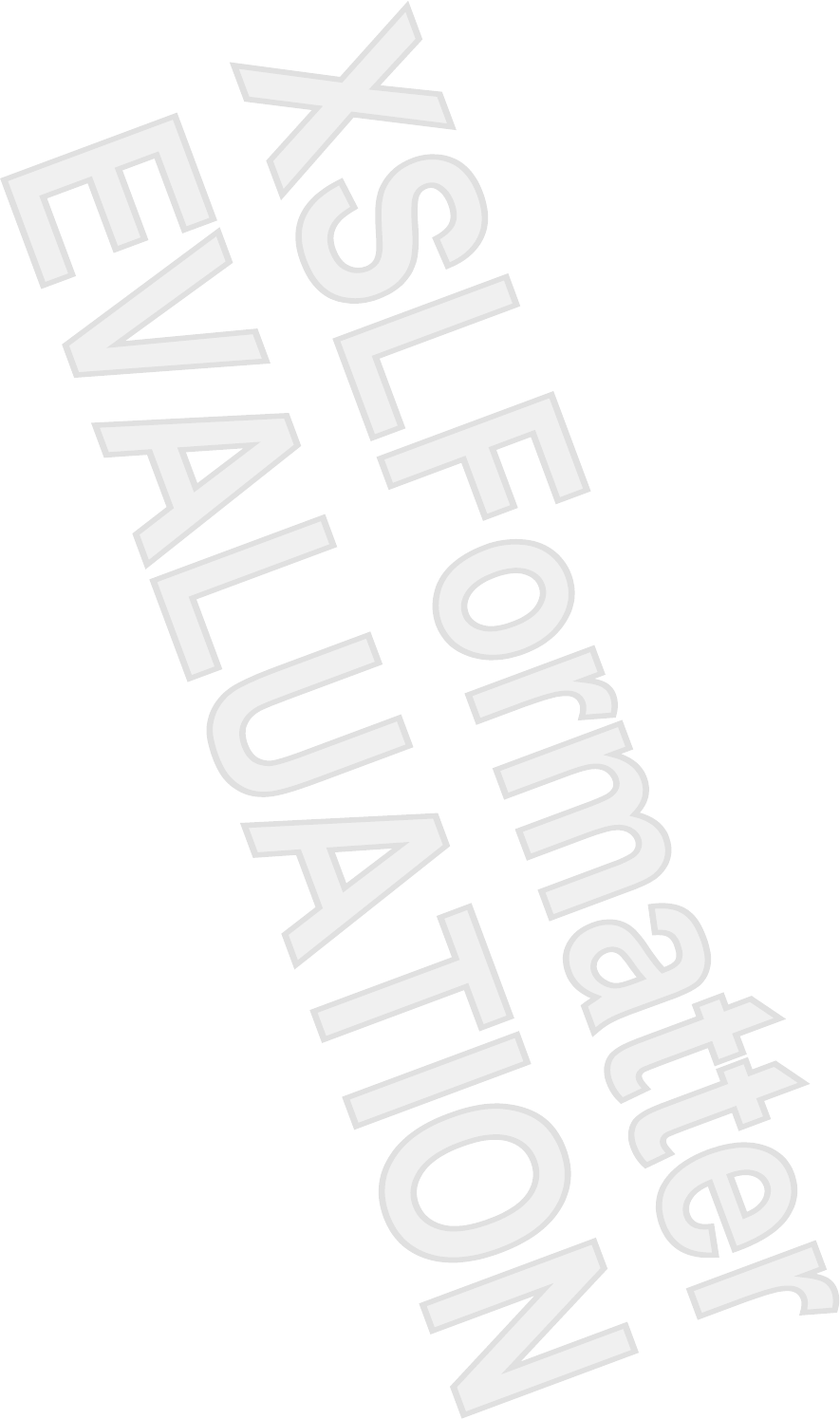
Managing GPS Automatically
Your GPS-enabled HP iPAQ uses Microsoft Windows Mobile 5.0, so the operating system automatically
manages access to the HP iPAQ GPS receiver to allow multiple programs to simultaneously access
GPS data.
If your GPS-enabled HP iPAQ does not automatically discover the GPS receiver on your device, set
your GPS application's configuration settings to COM7 and a baud rate of 57600. If you need help, refer
to the documentation that came with your GPS software application.
6 Chapter 2 GPS ENWW
Antenna House XSL Formatter (Evaluation) http://www.antennahouse.com/
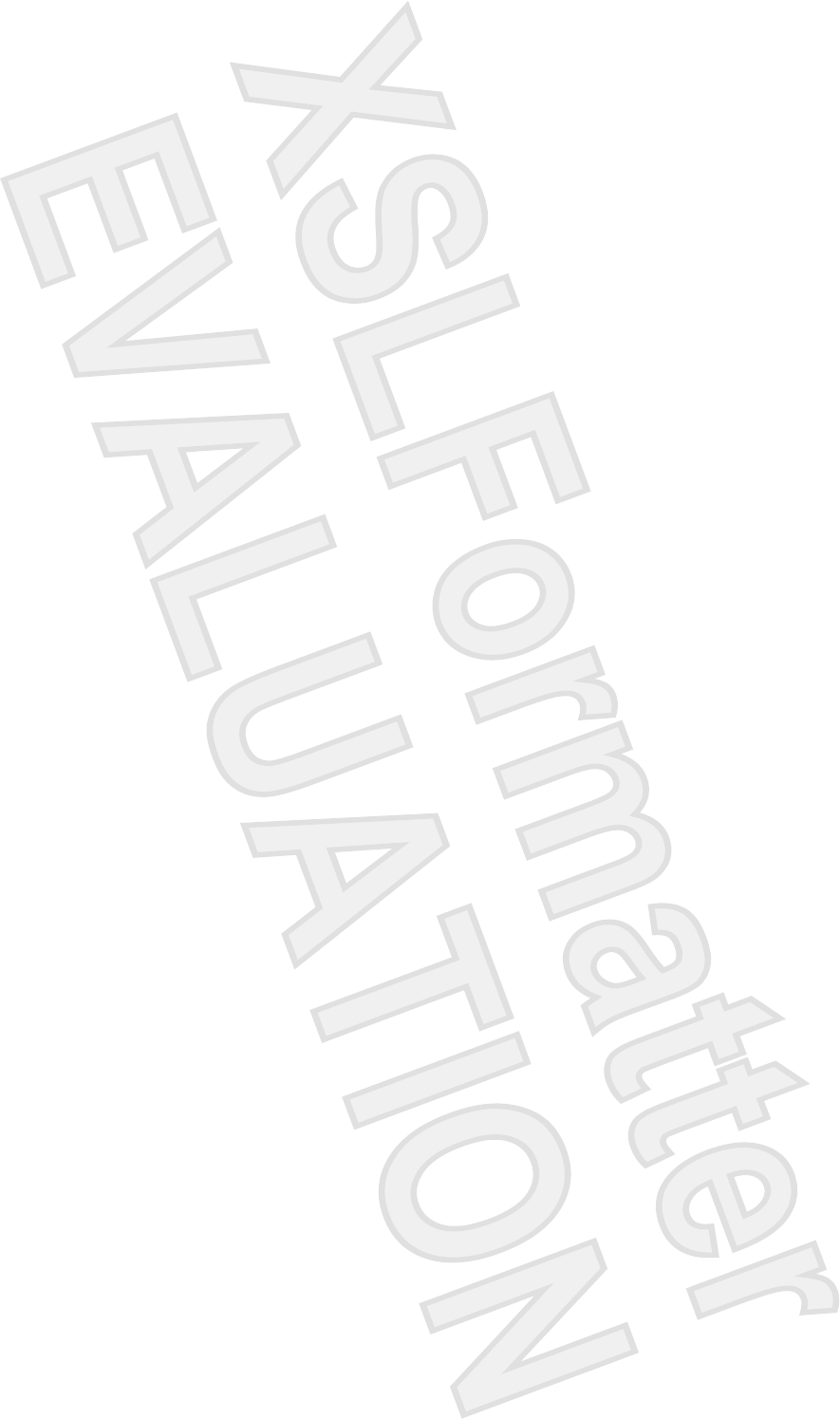
Identifying Your HP iPAQ's Embedded Receiver
The GPS receiver in your HP iPAQ is the SiRFstarIII from SiRF and is software upgradeable. The
SiRFstarIII is a high sensitivity GPS receiver with rapid time-to-first fix technology that provides superior
location performance, so under normal use there is no need for an external antenna.
However, an optional external antenna is available if you want to use your HP iPAQ in locations that do
not provide ideal GPS reception.
8 Chapter 2 GPS ENWW
Antenna House XSL Formatter (Evaluation) http://www.antennahouse.com/
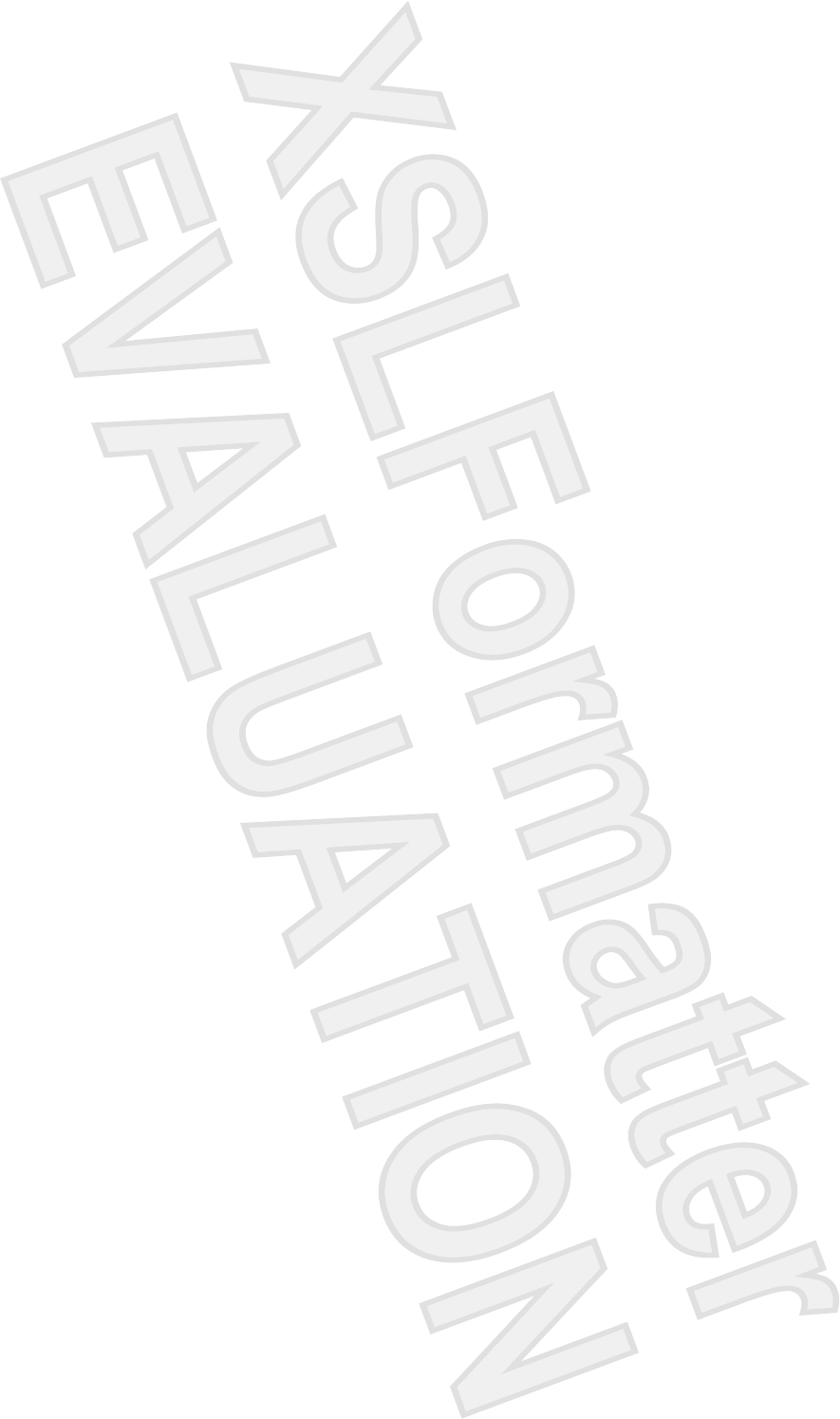
Using an External Antenna with your GPS Receiver
Under normal use, there is no need for an external GPS antenna. However, if you want to use your HP
iPAQ in locations less favorable for GPS reception, such as inside of a car away from the windshield,
you can use an optional 3V active external antenna. Plug this antenna into the gold MMCX connector
on the left side of your HP iPAQ.
ENWW Using an External Antenna with your GPS Receiver 9
Antenna House XSL Formatter (Evaluation) http://www.antennahouse.com/
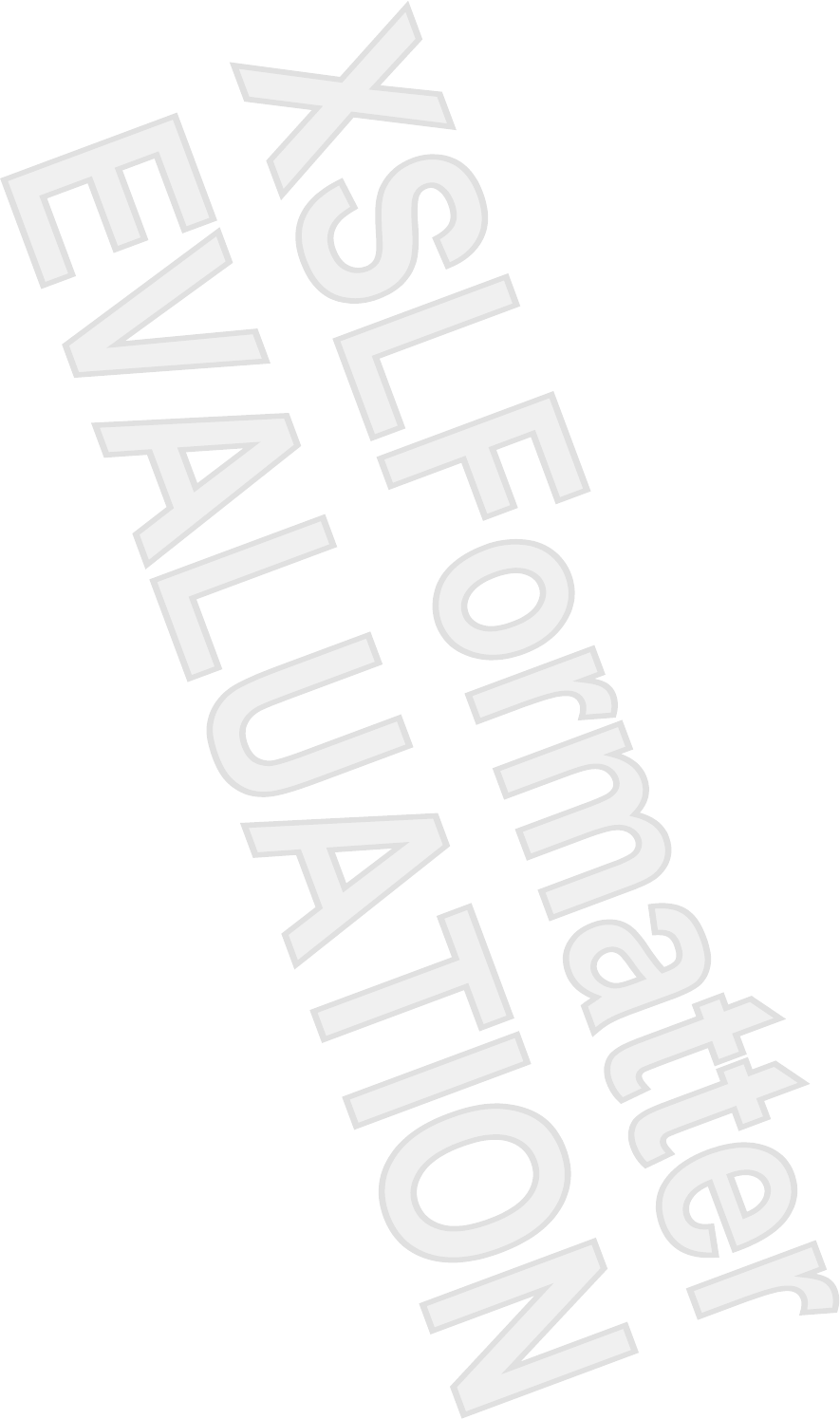
Losing The GPS Signal While in My Car
GPS performance on the HP iPAQ may be affected if the vehicle has thermal glass windows and
windshields, which can block the HP iPAQ from receiving a GPS signal from satellites.
To improve GPS signal strength, place the HP iPAQ where there is a clear view of the sky or on the
dashboard of a vehicle that does not have thermal glass windshields. A direct line of sight is required
between the HP iPAQ and the GPS satellites to access information from the satellites.
10 Chapter 2 GPS ENWW
Antenna House XSL Formatter (Evaluation) http://www.antennahouse.com/

Losing the GPS Signal Frequently
To improve the satellite signal to the GPS-enabled HP iPAQ, go outdoors to start the GPS navigation
software. Place the HP iPAQ where there is a clear view of the sky or on the dashboard of a vehicle
that does not have thermal glass windshields or windows.
NOTE Interference may exist close to tall buildings, large trees, and under very cloudy or
overcast skies, all of which can block the satellite signal from reaching the HP iPAQ. Try to avoid
these obstructions before using GPS.
ENWW Losing the GPS Signal Frequently 11
Antenna House XSL Formatter (Evaluation) http://www.antennahouse.com/
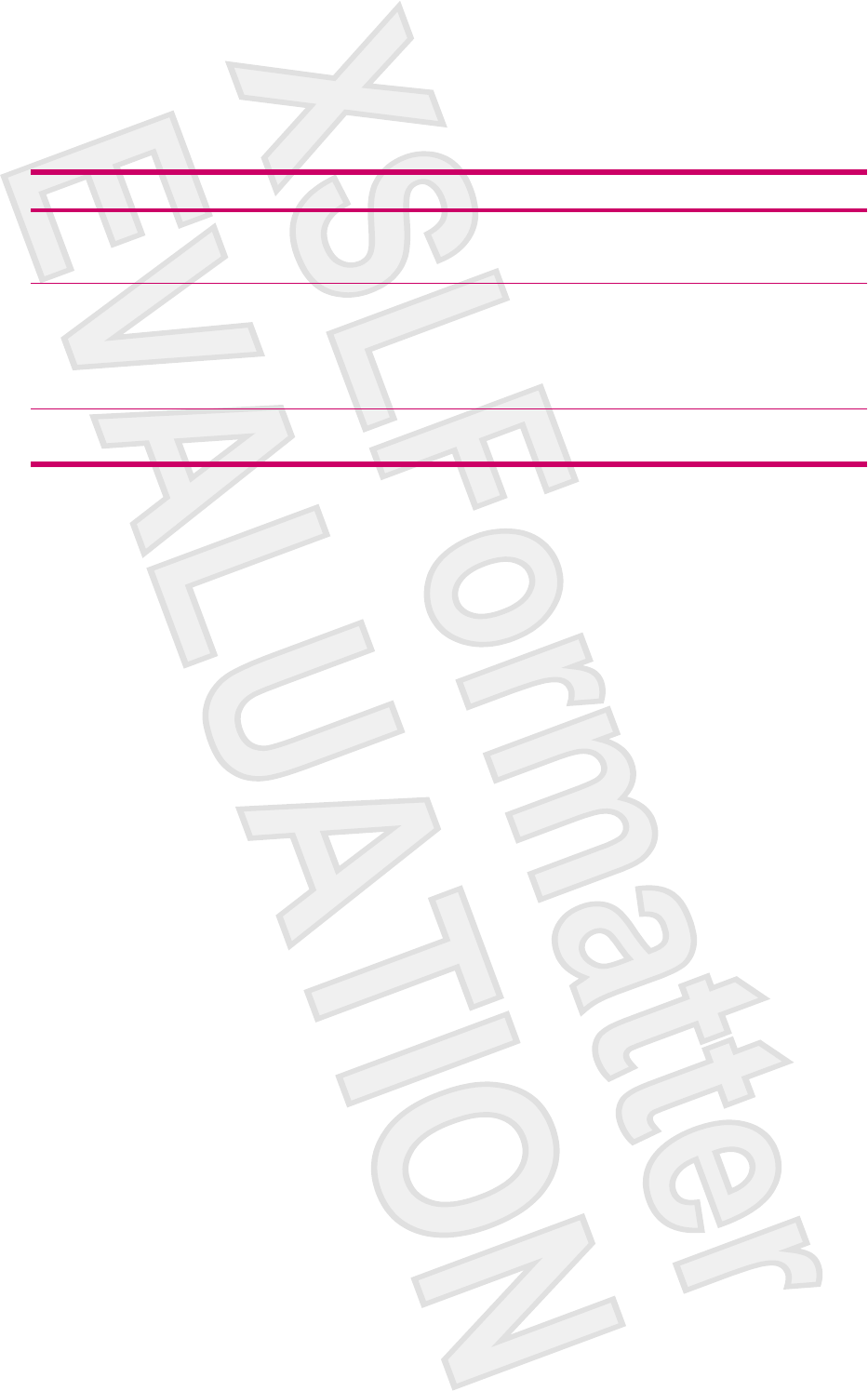
Common Reasons For Interference When Using GPS
Software
Interference Type How to Avoid
Vehicles with thermal glass windows and windshields Place the HP iPAQ where there is a clear view of the sky or on
the dashboard of a vehicle that does not have thermal glass
windows.
Cell Phones or other equipment radiating Radio Frequency
(RF) energy or emitting strong electromagnetic radiation. For
example, microwave ovens, high-power cordless phones, CB
radios, Walkie-talkies, HAM equipment, X-ray and MRI
machines, etc.
Move away from interference source or switch off the
interference source.
Tall buildings, large trees, and very cloudy or overcast skies. Move away from interference source so there is a clear view
of the sky.
12 Chapter 2 GPS ENWW
Antenna House XSL Formatter (Evaluation) http://www.antennahouse.com/
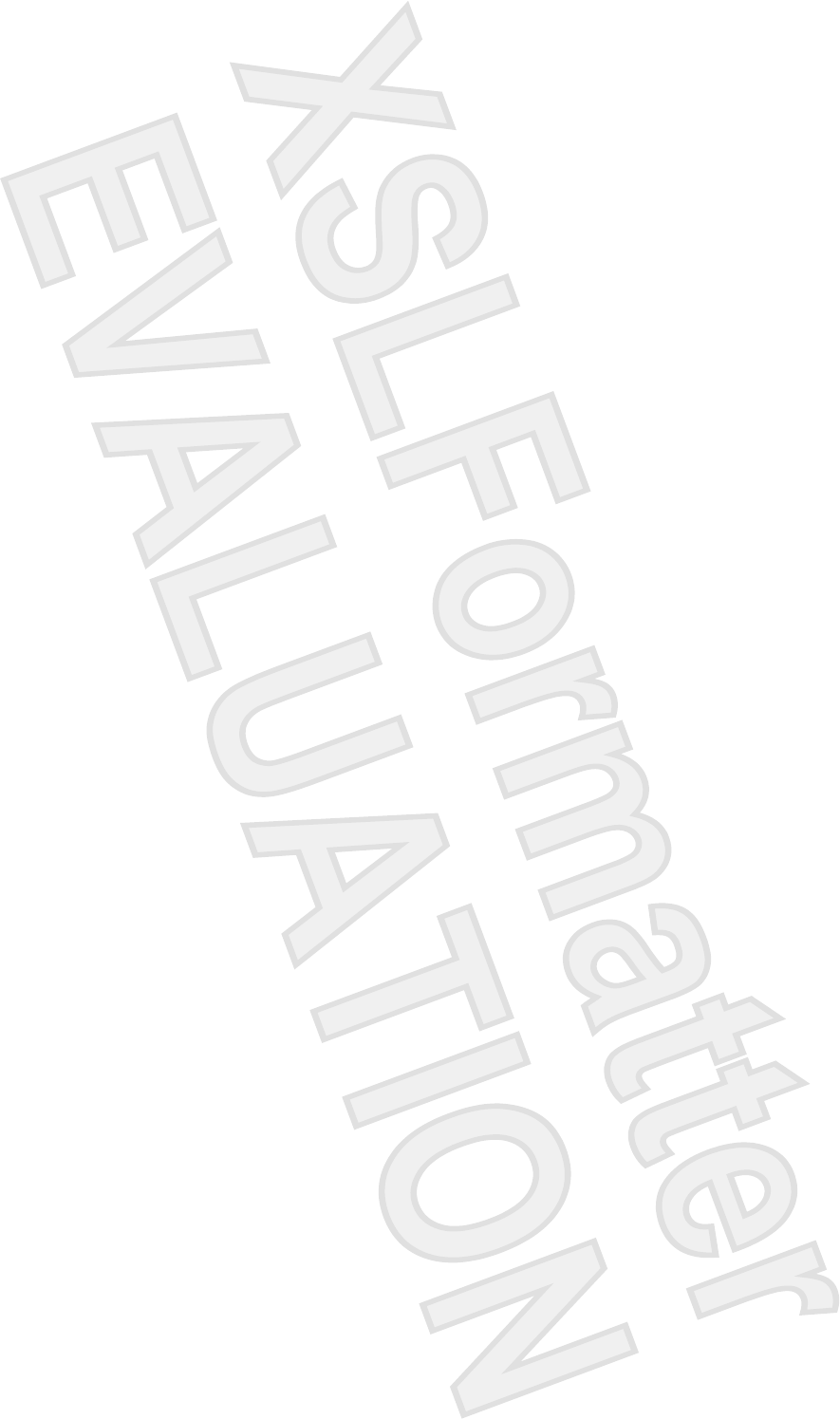
3 Travel Assistant
WorldMate Travel Assistant Standard Edition
Your HP iPAQ comes preinstalled with WorldMate Travel Assistant Standard Edition. This travel
assistant provides a world clock, currency converters, weather, and other travel organizing tools.
Screen Navigation
WorldMate Standard contains several screens that you can access using the tabs at the bottom of the
screen. Tap the tabs to switch between the clocks, weather, maps, currencies and more.
ENWW WorldMate Travel Assistant Standard Edition 13
Antenna House XSL Formatter (Evaluation) http://www.antennahouse.com/
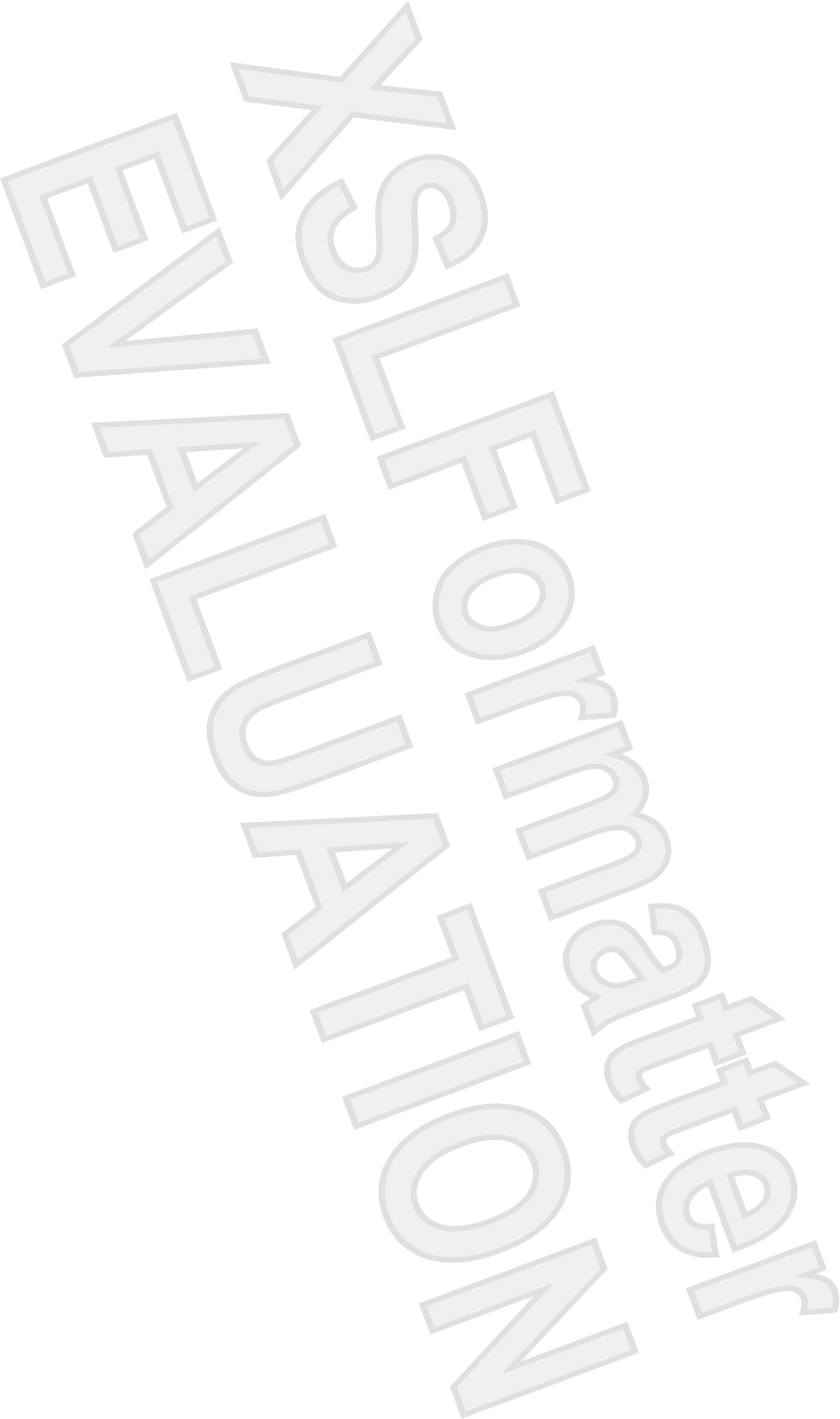
Clocks
The Clocks screen displays your home clock plus four other pre-selected clocks. To change a displayed
city, tap the city name and select a new city from the list. Tap the (i) icon near any clock to change the
selected city's details. Tap the cloud icon to view the weather forecast for that city. You must sync your
HP iPAQ with a PC running WorldMate software to get updated forecasts.
14 Chapter 3 Travel Assistant ENWW
Antenna House XSL Formatter (Evaluation) http://www.antennahouse.com/
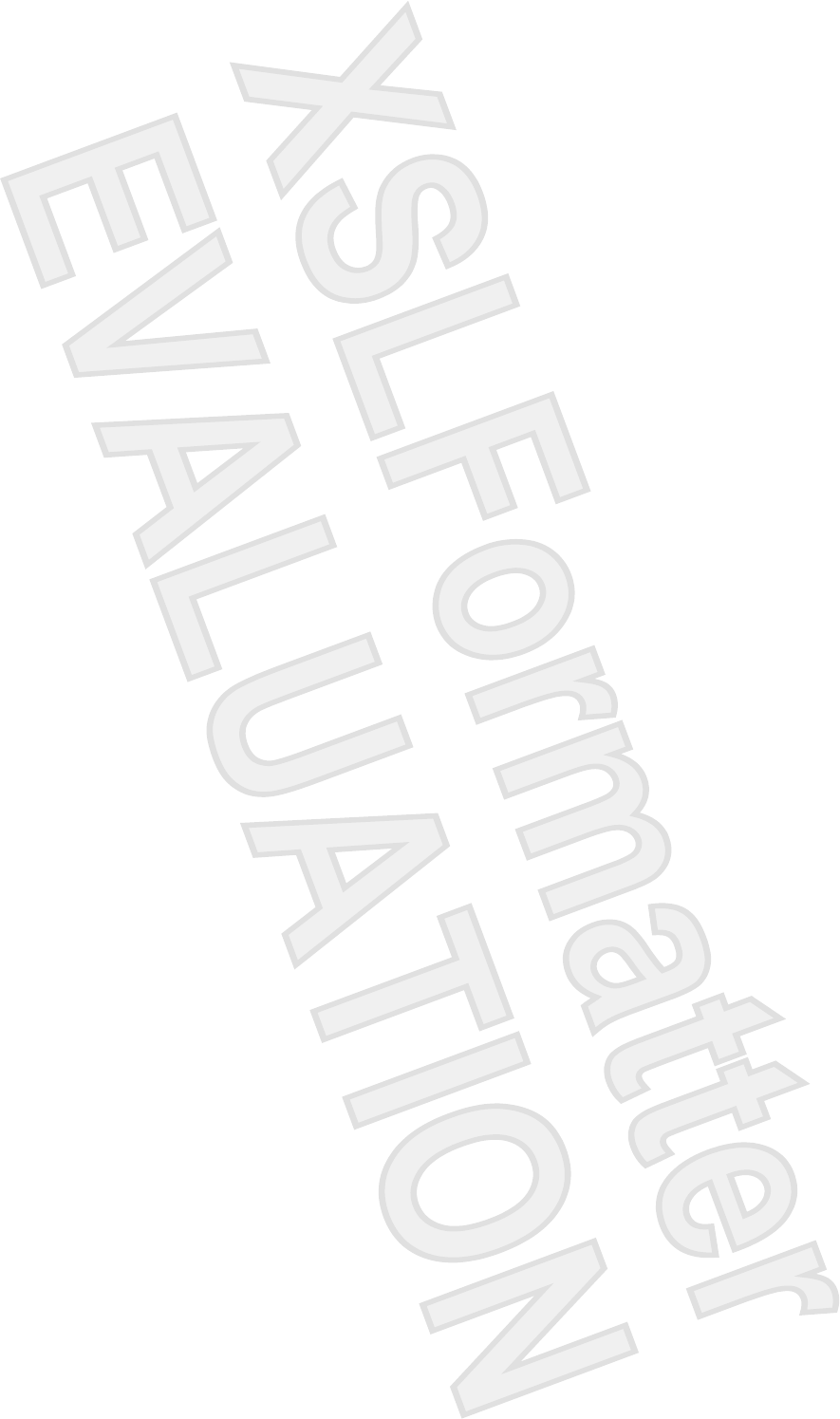
Using the Alarm
To set the alarm, tap the bell icon on the Clocks screen to access the alarm settings screen. The alarm
on icon displays below the bell icon after you turn the alarm on.
To turn the alarm off:
1. Select Set alarm for, and then set the alarm time.
2. If you want a sound to play when the alarm goes off, select Play sound, and then select an alarm
sound from the list.
3. If you want a message to display when the alarm goes off, type the message in the Message box.
Your HP iPAQ displays the Alarm screen when the alarm goes off.
ENWW Using the Alarm 15
Antenna House XSL Formatter (Evaluation) http://www.antennahouse.com/
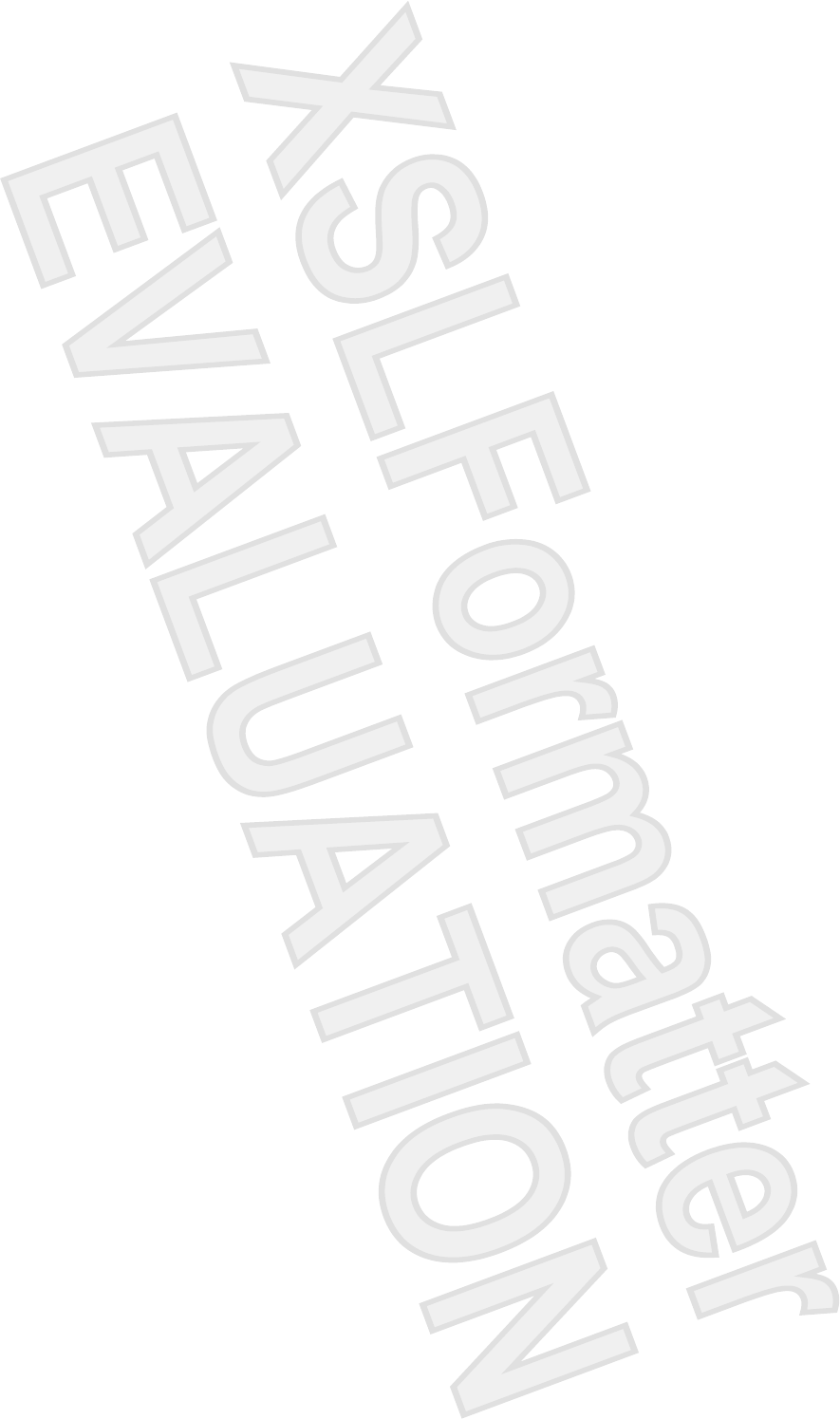
World Map
World Map provides a map of the world that shows where it is currently daylight and dark, as well as
global city locations.
To view a city location:
●Select the city from the list below the map.
●Or, tap the map to display the closest city.
You can also display the weather forecast for the selected city by tapping the Sun/Cloud icon. Note
that you must sync with a PC that is online running the WorldMate software to get weather forecasts.
16 Chapter 3 Travel Assistant ENWW
Antenna House XSL Formatter (Evaluation) http://www.antennahouse.com/
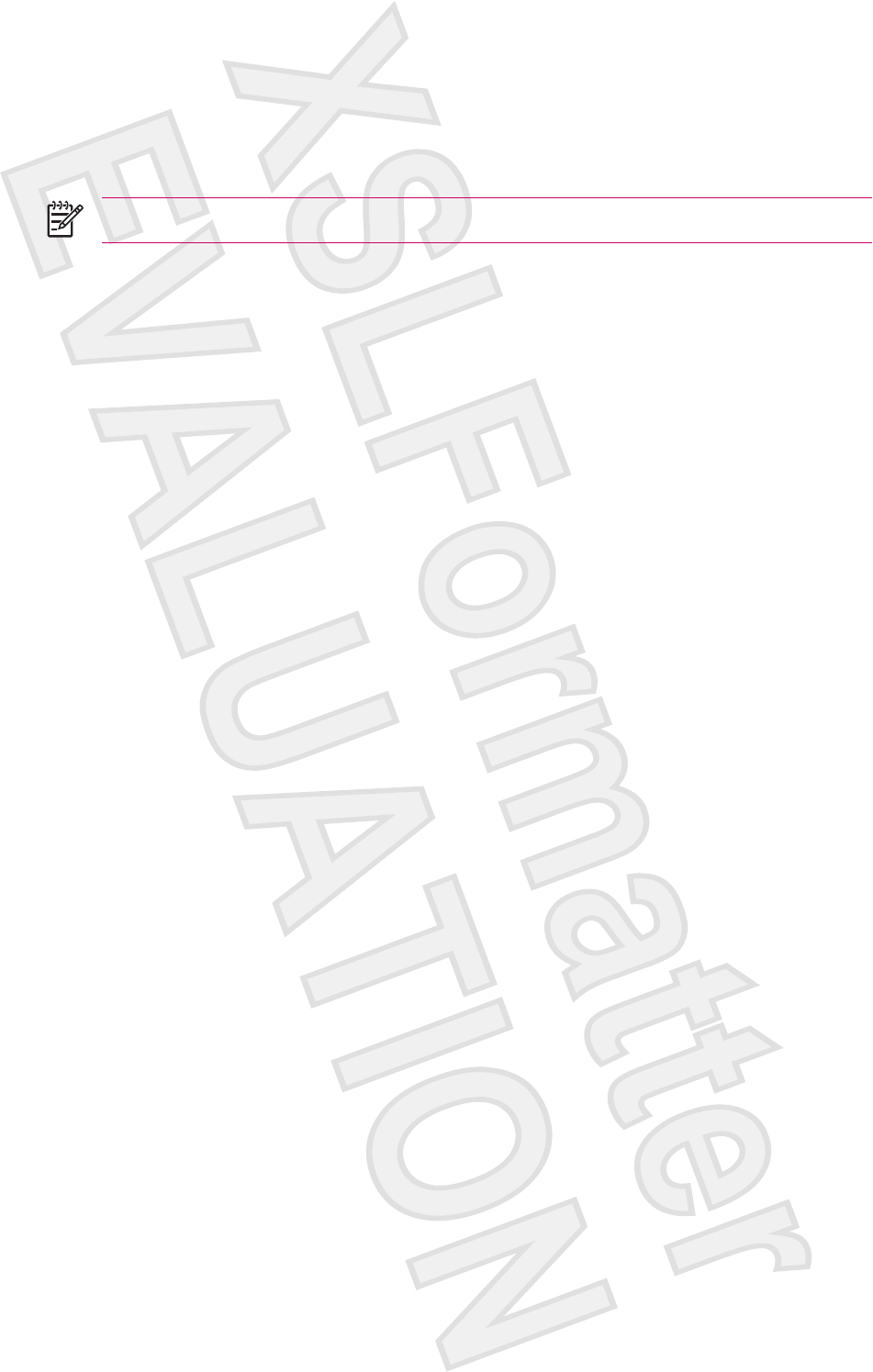
Weather Service
You can access the weather from either the World Map screen or the Clocks screen. Tap the Sun/
Cloud icon to get a 5-day forecast for the selected city.
NOTE WorldMate supports only built-in cities for weather updates.
To get current forecasts, update the WorldMate software on your PC, sync your HP iPAQ with your PC,
and then tap Get Updated Forecast .
ENWW Weather Service 17
Antenna House XSL Formatter (Evaluation) http://www.antennahouse.com/
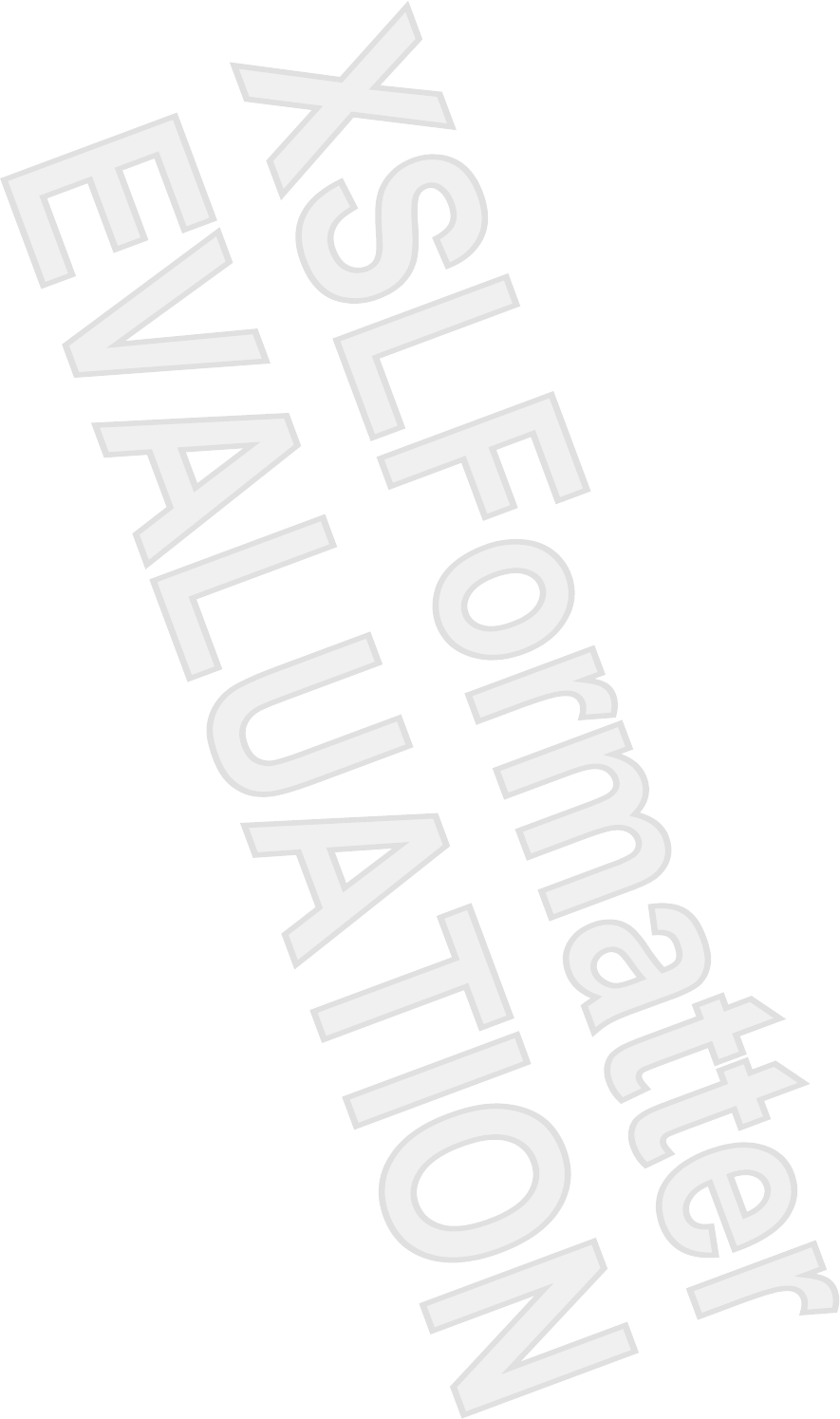
City List
To edit the cities list, from either the World Map screen or the Clocks screen, tap Tools > Edit Cities.
The city list is sorted by name, offset from GMT or state of Daylight Saving Time (DST). To sort, tap the
appropriate label at the top of the list. To add a city, tap New .
To add your own city, type the city name, GMT offset, Daylight Saving Time information, and its location
on the map.
18 Chapter 3 Travel Assistant ENWW
Antenna House XSL Formatter (Evaluation) http://www.antennahouse.com/
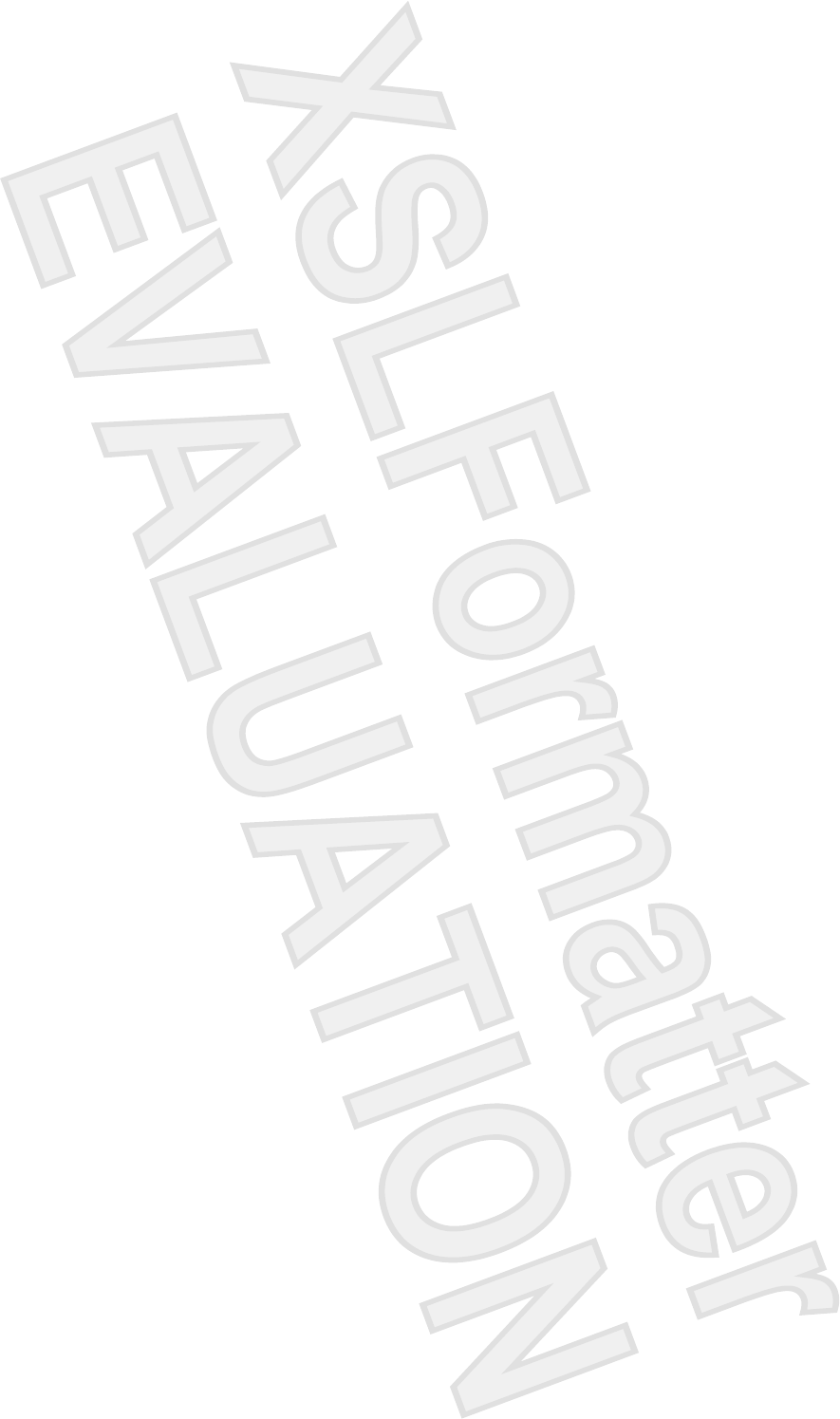
Currency Converter Service
This easy-to-use converter allows you to simultaneously calculate the sum of values in up to three
different currencies, as well as receive updated rates online or insert them manually.
To convert currencies:
1. Tap the arrow in each heading cell to display a list from which you can select a currency.
2. Type a value to convert in the editable fields below the heading fields. Currency values are
automatically computed for each selected currency.
Tap Get Updated Rates to access the Internet and update WorldMate with the latest exchange rates.
Tap Clear to delete all values in the table.
ENWW Currency Converter Service 19
Antenna House XSL Formatter (Evaluation) http://www.antennahouse.com/
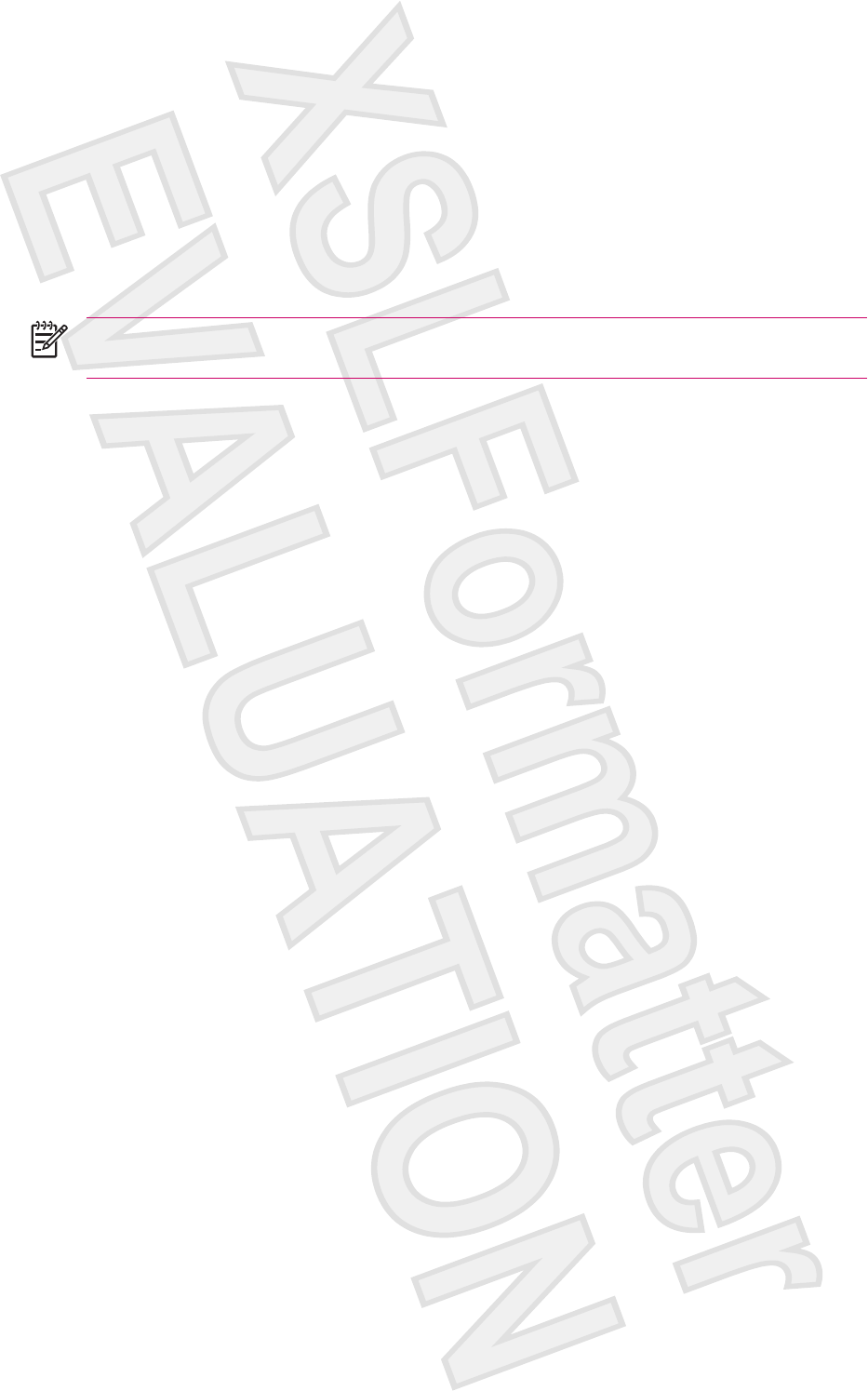
Updating Currency Rates
To manually update currency rates:
1. TapTools > Edit Currencies.
2. Tap on the currency you want to update.
3. Type the rate relative to the base currency (the value of the base currency in terms of what you
are editing).
NOTE Updating a Euro-based currency will affect all other Euro based currencies. You cannot
change exchange rates between two Euro-based currencies.
Sync your HP iPAQ with the PC running WorldMate to automatically update currency rates.
20 Chapter 3 Travel Assistant ENWW
Antenna House XSL Formatter (Evaluation) http://www.antennahouse.com/
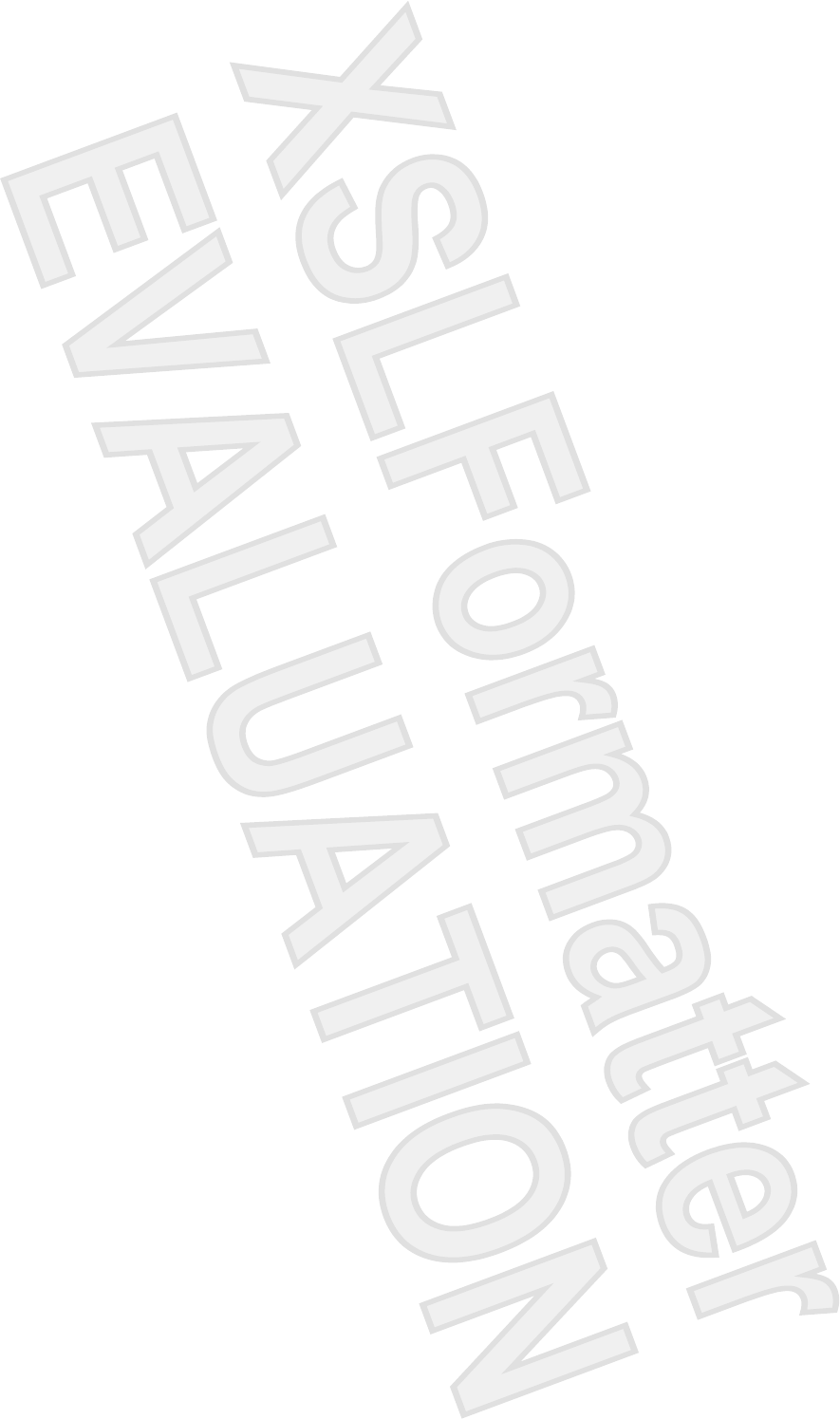
Measurement Converter Service
To use the Measurements Converter screen:
1. Select the type of measurement (length, temperature, etc.) from the Convert list.
2. Select the measurements (meters, feet, etc.) from the two lists below the Convert list.
3. Type a number to convert in the box to the left of the measurements. The converted value
automatically displays below box.
4. Tap Clear to delete field values.
ENWW Measurement Converter Service 21
Antenna House XSL Formatter (Evaluation) http://www.antennahouse.com/
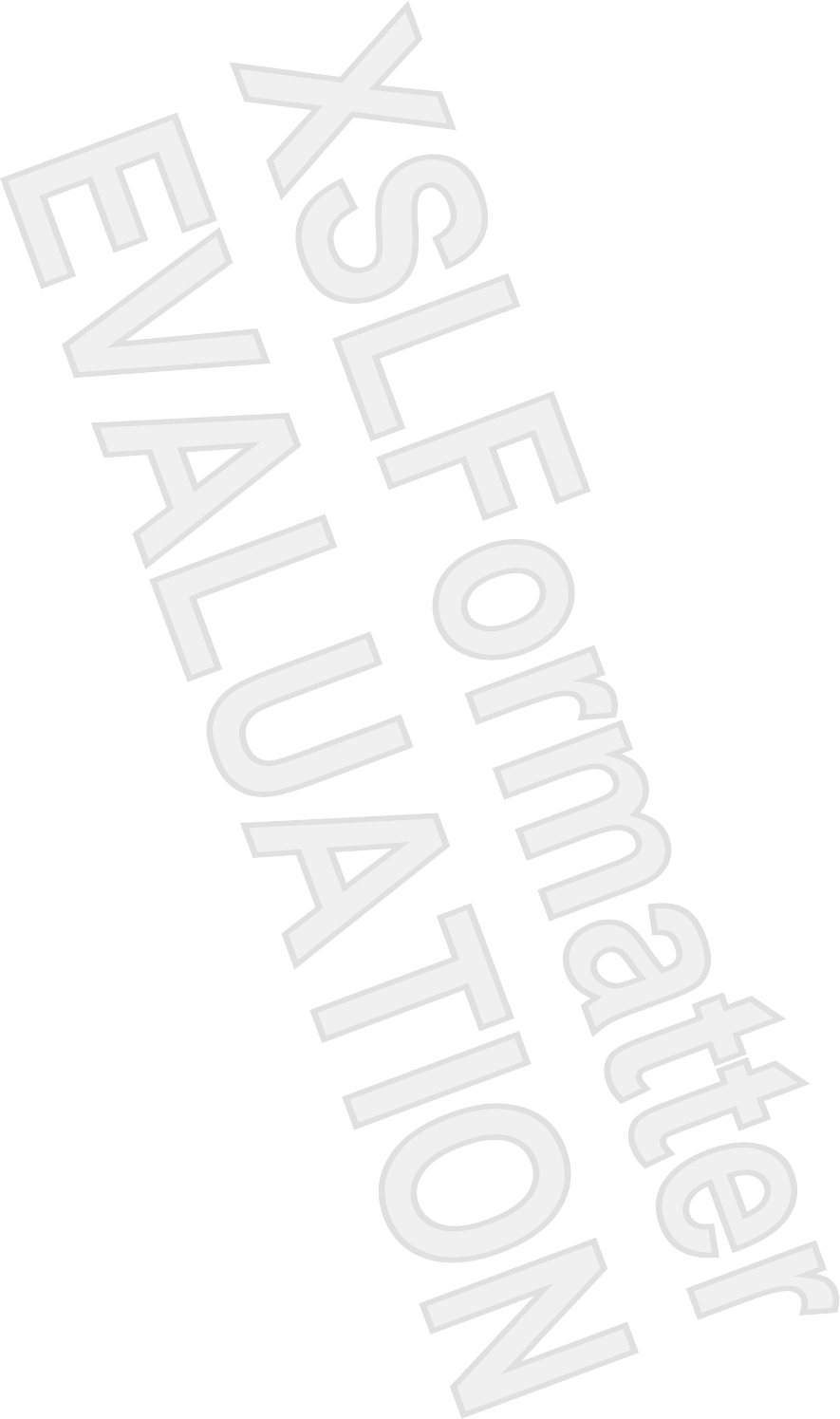
Country and Area Codes
Tap the Show list to switch between international dialing prefixes, U.S., and Canadian area codes. The
table provides:
●Country/State names
●Dialing prefixes
●Local time offset from GMT in hours (this table does not update for Daylight Saving Time)
Tap a column heading to sort according to the column.
Use the Find box to look up prefixes according to the currently selected column. For example, type “I”
to locate the first country that starts with the letter I, or select the Code column and type “2” to find the
first country with an area code that starts with the number 2.
22 Chapter 3 Travel Assistant ENWW
Antenna House XSL Formatter (Evaluation) http://www.antennahouse.com/

Clothing Sizes
This table shows which clothing sizes to buy when traveling overseas. Use the different categories with
the man-woman-child icons to quickly find the size you need.
NOTE Use the size table only as a guideline. Different manufacturers have slightly different
size tables.
ENWW Clothing Sizes 23
Antenna House XSL Formatter (Evaluation) http://www.antennahouse.com/
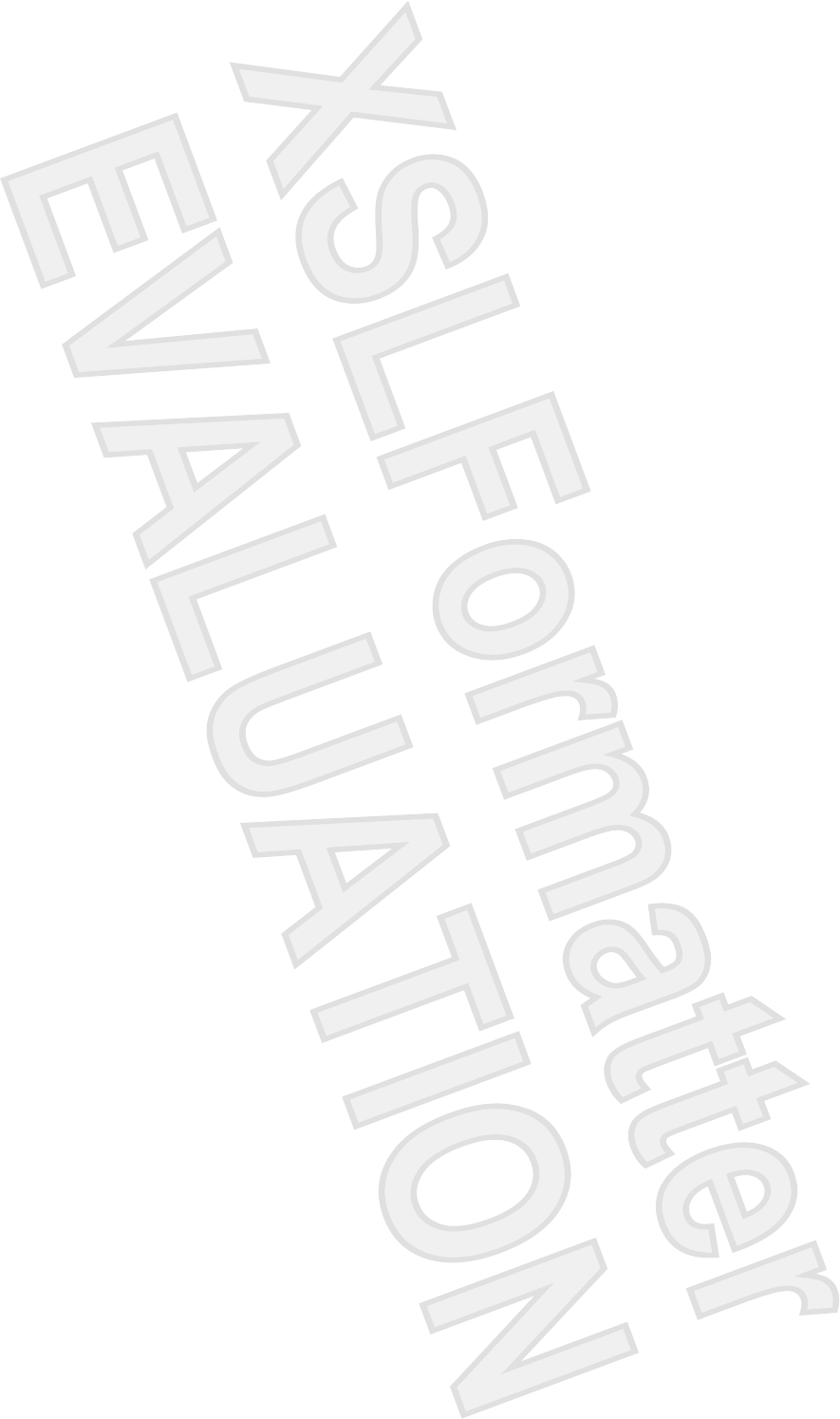
Packing List
Use the Packing List screen to create and keep track of a list of items you need to pack. A list of items
is provided in categories that you can select at the top of the screen.
To create a packing list:
1. Select the category of items you want to select from the category drop-down list at the top of the
screen.
2. Select the items you want to pack from the All Items list. WorldMate automatically moves items
you select to My List. You can then use the My List items as a checklist.
3. Tap an item to change its description, category, or list location.
4. To add or edit a category, select Edit Categories from the category drop-down list .
24 Chapter 3 Travel Assistant ENWW
Antenna House XSL Formatter (Evaluation) http://www.antennahouse.com/
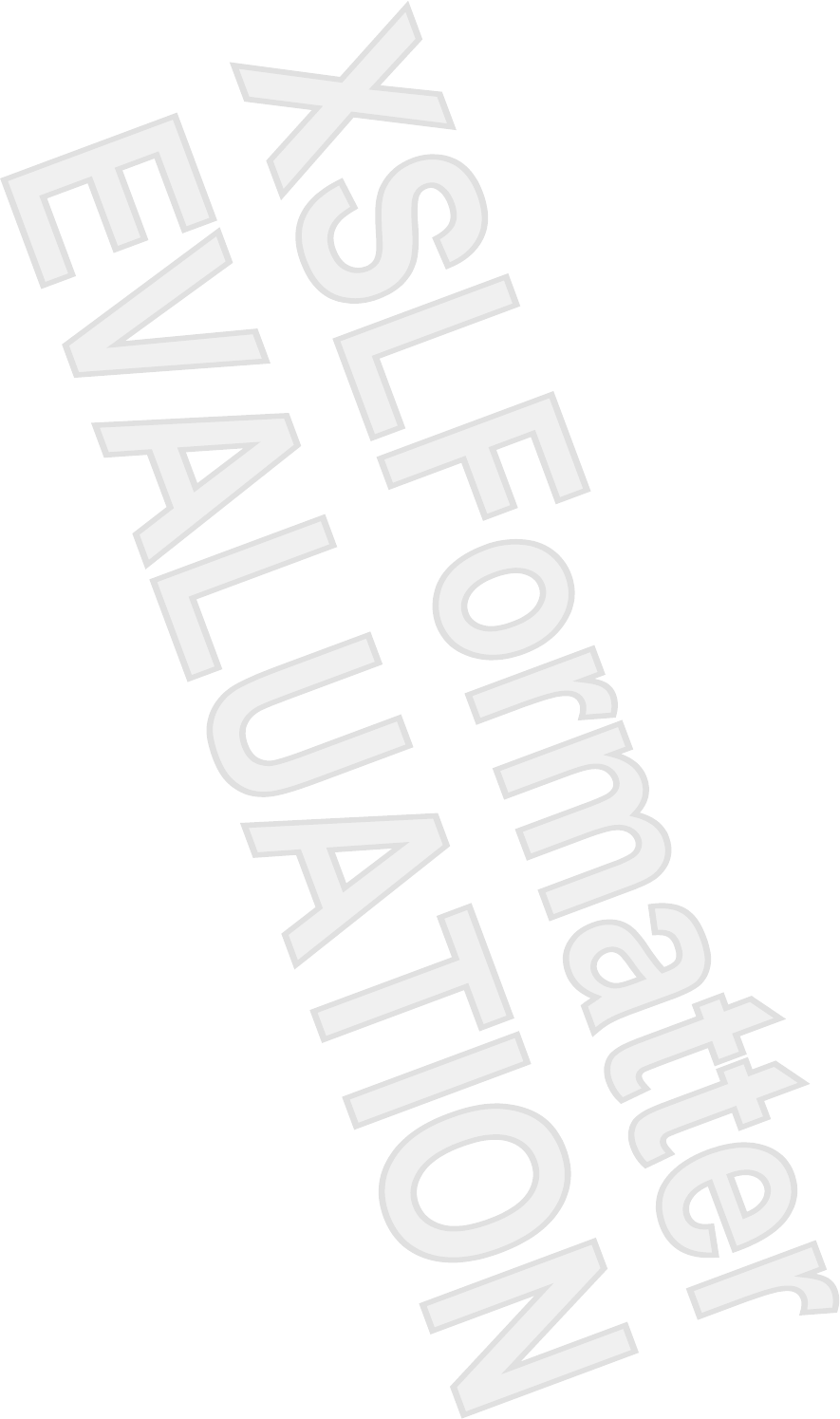
WorldMate's ActiveSync Settings
The WorldMate installer installs the WorldMate Standard application on your Windows Mobile Pocket
PC and the WorldMate ActiveSync component on your computer. Once installed, the WorldMate
ActiveSync component will update currency rates and weather forecasts, as well as your HP iPAQ clock
with Atomic time whenever you synchronize your HP iPAQ while connected to the Internet.
The WorldMate ActiveSync component is fully configurable and you may adjust the options to fit your
needs.
To access the WorldMate ActiveSync component set up screen on your PC:
1. Right-click ActiveSync located on the system tray (next to the clock).
2. Select Open Microsoft ActiveSync.
3. Scroll the list of ActiveSync components for WorldMate Standard.
4. Right-click WorldMate Standard and select Settings.
Online Content Updates: WorldMate's ActiveSync component can check for updates every 6, 12, or 24
hours. Select zero for the WorldMate ActiveSync component to update every time you connect your HP
iPAQ to your PC.
Network Settings: Use the Network Settings to configure the WorldMate ActiveSync to work behind a
firewall or proxy server. Consult your network administrator for the correct settings.
ENWW WorldMate's ActiveSync Settings 25
Antenna House XSL Formatter (Evaluation) http://www.antennahouse.com/
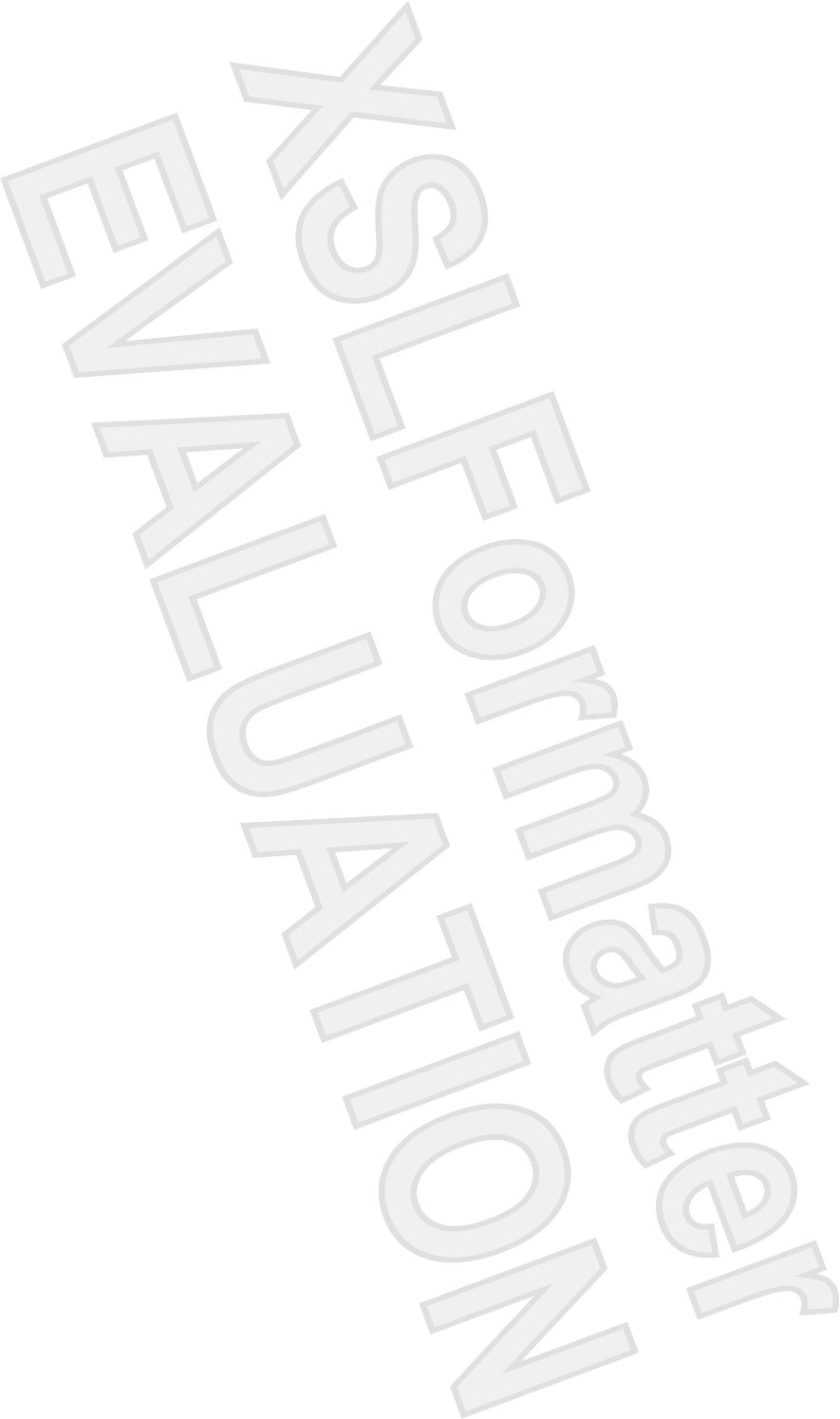
4 Connections
Connections
You can use your HP iPAQ to connect to and exchange information with other handheld devices, your
computer, various network types, or the Internet. You can connect using:
●Wi-Fi
●Bluetooth
All these connection types can be accessed by tapping Start > Settings > Connections tab.
ENWW Connections 27
Antenna House XSL Formatter (Evaluation) http://www.antennahouse.com/
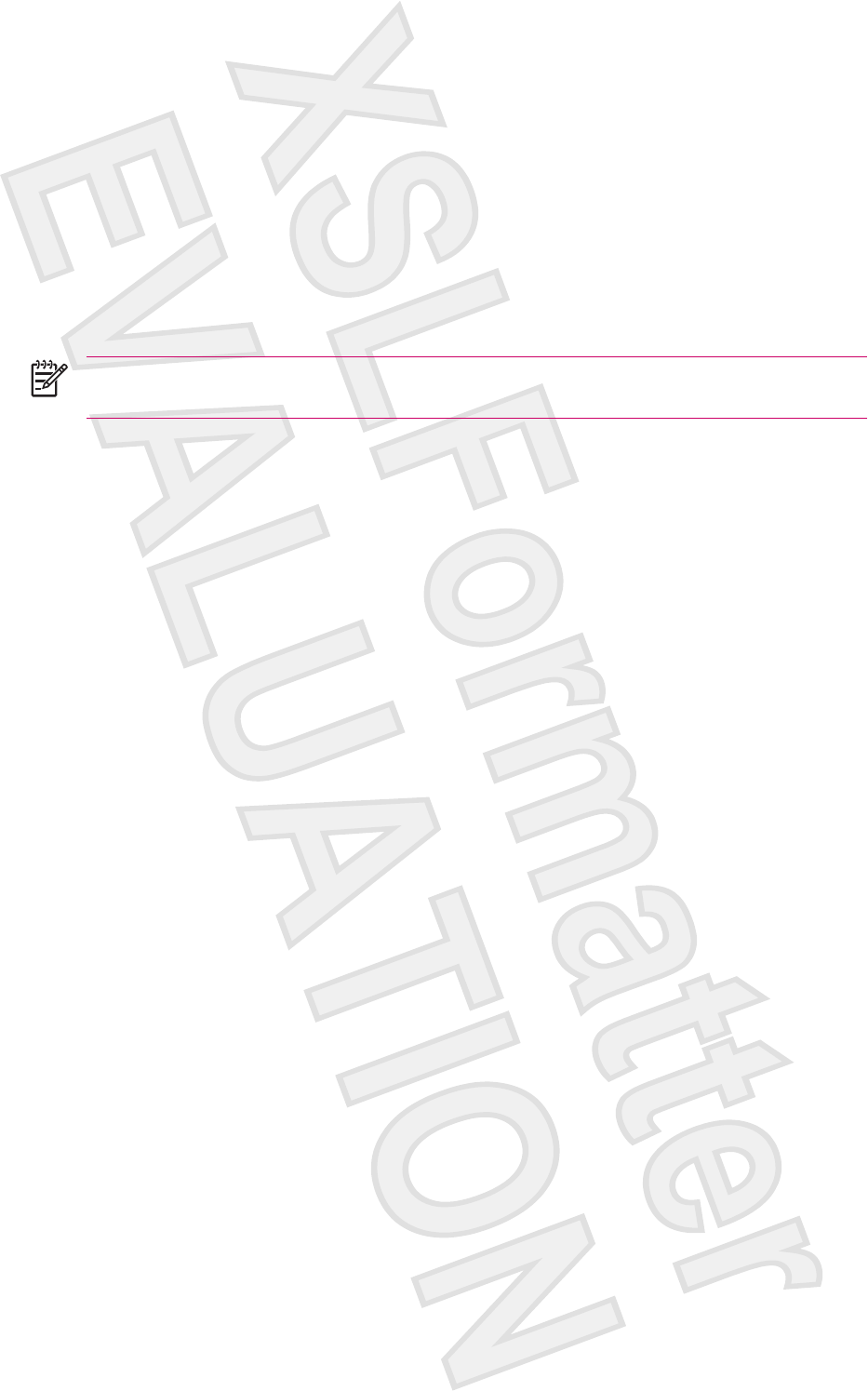
Connecting to Intranet URLs
To connect to intranet sites that have periods in their URLs (for example, intranet.companyname.com),
add them to the Work URL Exceptions list.
1. Tap Start > Settings > Connections tab.
2. Tap Connections > Advanced tab > Exceptions.
3. Tap Add new URL.
4. In Work URL, enter the intranet URL.
NOTE If you use many URLs that share the same root company name, you can avoid entering
them individually by entering *.companyname.com.
28 Chapter 4 Connections ENWW
Antenna House XSL Formatter (Evaluation) http://www.antennahouse.com/

Changing an Intranet URL
1. Tap Start > Settings > Connections tab > Connections > Advanced tab > Exceptions.
2. Tap the intranet URL exception you want to change, then make the desired changes.
NOTE To delete a work URL exception, tap and hold it in the list, then tap Delete.
ENWW Changing an Intranet URL 29
Antenna House XSL Formatter (Evaluation) http://www.antennahouse.com/
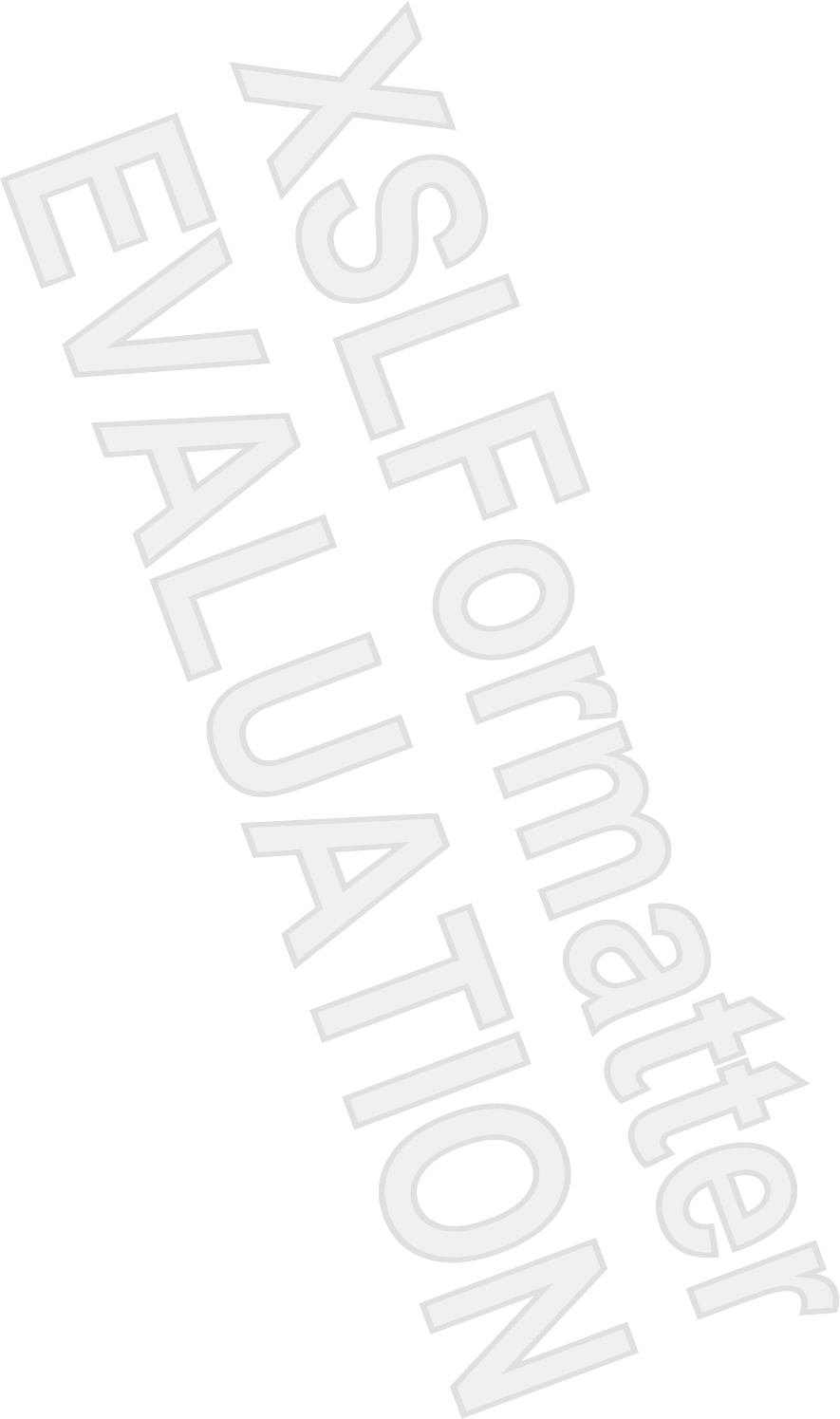
Setting Up an Automatic Choice for Connections
If you have already created more than one connection, you can set up your HP iPAQ to connect to the
best available connection automatically.
1. Tap Start > Settings > Connections tab > Connections.
2. Under My ISP or My Work Network, tap Manage existing connections.
3. Tap Auto pick.
30 Chapter 4 Connections ENWW
Antenna House XSL Formatter (Evaluation) http://www.antennahouse.com/
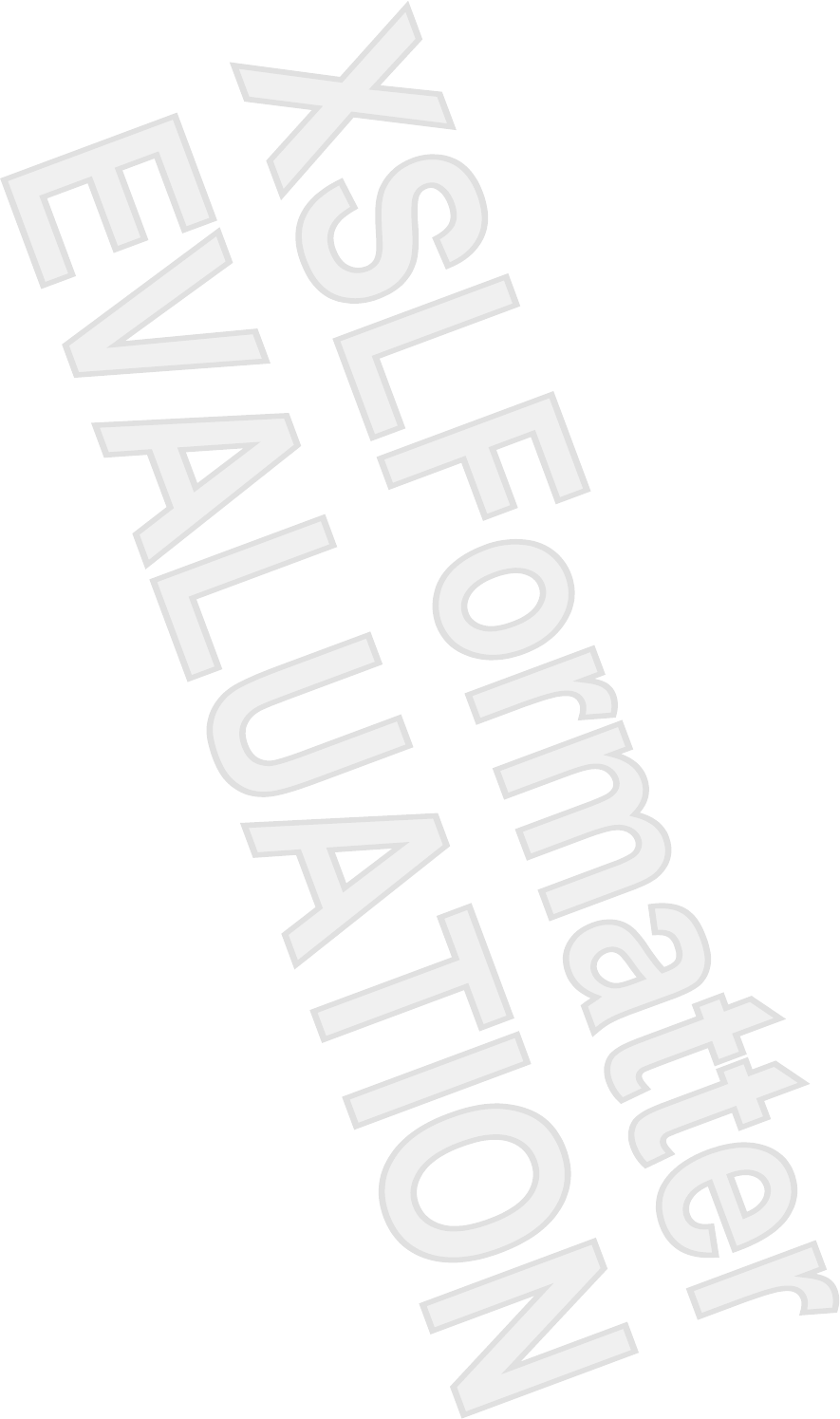
Setting Up Proxy Server Settings
If you are connected to your Internet Service Provider (ISP) or private network during synchronization,
your device should download proper proxy settings during synchronization from your computer. If these
settings are not on your computer or need to be changed, you can change them manually.
Before you begin, obtain the following information from your Internet Service Provider (ISP) or network
administrator:
●User name
●Password
●Server type
●Proxy server name
●Port
●Type of Socks protocol used
To set up proxy server settings:
1. Tap Start > Settings > Connections tab > Connections.
2. If a proxy server has not been set up, tap Set up my proxy server. Otherwise, tap Edit my proxy
server.
3. Select the This network connects to the Internet and This network uses a proxy server to
connect to the Internet check boxes.
4. In the Proxy server box, enter the proxy server name.
5. To change such settings as port number or proxy server type, tap Advanced and change desired
settings.
ENWW Setting Up Proxy Server Settings 31
Antenna House XSL Formatter (Evaluation) http://www.antennahouse.com/
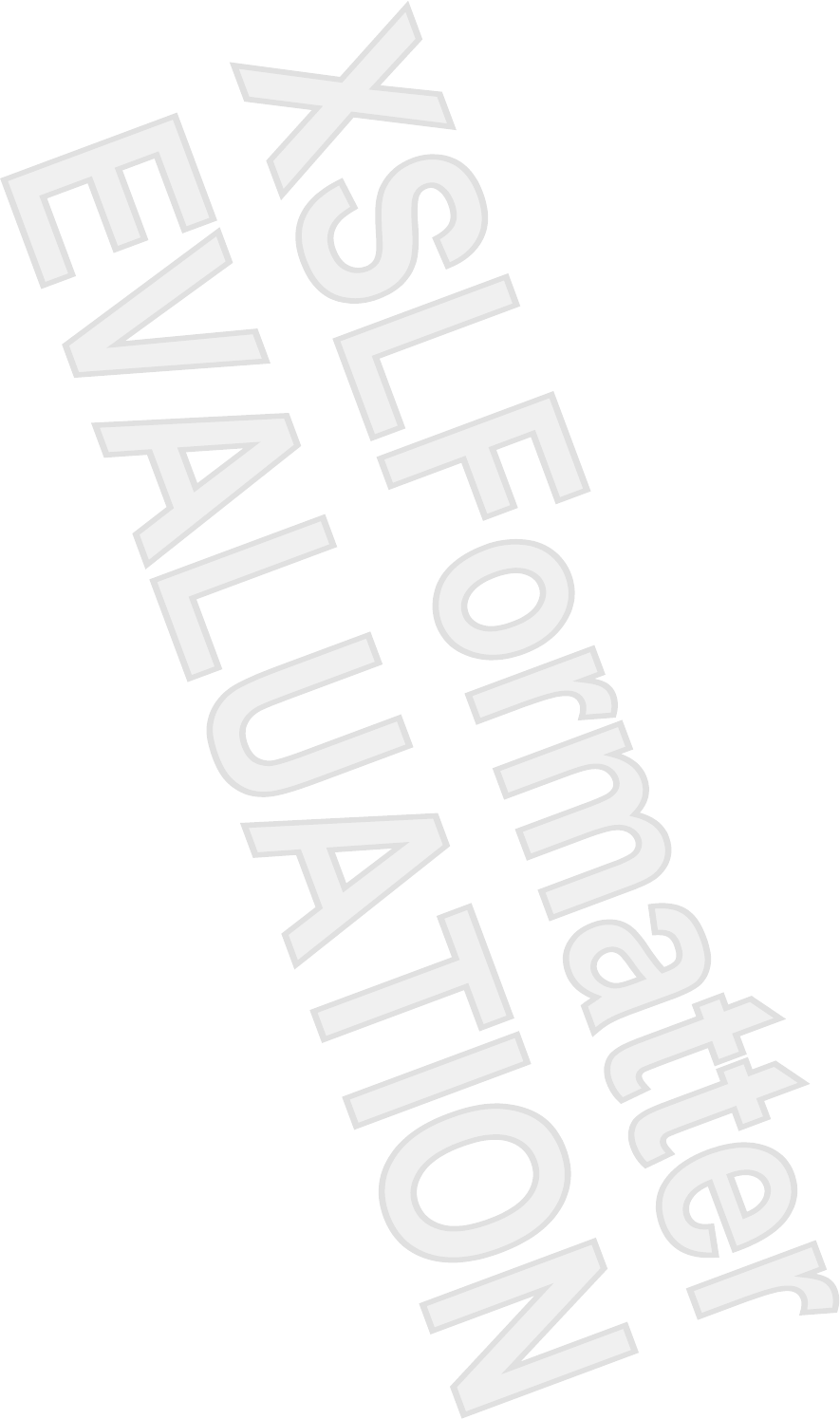
Configuring Advanced Proxy Settings
1. For the appropriate server type, enter the proxy server name and port.
2. If necessary, enter the credentials for connecting with your proxy server.
3. If you are configuring a Socks proxy, select Socks 4 or Socks 5. If using Socks 5, enter the
credentials for connecting with your proxy server.
32 Chapter 4 Connections ENWW
Antenna House XSL Formatter (Evaluation) http://www.antennahouse.com/
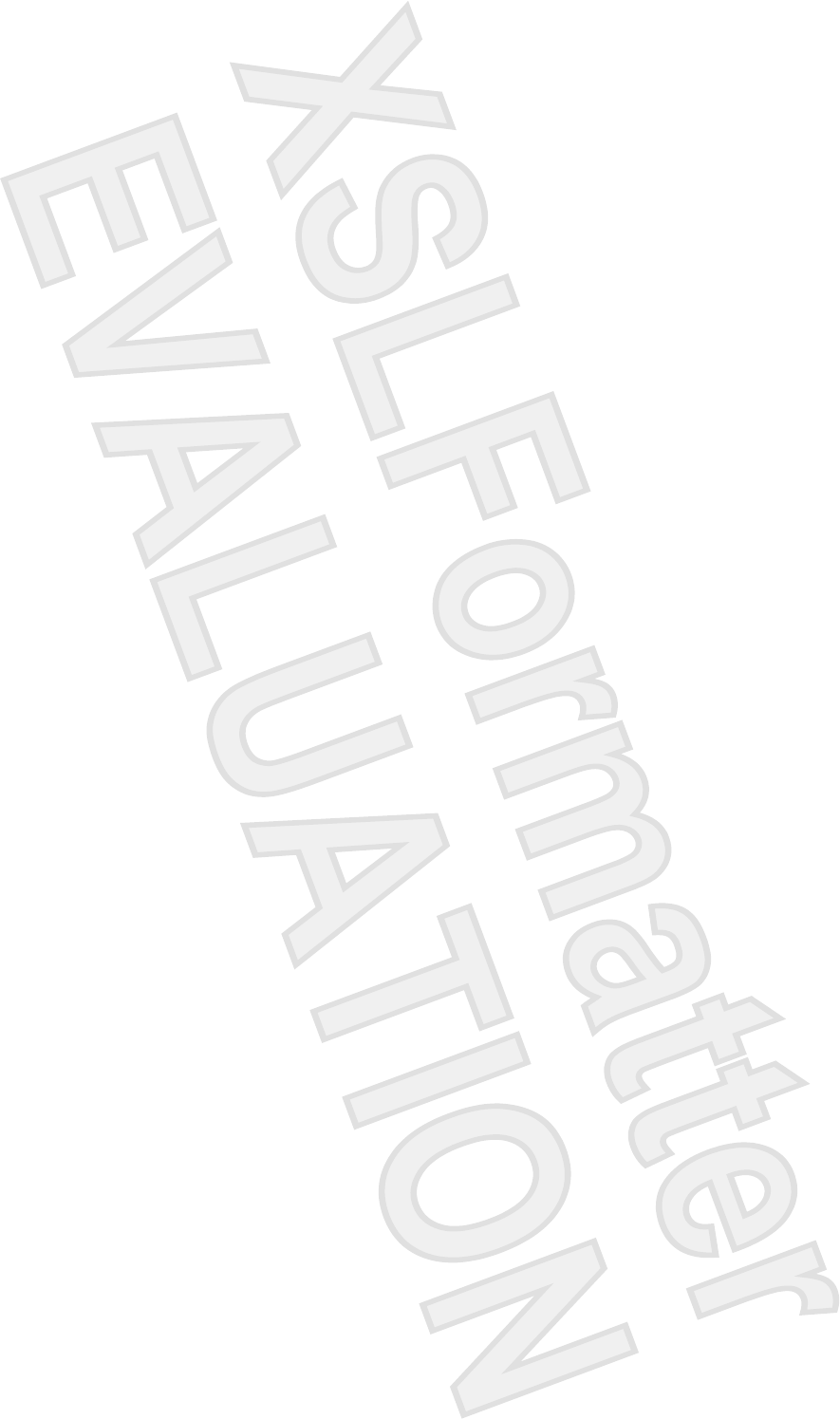
Using Advanced Connection Settings
1. Tap Start > Settings > Connections tab > iPAQ Wireless.
2. Tap the Wi-Fi icon to turn on Wi-Fi.
3. Connect to a network by tapping Start > Settings > Connections tab > Connections icon >
Advanced tab > Select Networks button.
4. Select My ISP to connect to the Internet through an Internet Service Provider (ISP) or select My
Work Network to connect to a company network. You should only choose My Work Network if
the network requires a proxy server. If you need to change or create a new network management
name, tap the Edit... or New... button and OK.
5. From the Connections screen, tap the Advanced tab to set up your Dialing Rules and
Exceptions and press OK.
ENWW Using Advanced Connection Settings 33
Antenna House XSL Formatter (Evaluation) http://www.antennahouse.com/
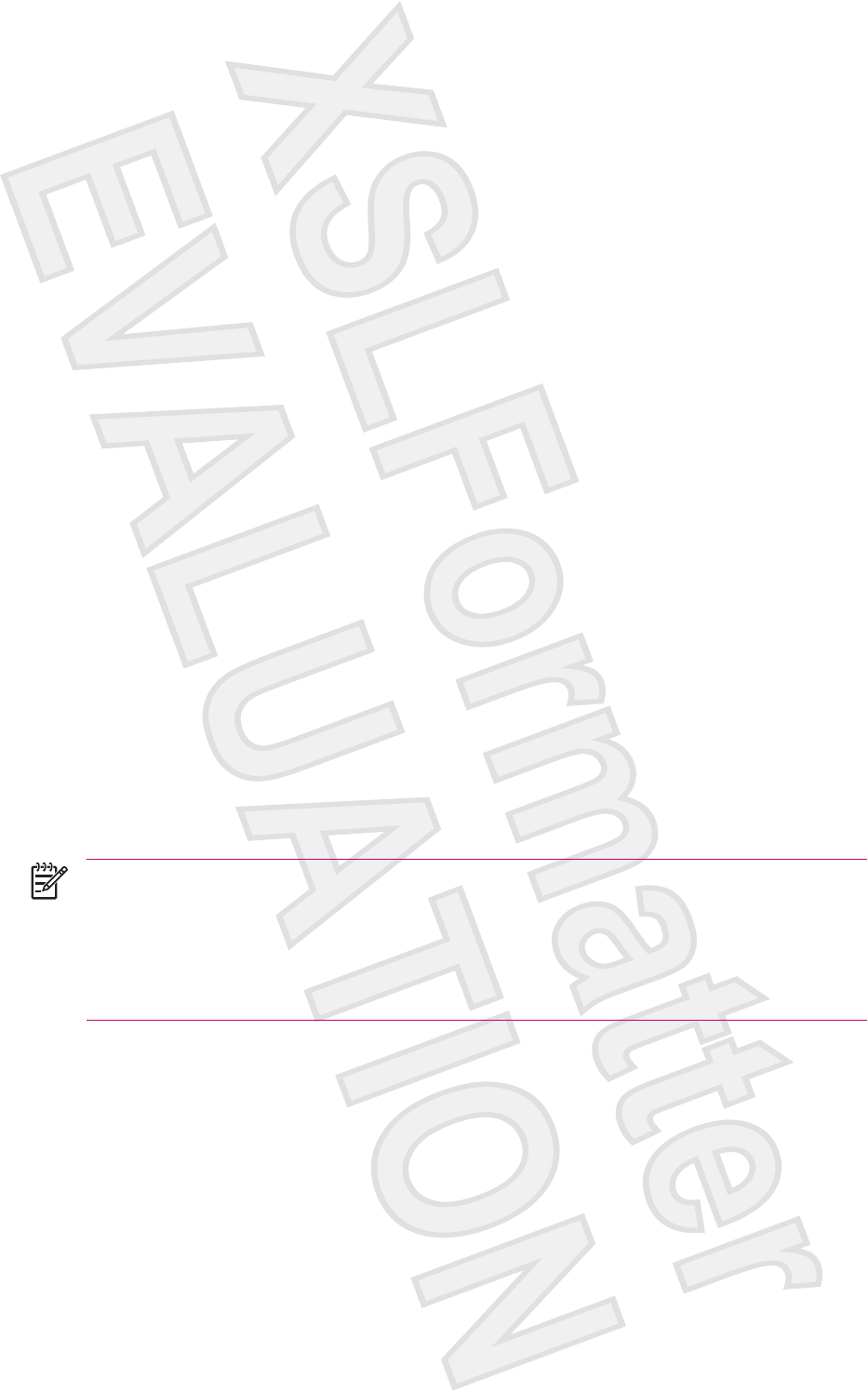
Setting Up a VPN Server Connection
A Virtual Private Network (VPN) connection helps you to securely connect to servers, such as a
corporate network, via the Internet.
Before you begin, obtain the following information from your network administrator:
●User name
●Password
●Domain name
●TCP/IP settings
●Host name or IP address of the VPN server
To set up a VPN server connection:
1. Tap Start > Settings > Connections tab > Connections.
2. Under My Work Network, tap Add a new VPN server connection and follow the instructions in
the New Connection wizard.
3. Under most circumstances, you should not need to change any advanced settings. However, you
need to change advanced settings when:
●The server to which you are connecting does not use dynamically-assigned addresses, and
you need to enter your TCP/IP settings.
●You need to change server DNS or WINS settings.
If either of these circumstances applies, from the My VPN screen, tap the Advanced button and
fill in the appropriate information. Tap OK to save the changes and return to the My VPN screen.
4. To view additional information for any screen in the wizard or while changing settings, tap the
Help question mark.
NOTE To change existing settings, under My Work Network, tap Manage existing
connections > VPN tab. Select the desired VPN connection, tap Edit, then follow the instructions
on the screen.
To manually start a connection, tap and hold the connection, then tap Connect.
To delete a connection, tap and hold the connection you want to remove, then tap Delete.
34 Chapter 4 Connections ENWW
Antenna House XSL Formatter (Evaluation) http://www.antennahouse.com/
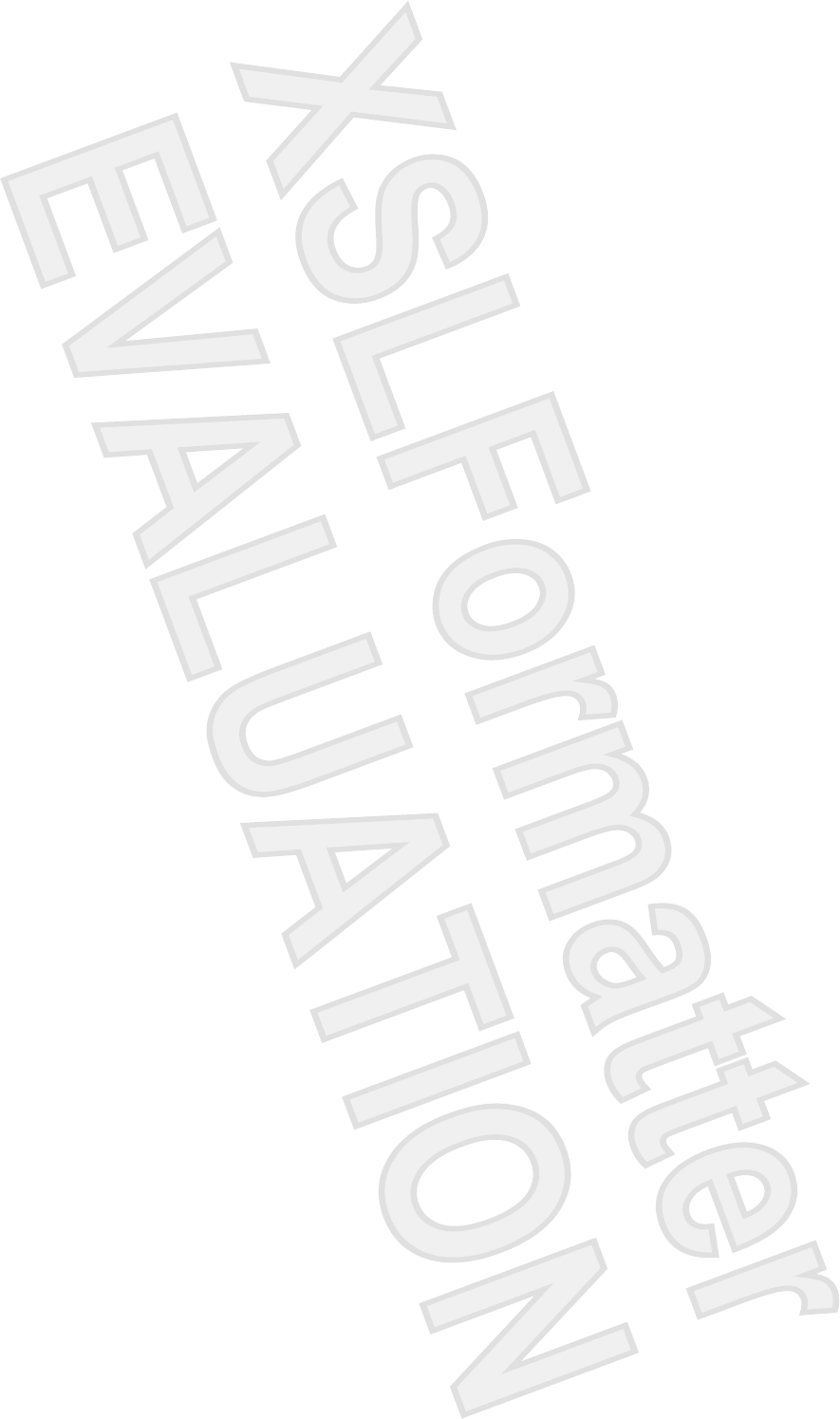
Changing a Connection Group Name
Your device is already set up with two groups of connection settings: My ISP and My Work Network.
You can change the name of these groups to something more meaningful. For example, if you put all
of your corporate settings under My Work Network connections, you can change the name to your
company's name.
1. Tap Start > Settings > Connections tab > Connections.
2. Under My ISP or My Work Network, tap Manage Existing Connections.
3. Tap the General tab.
4. Enter a name for the settings group.
ENWW Changing a Connection Group Name 35
Antenna House XSL Formatter (Evaluation) http://www.antennahouse.com/
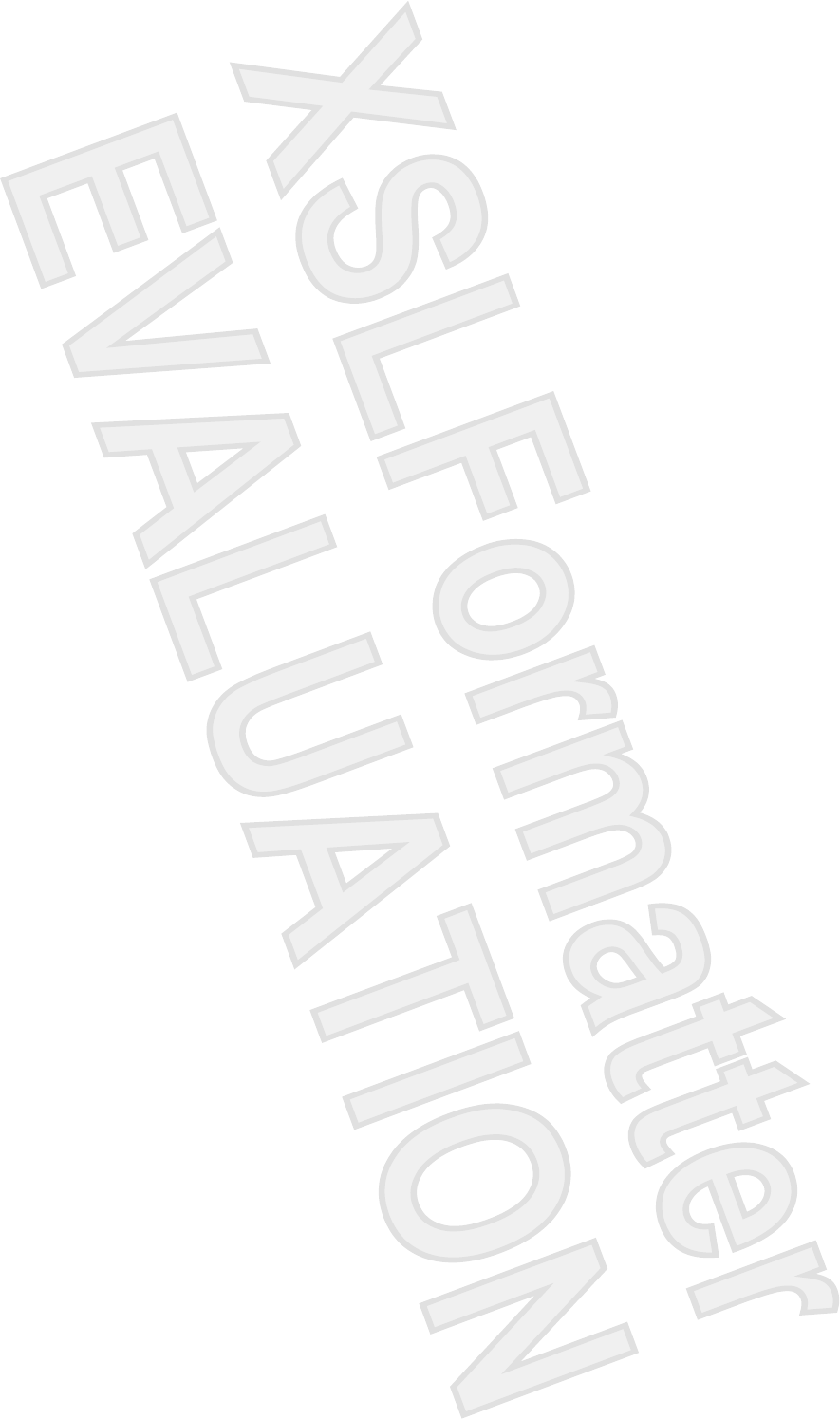
Ending a Connection
It can be useful to end a connection when you are done using it. This frees resources on your HP iPAQ
and can save connection charges.
●When connected using a modem or Virtual Private Network (VPN), tap Connections icon >
Disconnect.
●When connected using a cable, detach your HP iPAQ from the cable.
●When connected using Bluetooth, tap Start > iPAQ Wireless > Bluetooth tab > Bluetooth
Connections > Active Connections tab. Tap and hold the connection name, and then tap Delete.
●When connected using a network (Ethernet) card, remove the card from your HP iPAQ.
●When connected to GPS, close the GPS software.
36 Chapter 4 Connections ENWW
Antenna House XSL Formatter (Evaluation) http://www.antennahouse.com/
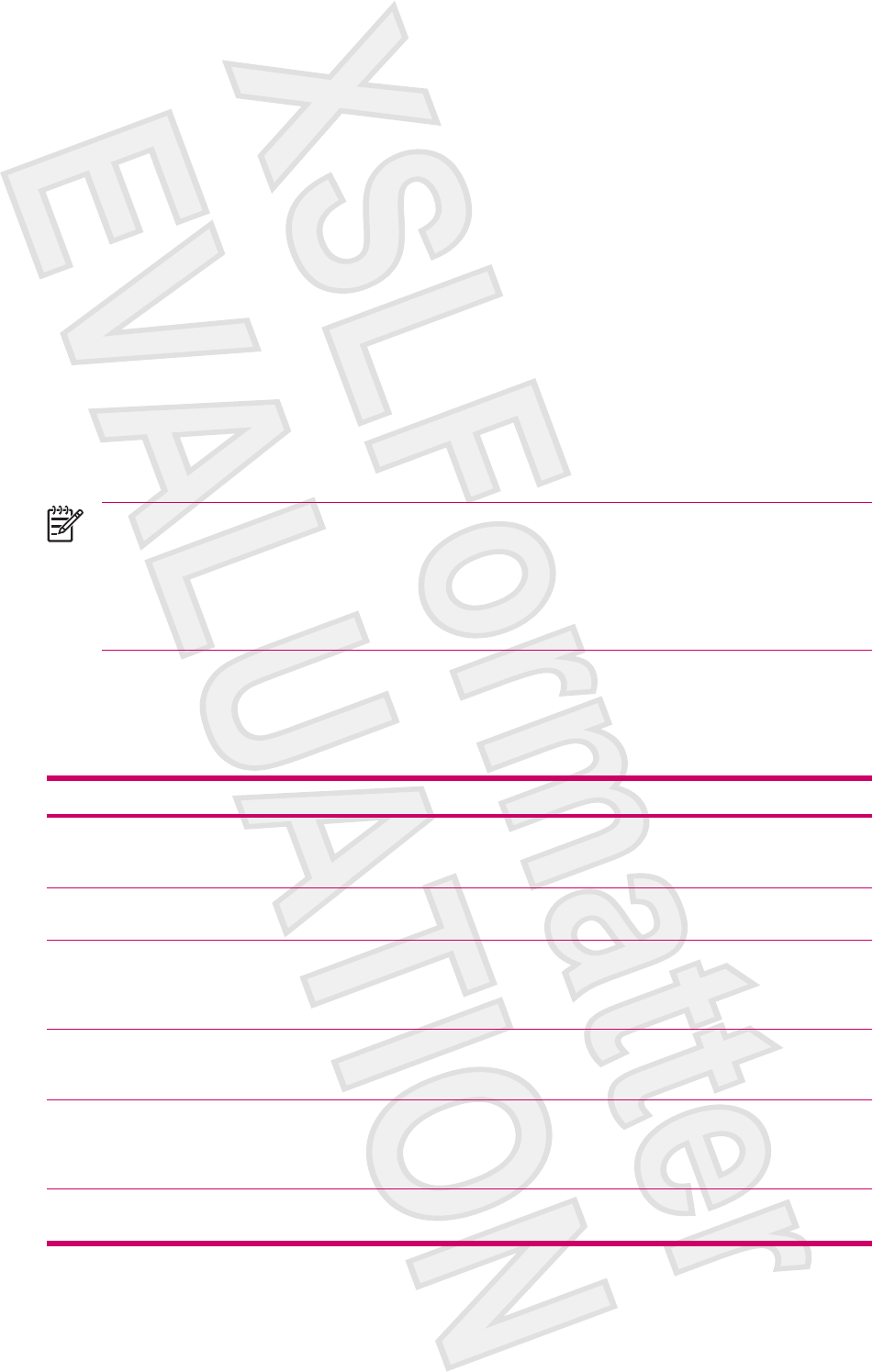
Wi-Fi
Wi-Fi
With wireless access, you do not need to use cables to connect your HP iPAQ to the Internet. Instead,
access points transmit data to and from your wireless device. Your HP iPAQ can connect to an 802.11b/
g WLAN or connect directly to other WLAN-enabled devices. With Wi-Fi, you can:
●Access the Internet
●Send and receive e-mail
●Access corporate network information
●Use Virtual Private Networks (VPNs) for secure remote access
●Use hotspots for wireless connectivity
Tap Start > iPAQ Wireless to access the Wi-Fi features.
NOTE Use of dial-up and wireless Internet, e-mail, corporate networks, and other wireless
communications, such as Bluetooth devices, may require separately purchased additional
hardware and other compatible equipment, in addition to a standard Wi-Fi infrastructure and a
separately purchased service contract. Check with your service provider for availability and
coverage in your area. Not all web content may be available. Some web content may require
installation of additional software.
Wi-Fi Terms
It is recommended that you become familiar with the following terms as you begin to use Wi-Fi
technology.
Term Definition
802.11 standard An approved standard specification of radio technology from
the Institute of Electrical and Electronic Engineers (IEEE) used
for wireless local area networks (WLANs).
Device-to-computer or ad-hoc A mode that does not use access points. It provides
independent peer-to-peer connectivity in a wireless LAN.
Domain Name System (DNS) The way that Internet domain names are located and
translated into IP addresses. It is an easy to remember name
for an Internet address. Every web site has its own specific IP
address on the Internet.
Encryption An alphanumeric (letters and/or numbers) conversion process
of data primarily used for protection against any unauthorized
people.
Hotspots Public or private areas where you can access Wi-Fi service.
These wireless connections can be located, for example, at a
library, cyber cafe, hotel, airport lounge, or convention center.
This service can be free or sometimes requires a fee.
Infrastructure This connection mode uses wireless access points to connect
to networks.
ENWW Wi-Fi 37
Antenna House XSL Formatter (Evaluation) http://www.antennahouse.com/
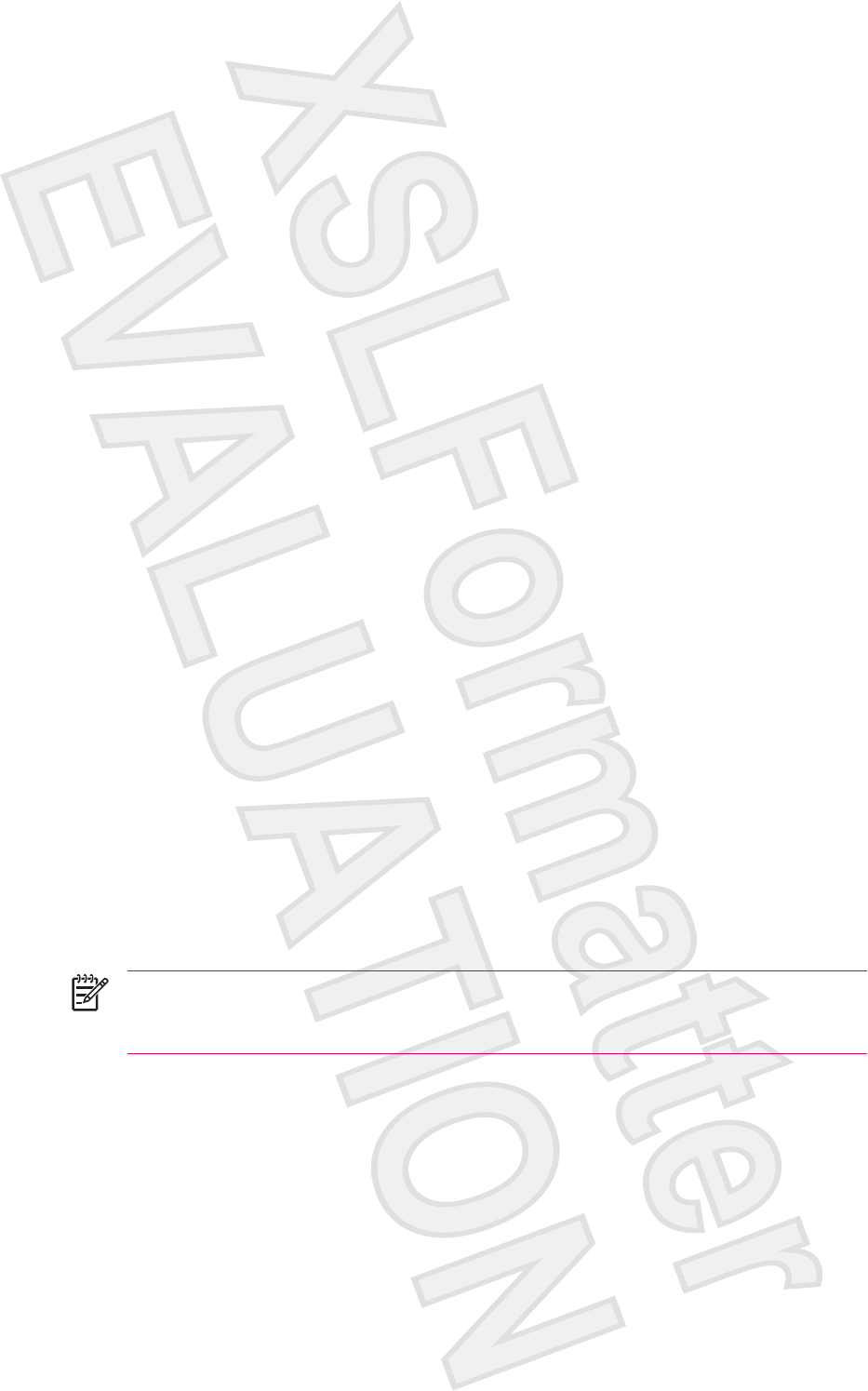
Automatically Connecting to a Wi-Fi Network
When you connect to a Wi-Fi network, the HP iPAQ automatically detects Wi-Fi networks that are
broadcasting their signal. If your Wi-Fi network isn't set to broadcast, then you must connect to it
manually. Before trying to connect to a Wi-Fi network, determine if authentication information is needed
by contacting your network administrator.
1. Tap the iPAQ Wireless icon.
2. Tap the Wi-Fi icon to turn Wi-Fi on.
3. Once the HP iPAQ detects a Wi-Fi network, you are asked to choose if you want to connect. Select
the network you want to connect to and tap Connect.
Manually Connecting to a Wi-Fi Network
A wireless network can be added manually by entering the settings information to add the network.
Before trying to connect to a Wi-Fi network, determine if authentication information is needed by
contacting your network administrator.
1. Tap the iPAQ Wireless icon.
2. Tap the Wi-Fi icon to turn Wi-Fi on.
3. On the Wi-Fi tab, tap View Wi-Fi Networks.
4. Tap Add New.
5. Enter the Network name.
6. Choose a connection method. Select The Internet to connect to the Internet through an Internet
Service Provider (ISP) or select Work to connect to a company network. You should only choose
Work if the network requires a proxy server.
7. Tap the Network Key tab.
●To use authentication, and select the authentication method from the Authentication list.
●To use data encryption, select an encryption method from the Data encryption list.
●To automatically use a network key, tap The key is automatically provided. Otherwise, enter
the network key.
NOTE To delete a connection, tap the iPAQ Wireless icon > Wi-Fi tab> View Wi-Fi
Networks. Tap and hold the connection you want to remove, and then tap Remove
Settings.
Finding an IP Address
1. Tap the iPAQ Wireless icon.
2. Tap the Wi-Fi icon to turn Wi-Fi on.
3. Connect to a network automatically, or connect manually by tapping View Wi-Fi Networks on the
Wi-Fi tab.
38 Chapter 4 Connections ENWW
Antenna House XSL Formatter (Evaluation) http://www.antennahouse.com/
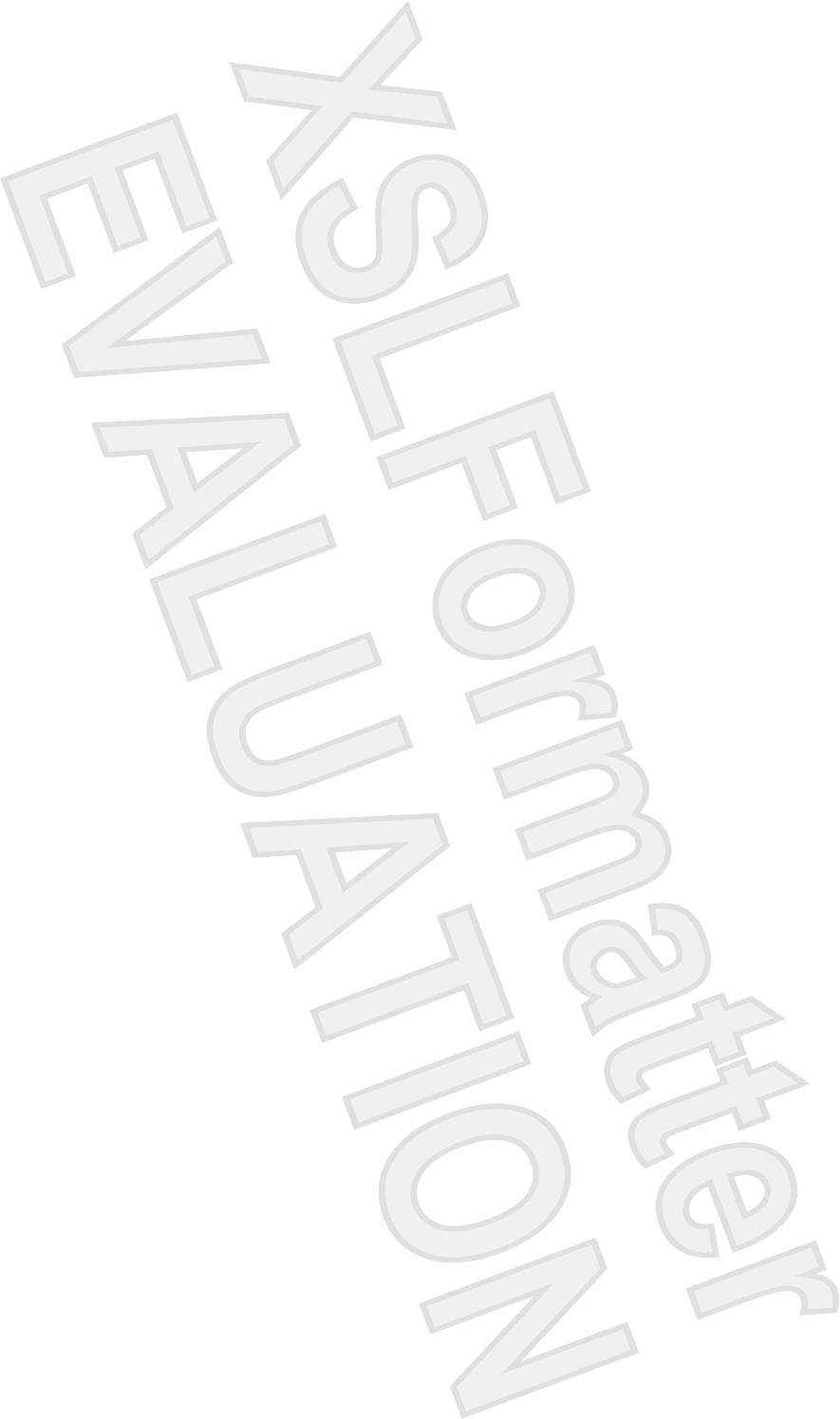
4. Select a Wi-Fi network and tap OK.
5. Tap Advanced located on the Wi-Fi tab. The Wi-Fi IP Address is shown here as well as other
detailed information about your current Wi-Fi connection.
Deleting a Wireless Network
You can delete networks you manually entered. However, if a network was automatically detected, you
are not able to delete it.
To delete an existing or available wireless network:
1. Tap the iPAQ Wireless icon.
2. Tap the Wi-Fi icon to turn Wi-Fi on.
3. Tap the Wi-Fi tab > View Wi-Fi Networks > Wireless tab.
4. In the Configure Wireless Networks box, tap and hold the network you want to delete.
5. Tap Remove Settings.
Configuring 802.1x Authentication Settings
Before performing these steps, determine if authentication information is needed by contacting your
network administrator.
1. To manually enter information, tap Start > iPAQ Wireless > Wi-Fi tab > View Wi-Fi Networks >
Wireless tab.
2. In Configure Wireless Networks, select the network you want to configure.
3. For increased security, tap 802.1X tab > Use IEEE 802.1x network access control. Then select
the appropriate EAP type.
ENWW Wi-Fi 39
Antenna House XSL Formatter (Evaluation) http://www.antennahouse.com/

Bluetooth
Bluetooth Terms
It is recommended that you become familiar with the following terms as you begin to use Bluetooth
technology.
Term Definition
Authentication Verification of a numeric passkey before a connection or
activity can be completed.
Authorization Approval of a connection, access, or activity before it can be
completed.
Bonding (Paired devices) Creating a trusted connection between your device and
another. After a bond is created, the two devices become
paired.
A paired device does not require authentication or
authorization.
Device address Unique electronic address of a Bluetooth device.
Device discovery Location and recognition of another Bluetooth device.
Device ID Name that a Bluetooth device provides when discovered by
another device.
Encryption Method of protecting data.
Passkey Code you enter to authenticate connections or activities
requested by other devices.
Personal Information Manager (PIM) Collection of programs used to manage daily business tasks
(for example: Contacts, Calendar, and Tasks).
Profiles Collection of Bluetooth settings.
Service discovery Determination of which programs you have in common with
other devices.
Working with Bluetooth Manager
Use Bluetooth Manager to:
●Establish connections
●Exchange business cards
●Display shortcuts
1. Tap the iPAQ Wireless icon.
2. Tap the Bluetooth icon to turn Bluetooth on.
3. Tap the Bluetooth tab > Bluetooth Connections. The first screen that displays is My Shortcuts.
When you are required to locate a device and connect to it, the Bluetooth browser searches for other
Bluetooth devices.
40 Chapter 4 Connections ENWW
Antenna House XSL Formatter (Evaluation) http://www.antennahouse.com/
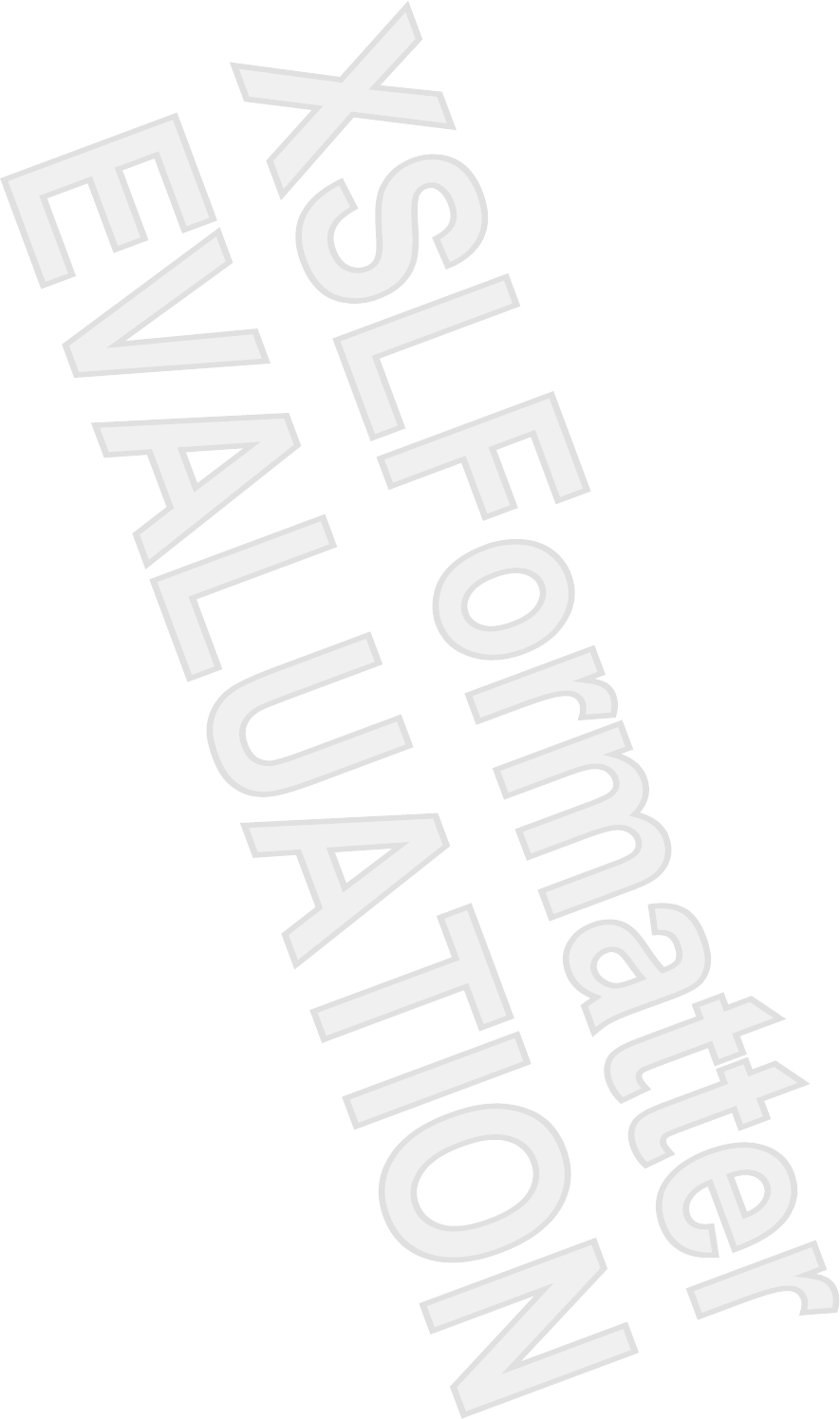
Connecting to a Computer using Bluetooth
For best results, connect the HP iPAQ to the computer using USB to establish a synchronization
relationship before connecting using Bluetooth.
1. Follow the instructions in ActiveSync Help on the computer for configuring Bluetooth on your
computer to support ActiveSync.
2. On the HP iPAQ, tap Start > Programs > ActiveSync.
3. Tap Menu > Connect via Bluetooth. Make sure the device and computer are within close range.
4. If this is the first time you have connected to this computer using Bluetooth, complete the Bluetooth
wizard on the HP iPAQ and set up a Bluetooth partnership with the computer.
5. Tap Sync.
6. When finished, tap Menu > Disconnect Bluetooth.
7. To preserve battery power, turn off Bluetooth.
Bluetooth Device Profiles
The functions that Bluetooth supports are called services or profiles. You can communicate only with
Bluetooth devices that support at least one of the following profiles:
●ActiveSync—Uses SPP to connect to ActiveSync on a computer
●Advanced Audio Distribution Profile (A2DP)
●Audio Video Remote Control Profile (AVRCP)
●Basic Imaging Profile (BIP)
●Basic Printer Profile (BPP)
●File Transfer Protocol (FTP)
●Generic Access Profile (GAP)
●Hands Free Profile (HFP)
●Headset Support Profile (HSP)
●Human Interface Device Profile (HID)
●LAN Access Profile (LAP)
●Object Exchange (OBEX) Protocol
●Object Push Protocol (OPP)
●Personal Area Network (PAN)
●Serial Port Profile (SPP)
●Service Discovery Application Profile (SDAP)
ENWW Bluetooth 41
Antenna House XSL Formatter (Evaluation) http://www.antennahouse.com/
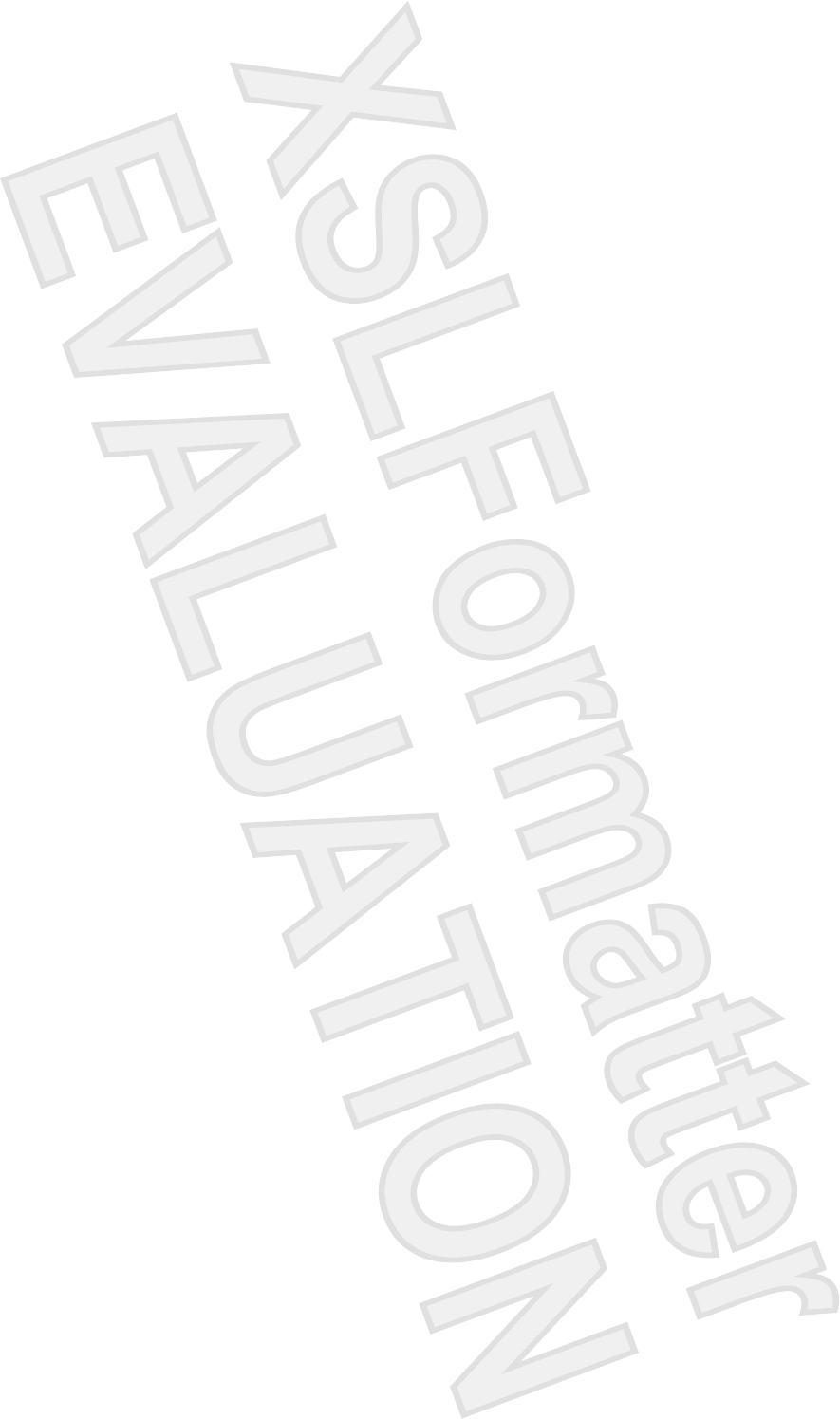
Creating, Ending, and Accepting a Bluetooth Partnership
You can create a partnership between your HP iPAQ and another device that has Bluetooth capabilities.
Once you do this, the devices must have Bluetooth turned on but do not need to be discoverable for
you to exchange information between them.
1. Be sure the two devices are turned on, discoverable, and within close range.
2. Tap Start > iPAQ Wireless > Bluetooth tab > Bluetooth Connections.
3. Tap New.
4. Follow the instructions on the screen..
To end a Bluetooth Partnership:
1. Tap Start > iPAQ Wireless > Bluetooth tab > Bluetooth Connections.
2. Tap and hold the partnership you want to end.
3. Tap Delete.
To accept a Bluetooth Partnership:
1. Be sure your device is turned on, discoverable, and within close range.
2. When prompted to accept a partnership with the device that is requesting the relationship, tap Yes.
3. If a passkey is requested, enter an alphanumeric passkey between 1 and 16 characters in
Passkey, and tap Next. Enter the same passkey in the device requesting the partnership. Using
a passkey provides greater security.
If you cannot discover another device, try the following:
●Be sure Bluetooth is turned on.
●Move closer to the device.
●Be sure the device you are attempting to connect to is on and allows access to being discovered
by other devices.
Renaming a Bluetooth Partnership
1. Tap Start > iPAQ Wireless > Bluetooth tab > Bluetooth Connections.
2. Tap and hold the partnership you want to rename on the My Shortcuts tab.
3. Tap Rename.
4. Enter a new name for the partnership.
42 Chapter 4 Connections ENWW
Antenna House XSL Formatter (Evaluation) http://www.antennahouse.com/
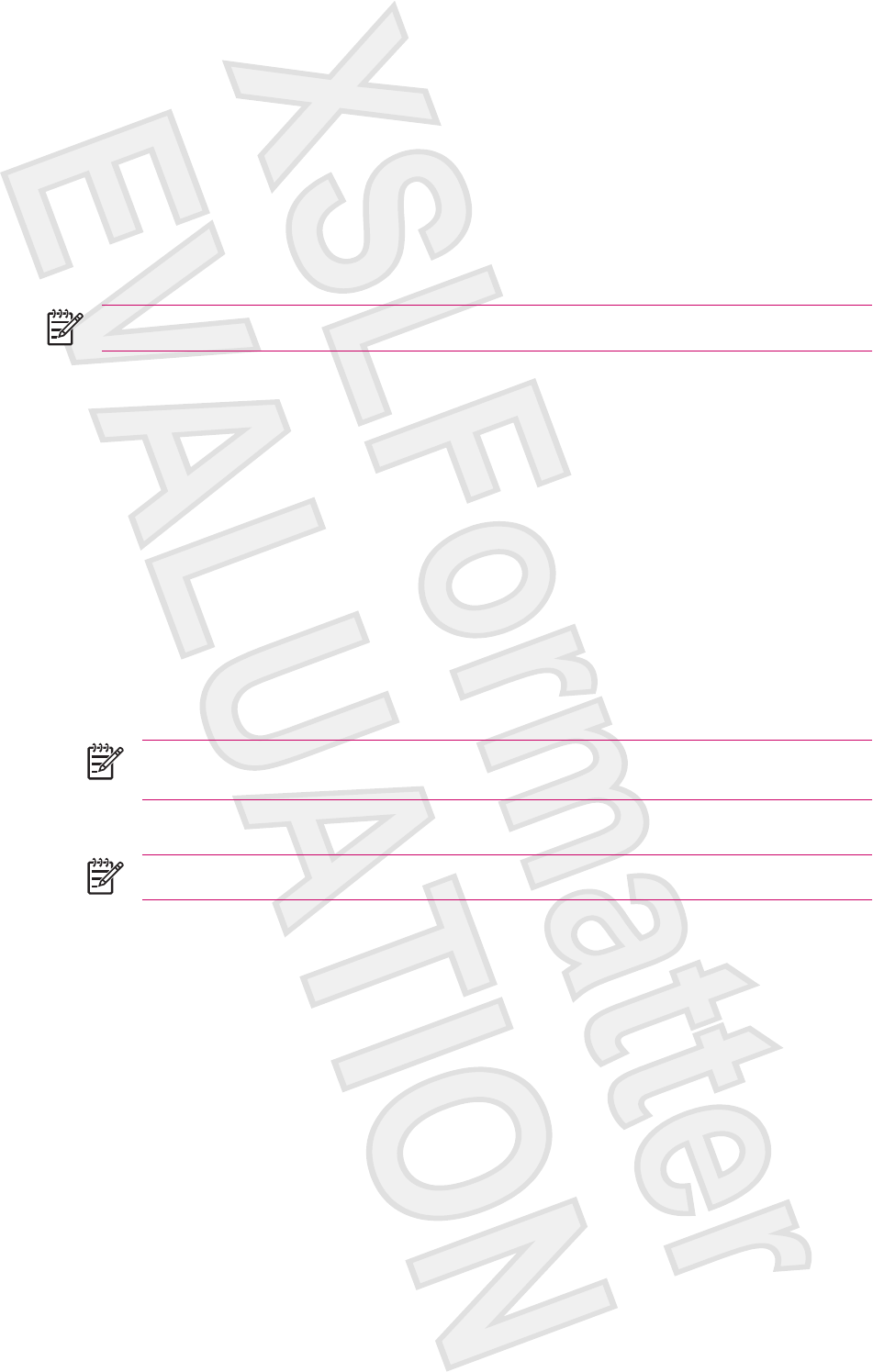
Making a Device Discoverable
When your HP iPAQ is discoverable, other devices with Bluetooth capabilities can detect, or discover,
your HP iPAQ and attempt to beam information to it, establish a partnership, or use a Bluetooth service.
1. Tap Start > iPAQ Wireless > Bluetooth tab > Bluetooth Settings> Accessibility tab.
2. Select the Allow other devices to connect and the Other devices can discover me check boxes.
3. Tap OK.
NOTE If you no longer want your HP iPAQ to be discoverable, clear the check boxes.
Opening Bluetooth Settings
1. Tap the iPAQ Wireless icon.
2. Tap the Bluetooth icon to turn on Bluetooth.
3. Tap the Bluetooth tab > Bluetooth Settings.
Setting Up an Incoming or Outgoing Bluetooth Serial (COM) Port
1. Be sure your HP iPAQ is connected to the other device via Bluetooth.
2. Tap Start > Settings > Connections tab.
3. Tap Bluetooth > Services tab.
4. Tap Serial Port > Advanced.
NOTE Outbound COM Port is only available if at least one Bluetooth device supports
serial (COM) connection.
5. Select a numbered COM port from the list.
NOTE If the port cannot be created, it is in use. Select a different numbered port.
6. Tap OK.
7. To limit communication on this COM port to only devices with which the HP iPAQ has a Bluetooth
partnership, select the Authentication (Passkey) required check box.
ENWW Bluetooth 43
Antenna House XSL Formatter (Evaluation) http://www.antennahouse.com/
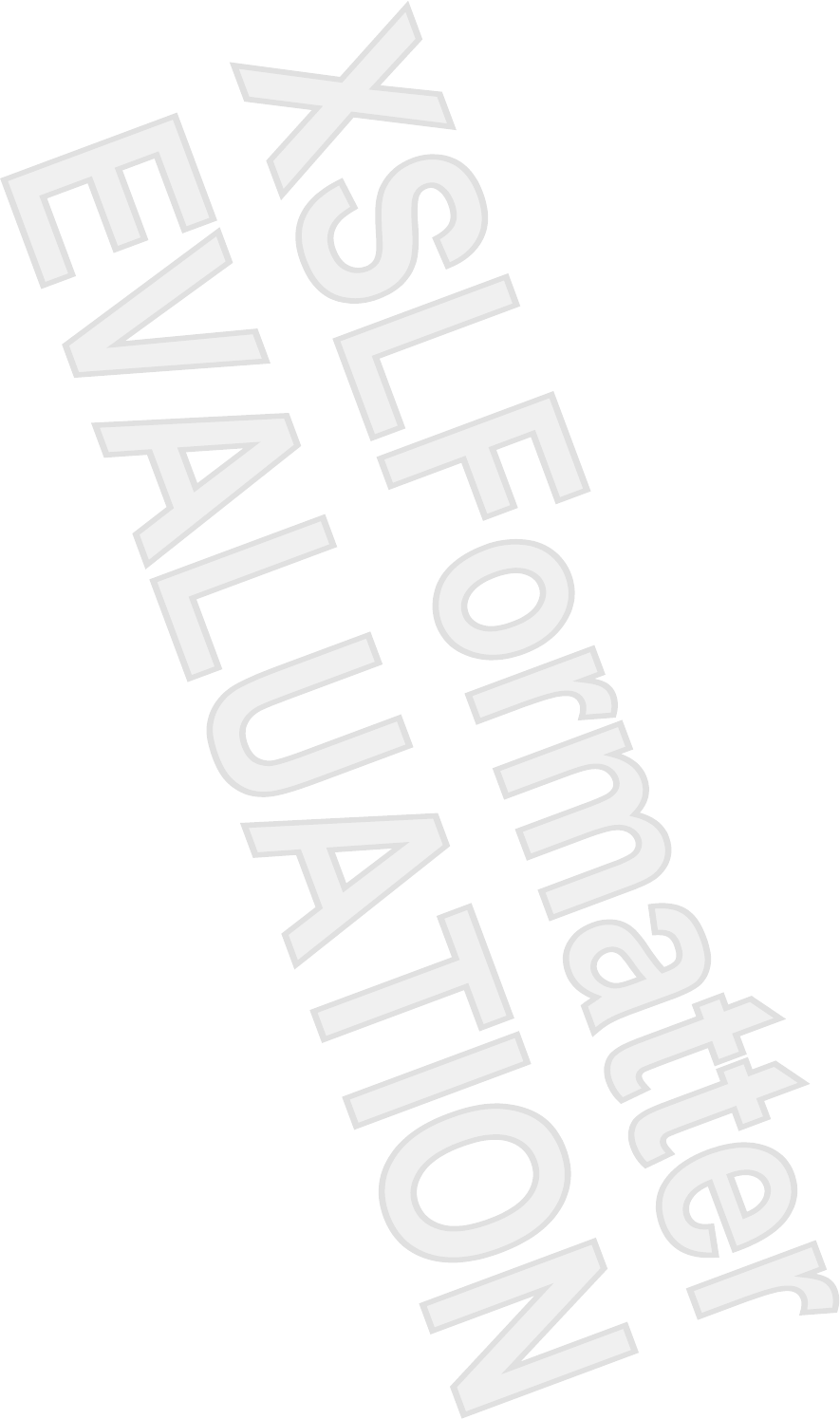
5 HP Photosmart Mobile
HP Photosmart Mobile
Use HP Photosmart Mobile to:
●View pictures stored on the HP iPAQ or a storage card.
●Add voice or text notes to pictures.
●Print pictures.
●View a slideshow.
●Send pictures by e-mail attachments.
●Associate a picture with a Contact.
●Assign a picture to the Today screen background.
ENWW HP Photosmart Mobile 45
Antenna House XSL Formatter (Evaluation) http://www.antennahouse.com/
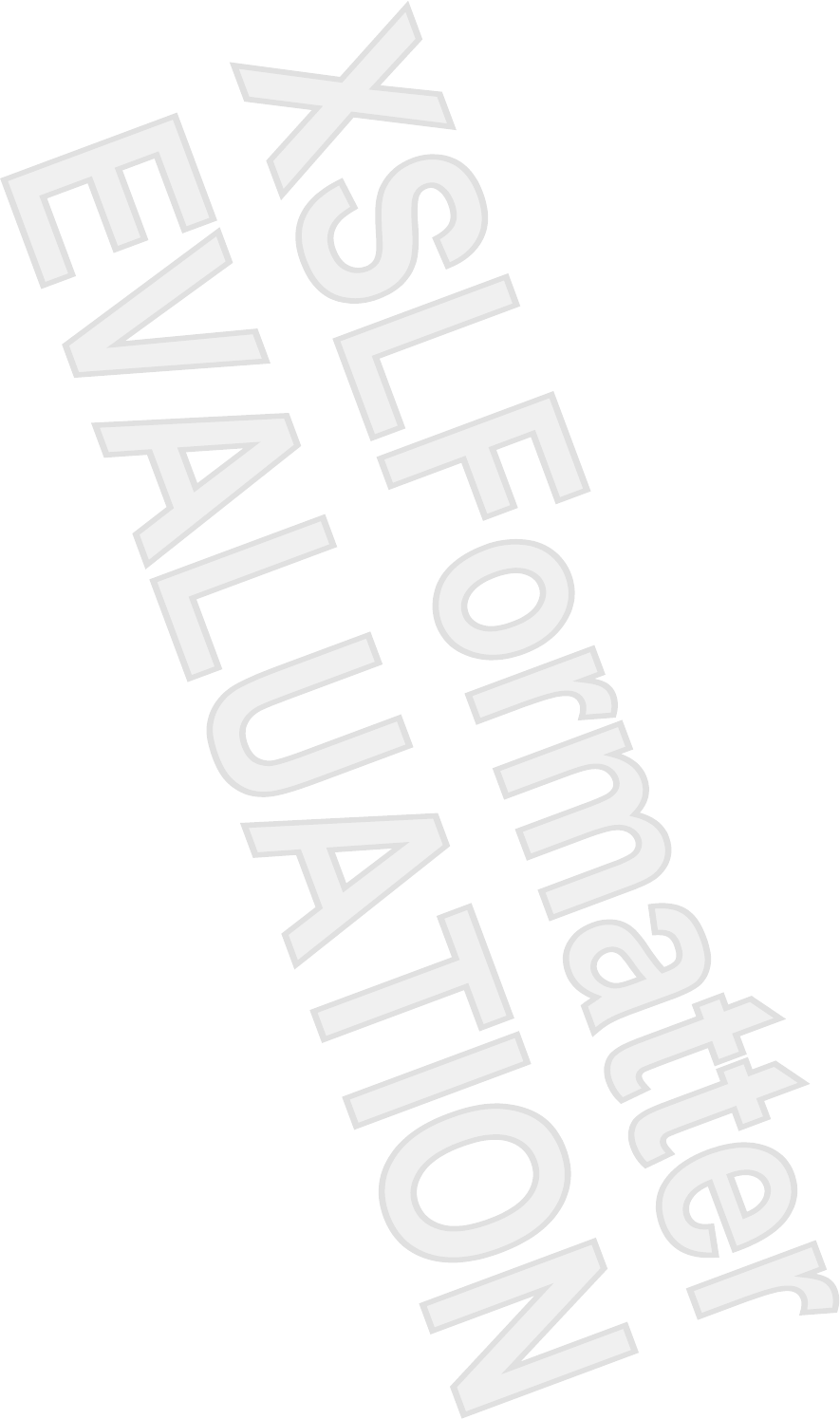
Attaching a Voice Note to a Picture
To attach a sound file to a picture:
1. Tap Start > Programs > Photosmart Mobile.
2. Tap the thumbnail picture in which you want to add a voice note.
3. Tap the Cassette icon.
4. Tap the Record button on the Recording toolbar.
5. Speak into the microphone to record the sound file and tap the Stop button when finished.
6. Tap the Cassette icon again to close the Recording toolbar.
46 Chapter 5 HP Photosmart Mobile ENWW
Antenna House XSL Formatter (Evaluation) http://www.antennahouse.com/

E-mailing Pictures
1. Tap Start > Programs > Photosmart Mobile.
2. Tap the thumbnail picture to be e-mailed.
NOTE If you cannot view or hear the media file to be e-mailed, the file may be protected
by Digital Rights Management (DRM). DRM is software that enables secure distribution and
prevents illegal distribution of pictures, videos, music, movies, and ring tones over the
Internet. For more information on DRM, refer to the on-screen Help by tapping Start >
Help and search on DRM.
3. Tap Menu > Send.
4. Tap E-mail Attachment.
5. Tap the Reduce sent photo size to check box and select the reduction percentage desired.
6. Tap Next.
7. Enter the appropriate e-mail address or use Contacts by tapping Menu > Add Recipient.
8. Enter other appropriate information, such as an e-mail title and message.
9. Tap Send.
ENWW E-mailing Pictures 47
Antenna House XSL Formatter (Evaluation) http://www.antennahouse.com/
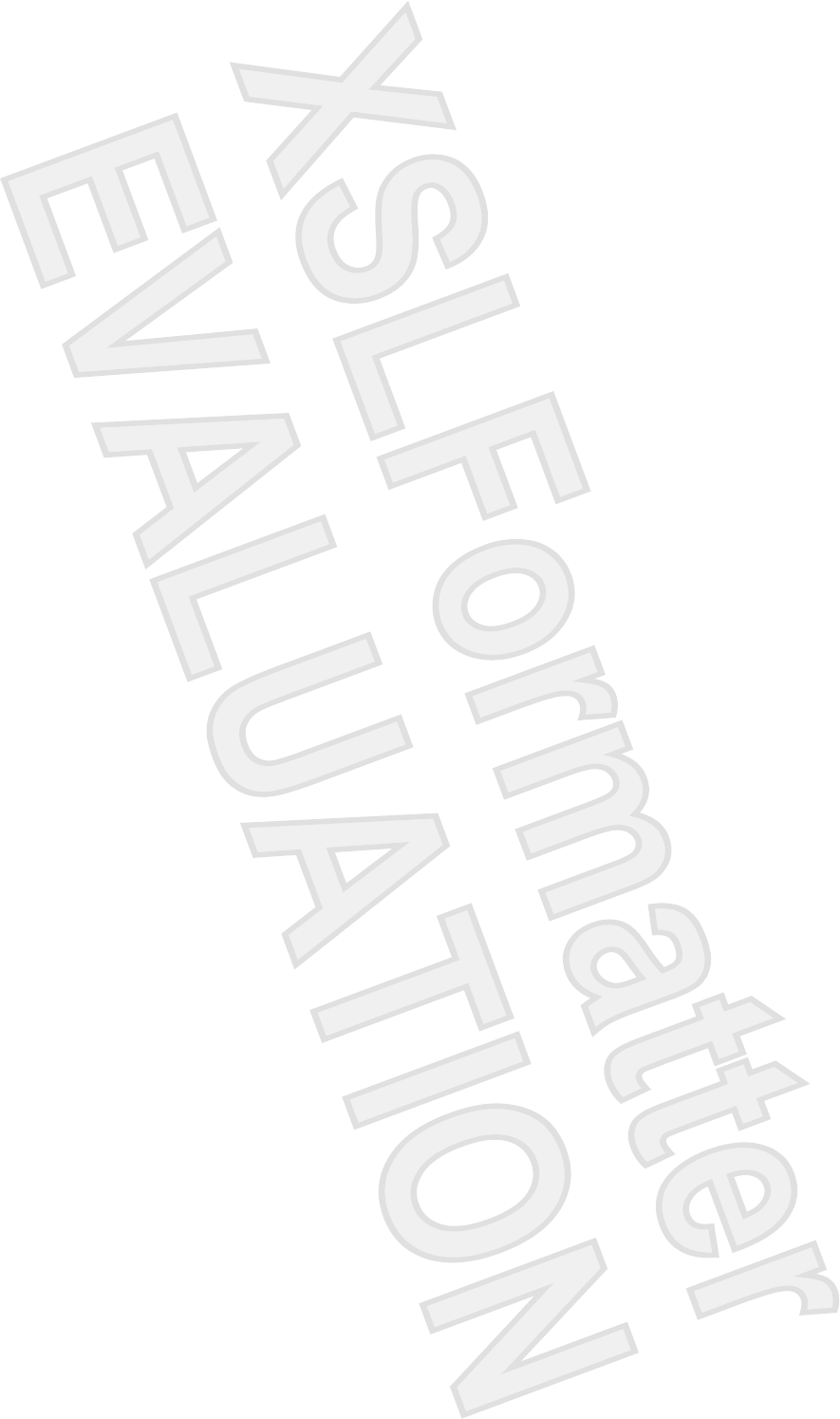
Viewing a Slideshow
To view a slideshow:
1. Tap Start > Programs > Photosmart Mobile.
2. Tap the slideshow icon at the bottom of the screen.
3. Tap the screen to view the Pause, Forward, Backward, and Stop buttons.
48 Chapter 5 HP Photosmart Mobile ENWW
Antenna House XSL Formatter (Evaluation) http://www.antennahouse.com/
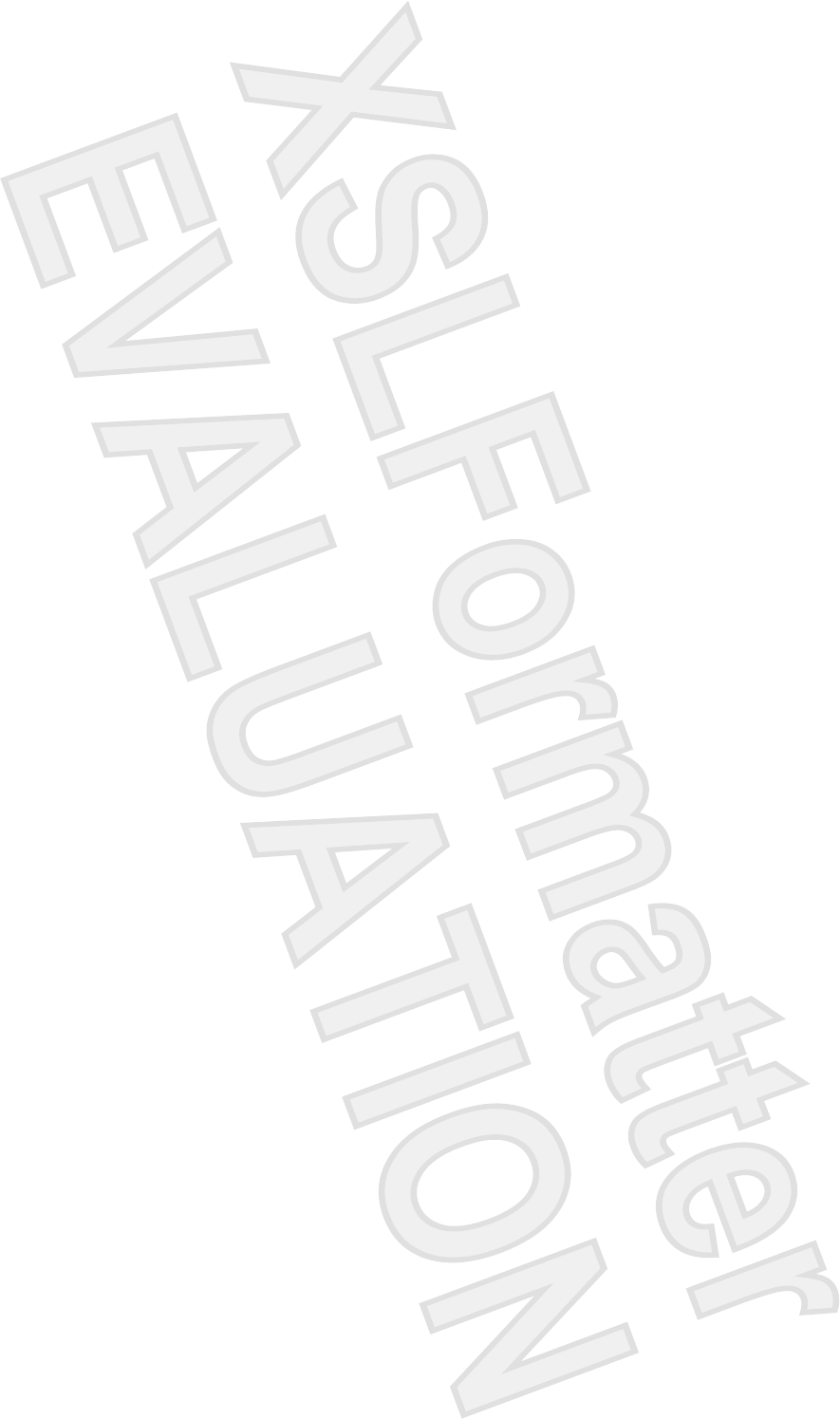
6 HP Photosmart Premier
HP Photosmart Premier
HP Photosmart Premier allows you to view, organize, edit, share, and print pictures on your personal
computer. Use the Getting Started CD to install this imaging software on a personal computer.
With HP Photosmart Premier, you can:
●View, organize, and manage pictures
●View variable thumbnail size, single, full screen, and slide show images
●Assign keywords for fast, reliable searches
●Sort pictures by date, name, keywords, location, or recently used
●Create slide shows with music for your personal computer
●Edit pictures
●Correct red-eye and crop, rotate, and flip images
●Auto corrects the picture with the one-button auto-fix
●View edited images side-by-side with the original
●Play, trim, and extract single frames from video
●Print pictures
●Printing the most popular size pictures
●Set correct driver properties for photo printing on "older" HP printers
●Adjust printing with active preview
●Create custom photo packages with page optimization, index, and video action printing
●Create templates
●Produce easy-to-use album templates
●Generate plug-ins for additional album templates, panoramas, and creative projects
●Construct easy panorama stitching and printing
●Build hundreds of creative templates for cards and calendars, album pages, CD labels, flyers
and brochures
ENWW HP Photosmart Premier 49
Antenna House XSL Formatter (Evaluation) http://www.antennahouse.com/
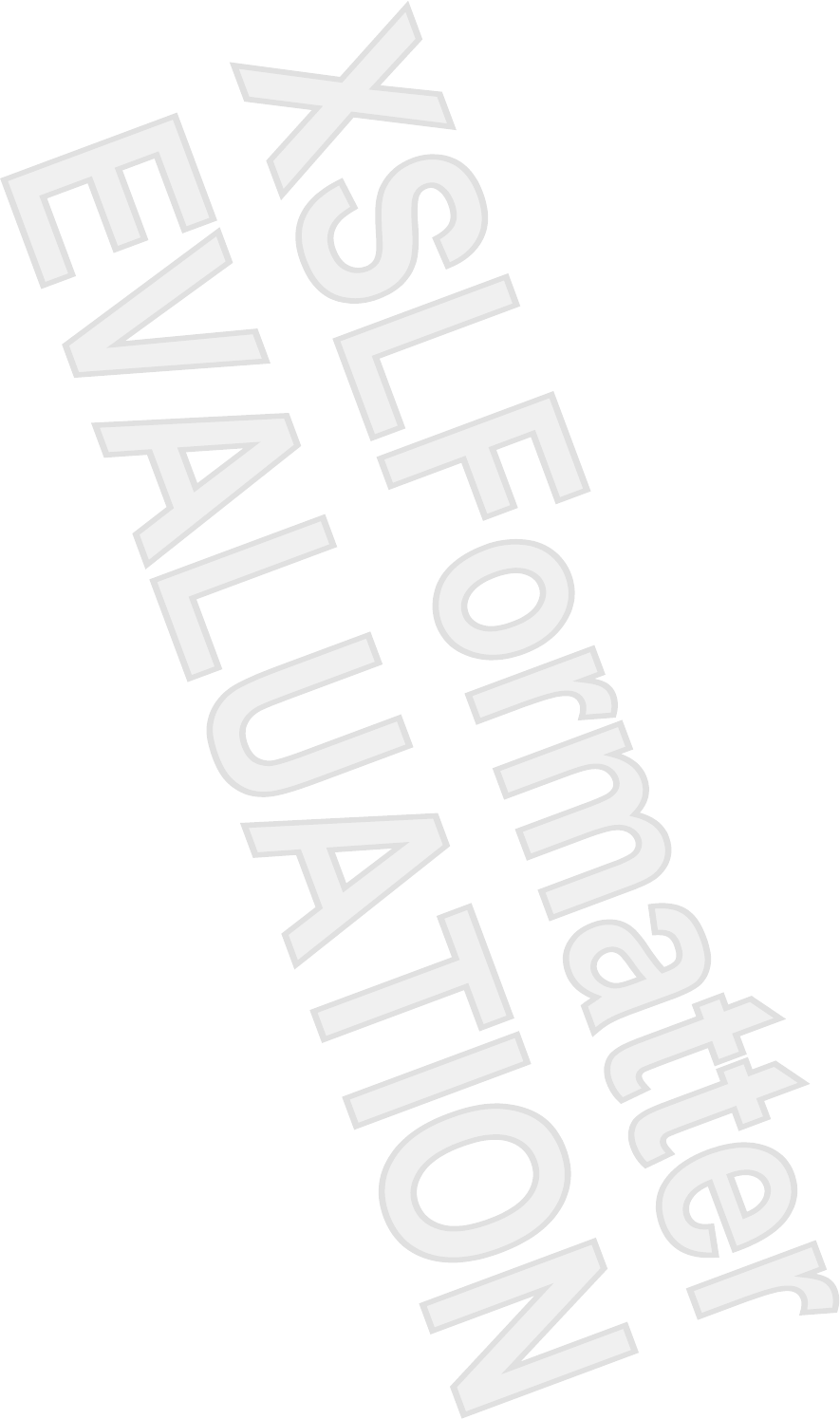
●Share pictures
●Use HP Instant Share e-mailing—e-mail pictures without large attachments
●Select picture thumbnails for e-mail lists
●Integrate with Outlook
TM
address books
●Backup images of pictures
●Upgrade available for CD archiving
●Back up and restore to CD (or DVD with upgrade)
●Set reminders to archive photos
●Digital negatives
For detailed instructions on each HP Photosmart Premier feature, refer to Help inside the application.
50 Chapter 6 HP Photosmart Premier ENWW
Antenna House XSL Formatter (Evaluation) http://www.antennahouse.com/
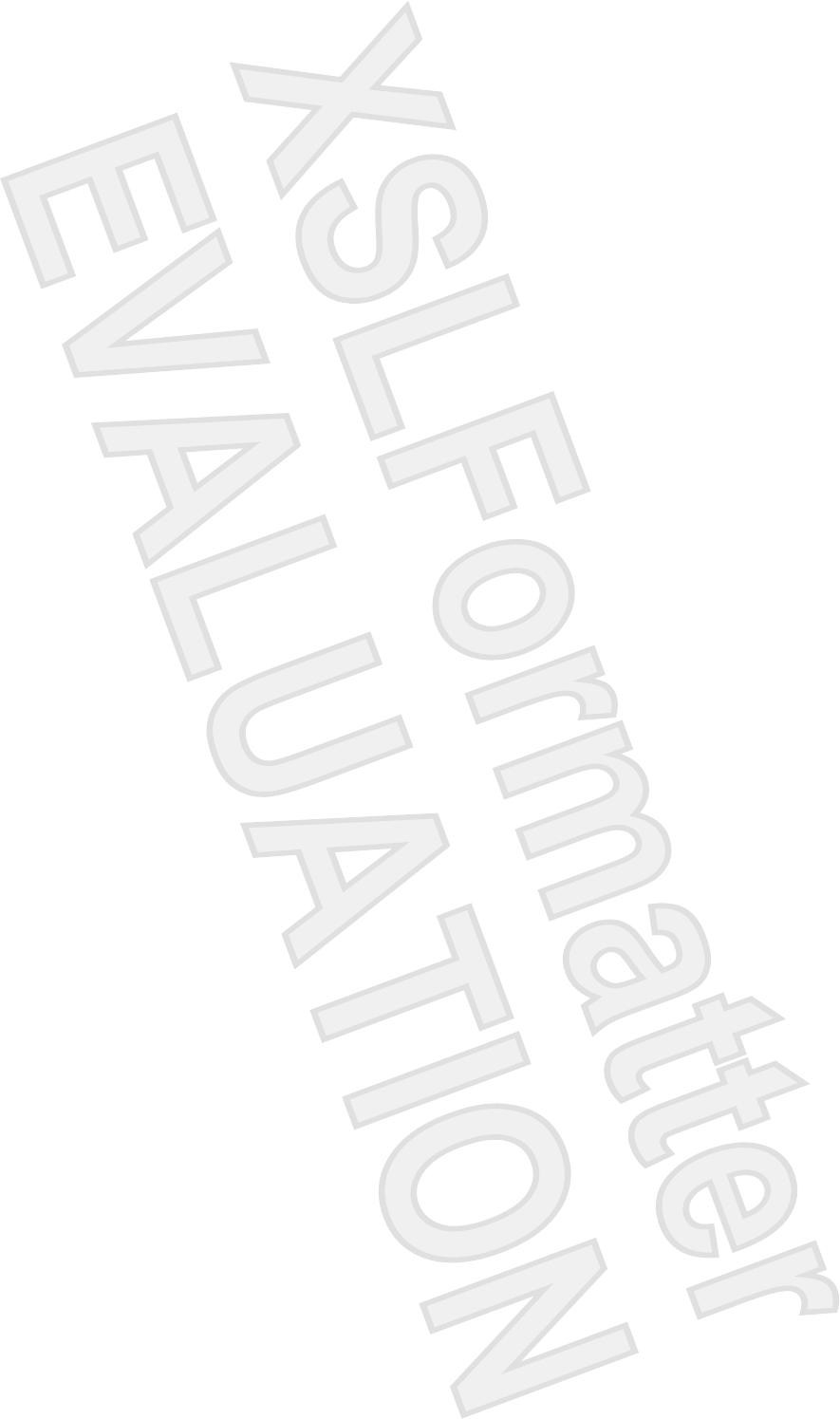
7 Messaging
Understanding Messaging
To send and receive e-mail messages for an e-mail account that you have with an Internet Service
Provider (ISP) or that you access using a VPN server connection (typically a work account), you need
to connect to the Internet or your corporate network, depending on the account.
You can send and receive Outlook e-mail and Internet e-mail through an Internet Service Provider (ISP).
You can also access e-mail from work using a VPN connection.
E-mail in the Outlook e-mail account is sent and received through synchronization with a personal
computer using ActiveSync or through wireless synchronization directly with an Exchange Server.
Internet e-mail is sent and received by connecting to a Post Office Protocol 3 (POP3) or Internet
Message Access Protocol 4 (IMAP4) e-mail server. When connecting to a POP3 or IMAP4 server, you
use a modem to connect to your Internet Service Provider (ISP) You can also use a modem or Ethernet
card to connect to the local area network that your e-mail server is connected to.
ENWW Understanding Messaging 51
Antenna House XSL Formatter (Evaluation) http://www.antennahouse.com/
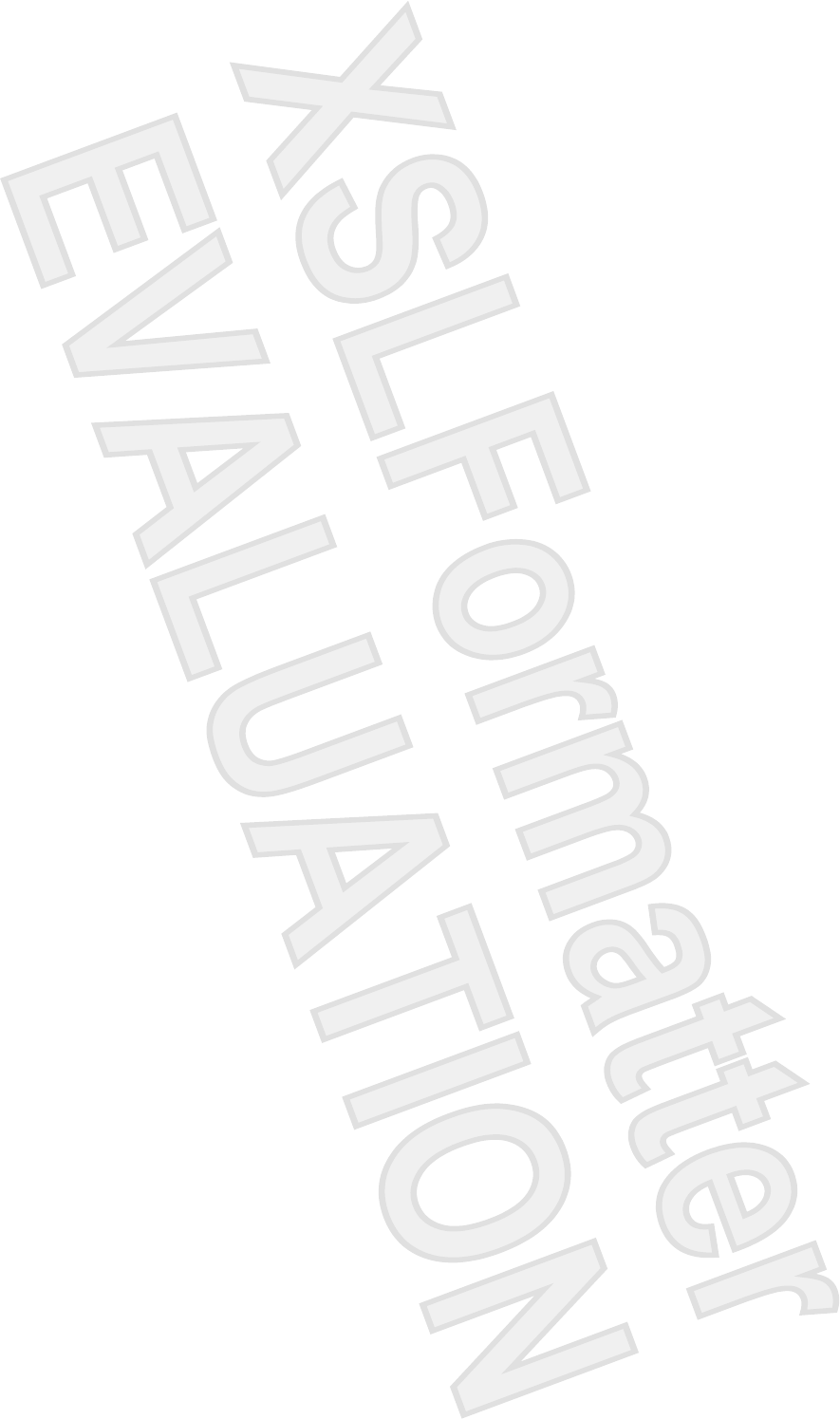
Using Folders
Each Messaging account has its own set of folders with five default Messaging folders:
●Inbox
●Outbox
●Deleted Items
●Drafts
●Sent Items
The messages you receive and send through the account are stored in these folders. You can also
create additional folders within each account.
The way folders work vary by type:
●If you use an Outlook e-mail account, e-mail messages in the Inbox folder in Outlook are
synchronized automatically with your device. You can select to synchronize additional folders by
designating them for synchronization. The folders you create and the messages you move are
mirrored on the e-mail server. For example, if you move two messages from the Inbox folder to a
folder named Family, and you have designated Family for synchronization, the server creates a
copy of the Family folder and copies the messages to that folder. You can then read the messages
while you are away from your personal computer.
●If you use a POP3 account and you move e-mail messages to a folder you created, the link is
broken between the messages on the device and their copies on the e-mail server. When you
connect, the e-mail server detects that the messages are missing from the Inbox folder on the
device and deletes them from the e-mail server. This prevents having duplicate copies of a
message, but it also means that you no longer have access to messages that you move to folders
created from anywhere except the device.
●If you use an IMAP4 account, the folders you create and the e-mail messages you move are
mirrored on the e-mail server. Therefore, messages are available to you anytime you connect to
your e-mail server, whether it is from your device or personal computer. This synchronization of
folders occurs whenever you connect to your e-mail server, create new folders, or rename/delete
folders when connected. You can also set different download options for each folder.
52 Chapter 7 Messaging ENWW
Antenna House XSL Formatter (Evaluation) http://www.antennahouse.com/
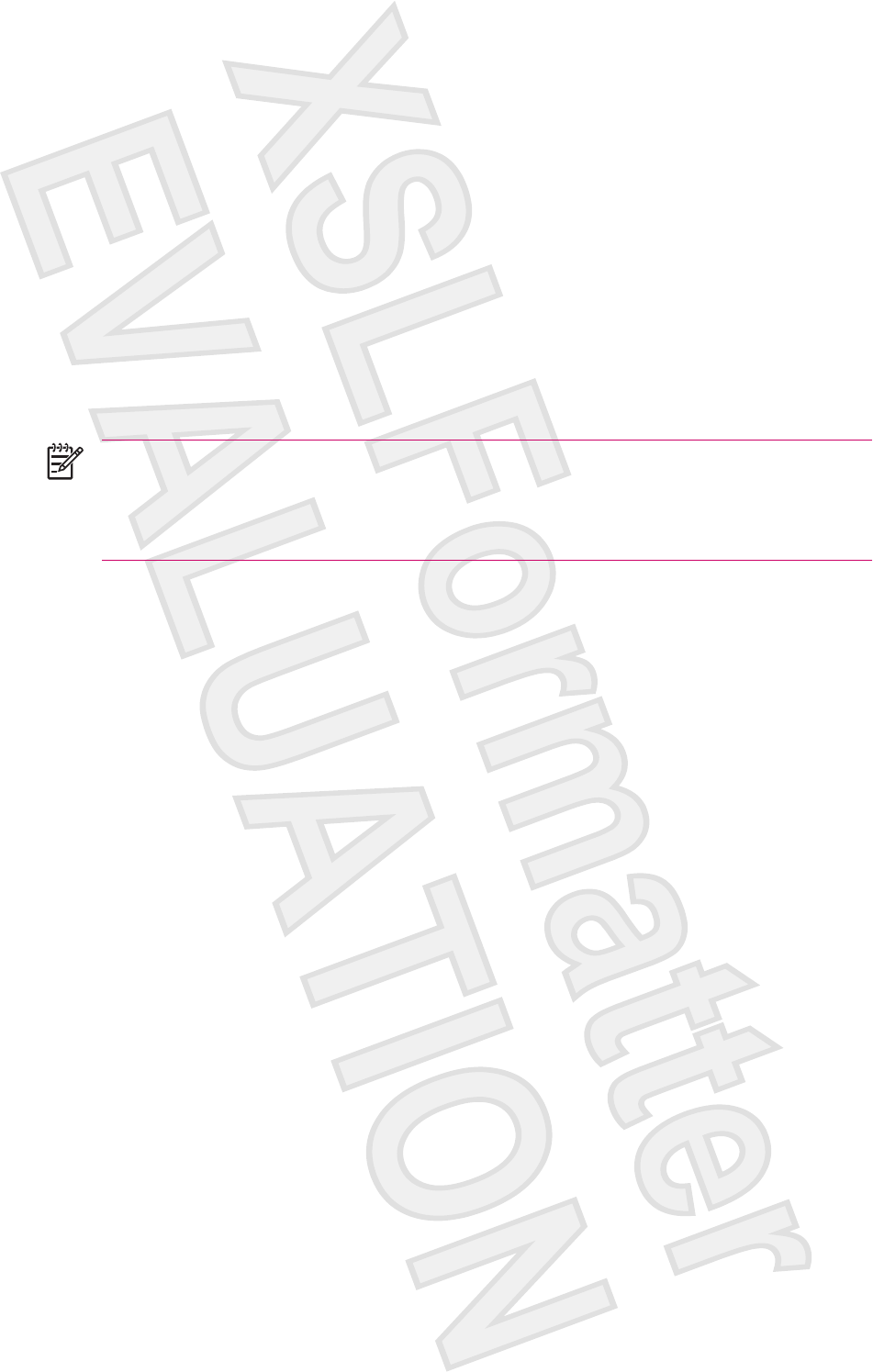
Synchronizing E-mail
When you synchronize Outlook e-mail on the personal computer with your device, e-mail messages are
synchronized as follows:
●Messages in the Inbox folder on your personal computer or Exchange Server are copied to the
Inbox folder of the Outlook e-mail account on your device.
●Messages in the Outbox folder on your device are transferred to Exchange Server or Outlook and
then sent from those programs.
●When you delete a message on your device, it's deleted from your personal computer or Exchange
Server the next time you synchronize.
●The default sync settings synchronize messages from the past three days only and the first .5KB
of each new message is downloaded. It does not download file attachments.
NOTE For more information on starting Outlook e-mail synchronization or changing
synchronization settings, see ActiveSync Help on the personal computer or tap Contents.
Text messages are not received via synchronization. Instead, they are sent to your device via
your service provider.
ENWW Synchronizing E-mail 53
Antenna House XSL Formatter (Evaluation) http://www.antennahouse.com/
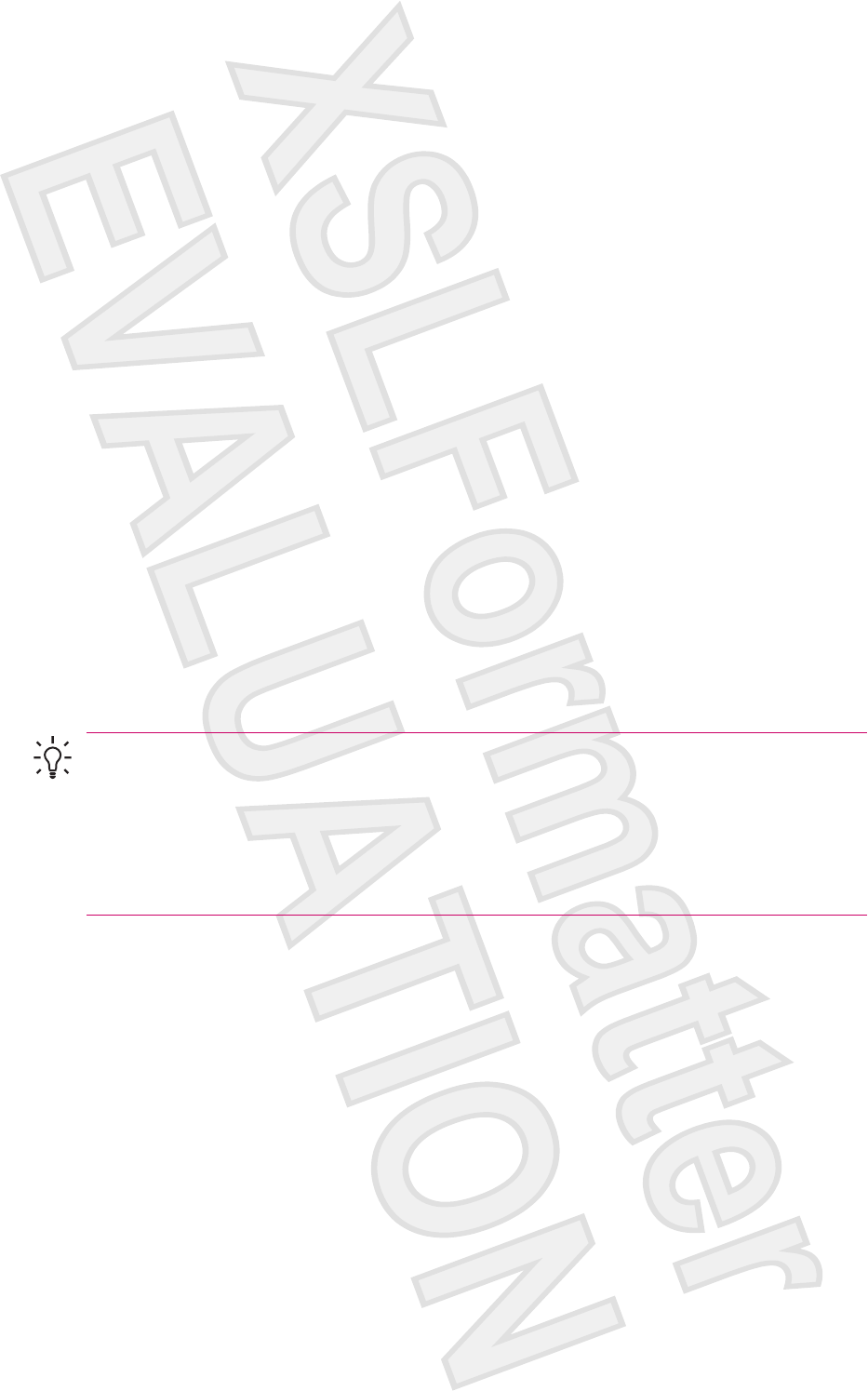
Setting Up Messaging Accounts
Receiving Attachments
An attachment sent with an e-mail message or downloaded from the server appears below the subject
of the message. Tapping the attachment opens the attachment if it has been fully downloaded or marks
it for download the next time you send and receive e-mail. You can also download attachments
automatically with your messages if you have an Outlook e-mail or IMAP4 e-mail account.
If you have an Outlook e-mail account, do the following:
1. Tap Start > Programs > ActiveSync.
2. Tap Menu > Options.
3. Tap E-mail > Settings, and then select Include file attachments.
If you have an IMAP4 e-mail account with an Internet Service Provider (ISP) or an account that you
access using a VPN server connection (typically a work account), do the following:
1. Tap Start > Messaging.
2. Tap Menu > Tools > Options.
3. Tap the name of the IMAP4 account.
4. Tap Next until you reach Server information, and tap Options.
5. Tap Next twice, and select Get full copy of messages and When getting full copy, get
attachments.
Tip Embedded images and objects cannot be received as attachments.
An embedded message can be viewed as an attachment when using IMAP4 to receive e-mail.
However, this feature does not work if Transport Neutral Encapsulation Format (TNEF) is enabled
so that you can receive meeting requests.
To store attachments on a storage card rather than on the device, tap Menu > Tools > Options
> Storage tab, and select the Store attachments on storage card check box.
Receiving Meeting Requests
If you receive your e-mail messages through ActiveSync, you can receive meeting requests. When
connecting directly to an e-mail server, the server must be running Microsoft Exchange Server version
5.5 or later for you to receive meeting requests.
54 Chapter 7 Messaging ENWW
Antenna House XSL Formatter (Evaluation) http://www.antennahouse.com/
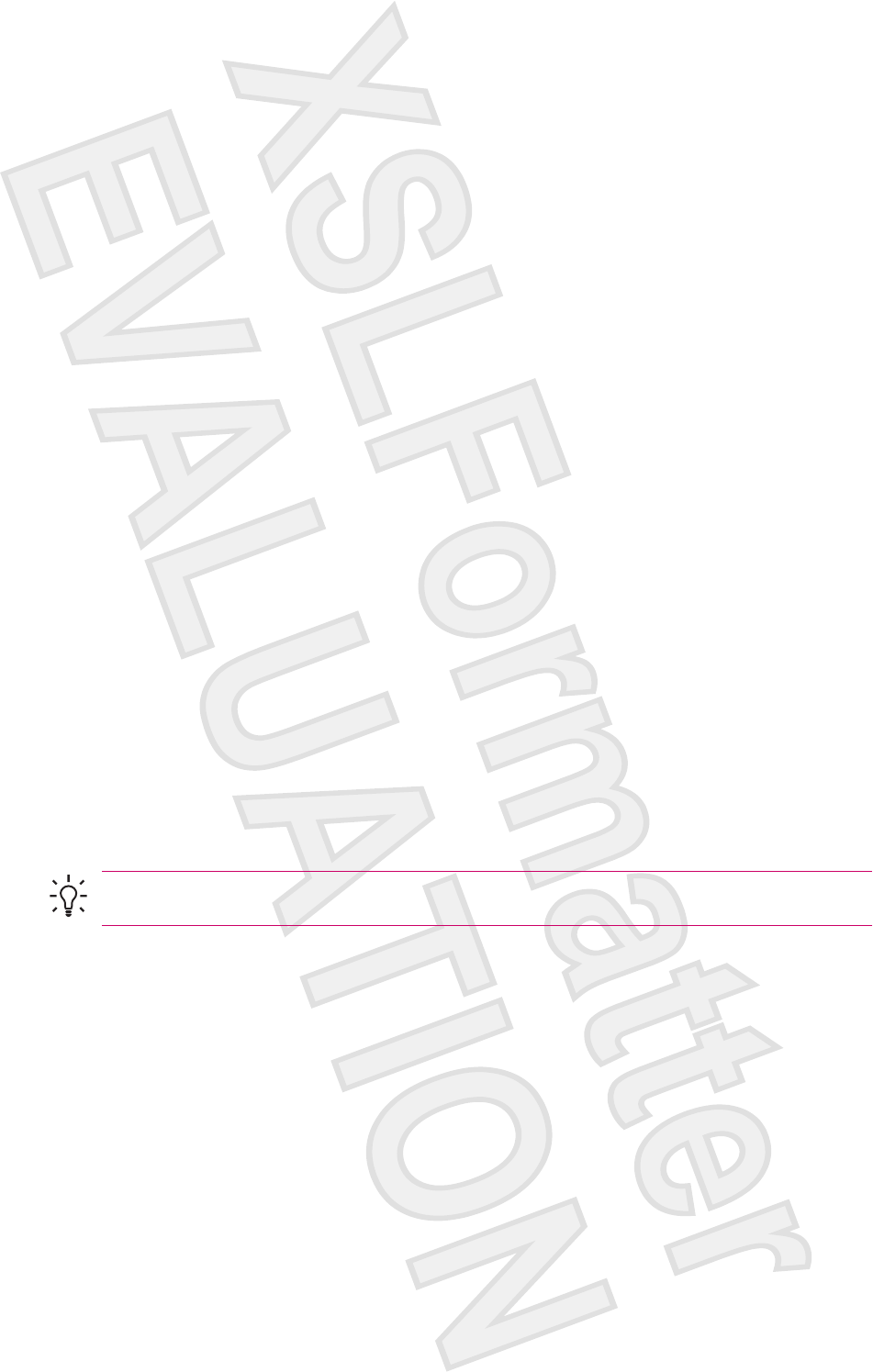
If the server is running Microsoft Exchange Server 2000 or later, your meeting requests are automatically
received in your Inbox. However, to receive meeting requests on Microsoft Exchange Server 5.5, do the
following:
●Ask your system administrator to activate Rich Text Format (RTF) and Transport Neutral
Encapsulation Format (TNEF) support for your account.
With TNEF enabled, your messages that are included in other messages as attachments are not
received, and you can not know if a message has an attachment until you get the full copy. In
addition, download time may be longer.
●Change e-mail download options if your account is not set up to receive attachments.
After you are set up to receive meeting requests, do the following:
1. Open the meeting request.
2. Tap Accept, or Menu > Tentative, or Menu > Decline. If you want, you can also include a message
with the response. The response is sent the next time that you synchronize or connect to your e-
mail server, and your device calendar is updated.
Creating or Changing a Signature
1. Tap Start > Messaging.
2. Tap Menu > Tools > Options.
3. Tap Accounts tab > Signatures.
4. Select the account for which you want to create or change a signature.
5. Select the Use signature with this account check box if it is not already selected.
6. Select the Use when replying and forwarding check box if wanted.
7. Enter a signature in the box.
To stop using a signature, clear the Use signature with this account check box.
Tip You can use a different signature with each Messaging account.
ENWW Setting Up Messaging Accounts 55
Antenna House XSL Formatter (Evaluation) http://www.antennahouse.com/
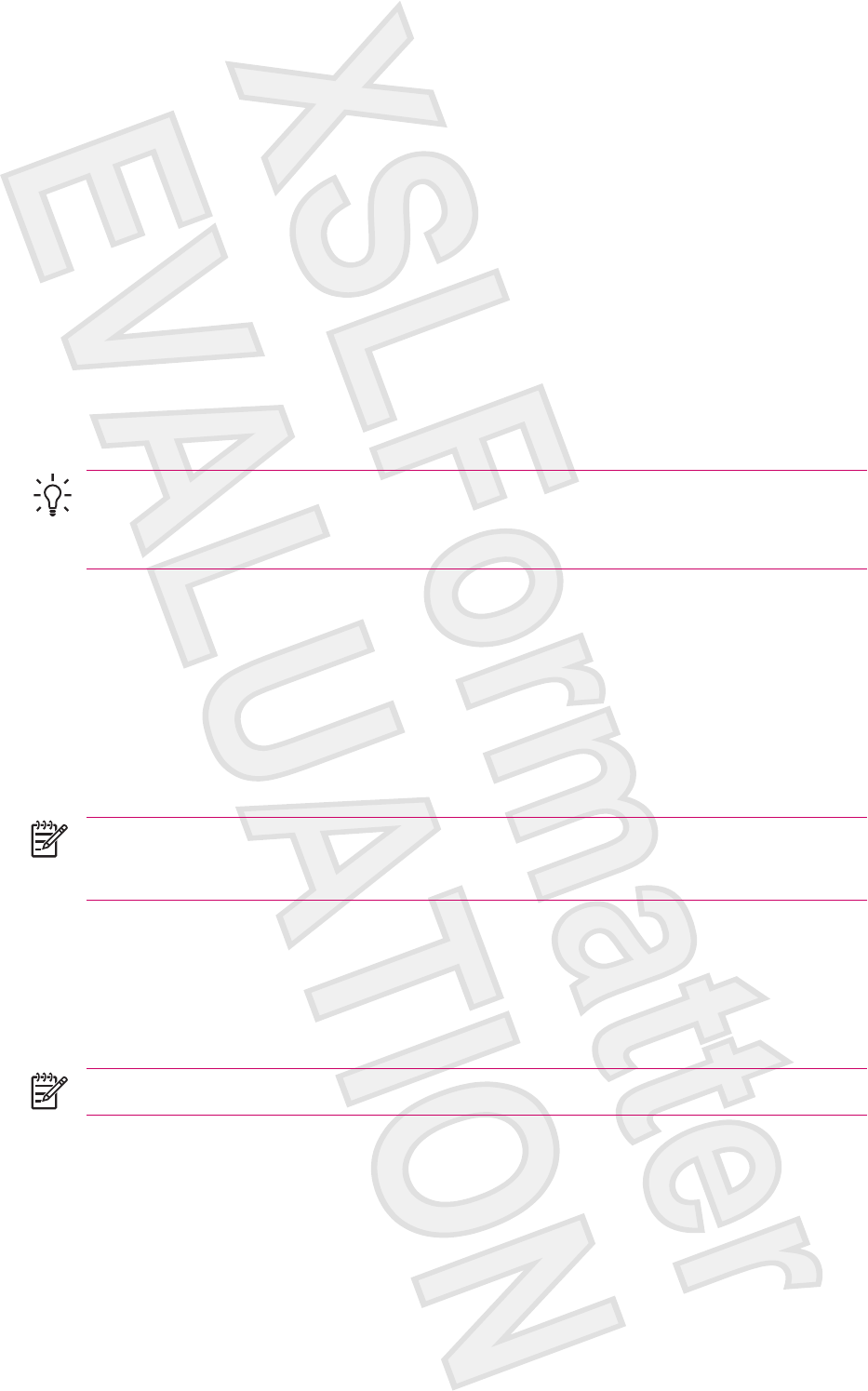
Using Messaging
Composing and Sending Messages
1. In the message list, tap Menu > Switch Accounts and select the account.
2. Tap New.
3. Enter the e-mail address or text message address of one or more recipients, separating them with
a semicolon. To access addresses and phone numbers from Contacts, tap To.
4. Enter your message. To quickly add common messages, tap Menu > My Text and tap a desired
message.
5. To check the spelling, tap Menu > Spell Check.
6. Tap Send.
Tip To set the priority, tap Menu > Message Options.
If you are working offline, e-mail messages are moved to the Outbox folder and are sent the next
time you connect.
Replying to or Forwarding a Message
1. Tap on the message to open it, and then tap Menu > Reply, Reply All, or Menu > Forward.
2. Enter your response. To quickly add common messages, tap Menu > My Text and tap a desired
message.
3. To check the spelling, tap Menu > Spell Check.
4. Tap Send.
NOTE If you want to keep the original text with the outgoing message, tap Menu > Tools >
Options... then tap the Message tab. You must check the When replying to e-mail, include
body option.
Adding an Attachment to a Message
1. In an open message, tap Menu > Insert and tap the item you want to attach: Picture, Voice
Note, or File.
2. Select the file you want to attach or record a voice note.
NOTE Embedded objects cannot be attached to messages.
Downloading Messages
To send and receive e-mail for an Outlook E-mail account, begin synchronization through ActiveSync.
56 Chapter 7 Messaging ENWW
Antenna House XSL Formatter (Evaluation) http://www.antennahouse.com/

Tip By default, messages you send are not saved on your device to help conserve memory. If
you want to keep copies of sent messages, in the messaging list, tap Menu > Tools > Options
> Message tab, and select the Keep copies of sent items in Sent folder check box. If your
account is an Outlook E-mail or IMAP4 account, you must also select the Sent Items folder for
synchronization. To do this, tap Menu > Tools > Manage Folders and select the check box next
to the folder.
Downloading Messages from a Server
1. Tap Menu > Switch Accounts and tap the account you want to use.
2. Tap Menu > Send/Receive. The messages on your device and e-mail server are synchronized:
new messages are downloaded to the device Inbox folder, messages in the device Outbox folder
are sent, and messages that have been deleted from the server are removed from the device Inbox
folder.
Tip If you want to read the entire message, tap Menu > Download Message while in the
message window. If you are in the message list, tap and hold the message, and then tap Menu
> Download Message. The message is downloaded the next time you send and receive e-mail.
This also downloads message attachments if you selected those options when you set up the e-
mail account.
The size column in the message list displays the local size and server size of a message. Even
when an entire message has been downloaded, these numbers may differ because the size of
a message can vary between the server and the device.
Installing an Online Address Book
Many e-mail servers, including servers running Exchange Server, can verify names with an online
address book, called a directory service, using Lightweight Directory Access Protocol (LDAP). When
you create an e-mail account, your e-mail server's directory service is added to the Address tab, and
you are given the option to enable it. After it is enabled, Messaging checks your contact list and then
the directory service to verify names that you enter in the To, Cc, and Bcc fields. To enable a directory
service or if you want to use additional services, follow these steps:
1. If you are adding a new account, ask your network administrator for the name of the directory
service and the server.
2. In the message list, tap Menu > Tools > Options > Address tab.
3. In the In Contacts, get e-mail addresses from list, select which e-mail address book to check in
All e-mail fields. All e-mail fields are checked first unless you select None.
4. If your e-mail server is already listed, select the server's directory service check box to enable it
and tap OK.
5. If your e-mail service is not listed, tap Add.
6. In the Directory name and Server boxes, enter the LDAP directory and server names.
7. Ask your network administrator if authentication is necessary for your server. If so, select the
Authentication is necessary on this server check box, and enter your user name and password.
8. To have Messaging check this service, select the Check name against this server check box.
ENWW Using Messaging 57
Antenna House XSL Formatter (Evaluation) http://www.antennahouse.com/
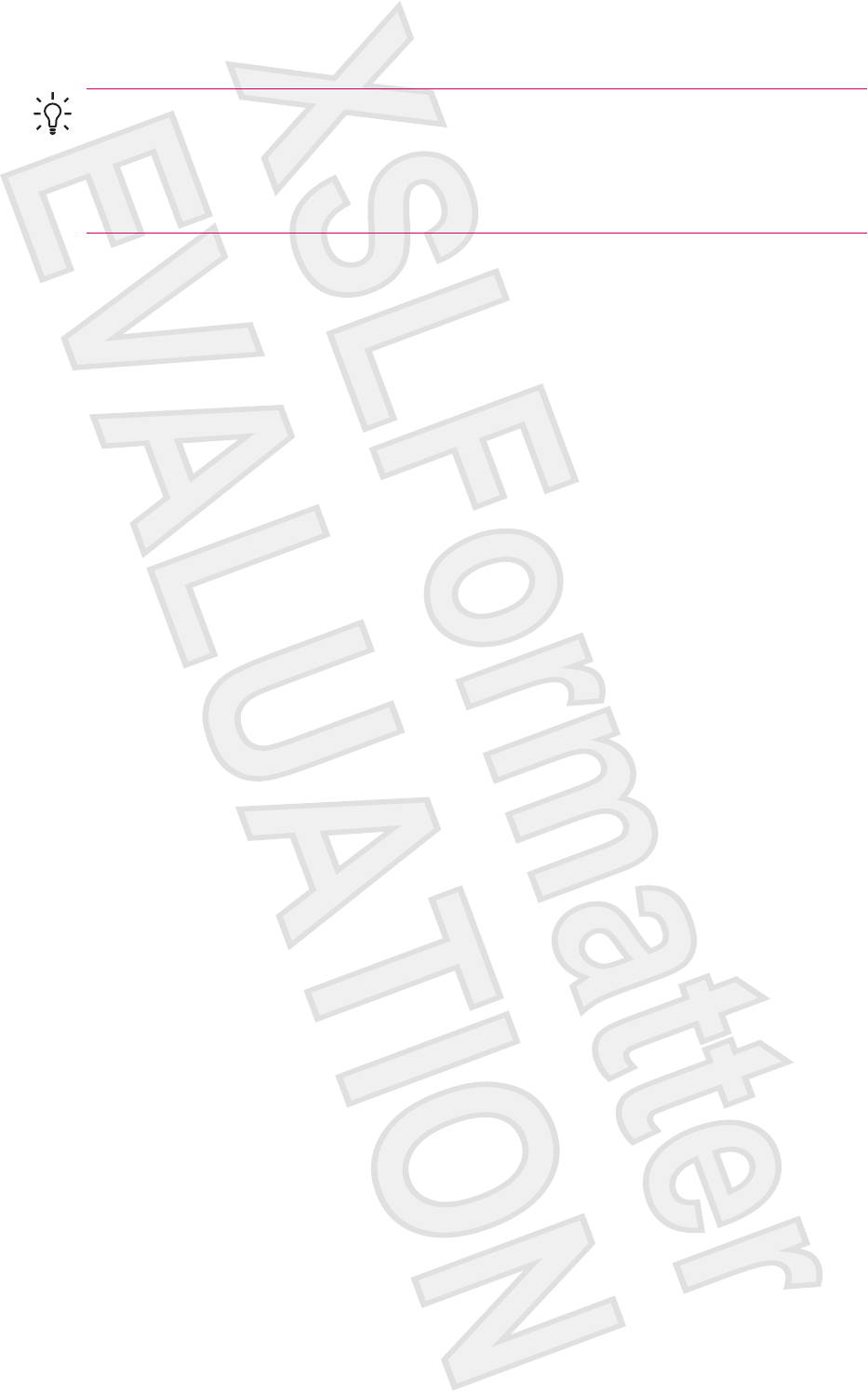
Tip To delete a service, tap and hold the service, and tap Delete.
While synchronizing your Outlook E-mail account, disable any directory services you have
installed by clearing the Check name against this server check box. This helps avoid getting
error messages when Messaging tries to verify names against the service that you are not
connected to.
58 Chapter 7 Messaging ENWW
Antenna House XSL Formatter (Evaluation) http://www.antennahouse.com/
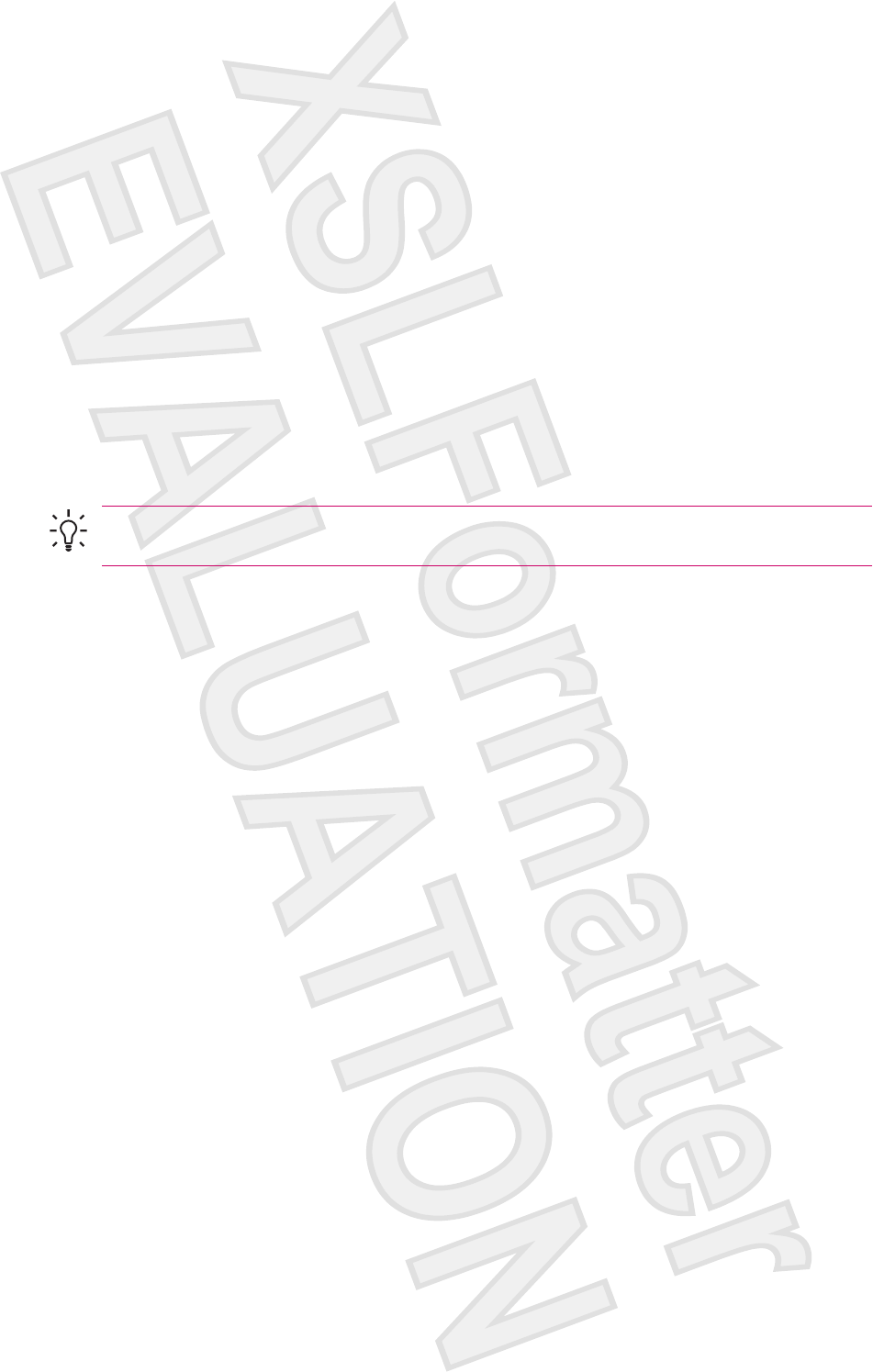
8 Learning The Basics
Entering Owner Information
Enter your owner information so your HP iPAQ can be returned to you if it is lost.
1. Tap Start > Settings > Personal tab > Owner Information.
2. On the Identification tab, enter your personal information.
Tip If owner information is displayed on the Today screen, you can open and edit the
information directly from the Today screen.
ENWW Entering Owner Information 59
Antenna House XSL Formatter (Evaluation) http://www.antennahouse.com/
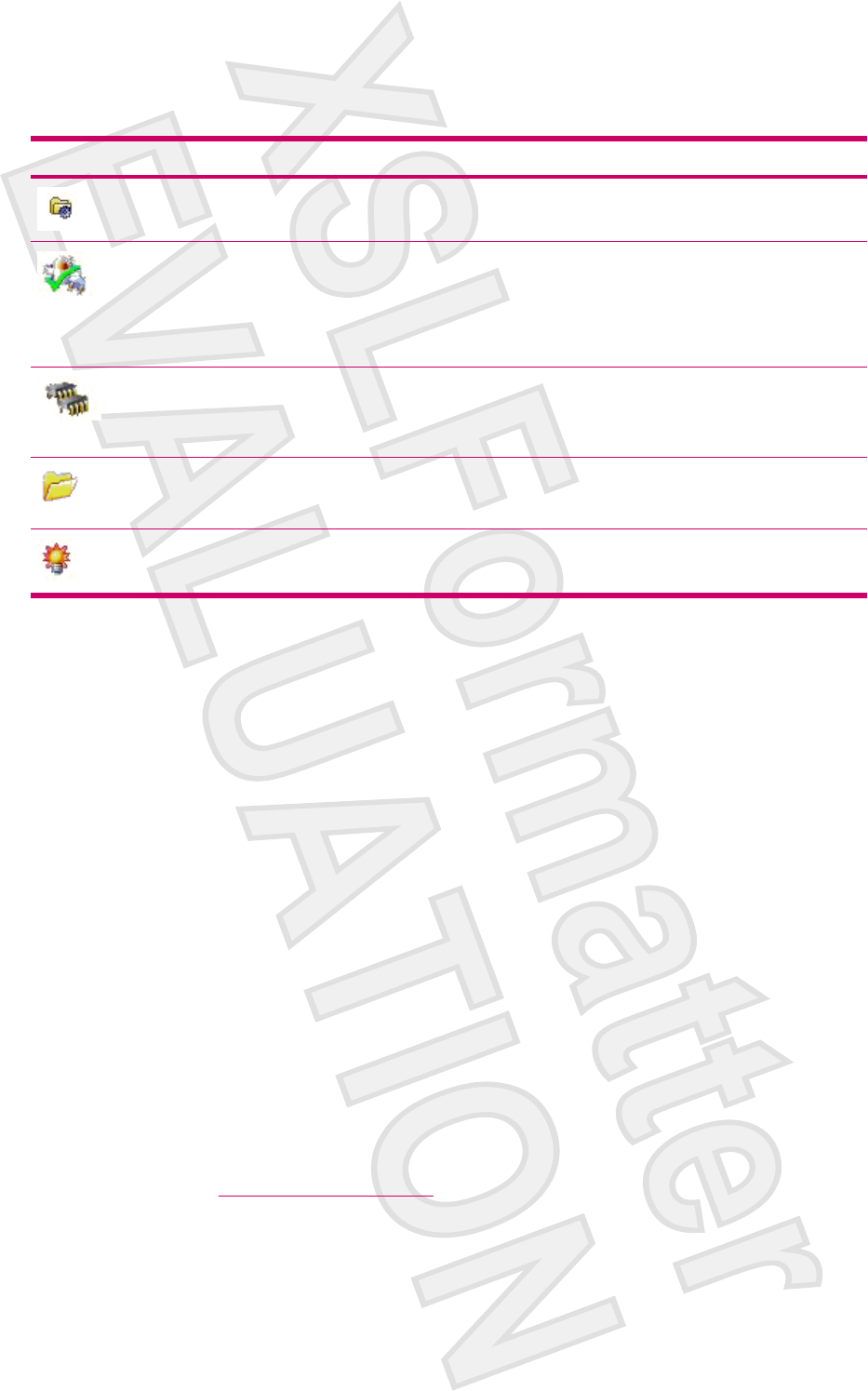
Using TodayPanel Lite
Icon Name Description
TodayPanel Lite Change the TodayPanel Lite options or
the Today screen settings.
Battery power View the amount of battery power
remaining.
Set the standby period, time duration for
turning off the HP iPAQ, and USB
charging method.
Main memory View the amount of main memory
available on the HP iPAQ. View, activate,
and stop all running programs from this
screen.
Storage memory View the amount of storage memory
available. View, activate, and stop all
running programs from this screen.
Backlight View and change the backlight options
on the HP iPAQ.
To use TodayPanel Lite, tap the icon of your choice, make the appropriate changes, and tap OK.
You can change the TodayPanel Lite icons to compact mode, which allows more space on the Today
screen. You can also change memory and storage settings to display as percentages instead of file
sizes.
To change to compact mode:
1. Tap the TodayPanel Lite icon > Options to open the TodayPanel Lite application.
2. Tap the Display Mode list box and select Compact.
To display memory and storage as percentages:
1. Tap the TodayPanel Lite icon > Options to open the TodayPanel Lite application.
2. Tap the Display Memory as list box or the Display Storage as list box and select the percentage
listed.
3. Tap OK.
To remove the TodayPanel Lite application from the Today screen:
1. Tap Start > Settings > Today icon > Items tab.
2. Clear the TodayPanel check box and tap OK.
For more options, visit http://www.rhinocode.com to upgrade to TODAYPANEL.PRO.
60 Chapter 8 Learning The Basics ENWW
Antenna House XSL Formatter (Evaluation) http://www.antennahouse.com/
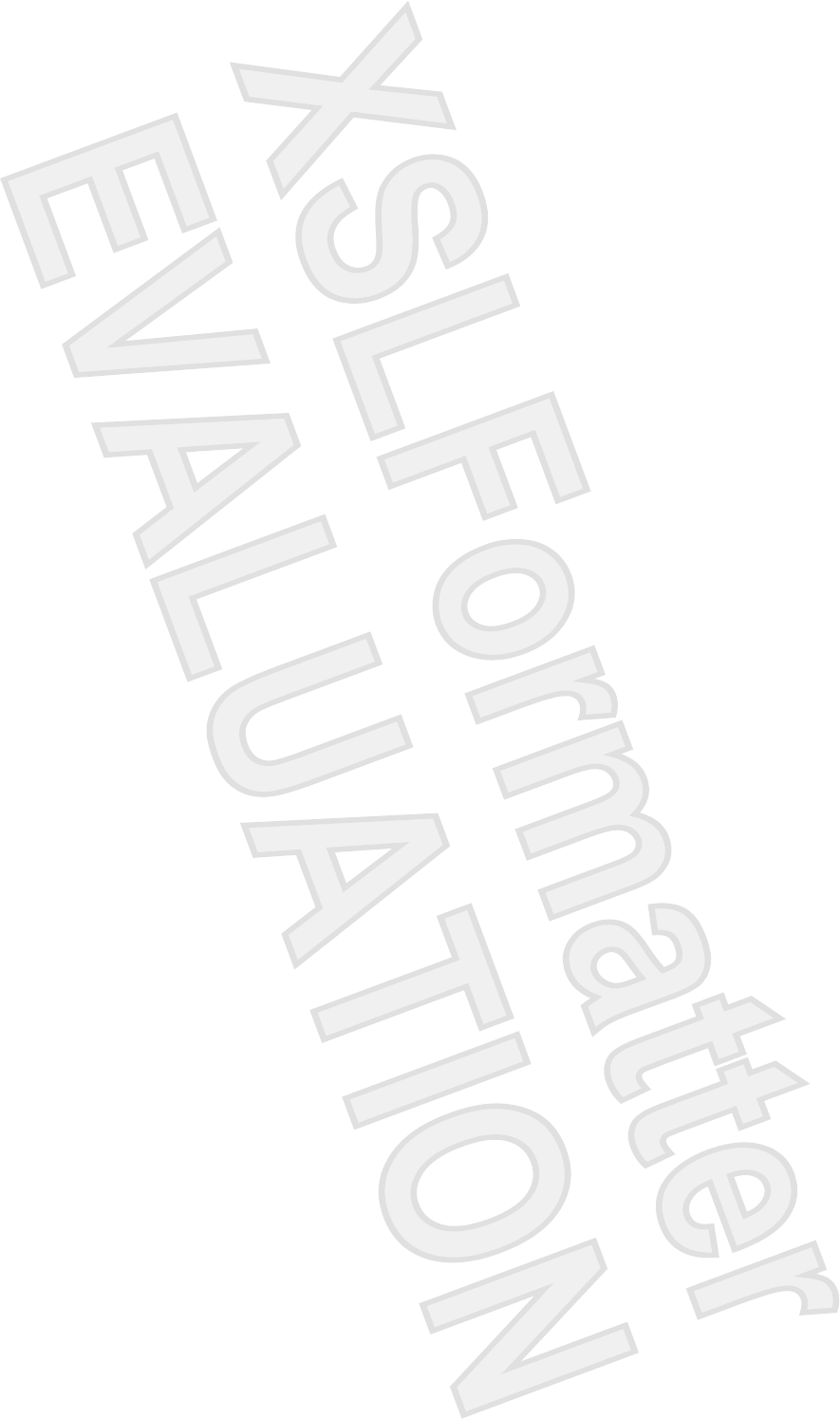
Changing the Regional Settings
The style in which numbers, currency, dates, and times are displayed is specified in regional settings.
To change the regional settings:
1. Tap Start > Settings > System tab > Regional Settings > Region tab.
2. Select your region.
The region you select determines which options are available on the other tabs.
3. To customize additional settings, tap the appropriate tabs and select the options you want.
To change the date and time display, follow steps 1 through 3 above then perform one of the following:
●On the Time tab, select the time display options you want.
●On the Date tab, select the date display options you want.
●On the Region tab, select the region display options you want.
●On the Number tab, select the number display options you want.
●On the Currency tab, select the currency display options you want.
62 Chapter 8 Learning The Basics ENWW
Antenna House XSL Formatter (Evaluation) http://www.antennahouse.com/
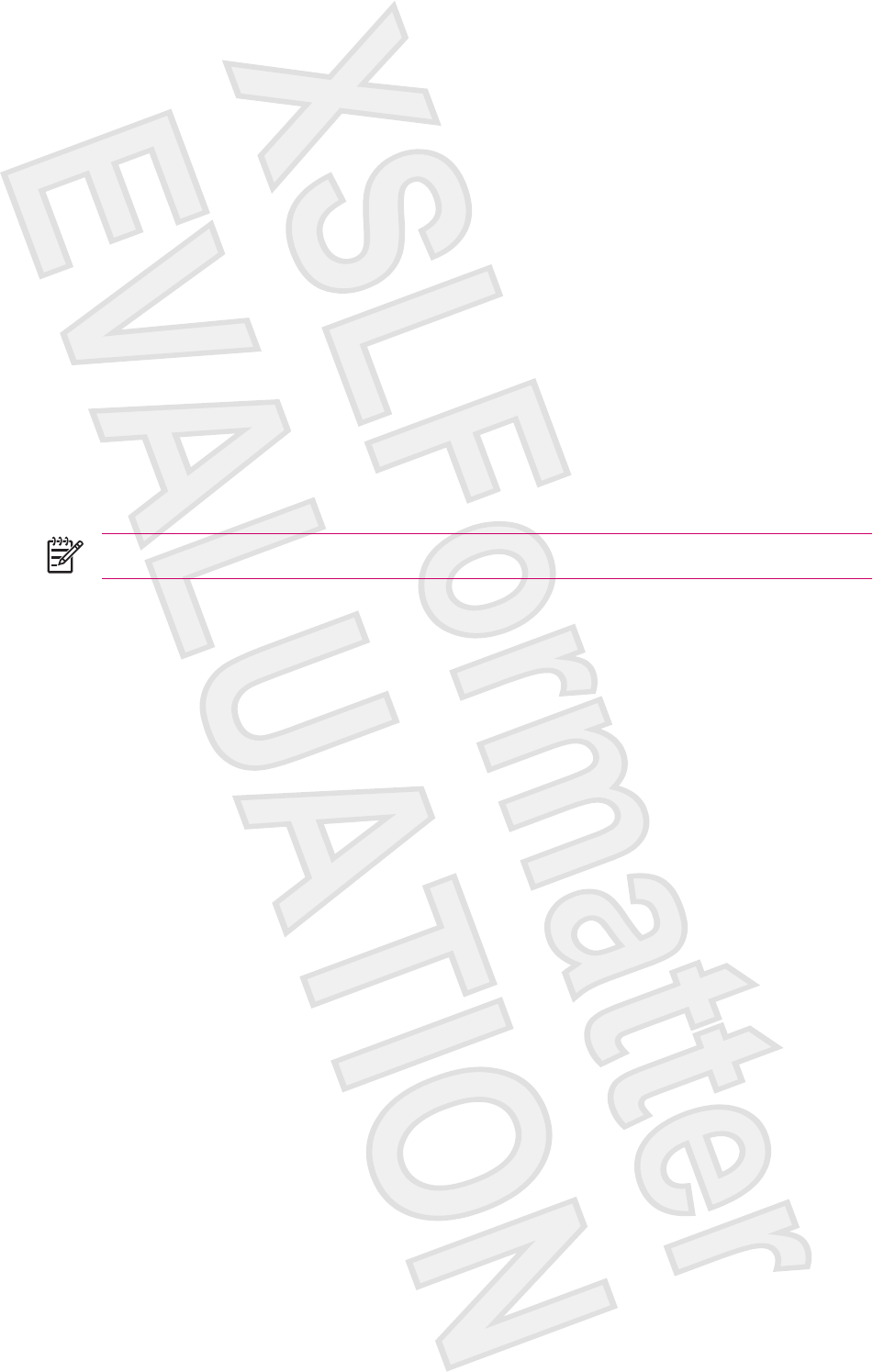
Adjusting the Volume
You can change the volume for various sounds, such as the sound you hear when you tap program
names and menu options.
1. Tap the Speaker icon at the top of the screen.
2. Move the system volume slider on the screen, or roll the scroll navigation wheel on the HP iPAQ
to the desired volume level.
3. To mute system sounds, tap Off.
You can also specify the sound you want to hear for a notification.
1. Tap Start > Settings > Personal tab > Sounds & Notifications.
2. On the Sounds tab, choose how you want to be notified by selecting the appropriate check boxes.
3. On the Notifications tab, in Event, tap an event name and choose how you want to be notified by
selecting the appropriate check boxes. You can choose from several options, such as a special
sound, a message, or a flashing light.
NOTE Turning off sounds and the LED notification helps conserve battery power.
ENWW Adjusting the Volume 63
Antenna House XSL Formatter (Evaluation) http://www.antennahouse.com/
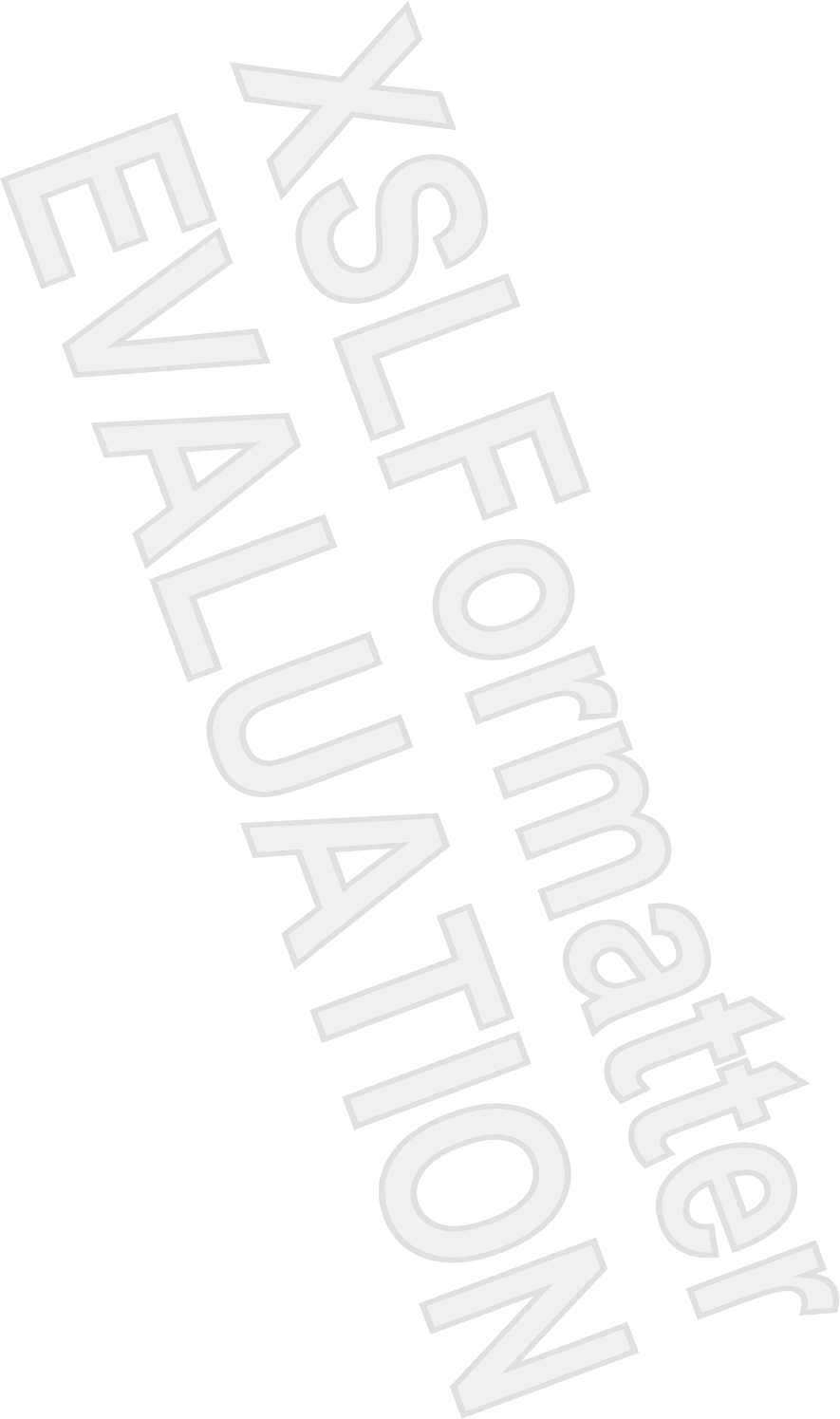
Changing Power Management Settings
1. Tap Start > Settings > System tab > Power.
2. Tap the Advanced tab to select the length of time the HP iPAQ stays on when using battery power
or external power.
3. Tap the USB tab to select USB charging.
64 Chapter 8 Learning The Basics ENWW
Antenna House XSL Formatter (Evaluation) http://www.antennahouse.com/

Dimming or Adjusting the Brightness of the Backlight
You can set the backlight to dim after a specified amount of time has elapsed.
1. Tap Start > Settings > System tab > Backlight.
2. Tap the Battery Power tab or the External Power tab.
3. Select the backlight options of your choice.
You can also increase or decrease the brightness of the backlight.
1. Tap Start > Settings > System tab > Backlight > Brightness tab.
2. Move the sliders up to increase and down to decrease the brightness.
ENWW Dimming or Adjusting the Brightness of the Backlight 65
Antenna House XSL Formatter (Evaluation) http://www.antennahouse.com/
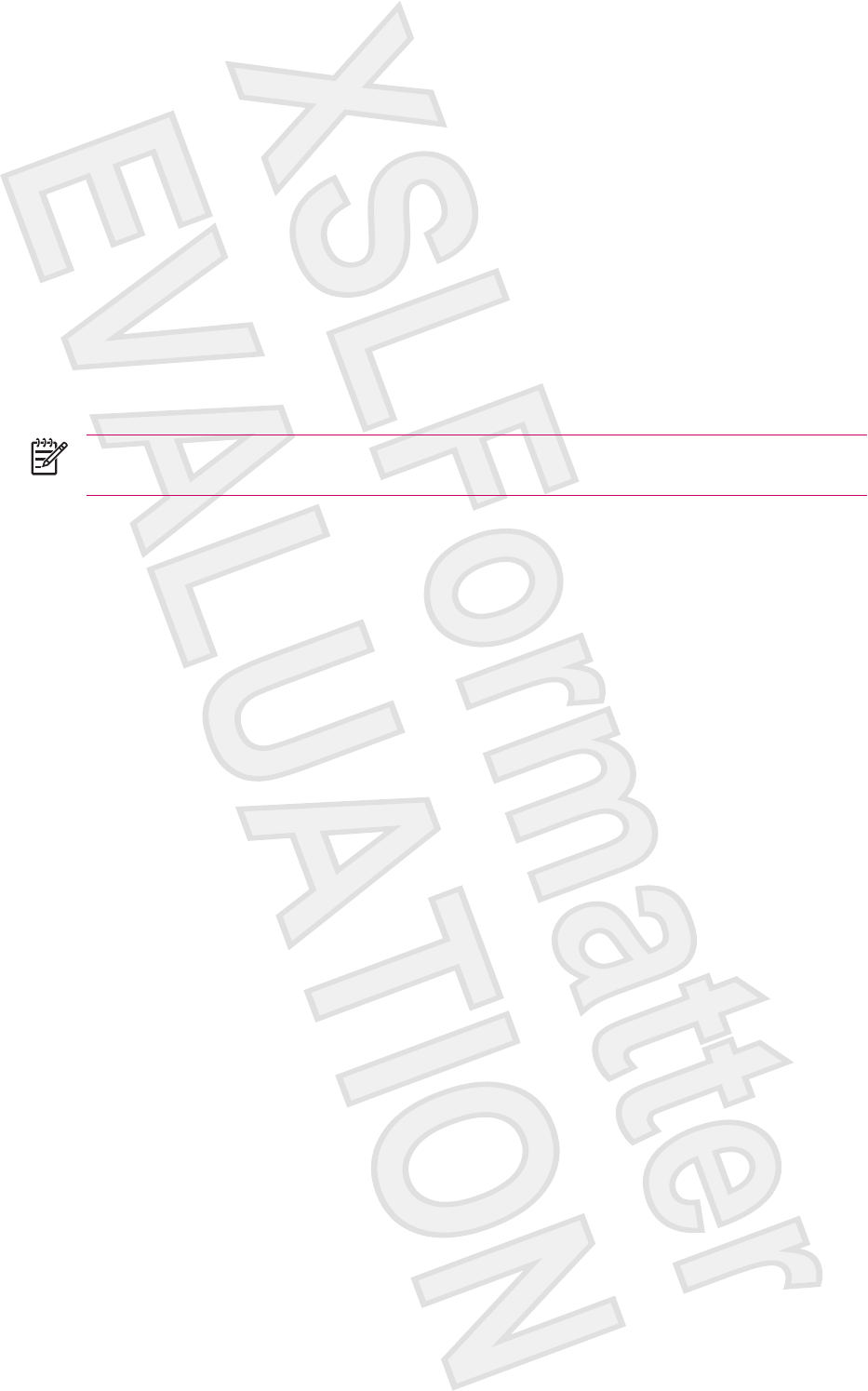
Installing and Removing Programs
To install programs on your HP iPAQ:
1. Use the mini-USB synchronization cable to connect your HP iPAQ to your personal computer.
2. Follow the instructions in the Installation Wizard provided with the program you want to install.
3. Check the screen on your HP iPAQ to see if any further steps are necessary to complete the
program installation.
To remove programs from your HP iPAQ:
1. Tap Start > Settings > System tab > Remove Programs.
2. Select the check box for the program(s) you want to remove, then tap Remove.
NOTE By removing a program from your HP iPAQ, you may increase available memory on the
device.
If programs are lost from your HP iPAQ for any reason, most of them can be re-installed using
ActiveSync. On your personal computer, click Tools > Add/Remove Programs > check the program
to be added > click OK.
66 Chapter 8 Learning The Basics ENWW
Antenna House XSL Formatter (Evaluation) http://www.antennahouse.com/
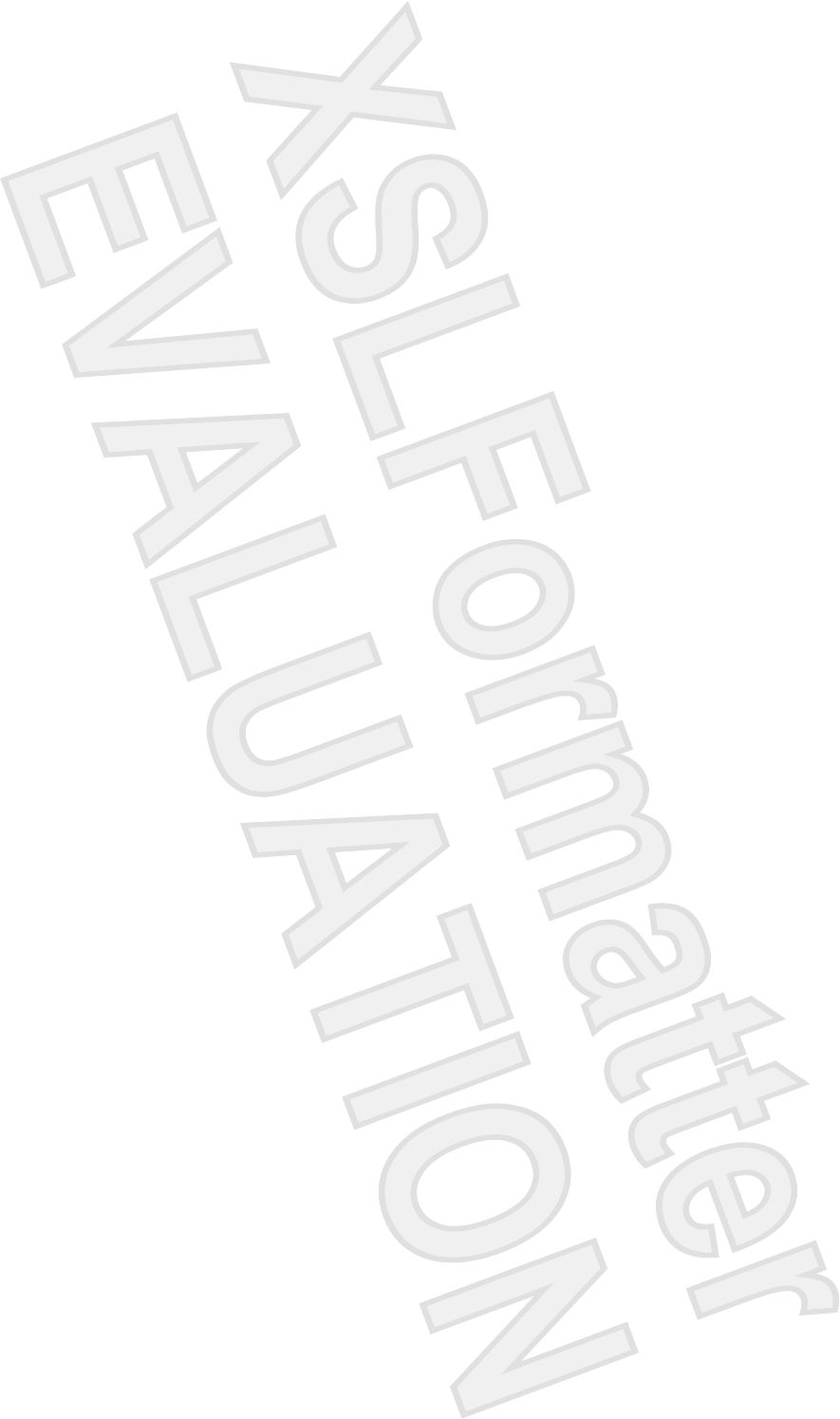
Opening and Closing Programs
You do not need to exit a program to open another or to conserve memory. The system manages
memory automatically.
To open a program, tap Start, then tap the program you want from the list. If you don't see the program
you want, tap Start > Programs.
In most cases, programs automatically stop to free needed memory. However, you can close programs
manually if you prefer.
1. Tap Start > Settings > System tab > Memory > Running Programs tab.
2. In the Running Programs list, tap the program you want to close, then tap Stop, or tap Stop All
to close all open programs
ENWW Opening and Closing Programs 67
Antenna House XSL Formatter (Evaluation) http://www.antennahouse.com/
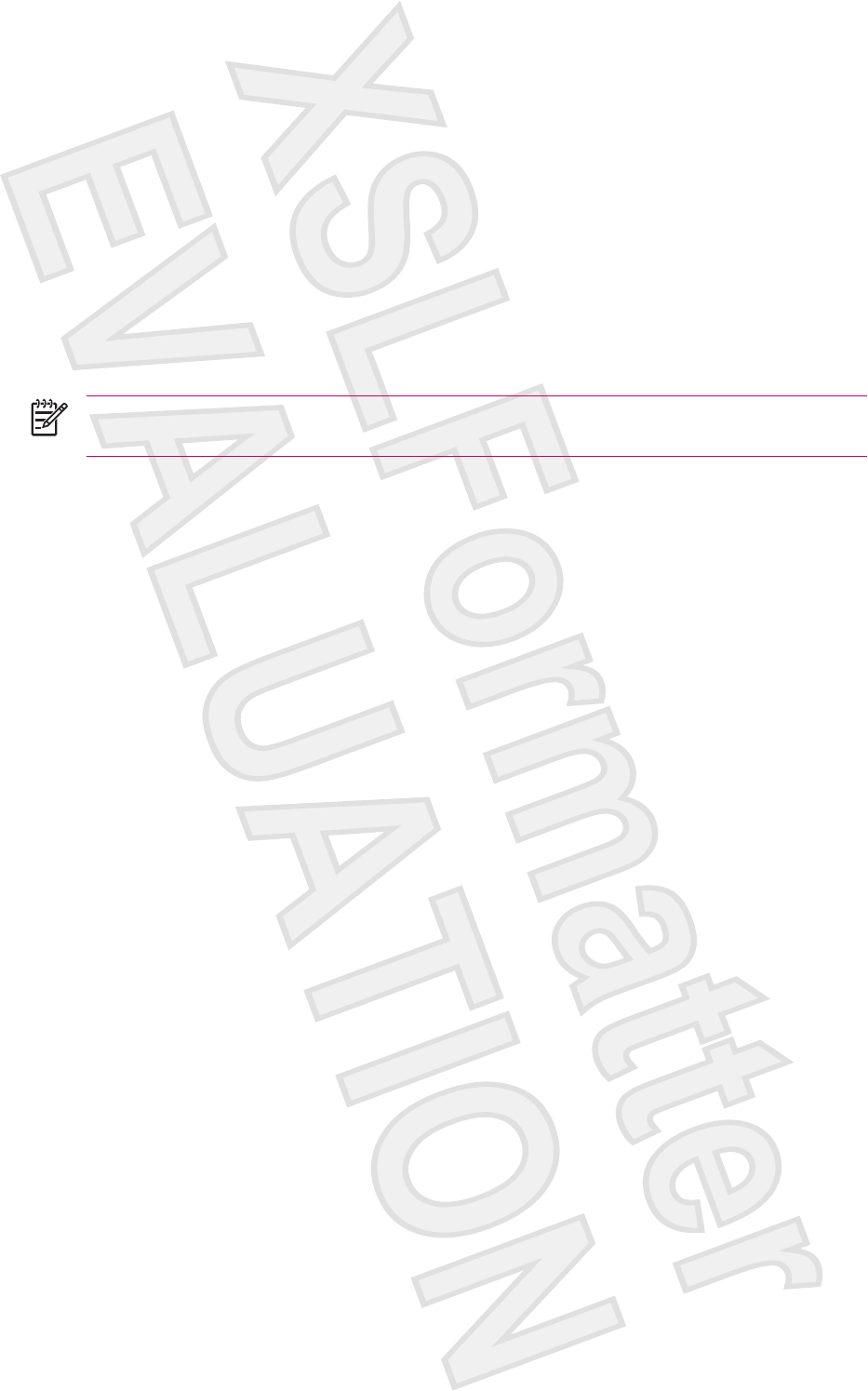
Customizing the HP iPAQ
To get detailed information:
Tap Start > Settings > System tab > About.
The Version tab displays important device information, including the type of processor and the amount
of memory installed.
The device name is used to identify the HP iPAQ in the following situations:
●Synchronizing with a computer
●Connecting to a network
NOTE If you synchronize multiple devices with the same computer, each device must have a
unique name.
To change the device name:
1. Tap Start > Settings > System > About > Device ID tab.
2. Enter a name. The device name must begin with a letter, consist of letters from A to Z and numbers
from 0 to 9, and cannot contain spaces.
68 Chapter 8 Learning The Basics ENWW
Antenna House XSL Formatter (Evaluation) http://www.antennahouse.com/
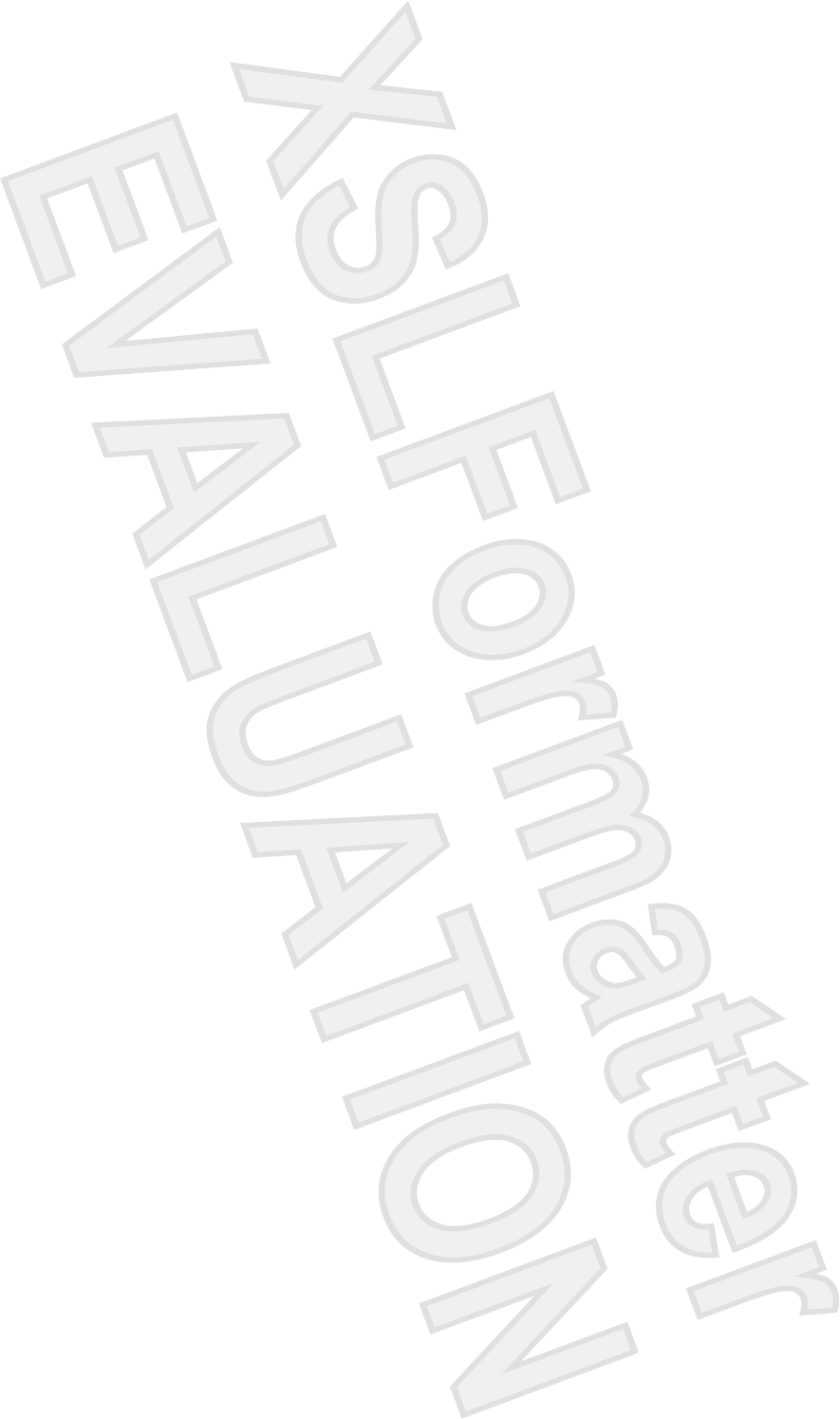
Setting Alarms
1. Tap Start > Settings > System tab > Clock & Alarms > Alarms tab.
2. Tap <Description> and enter a name for the alarm.
3. Tap the day of the week for the alarm. You can select multiple days by tapping each desired day.
4. Tap the time to open a clock and set the time for the alarm. Then tap OK.
5. Tap the Alarm icon to specify the type of alarm you want. You can choose a flashing light, a single
sound, or a repeating sound.
6. If you choose to play a sound, tap the list next to the Play sound check box, then tap the sound
you want.
ENWW Setting Alarms 69
Antenna House XSL Formatter (Evaluation) http://www.antennahouse.com/
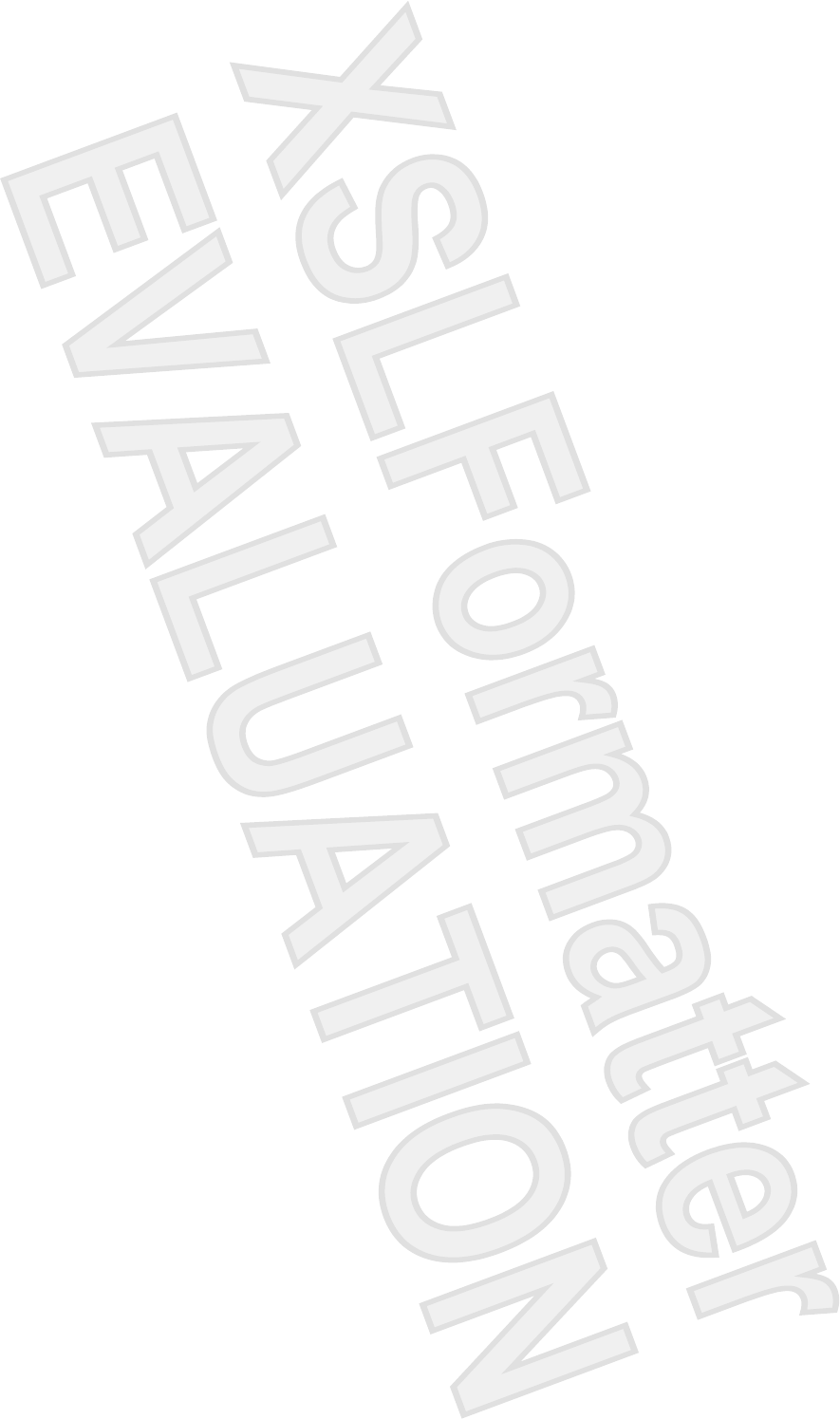
Shortcut Menus
A shortcut menu appears when you tap and hold an item. The menu displays the most common
commands for the specific item. For example, you can delete an appointment or send a text message
to a contact by using commands on a shortcut menu.
To use a shortcut menu, tap and hold the item. When the menu appears, tap the action you want to
perform.
To close a shortcut menu without performing an action, tap anywhere outside the menu.
70 Chapter 8 Learning The Basics ENWW
Antenna House XSL Formatter (Evaluation) http://www.antennahouse.com/
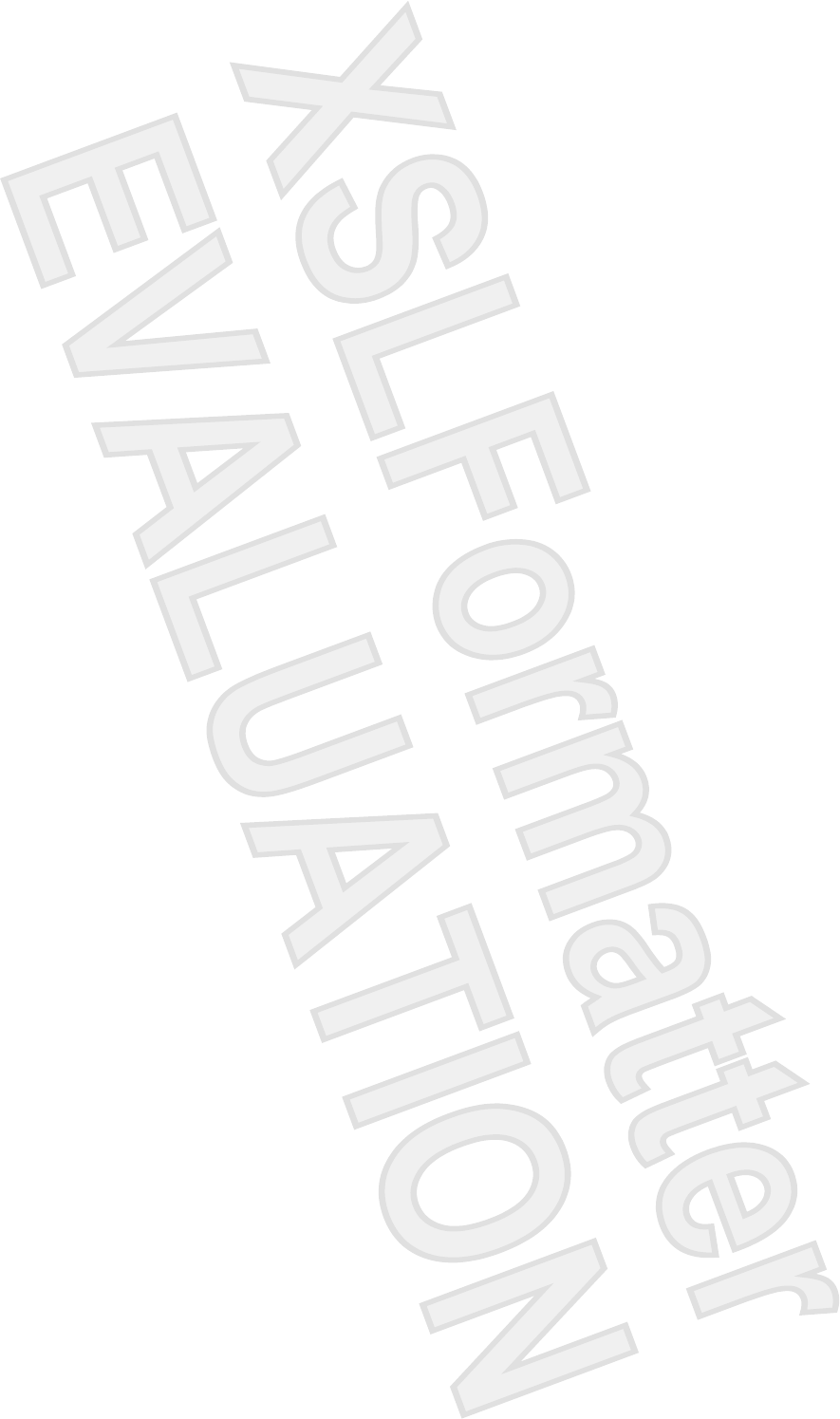
Showing the Clock in All Programs
The clock may not show in the title bar of certain programs by default. To choose to have the clock
always show in the title bar:
1. Tap Start > Settings > System tab > Clock & Alarms.
2. On the More tab, click to select the Display the clock on the title bar in all programs check box.
ENWW Showing the Clock in All Programs 71
Antenna House XSL Formatter (Evaluation) http://www.antennahouse.com/
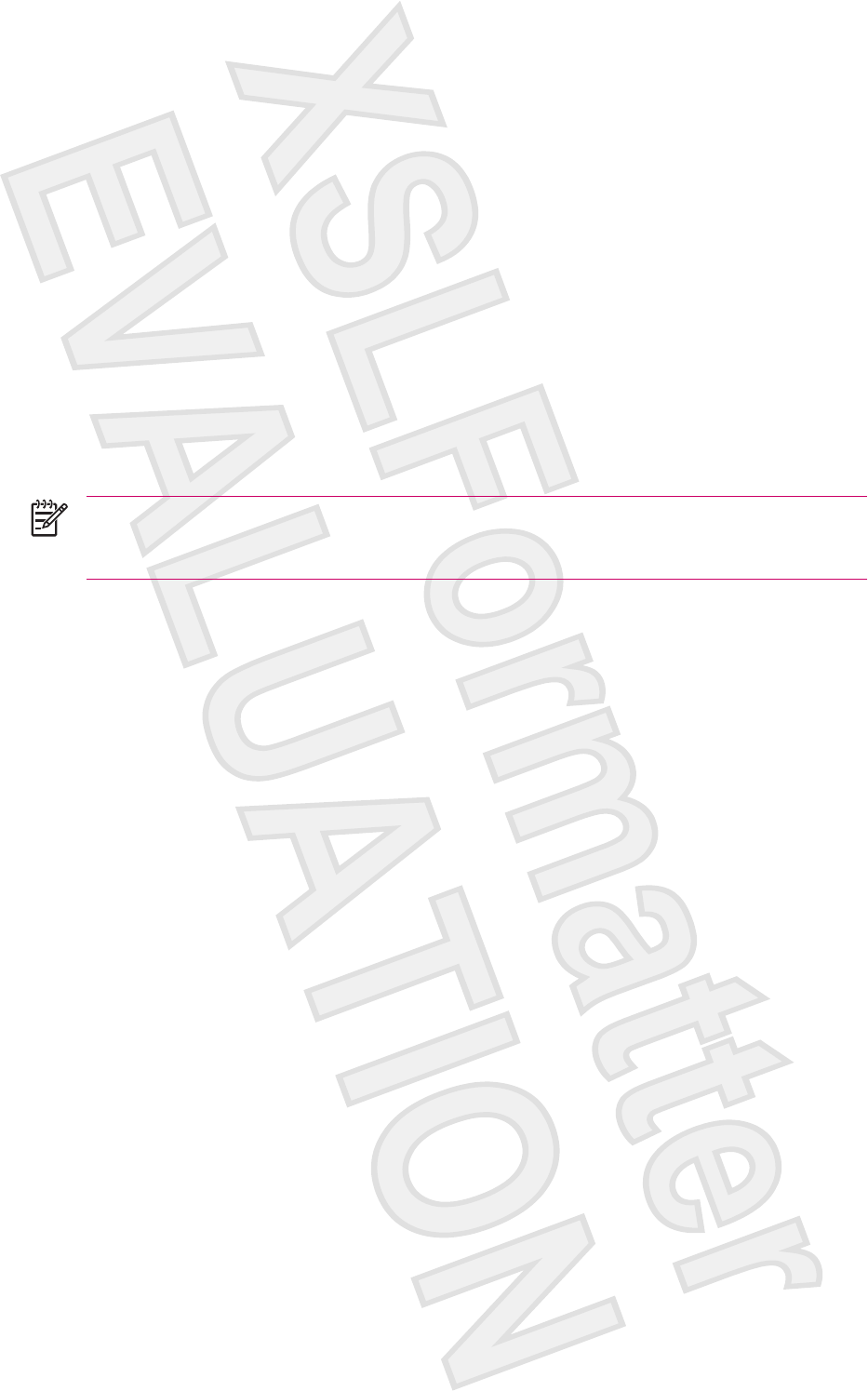
Creating and Assigning a Category
In the Calendar, Contacts, and Tasks programs, you can use categories to help you organize and group
your appointments, contacts, and tasks.
1. From the program, tap an existing item or create a new one.
2. Do one of the following:
●For an existing item in Calendar and Tasks, tap Edit > Categories.
●For an existing item in Contacts, tap Menu > Edit > Categories.
●For a new item in Calendar, Contacts, and Tasks, tap Categories.
3. Tap New, enter the category name, then tap Done. The new category is automatically assigned
to the item.
4. Tap OK to return to the appointment, contact, or task.
NOTE Categories are shared between your appointments, contacts, and tasks. A category
remains in the list of shared categories as long as it is assigned to at least one appointment,
contact, or task.
72 Chapter 8 Learning The Basics ENWW
Antenna House XSL Formatter (Evaluation) http://www.antennahouse.com/
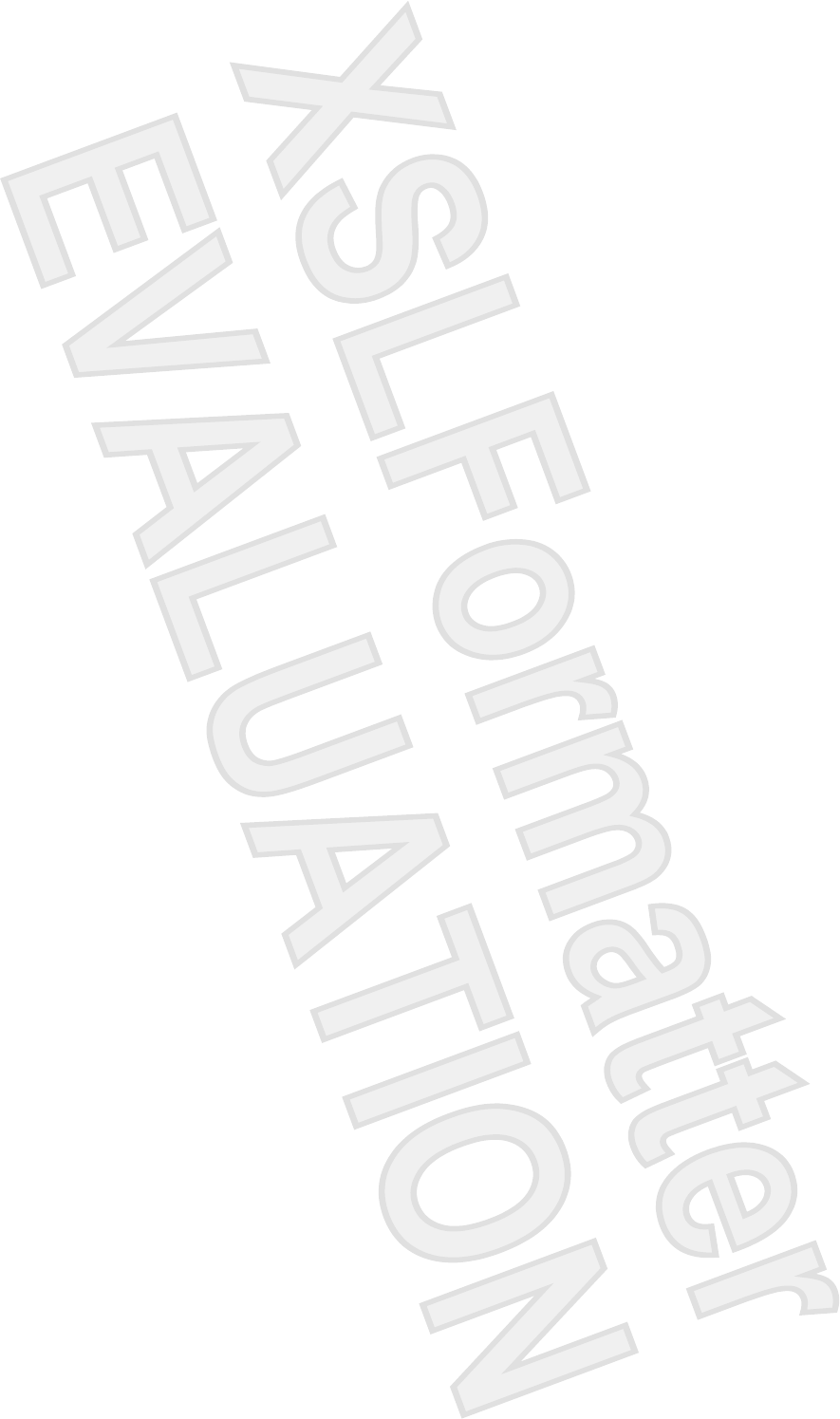
Adjusting the Speed for Scrolling Through Items in a List
You can scroll through items in a list by rolling the scroll navigation wheel or by using the soft keys on
the screen of the HP iPAQ. To change the speed at which scrolling with the soft keys occurs:
1. Tap Start > Settings > Personal tab > Buttons > Up/Down Control tab.
2. Under Delay before first repeat, move the slider to shorten or lengthen the time that elapses
before scrolling begins.
3. Under Repeat rate, move the slider to change the time it takes to scroll from one item to the next.
ENWW Adjusting the Speed for Scrolling Through Items in a List 73
Antenna House XSL Formatter (Evaluation) http://www.antennahouse.com/
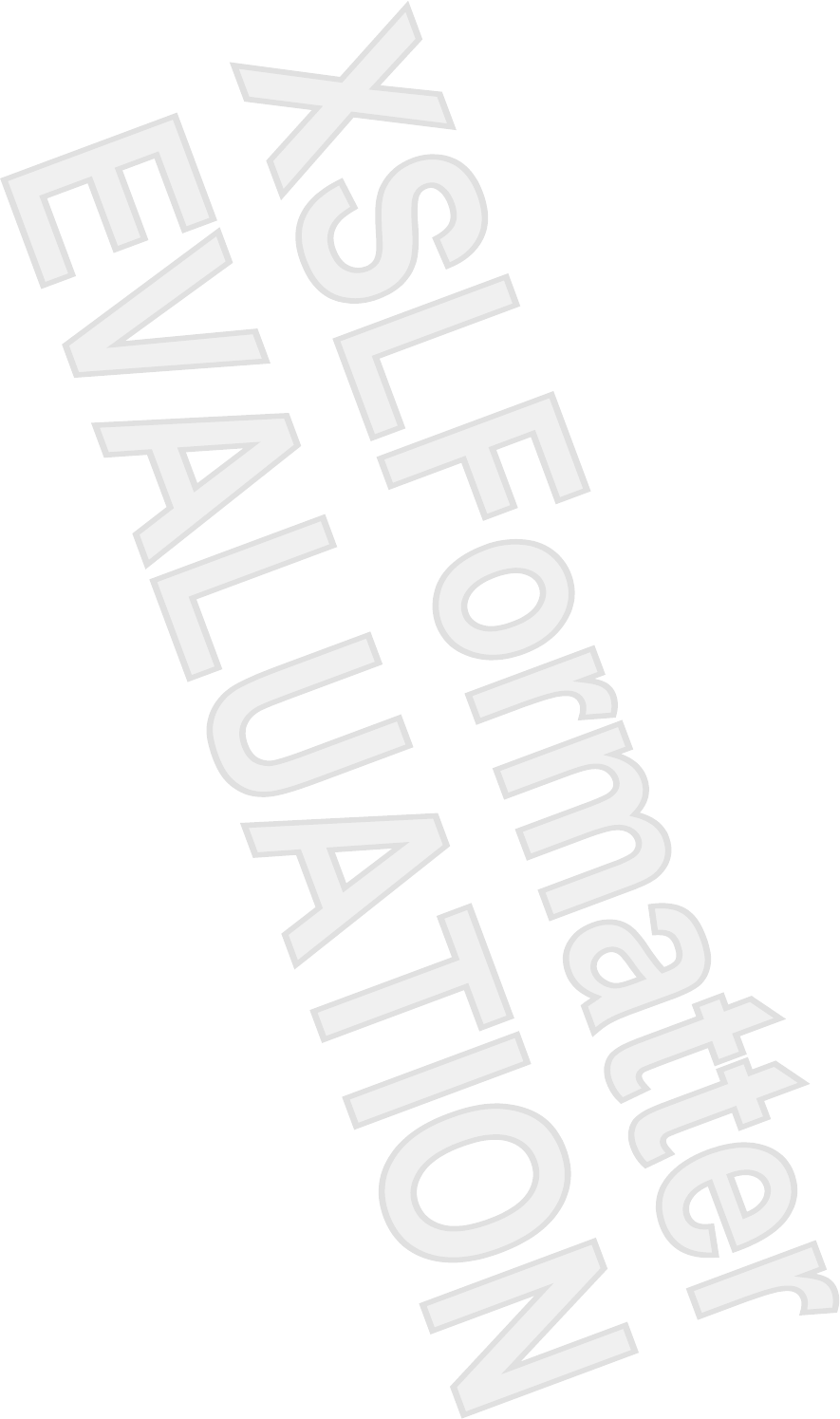
9 Calendar
Accessing Calendar
Use Calendar to schedule appointments, including meetings and other events. You can display
appointments for the day on the Today screen.
To access Calendar, on the Today screen, tap Calendar, or tap Start > Calendar depending on
your HP iPAQ model.
Changing the Display of the Work Week
You can customize your calendar so a work week starts on Sunday or Monday and continues from five
to seven days.
To change the display of the work week:
1. Tap Start > Calendar.
2. Tap Menu > Options > General tab and do one or both of the following:
●To specify the first day of the week, tap Sunday or Monday in the 1st day of week box.
●To specify the number of days to appear in a work week, tap 5-day week, 6-day week, or 7-
day week in the Week view box.
3. Tap OK.
ENWW Accessing Calendar 75
Antenna House XSL Formatter (Evaluation) http://www.antennahouse.com/
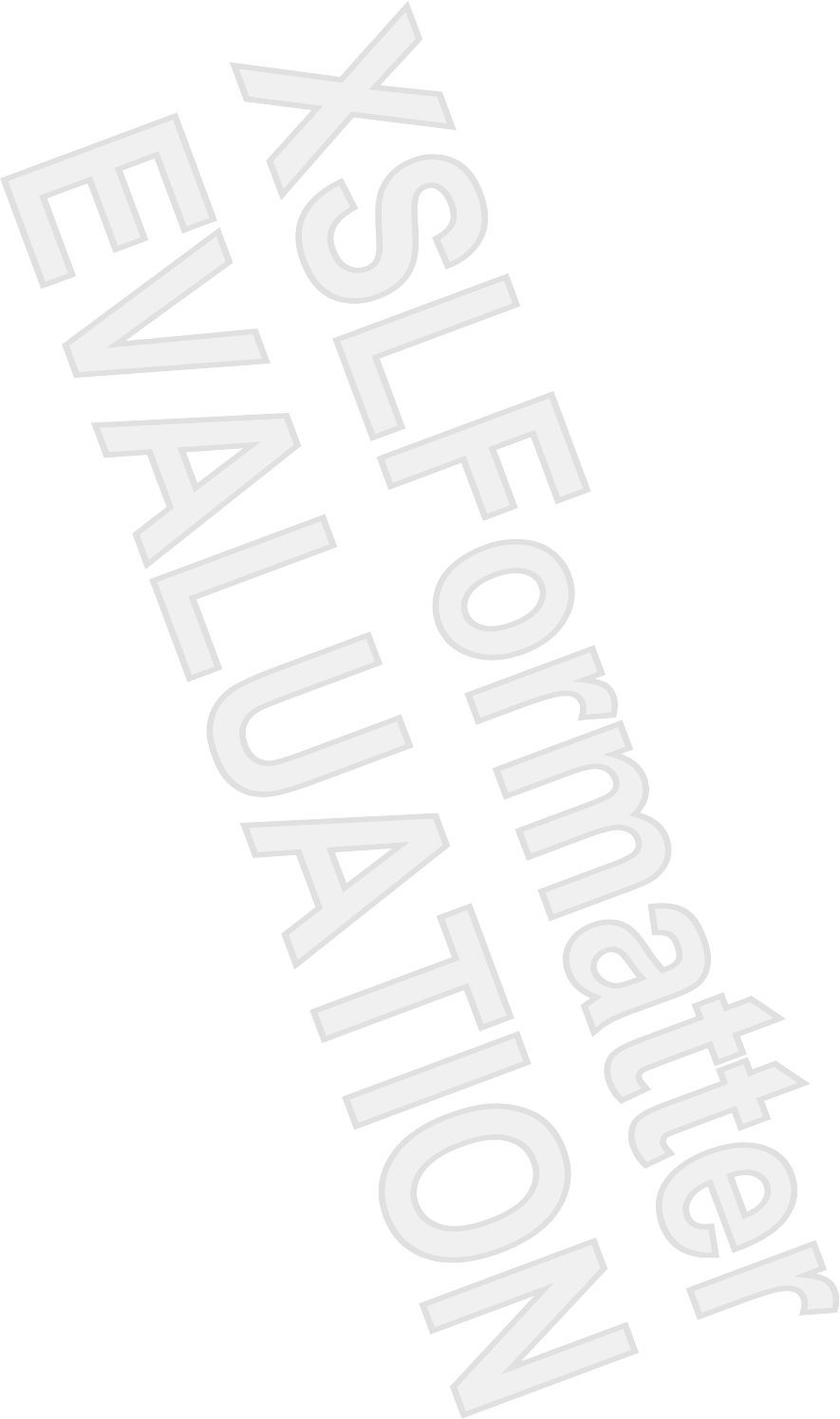
Setting a Default Reminder for All New Appointments
To automatically turn on a reminder for all new appointments:
1. Tap Start > Calendar.
2. Tap Menu > Options > Appointments tab.
3. Select the Set reminders for new items check box.
4. Set the time for the reminder to alert you.
5. Tap OK.
76 Chapter 9 Calendar ENWW
Antenna House XSL Formatter (Evaluation) http://www.antennahouse.com/
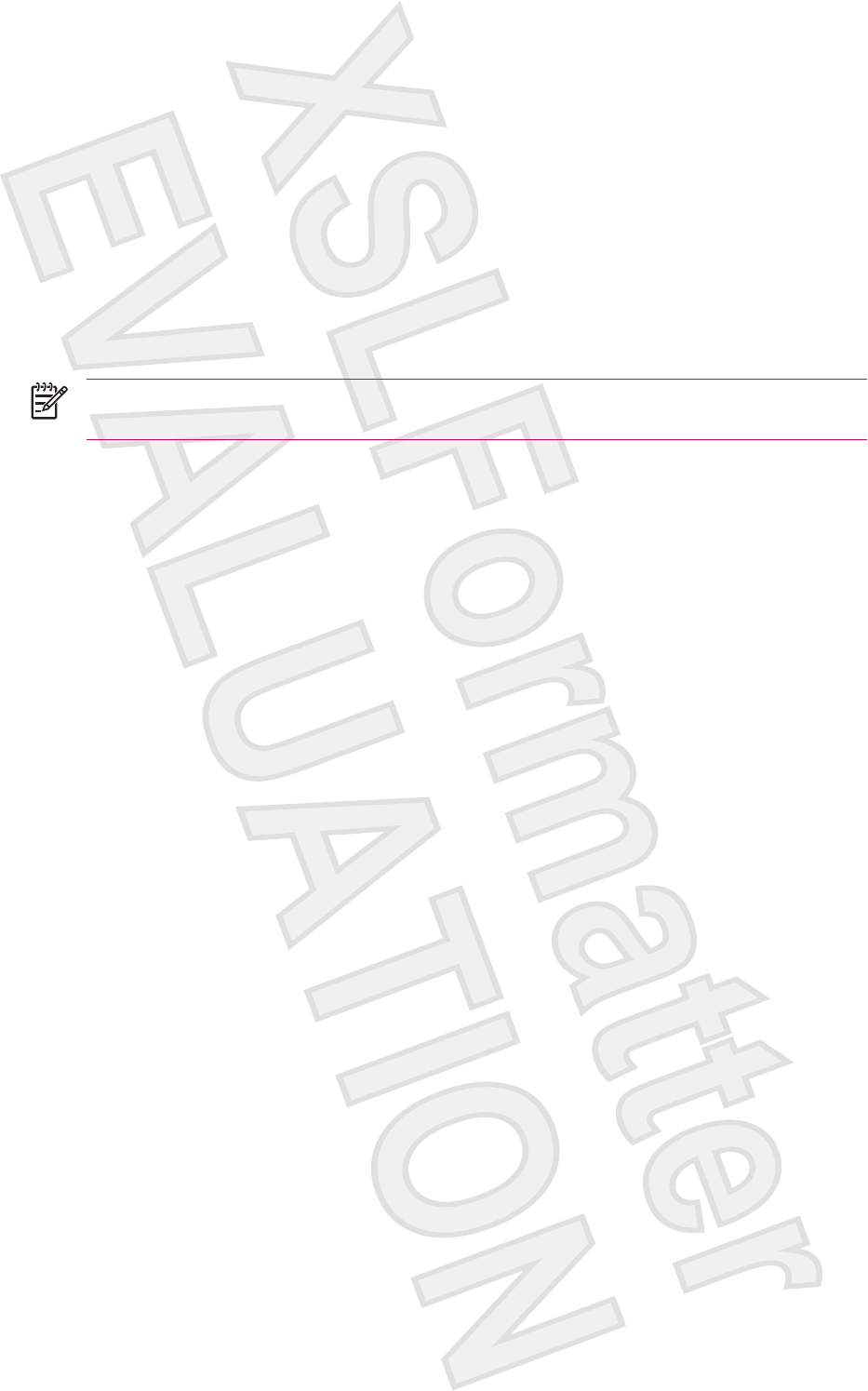
Canceling an Appointment
When you delete an appointment in Calendar on your HP iPAQ, it is also deleted on your personal
computer the next time you synchronize. If the appointment has not been synchronized with a personal
computer, it is deleted only from your HP iPAQ.
1. Tap Start > Calendar.
2. In Agenda view, select the appointment to delete.
3. Tap Menu > Delete.
4. Tap Yes to delete the appointment, or tap No to keep it.
NOTE Calendar items can be deleted only from Agenda view or from an open calendar
appointment. To delete from other views, open the appointment, and click Menu > Delete.
78 Chapter 9 Calendar ENWW
Antenna House XSL Formatter (Evaluation) http://www.antennahouse.com/
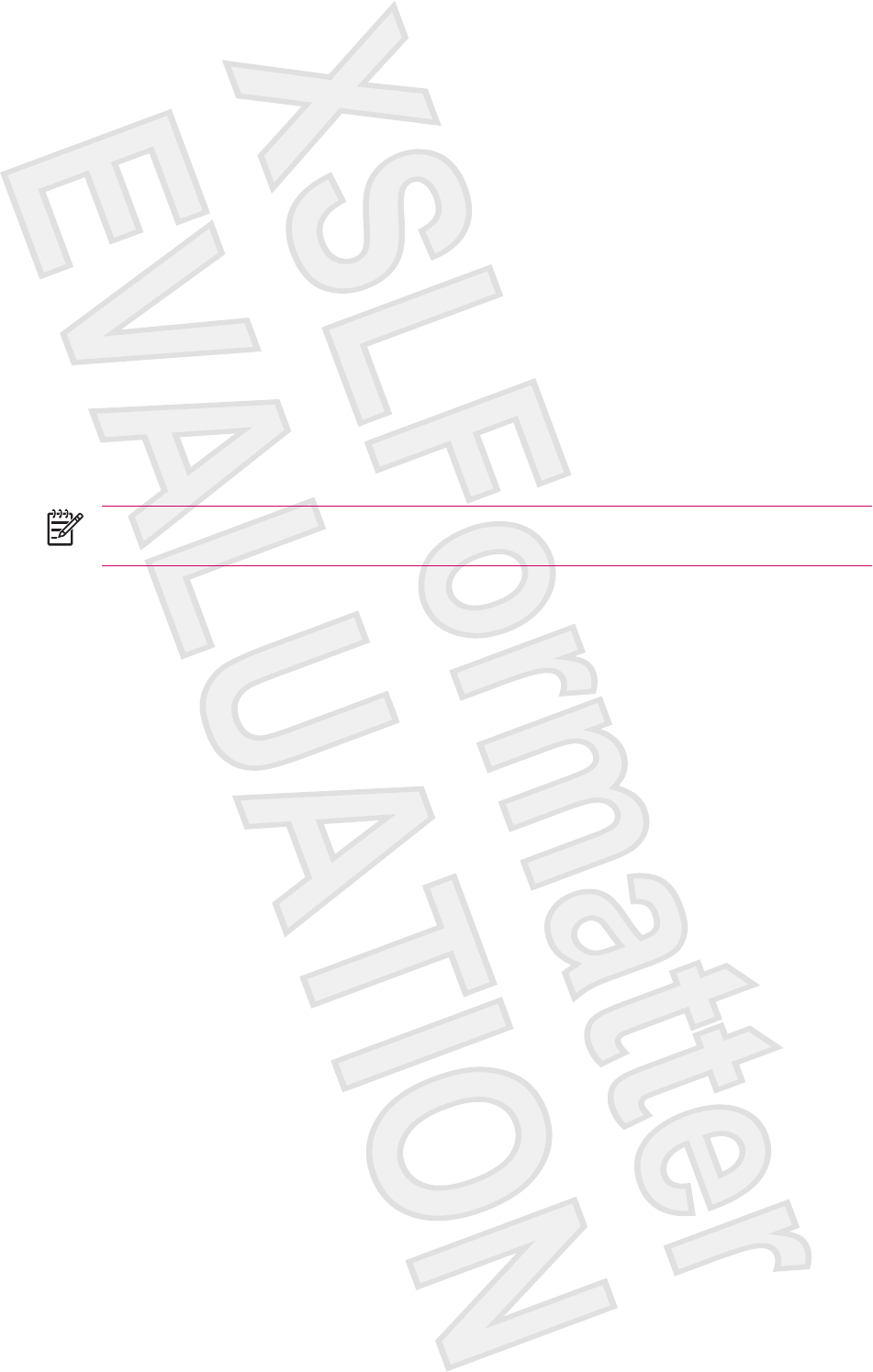
10 Contacts
Creating a Contact
1. On the Today screen, tap Contacts, or tap Start > Contacts depending on your HP iPAQ model.
2. Tap New and enter the contact information.
3. When finished, tap OK.
NOTE If your contact list has been filtered by a category when you create a contact, that
category is automatically assigned to the new contact.
To include a nickname, title, and more, while creating a contact, tap the Name arrow.
If most of the contacts you create have phone numbers that begin with the same area code, in the
Contacts, tap Menu > Options and enter that area code in the Area code box.
To get more information about creating contacts, tap Start > Help on your HP iPAQ.
ENWW Creating a Contact 79
Antenna House XSL Formatter (Evaluation) http://www.antennahouse.com/
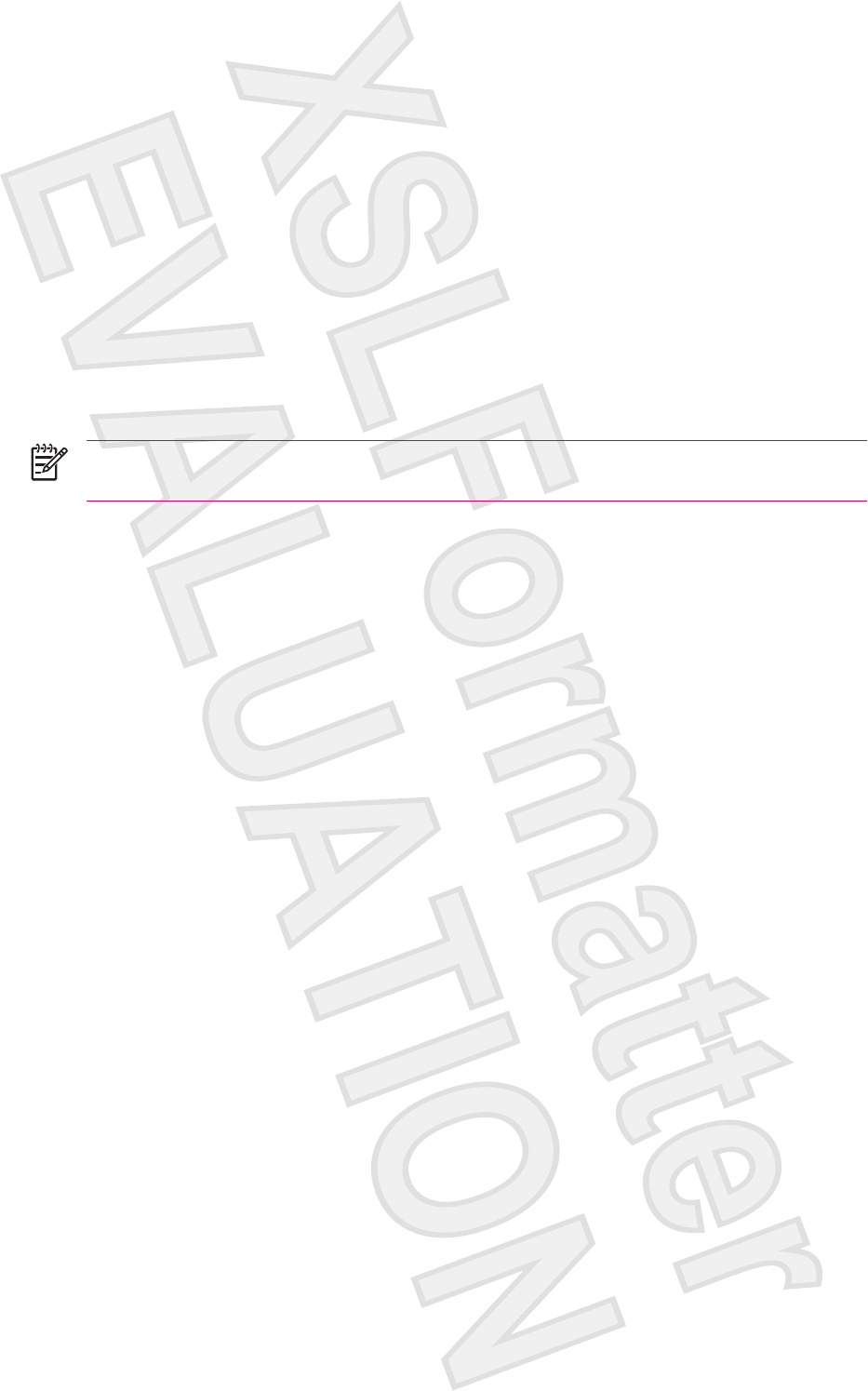
Finding a Contact
1. On the Today screen, tap Contacts, or tap Start > Contacts depending on your HP iPAQ model.
2. If you are not in Name view, tap Menu > View By > Name.
3. Do one of the following:
●Begin entering a name or phone number in the provided text box until the contact you want
is displayed. To show all contacts again, tap the text box and clear the text, or tap the arrow
to the right of the text box.
●Use the alphabetical index displayed at the top of the contact list.
●Filter the list by categories. In the contact list, tap Menu > Filter. Then tap a category you've
assigned to a contact. To show all contacts again, select All Contacts.
NOTE To search for a contact by entering a name or number, or by using the alphabetical index,
you need to be in Name view.
80 Chapter 10 Contacts ENWW
Antenna House XSL Formatter (Evaluation) http://www.antennahouse.com/
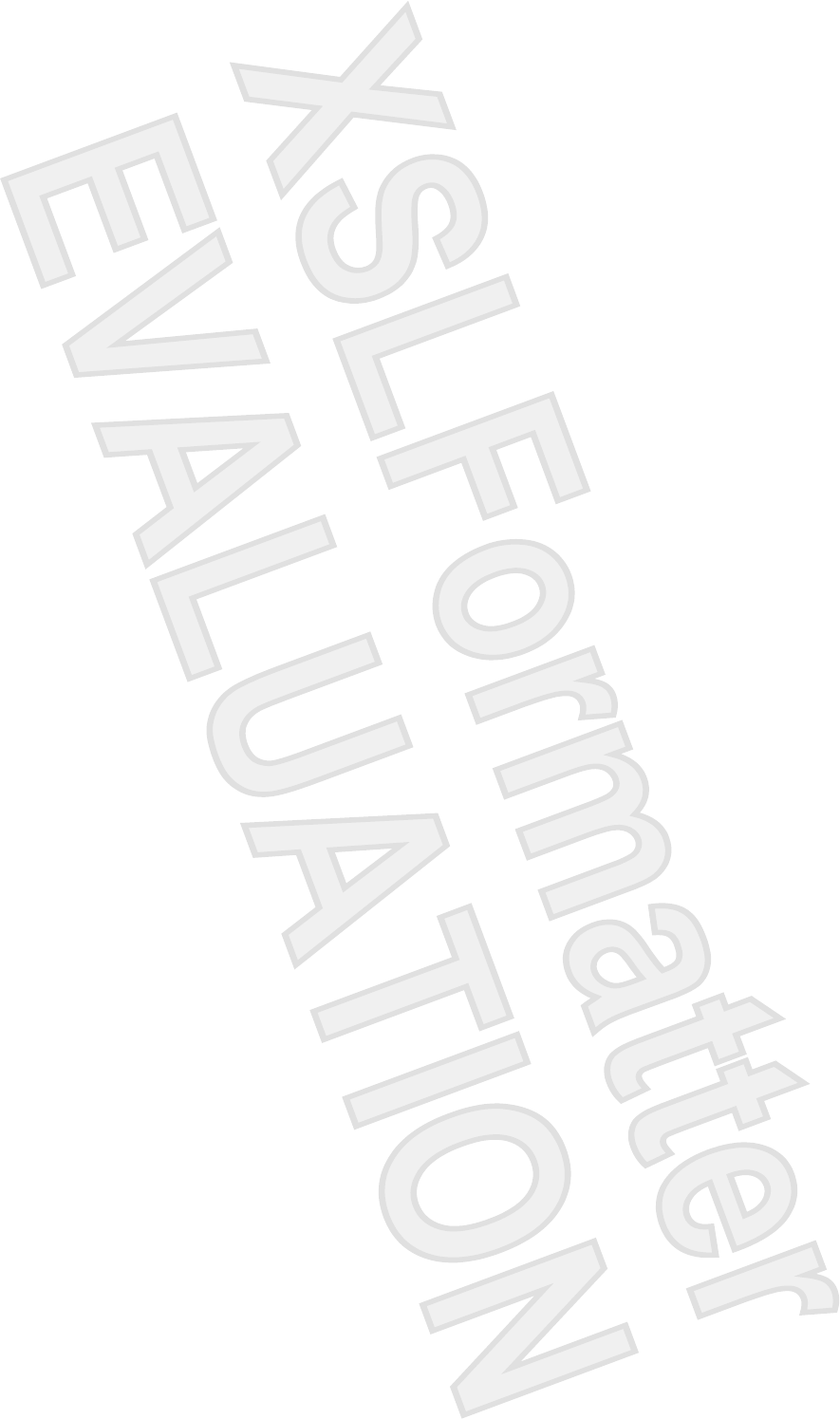
Changing Contact Information
1. Tap Contacts or Start > Contacts depending on your HP iPAQ model.
2. Tap the contact.
3. Tap Menu > Edit and enter the changes.
4. When finished, tap OK.
To include a nickname, title, and more, for an existing contact in the contact list, tap the name of the
contact, Menu > Edit, and tap the Name arrow.
82 Chapter 10 Contacts ENWW
Antenna House XSL Formatter (Evaluation) http://www.antennahouse.com/
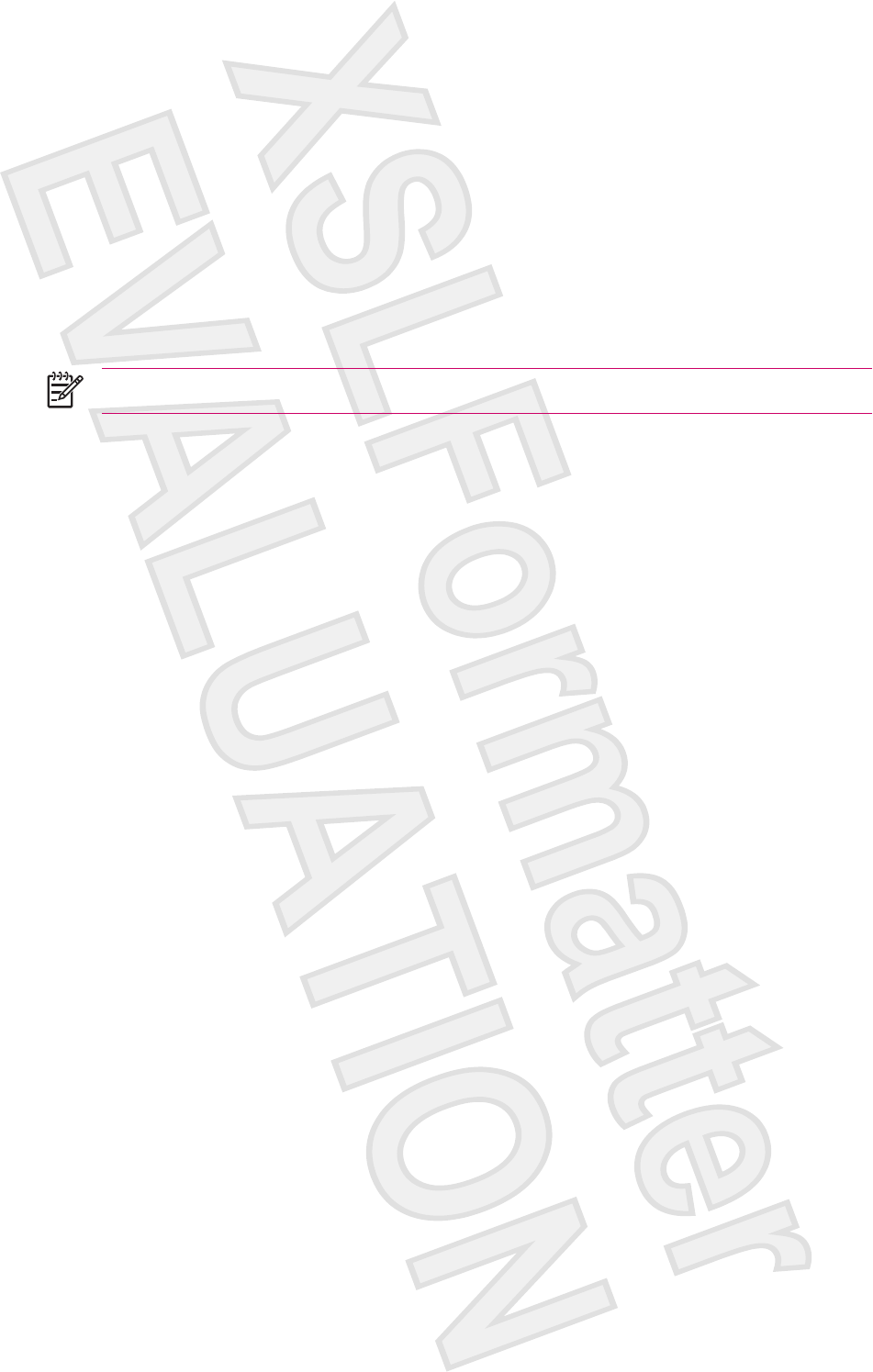
Copying a Contact
1. Tap Contacts or Start > Contacts depending on your HP iPAQ model.
2. Tap and hold the contact you want to copy.
3. Tap Copy Contact.
4. Tap the copy of the contact.
5. Tap Menu > Edit.
6. Change the contact information as needed and tap OK.
NOTE The displayed category is automatically assigned to the new contact.
ENWW Copying a Contact 83
Antenna House XSL Formatter (Evaluation) http://www.antennahouse.com/
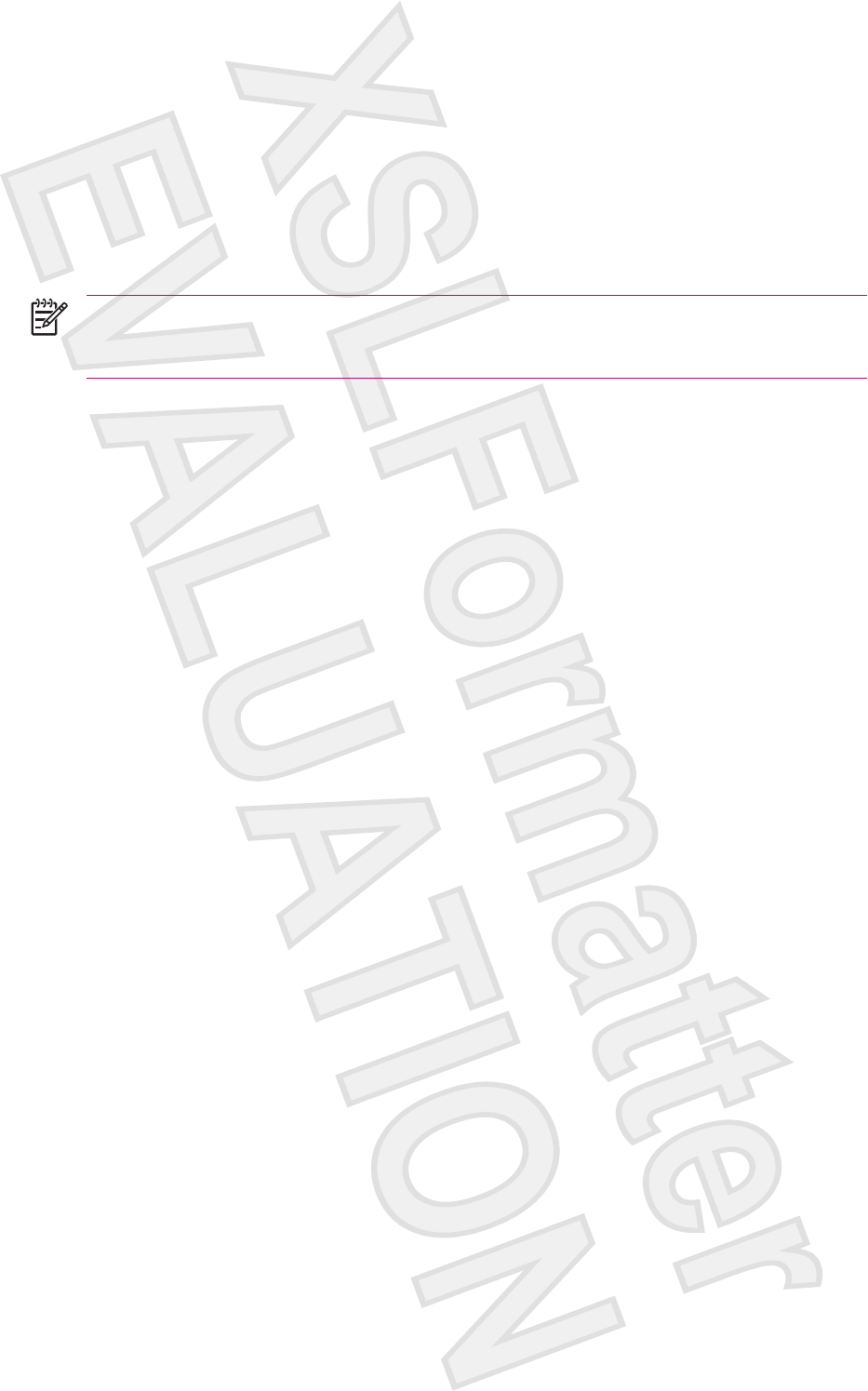
Sending an E-mail Message to a Contact
1. Tap Contacts or Start > Contacts depending on your HP iPAQ model.
2. Tap the contact you want to send a message to.
3. Tap the address you want to send a message to.
4. Tap the account you want to send the message from.
NOTE To quickly add a contact's address to a new message, tap the To, Cc, or Bcc line, and
tap Menu > Add Recipient. Tap the contact you want to send the message to and choose the
address, if necessary.
84 Chapter 10 Contacts ENWW
Antenna House XSL Formatter (Evaluation) http://www.antennahouse.com/
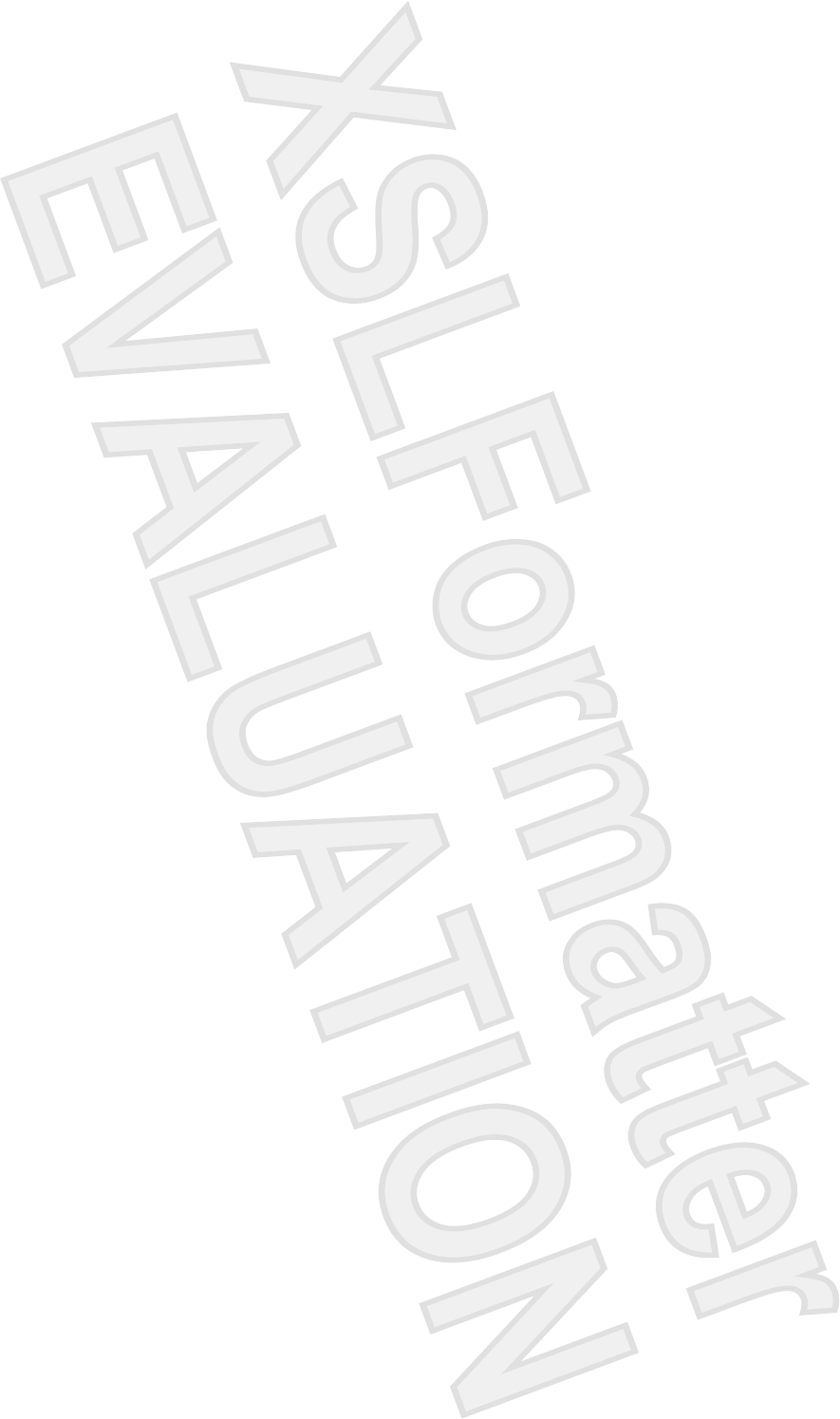
Adding and Removing a Picture
To add a picture to contact information:
1. Tap Contacts or Start > Contacts depending on your HP iPAQ model.
2. Tap the contact.
3. Tap Menu > Edit.
4. Tap Picture.
5. Tap the picture you want to add.
To remove a picture from contact information:
1. Tap Contacts or Start > Contacts depending on your HP iPAQ model.
2. Tap the contact.
3. Tap Menu > Edit.
4. Tap Menu > Remove Picture.
ENWW Adding and Removing a Picture 85
Antenna House XSL Formatter (Evaluation) http://www.antennahouse.com/
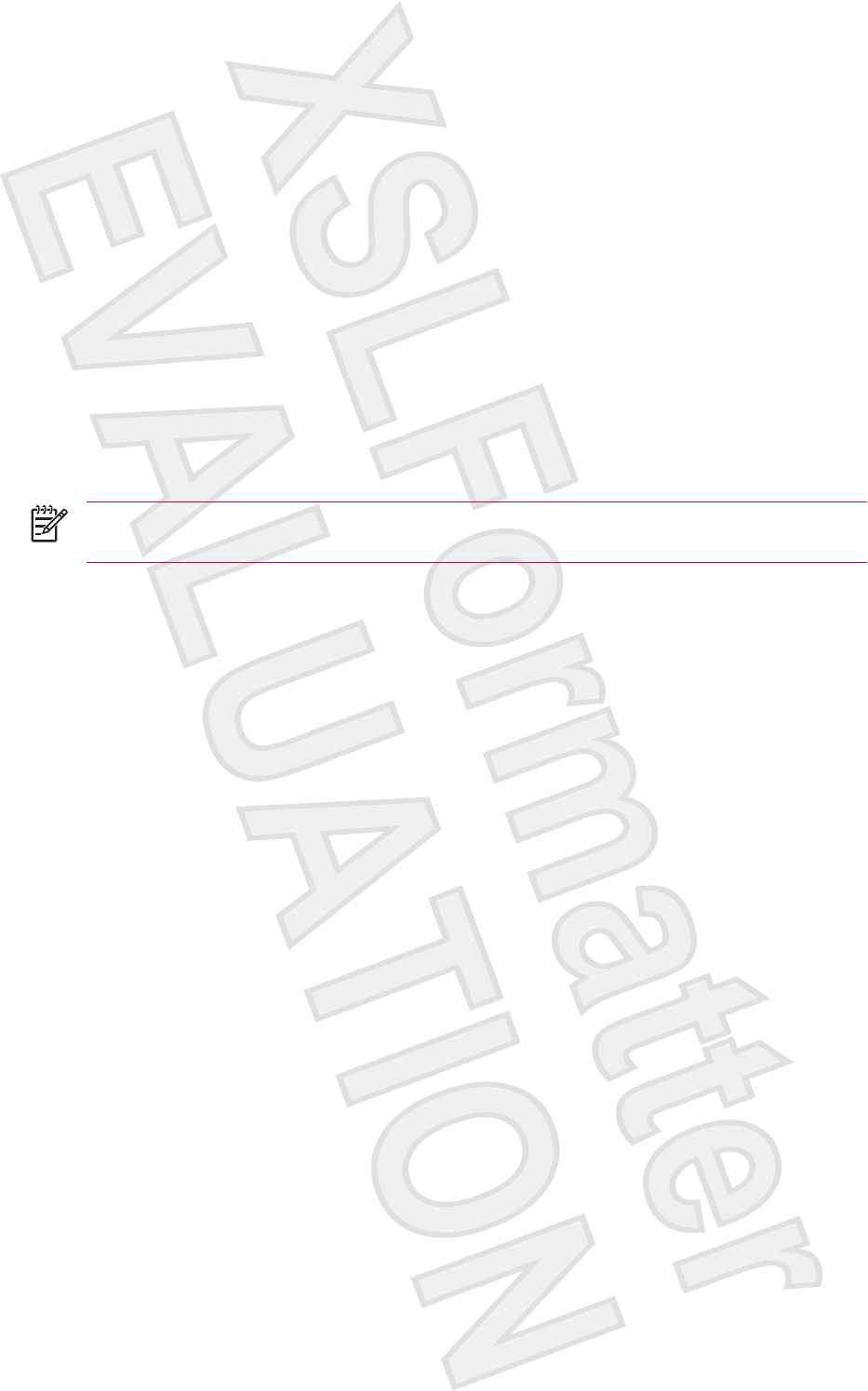
Working with the Contact List
There are several ways to use and customize the contact list. Here are a few tips on how to make it
work for you.
1. On the Today screen, tap Contacts or Start > Contacts depending on your HP iPAQ model.
2. In the contact list, do any of the following:
●To search for a contact by entering a name or number, or by using the alphabetical index,
enter the name or number into the Name view.
●To see a list of contacts employed by a specific name or company, tap Menu > View By >
Name or Company.
●To see a summary of information about a contact, tap the contact. From there you can also
send a message.
●To see a list of available actions for a contact, tap and hold the contact.
NOTE To display a greater number of contacts on the screen, tap Menu > Options, select the
Show contact names only check box, and clear the Show alphabetical index check box.
86 Chapter 10 Contacts ENWW
Antenna House XSL Formatter (Evaluation) http://www.antennahouse.com/
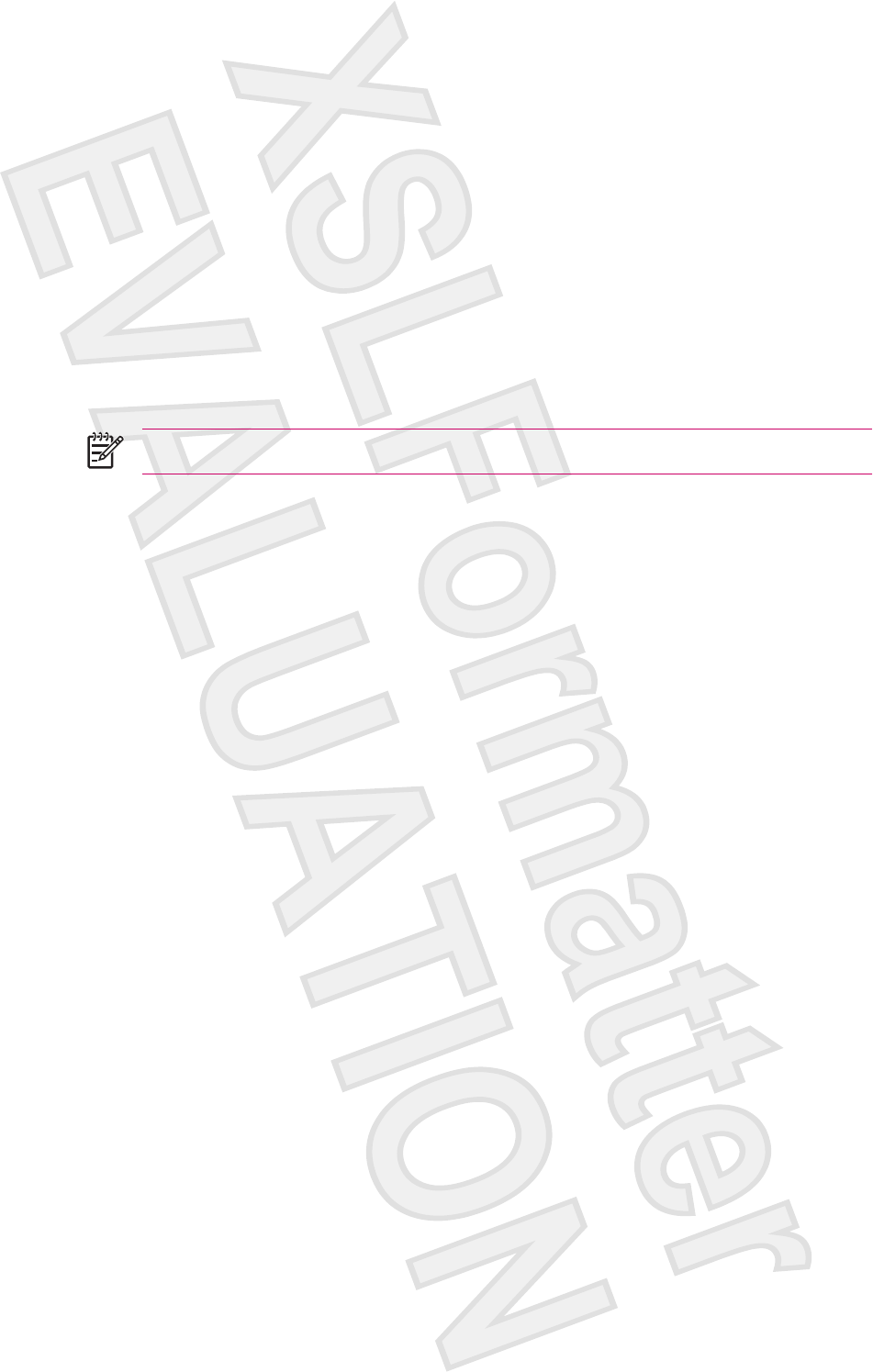
11 Notes
Writing a Note
1. Tap Start > Programs > Notes.
NOTE Writing must be selected as the default input mode.
2. In the note list, tap New.
3. Write your text on the screen.
4. When finished, tap OK to return to the note list.
To select handwritten text, tap and hold next to the writing. As soon as dots appear and before they
form a complete circle, quickly drag across the writing.
If a letter crosses three ruled lines, it is treated as a drawing rather than text.
For more information, refer to the on-screen Help by tapping Start > Help > Contents > Using
Notes.
ENWW Writing a Note 87
Antenna House XSL Formatter (Evaluation) http://www.antennahouse.com/
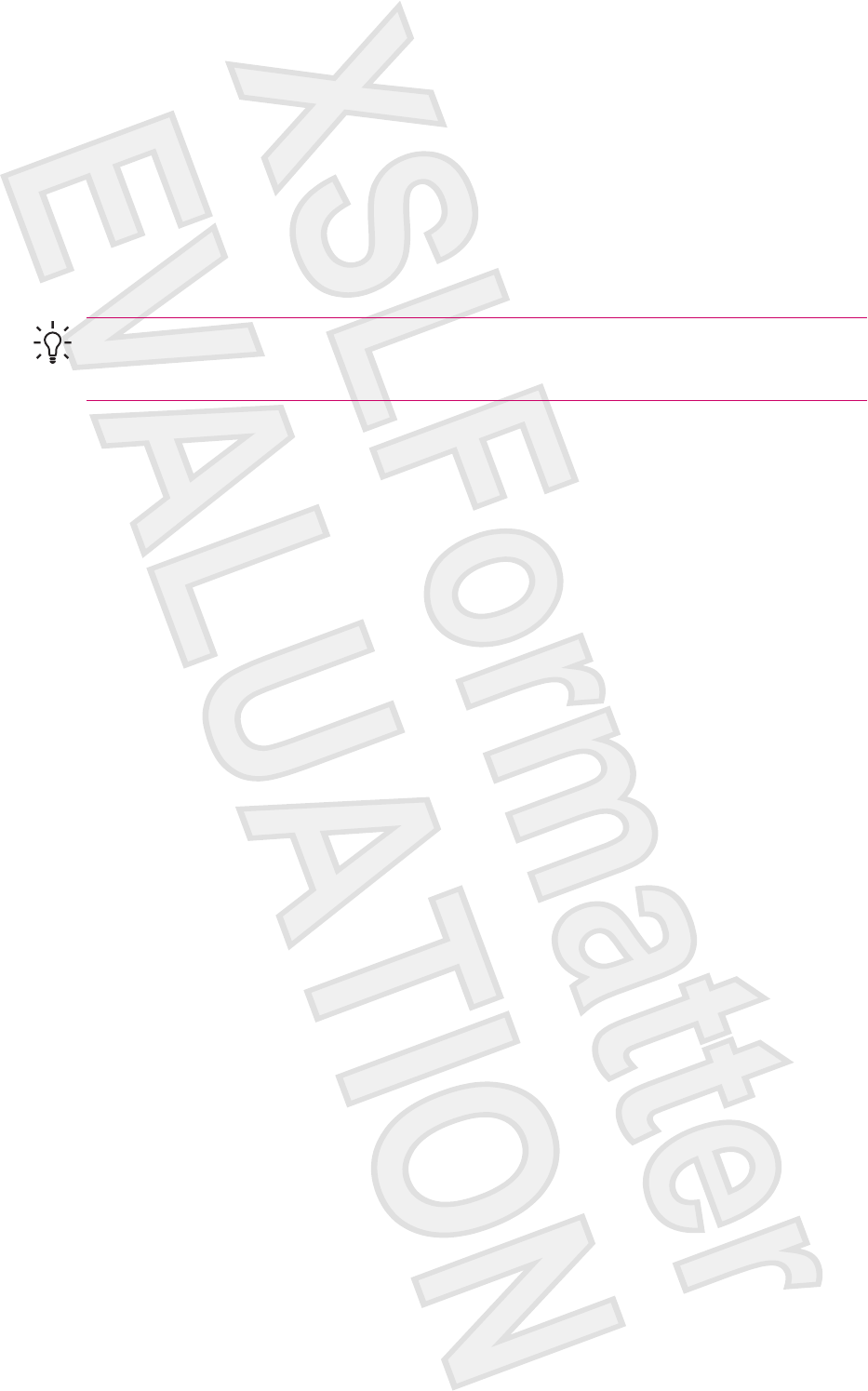
Converting a Handwritten Note to Typed Text
There may be times when you want to convert a handwritten note to typed text for easier readability. To
do this:
1. Tap Start > Programs > Notes.
2. Tap the written note you want to convert to text.
3. Tap Menu > Tools > Recognize.
Tip To correct a conversion, tap and hold the inaccurate word. Tap Alternates, and tap the
correct word. If the correct word is not shown, use they keyboard to tap the backspace key and
retype the word.
For more details, refer to the on-screen Help, tap Start > Help > Contents > Using Notes.
88 Chapter 11 Notes ENWW
Antenna House XSL Formatter (Evaluation) http://www.antennahouse.com/
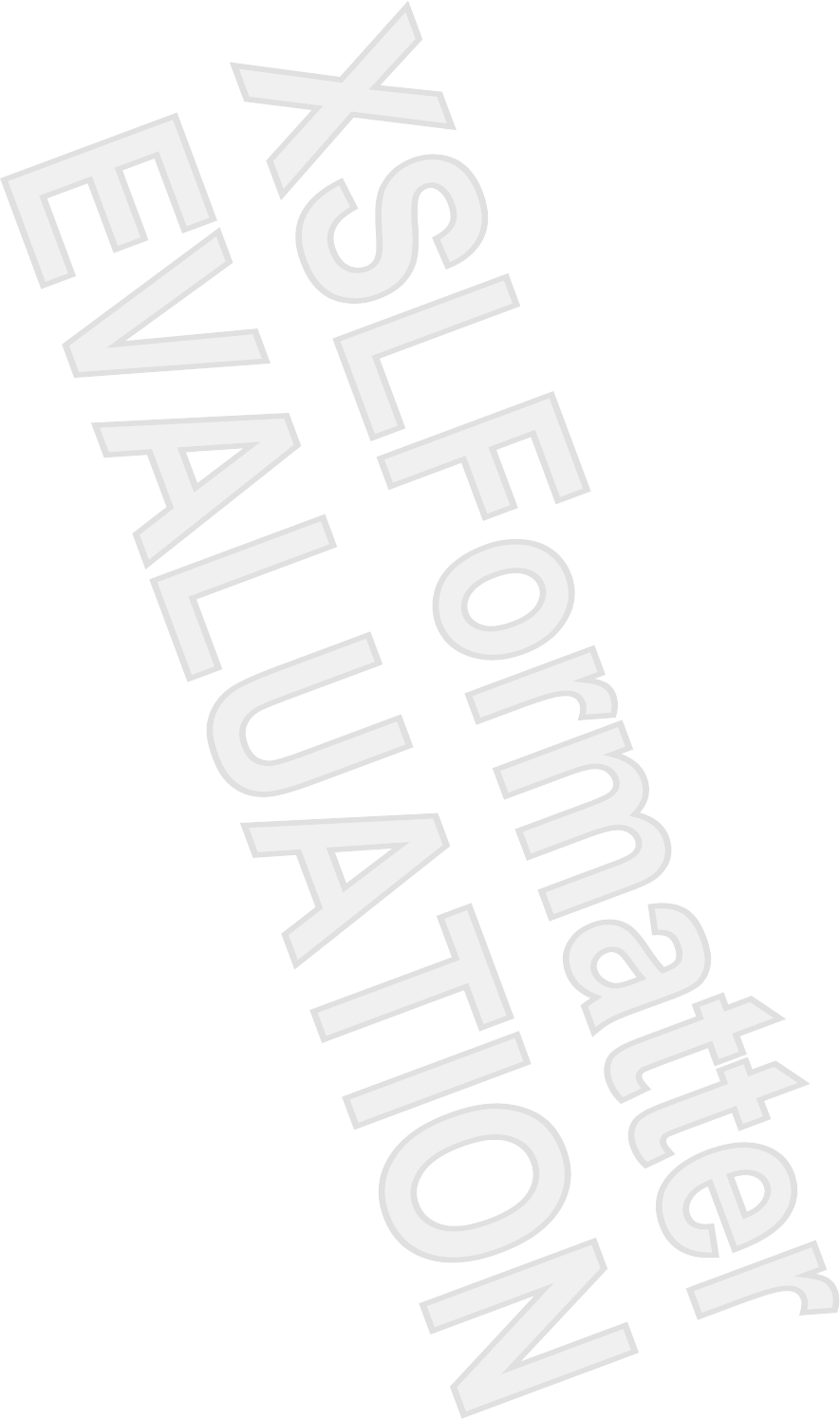
Creating a Copy of a Note
To create a copy of a note:
1. Tap Start > Programs > Notes.
2. Use the scroll navigation wheel to select the note you want to copy.
3. Tap Menu > Create Copy.
A copy of the note appears in the note list.
For more details, refer to the on-screen Help, tap Start > Help > Contents > Using Notes.
ENWW Creating a Copy of a Note 89
Antenna House XSL Formatter (Evaluation) http://www.antennahouse.com/
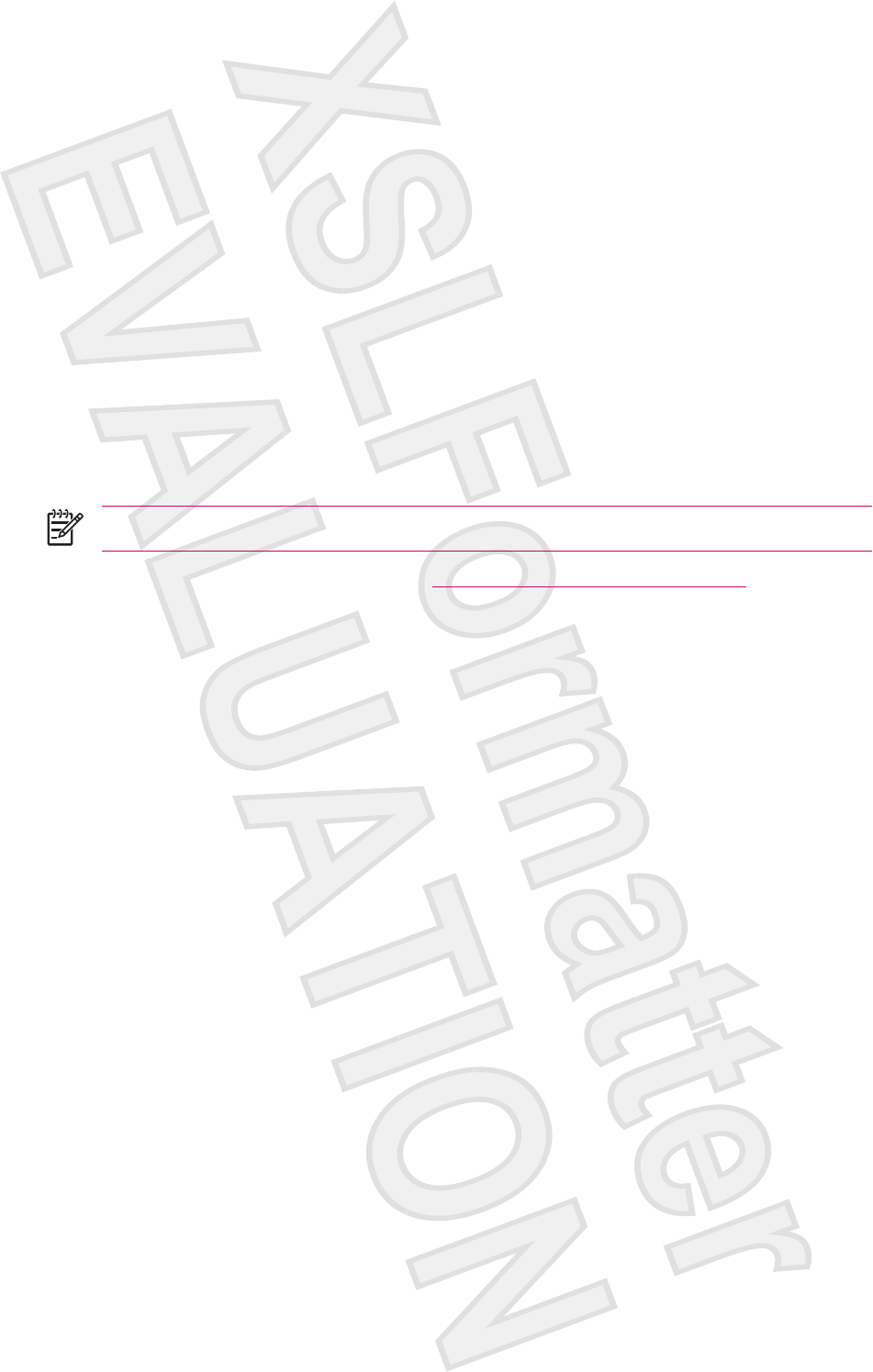
12 Storage Cards
Using Storage Cards
Use optional storage cards for:
●Expanding the memory of your HP iPAQ
●Adding functionality
NOTE Storage cards must be purchased separately and are not included with your HP iPAQ.
To locate information about storage cards, visit http://www.hp.com/go/ipaqaccessories.
ENWW Using Storage Cards 91
Antenna House XSL Formatter (Evaluation) http://www.antennahouse.com/
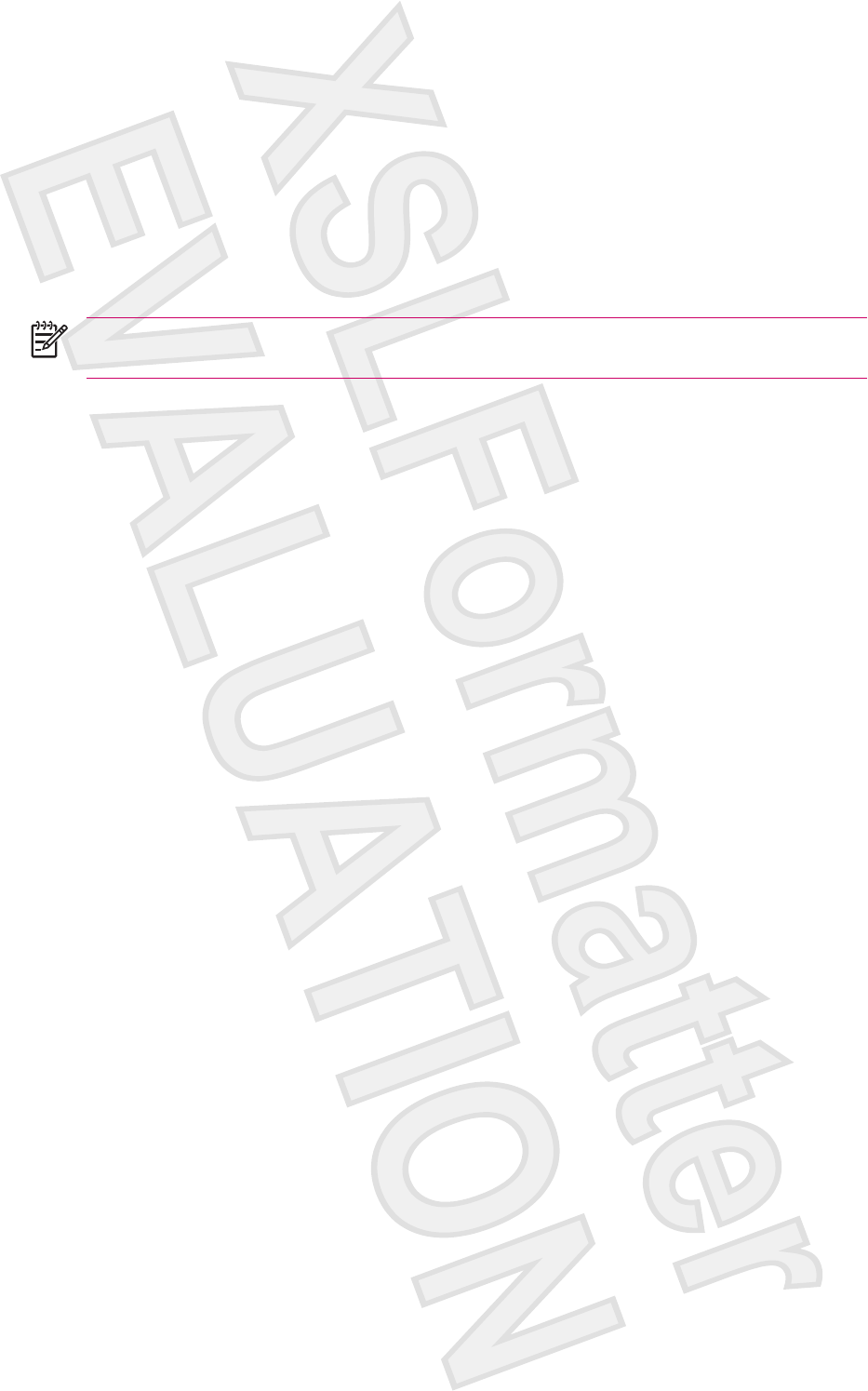
Installing a Storage Card
To install a storage card into the storage slot on the HP iPAQ:
1. Locate the storage slot on the HP iPAQ.
2. Remove the protective plastic card.
3. Insert the storage card into the storage slot and push the connection edge of the card firmly into
the storage slot.
NOTE If your storage card is not recognized, follow the card manufacturer's instructions to
install it.
If you have trouble installing a storage card, try the following:
●Be sure the label is facing the front of the HP iPAQ.
●Be sure you are not inserting the card at an angle.
●Be sure you insert the connection area (the metal area) first.
92 Chapter 12 Storage Cards ENWW
Antenna House XSL Formatter (Evaluation) http://www.antennahouse.com/

Removing a Storage Card
To remove a Secure Digital (SD) storage card from the storage slot on the HP iPAQ:
1. Close all programs that are using the storage card.
2. Remove the card from the storage slot by lightly pushing down on the card to unlock it.
3. When the card disengages and pops up, pull it from the storage slot.
NOTE HP recommends inserting the protective plastic card that came with your HP iPAQ into
the storage slot when not in use.
ENWW Removing a Storage Card 93
Antenna House XSL Formatter (Evaluation) http://www.antennahouse.com/
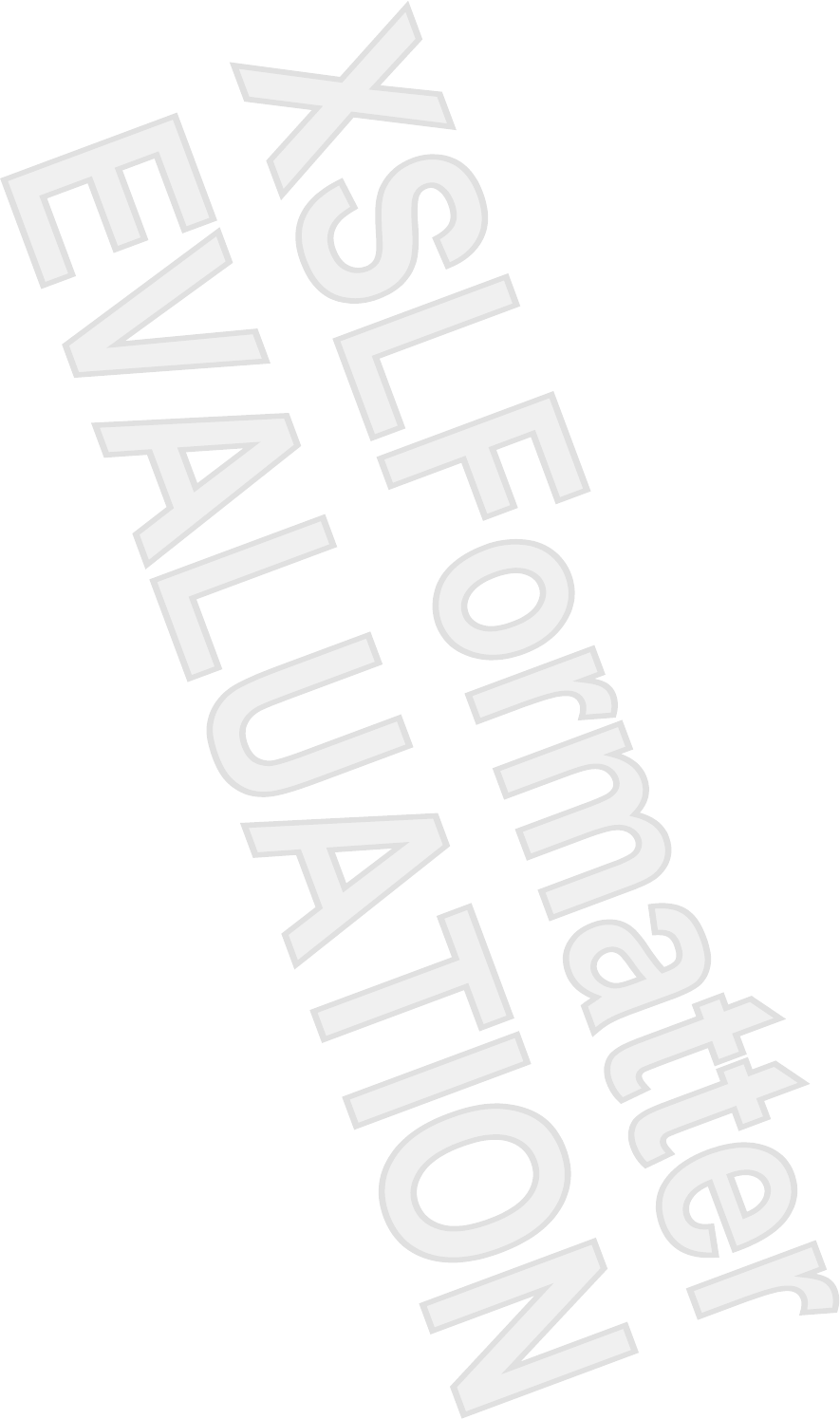
Viewing Content of a Storage Card
Use File Explorer to view the files that are located on your optional storage card.
1. Tap Start > Programs > File Explorer.
2. Tap the Up soft key at the bottom of the screen, then select the SD Card folder to see a list of files
and folders.
If the HP iPAQ does not recognize your storage card, try the following:
●Be sure you have firmly pushed the storage card down into the storage slot.
●Be sure to install any drivers that came with the storage card.
●Reset the HP iPAQ by using the stylus to lightly press the Reset button.
94 Chapter 12 Storage Cards ENWW
Antenna House XSL Formatter (Evaluation) http://www.antennahouse.com/
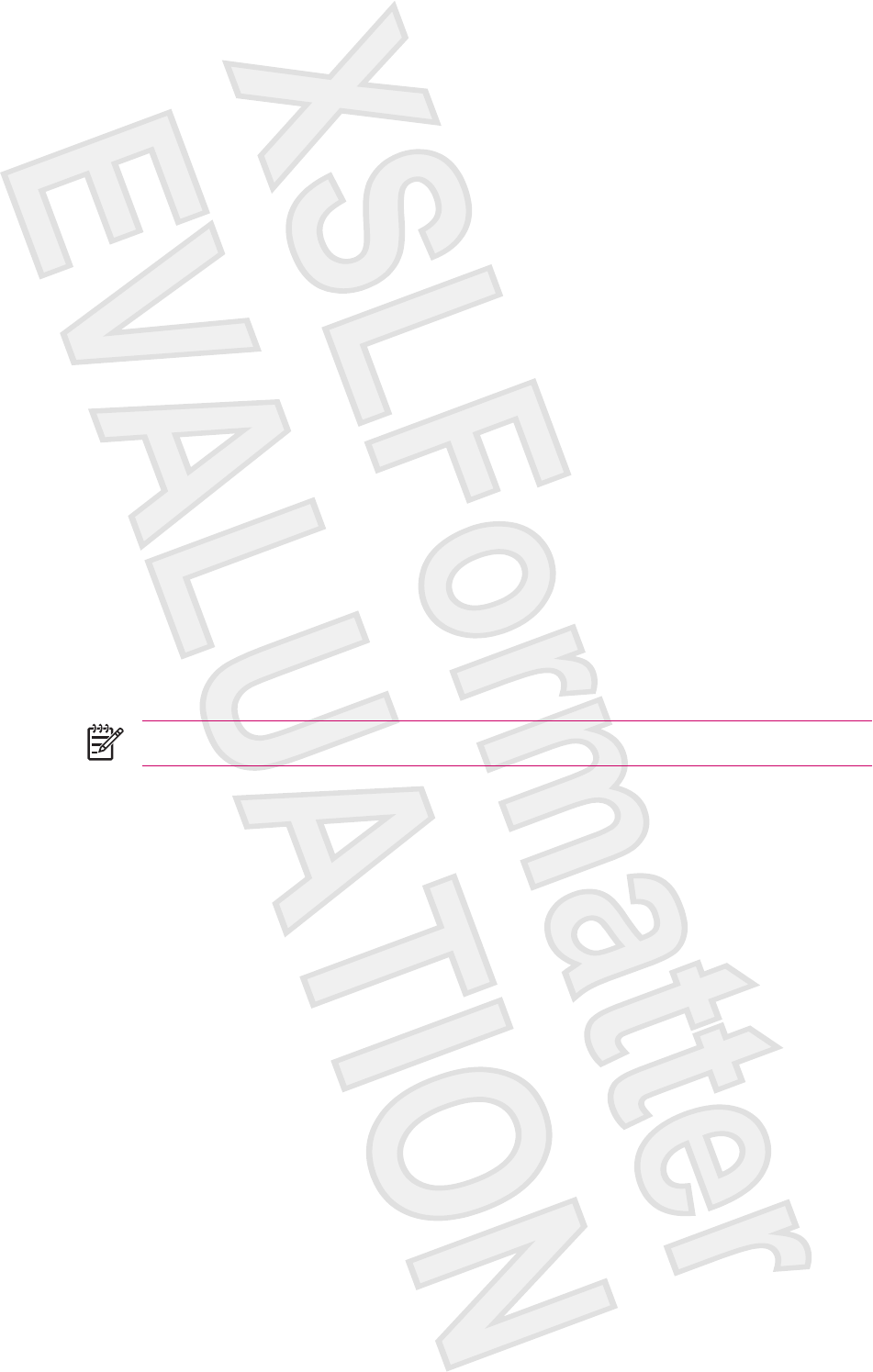
13 Synchronizing
Copying (or Transferring) Files
You can copy (transfer) files to and from your computer using Explore in ActiveSync and Windows
Explorer.
To copy (transfer) files:
1. Connect your HP iPAQ to your personal computer via the mini-USB synchronization cable.
2. On your personal computer, select Start > Programs > Microsoft ActiveSync.
3. Select Explore.
4. Double-click My Pocket PC.
5. On your computer, right-click the Start menu, and select Explore.
6. Locate the file to be moved.
NOTE You cannot copy preinstalled files or system files.
7. Drag and drop your files between your HP iPAQ and your personal computer. ActiveSync converts
the files so that they can be used by the Office Mobile programs, if necessary.
Move your files directly into My Documents on your HP iPAQ (or into a folder inside My Documents),
so the programs on your device can locate them.
ENWW Copying (or Transferring) Files 95
Antenna House XSL Formatter (Evaluation) http://www.antennahouse.com/
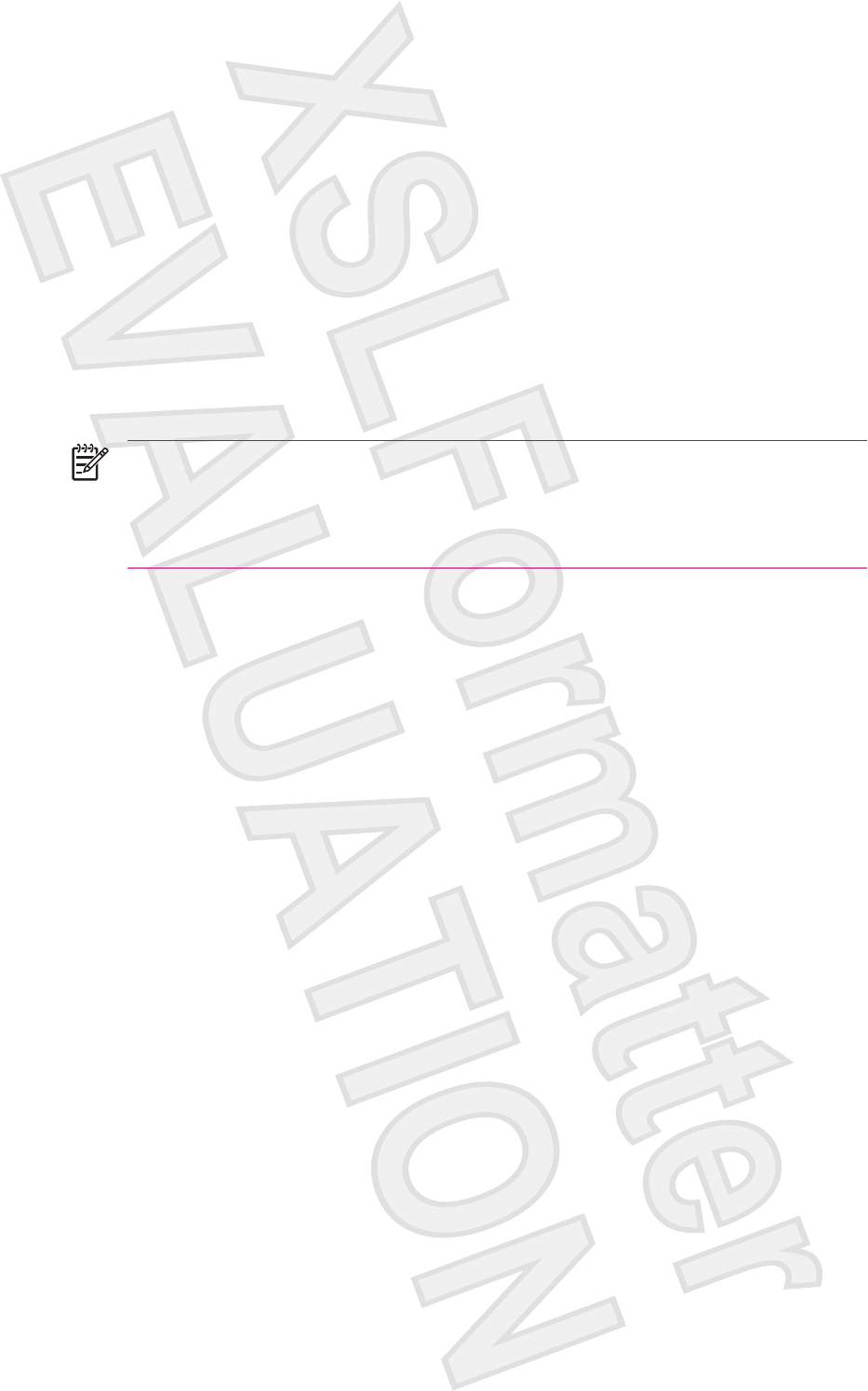
Migrating Data from Palm Desktop to Microsoft Windows
Mobile 5.0
If you used a Palm Operating System (OS) based device before purchasing your HP iPAQ, you need
to migrate your data from the Palm Desktop software to Microsoft Windows Mobile 5.0.
To migrate data from Palm Desktop to Windows Mobile 5.0:
1. If you do not already have Microsoft Outlook 98 or higher installed on your personal computer,
follow the on-screen instructions to install Outlook 2002 from the Getting Started CD.
2. Insert the Companion CD that came with your Palm unit into your personal computer's CD-ROM
drive. From the Discover Your Handheld screen, select Install Microsoft Conduits.
Alternatively, you may reinstall the Palm Desktop software. During the configuration process, select
Synchronize your handheld with Microsoft Outlook and Palm Desktop software.
NOTE Microsoft Outlook must be set as your default e-mail program to properly
synchronize with the Palm Desktop software. If you need to change your settings, open
Microsoft Outlook, then click Tools > Options > Other tab and check the Make Outlook
the default program for E-mail, Contacts, and Calendar check box. Click Apply > OK,
and then restart your personal computer.
3. Use the HotSync software located on the Companion CD that came with your Palm unit to
synchronize your Palm information with Outlook. Refer to the instructions that came with your Palm
unit for help installing or using HotSync.
4. When Outlook is synchronized with your Palm device, uninstall HotSync from your personal
computer. Click Start > Control Panel > double-click Add or Remove Programs. Select Palm
Desktop, then click Remove. Follow the on-screen instructions.
5. Insert the Getting Started CD into your personal computer's CD-ROM drive and follow the on-
screen instructions to install ActiveSync on your personal computer and create a partnership
between your HP iPAQ and your personal computer.
96 Chapter 13 Synchronizing ENWW
Antenna House XSL Formatter (Evaluation) http://www.antennahouse.com/

Wireless Synchronization Cost Saving Tips
How you manage the cost of synchronizing wirelessly from your HP iPAQ depends on your priorities.
To Do this
Reduce network connection or data transfer costs Increase the time between scheduled synchronizations, or
synchronize manually. Check the details of your rate plan.
Extend battery life Schedule synchronization less frequently or synchronize
manually.
Keep your information up to date During periods of high mail volume, schedule synchronization
at regular but frequent intervals. During periods of low mail
volume, schedule synchronization as items arrive.
NOTE The device power-down timer is reset each time you synchronize. If you schedule a
synchronization interval that is smaller than the time interval set for the device to automatically
power down, the device never turns off to save battery power.
ENWW Wireless Synchronization Cost Saving Tips 97
Antenna House XSL Formatter (Evaluation) http://www.antennahouse.com/
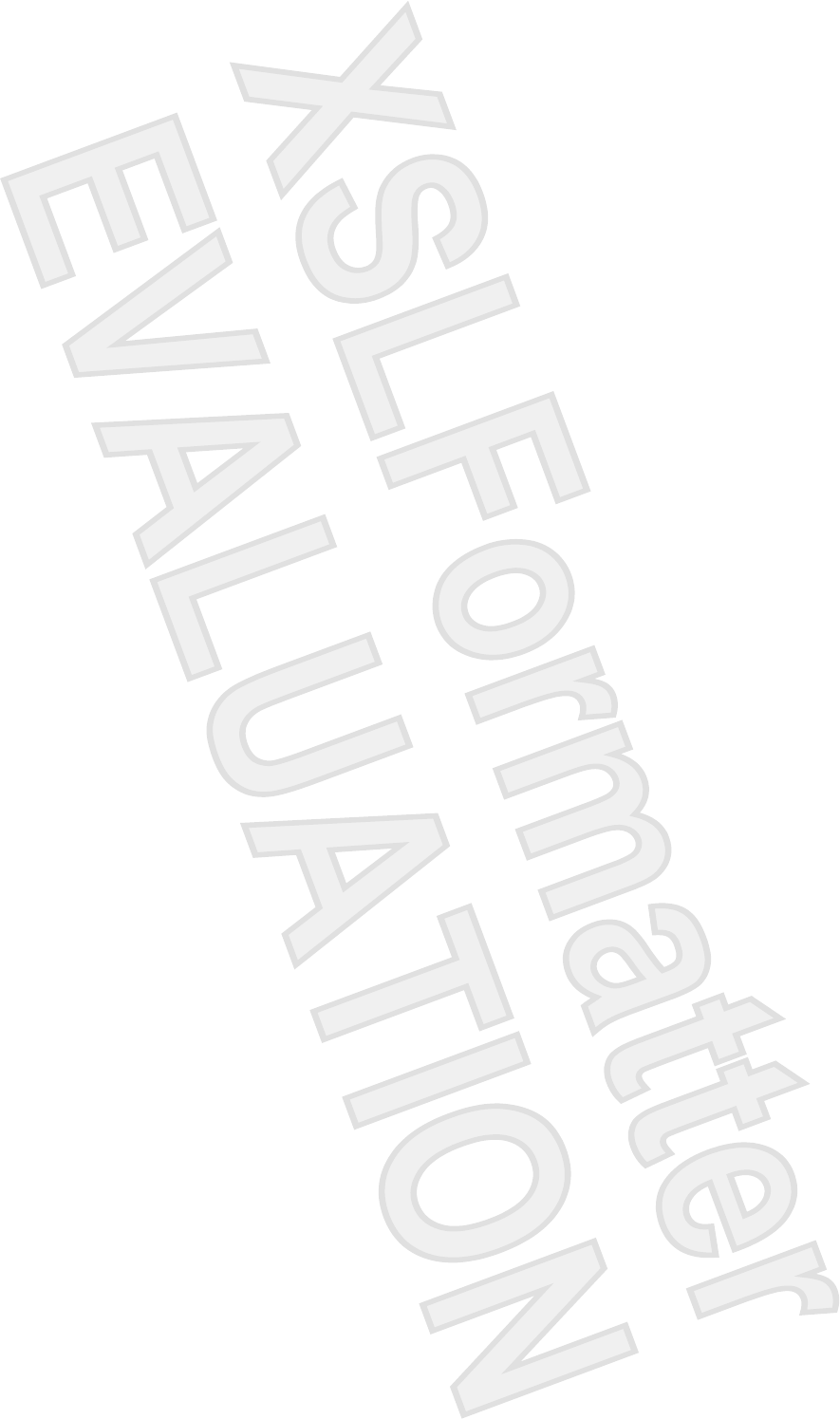
14 Tasks
Setting the Start and Due Dates for a Task
1. Tap Start > Programs > Tasks.
2. Tap the task you want to set start and due dates for.
3. Tap Edit and do one or both of the following:
●Tap Starts to enter a start date for the task.
●Tap Due to enter a due date for the task.
4. Tap OK.
ENWW Setting the Start and Due Dates for a Task 99
Antenna House XSL Formatter (Evaluation) http://www.antennahouse.com/
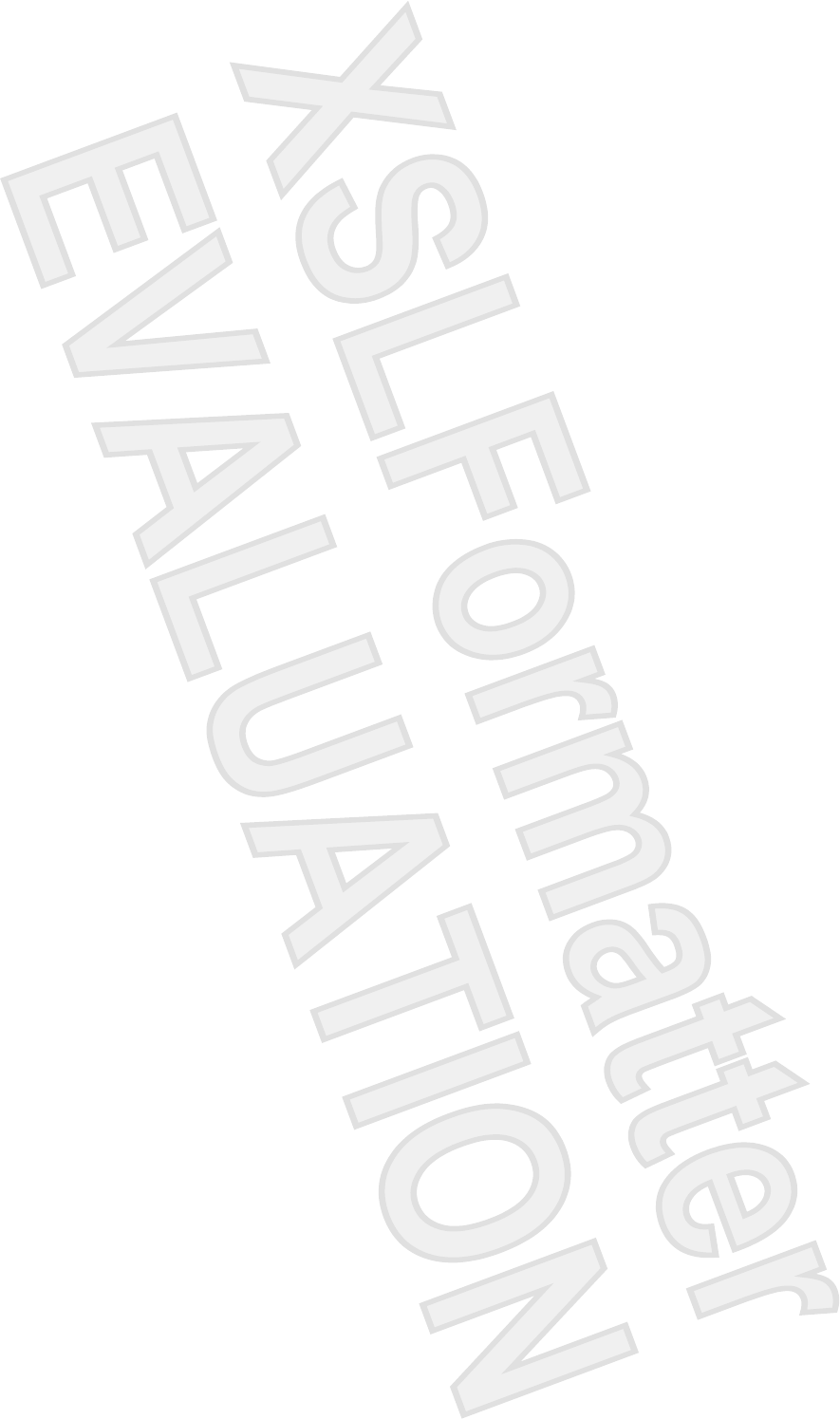
Setting Options for Displaying Tasks on the Today Screen
If you have a large number of tasks, you may want to specify the kind of tasks that show on the Today
screen.
1. Tap Start > Settings > Personal tab > Today.
2. Tap the Items tab, then select the Tasks check box.
3. Tap the word Tasks to access Options, then tap the Options button.
4. Under Display number of, select the type of tasks you want to appear on the Today screen.
5. In the Category list, select whether to display only tasks assigned to a specific category or to display
all tasks.
ENWW Setting Options for Displaying Tasks on the Today Screen 101
Antenna House XSL Formatter (Evaluation) http://www.antennahouse.com/
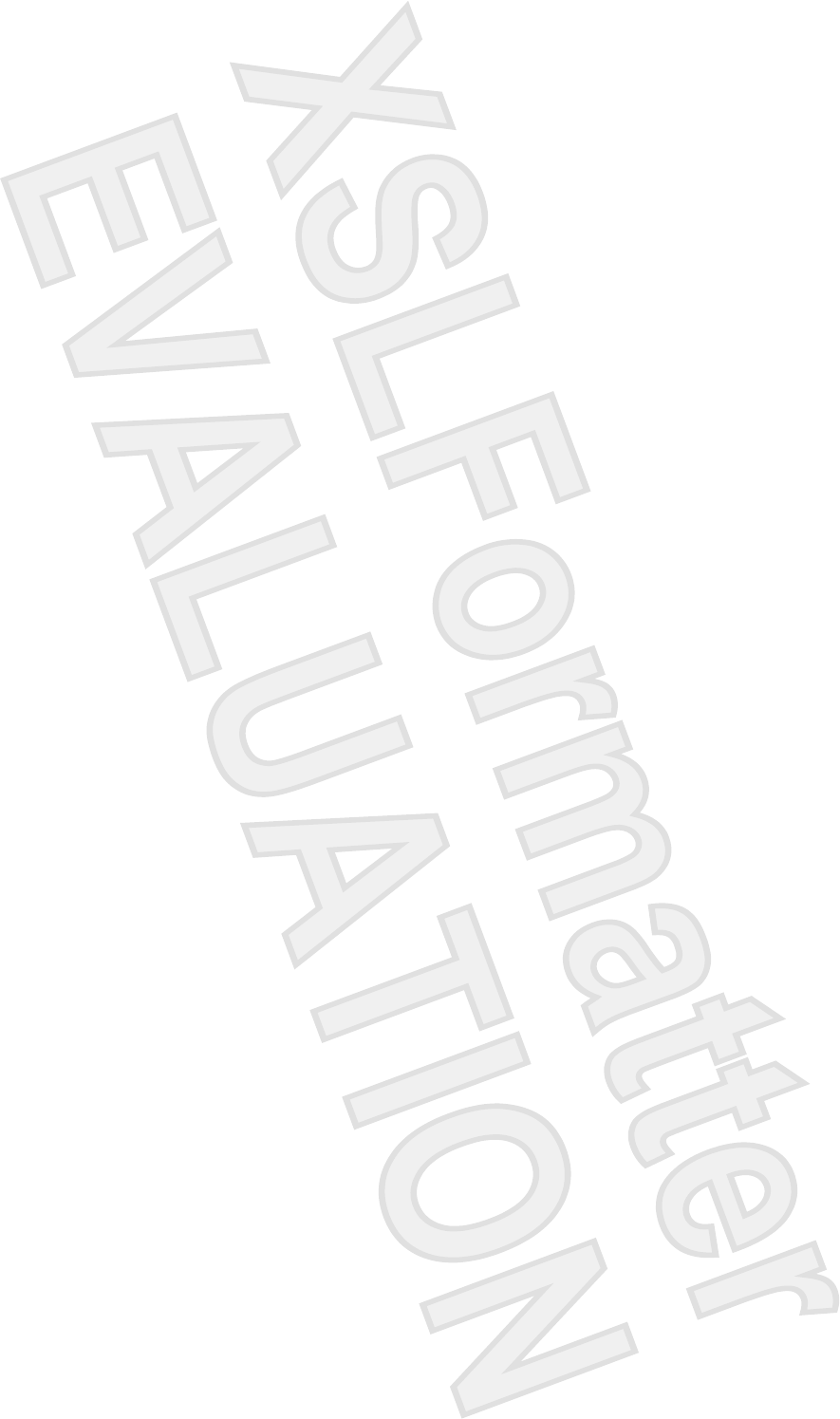
Marking a Task as Completed
To mark a task as completed:
1. Tap Start > Programs > Tasks.
2. In the task list, select the check box next to the task you want to mark as completed.
To mark an open task as completed:
1. Tap Edit.
2. In the Status box, tap Completed.
102 Chapter 14 Tasks ENWW
Antenna House XSL Formatter (Evaluation) http://www.antennahouse.com/

15 Product Specifications
System Specifications
NOTE Not all models described are available in all regions. For more information on
specifications for your particular model, on your HP iPAQ, tap Start > Settings > System tab >
System Details.
System Feature Description
Processor Samsung SC32442 Processor 400MHz
Operating System Microsoft® Windows Mobile
TM
Version 5.0 for Pocket PC
Memory 512 MB or 2.0 GB flash ROM for persistent storage, depending
on model
64 MB SDRAM for running applications
External Power 10 watt maximum output AC adapter with detachable heads,
voltage range 100 to 240V Switching, Input Current 0.15A Aac
max, Input Frequency 50 to 60Hz, Output Voltage 5 Vdc,
Output Current 1 Amp
Display 3.5 in (89 mm) diagonal transflective TFT QVGA color, 240 x
320 pixels,0.057(H) x 0.171(V) mm dot pitch, 16-bit color
support, portrait and landscape support with touch screen
LED Backlight Multi-level brightness adjustment with power save mode
SD Slot Supports SD memory and 4-bit SDIO
Wired Stereo Headset 3.5mm jack with dual earbud style headset—Included in box
of select models only
Antenna Internal
Audio Integrated microphone, receiver, stereo speakers and one
3.5mm stereo headphone jack, 3D widening/bass boost/treble
adjustment LifeVibes
TM
Concert Sound EX, and handsfree
speakerphone
Battery 1,700 mAh Li-ion removable/rechargeable battery
Bluetooth Class II device; up to 4 dBm transmit, typical 10 meter range
(approximately 33 feet)—High-speed, low-power, short-range
wireless communication with other Bluetooth devices
ENWW System Specifications 103
Antenna House XSL Formatter (Evaluation) http://www.antennahouse.com/
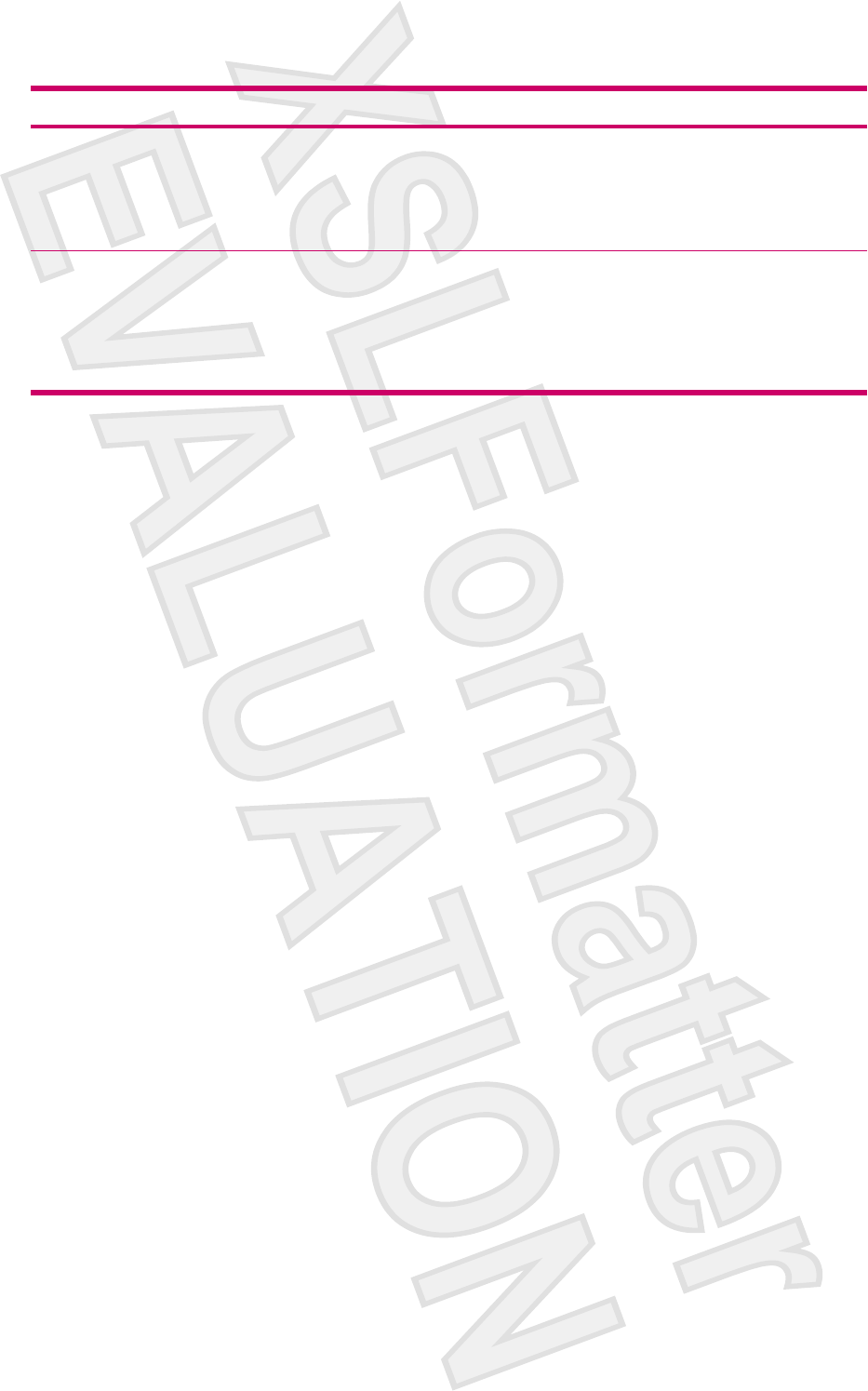
System Feature Description
LED Indicators:
Charge and Notification LED
●Flashing amber indicates an event notification or alarm
on your HP iPAQ.
●Solid amber indicates unit is charging.
●Solid green indicates unit is fully charged.
Wireless LED
Wi-Fi on enhanced model only.
●Flashing blue indicates either or both:
●Bluetooth is on
●Wi-Fi is on.
●LED off indicates Bluetooth and Wi-Fi are off
104 Chapter 15 Product Specifications ENWW
Antenna House XSL Formatter (Evaluation) http://www.antennahouse.com/

Operating Environment
US Metric
Temperature Operating 32° to 104°F 0° to 40°C
Nonoperating -4° to 140°F -20° to 60°C
Relative Humidity Operating up to 90% up to 90%
Nonoperating up to 90% up to 90%
Maximum Altitude Operating 15,000ft 4,572m
Nonoperating 40,000ft 12,192m
106 Chapter 15 Product Specifications ENWW
Antenna House XSL Formatter (Evaluation) http://www.antennahouse.com/
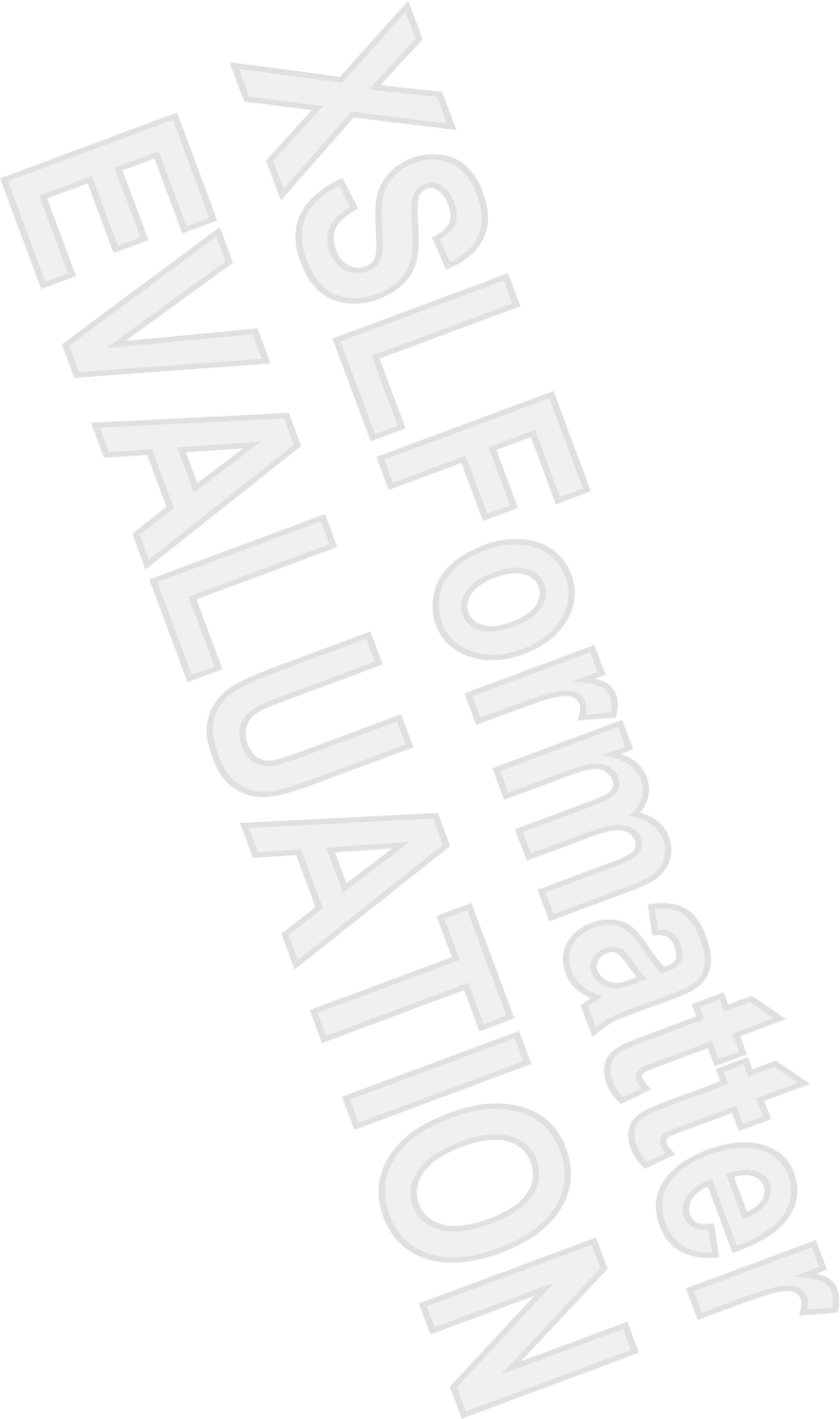
16 Regulatory Notices
Federal Communications Commission Notice
This equipment has been tested and found to comply with the limits for a Class B digital device, pursuant
to Part 15 of the FCC Rules. These limits are designed to provide reasonable protection against harmful
interference in a residential installation. This equipment generates, uses, and can radiate radio
frequency energy and, if not installed and used in accordance with the instructions, may cause harmful
interference to radio communications. However, there is no guarantee that interference will not occur
in a particular installation.
If this equipment does cause harmful interference to radio or television reception, which can be
determined by turning the equipment off and on, the user is encouraged to try to correct the interference
by one or more of the following measures:
●Reorient or relocate the receiving antenna.
●Increase the separation between the equipment and receiver.
●Connect the equipment to an outlet on a circuit different from that to which the receiver is
connected.
●Consult the dealer or an experienced radio or television technician for help.
This PDA has been tested and demonstrated compliance when Bluetooth and WLAN are transmitting
simultaneously. This PDA must not be co-located or operating in conjunction with any other antenna or
transmitter.
Modifications
The FCC requires the user to be notified that any changes or modifications made to this device that are
not expressly approved by HP may void the user's authority to operate the equipment.
Cables
To maintain compliance with FCC Rules and Regulations, connections to this device must be made with
shielded cables having metallic RFI/EMI connector hoods.
ENWW Federal Communications Commission Notice 107
Antenna House XSL Formatter (Evaluation) http://www.antennahouse.com/
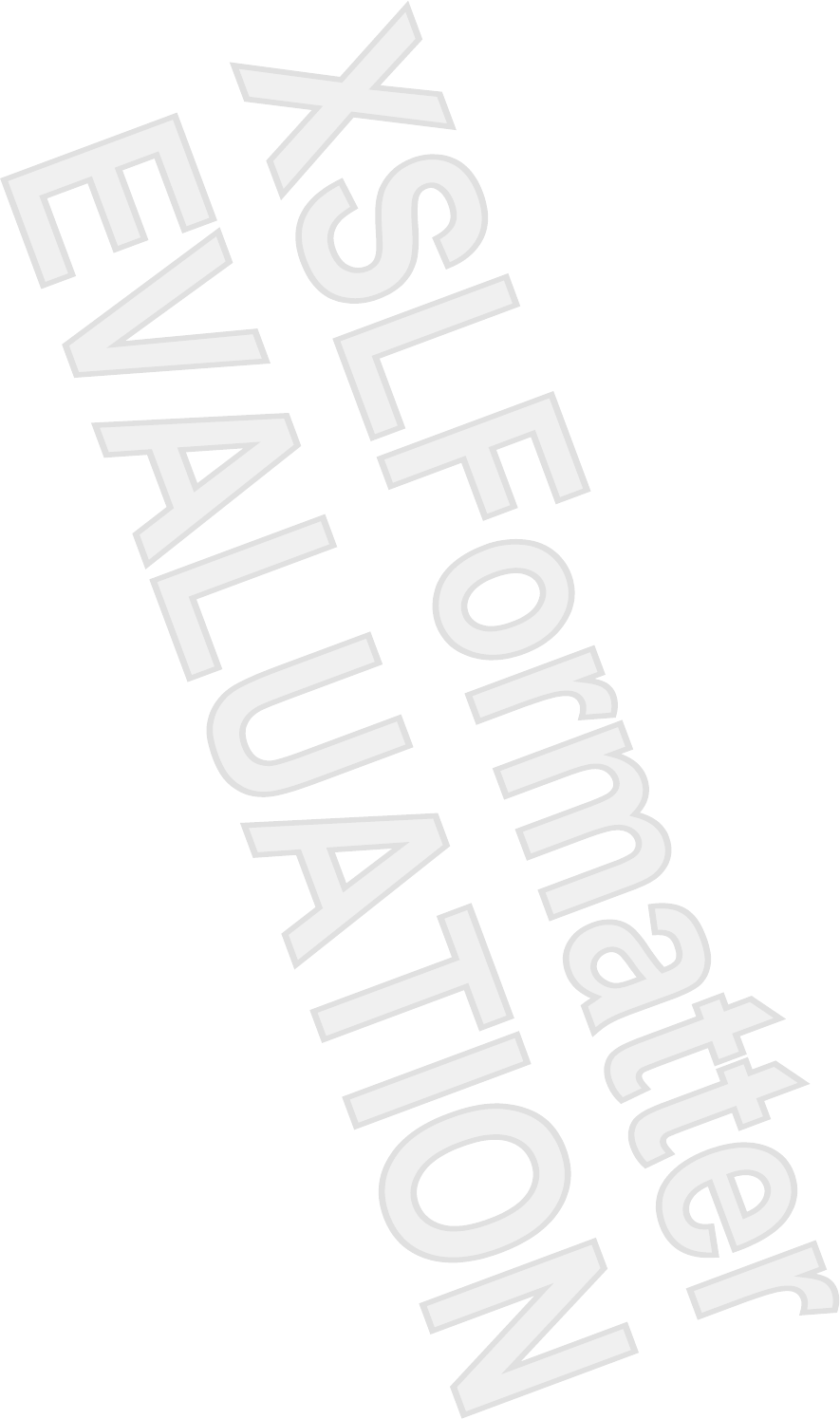
Declaration of Conformity for products marked with the FCC logo
(United States only)
This device complies with Part 15 of the FCC Rules. Operation is subject to the following 2 conditions:
1. This device may not cause harmful interference.
2. This device must accept any interference received, including interference that may cause
undesired operation.
If you have questions about the product that are not related to this declaration, write to
Hewlett-Packard Company
P. O. Box 692000, Mail Stop 530113
Houston, TX 77269-2000
or call 1-800-HP-INVENT (1-800-474-6836)
For questions regarding this FCC declaration, write to
Hewlett-Packard Company
P. O. Box 692000, Mail Stop 510101
Houston, TX 77269-2000
or call HP at 281-514-3333
To identify your product, refer to the part, series, or model number located on the product.
Canadian Notice
This Class B digital apparatus meets all requirements of the Canadian Interference-Causing Equipment
Regulations.
Avis Canadien
Cet appareil numérique de la classe B respecte toutes les exigences du Règlement sur le matériel
brouilleur du Canada.
European Union Notice
Products bearing the CE marking comply with the following EU Directives:
●Low Voltage Directive 73/23/EEC
●EMC Directive 89/336/EEC
CE compliance of this product is valid only if powered with the correct CE-marked AC adapter provided
by HP.
If this product has telecommunications functionality, it also complies with the essential requirements of
the following EU Directive:
●R&TTE Directive 1999/5/EC
108 Chapter 16 Regulatory Notices ENWW
Antenna House XSL Formatter (Evaluation) http://www.antennahouse.com/
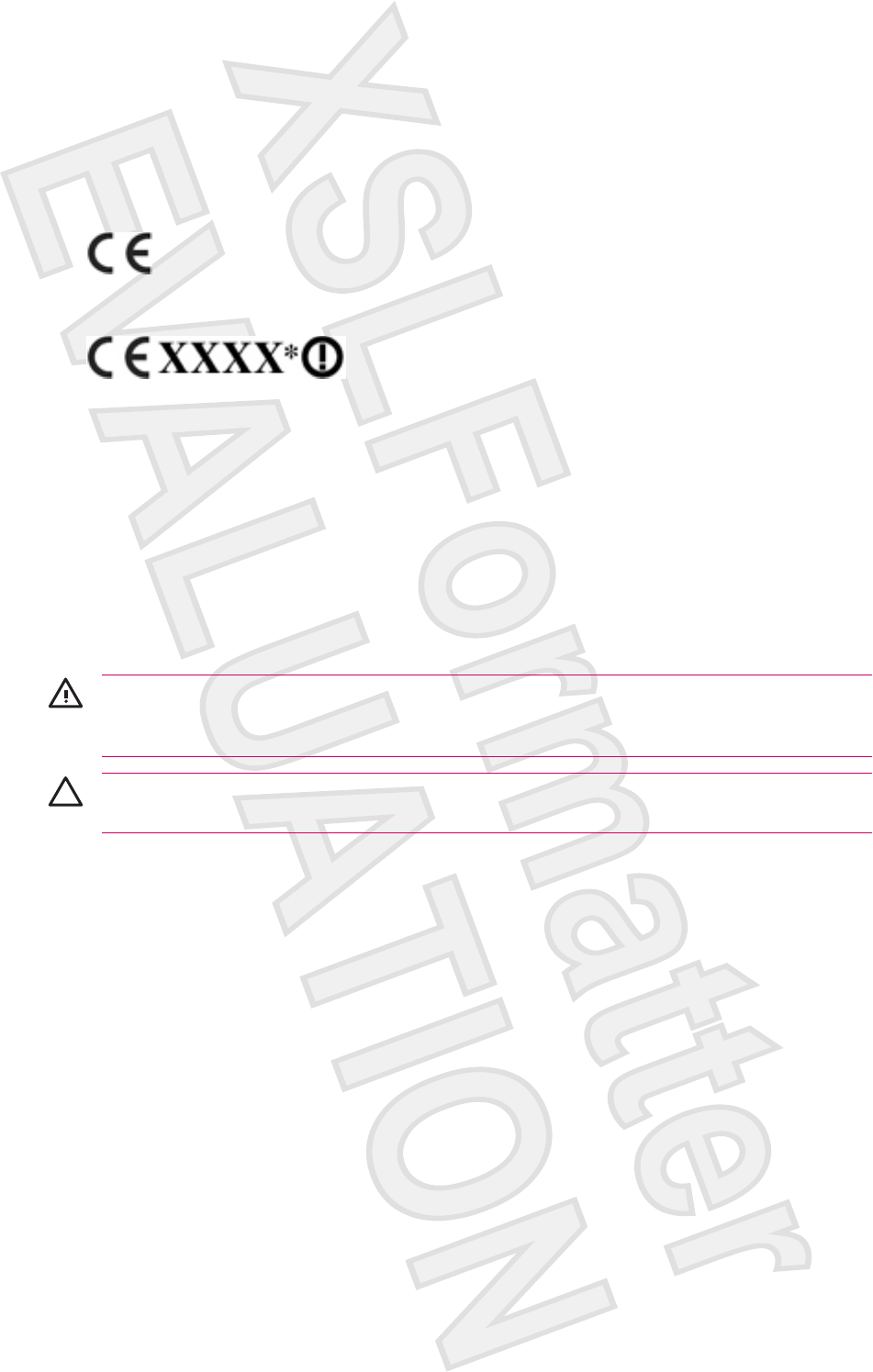
Compliance with these directives implies conformity to harmonized European standards (European
Norms) that are listed in the EU Declaration of Conformity issued by HP for this product or product family.
This compliance is indicated by one of the following conformity markings placed on the product.
●This CE marking is valid for non-telecommunications products and for EU harmonized
telecommunications products, such as Bluetooth®.
●This CE marking is valid for EU non-harmonized telecommunications products.
*If applicable, a notified body number is used. Refer to the regulatory label provided on this product.
The telecommunications functionality of this product may be used in the following EU and EFTA
countries:
Austria, Belgium, Cyprus, Czech Republic, Denmark, Estonia, Finland, France, Germany, Greece,
Hungary, Iceland, Ireland, Italy, Latvia, Liechtenstein, Lithuania, Luxembourg, Malta, Netherlands,
Norway, Poland, Portugal, Slovak Republic, Slovenia, Spain, Sweden, Switzerland, and United
Kingdom.
Battery Warning
WARNING! This HP iPAQ contains a lithium ion rechargeable battery. To reduce the risk of fire
or burns, do not disassemble, crush, puncture, short external contacts, or dispose of in fire or
water. Replace only with the HP spare.
CAUTION Risk of explosion if battery is replaced by an incorrect type. Dispose of used batteries
according to the instructions.
ENWW Battery Warning 109
Antenna House XSL Formatter (Evaluation) http://www.antennahouse.com/

Battery Recycling
HP encourages customers to recycle used electronic hardware, HP original print cartridges, and
rechargeable batteries. For more information about recycling programs, visit www.hp.com/recycle.
110 Chapter 16 Regulatory Notices ENWW
Antenna House XSL Formatter (Evaluation) http://www.antennahouse.com/
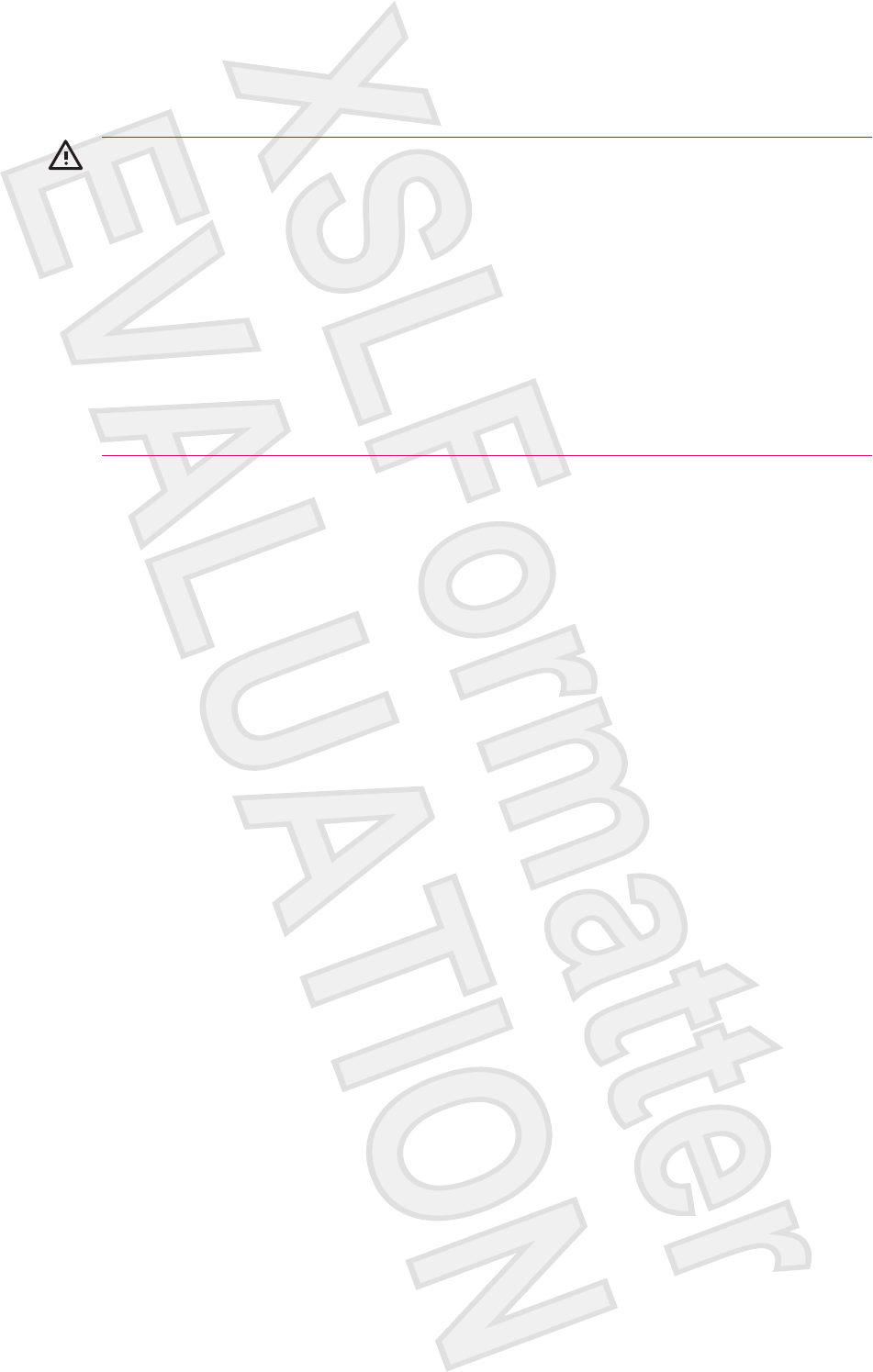
Equipment Warning
WARNING! To reduce the risk of personal injury, electrical shock, fire or damage to the
equipment:
Plug the power cord into an AC outlet that is easily accessible at all times.
Disconnect power from the equipment by unplugging the power cord from the AC outlet or
unplugging the synchronization cable from the host computer.
Do not place anything on the power cord or any of the other cables. Arrange them so that no one
may accidentally step on or trip over them.
Do not pull on a cord or cable. When unplugging from the electrical outlet, grasp the cord by the
plug or, in the case of the AC adapter, grasp the AC adapter and pull out from the electrical outlet.
Do not use converter kits sold for appliances to power your iPAQ Pocket PC.
ENWW Equipment Warning 111
Antenna House XSL Formatter (Evaluation) http://www.antennahouse.com/
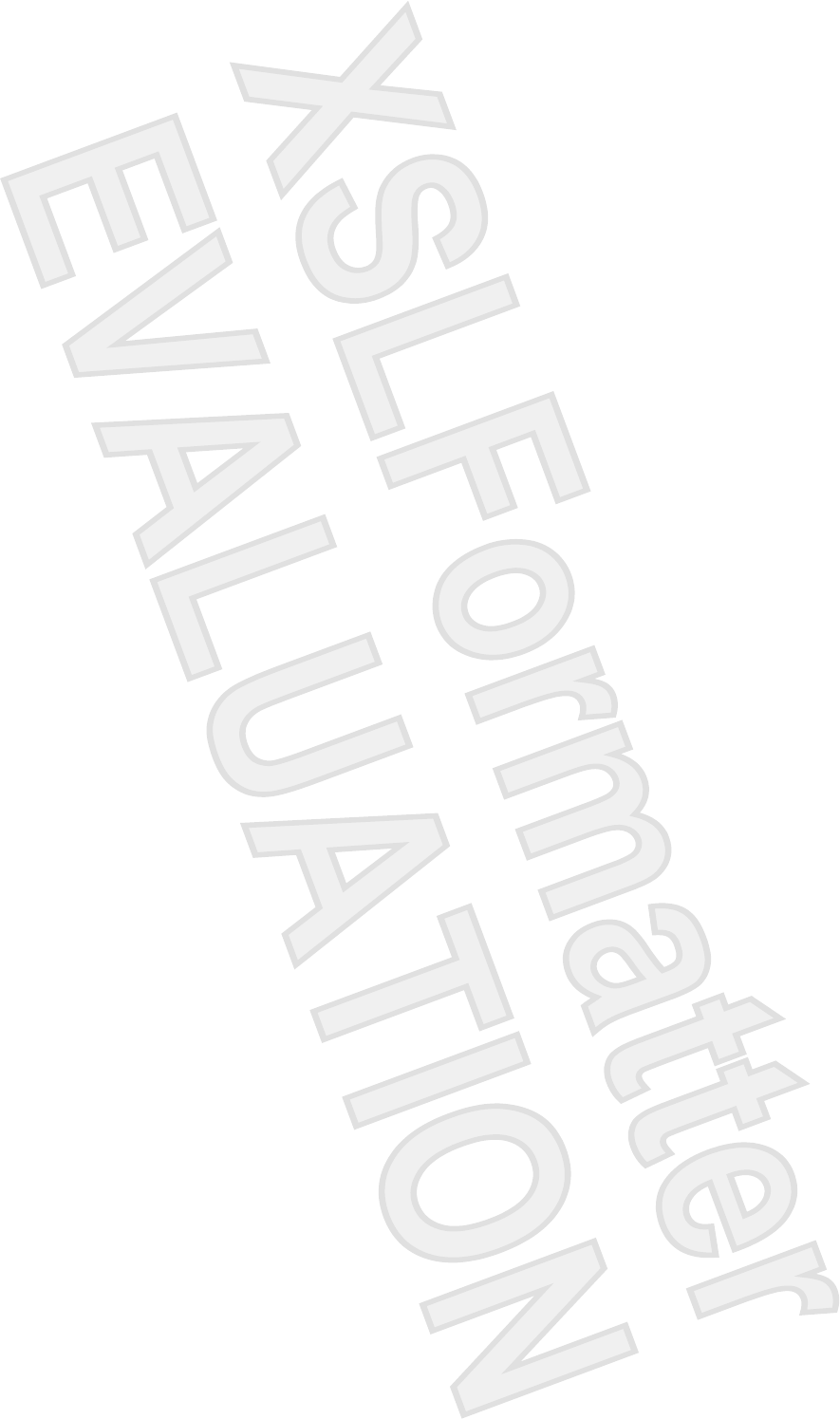
Medical Electronic Equipment
If you have a medical condition that requires you to use a pacemaker, hearing aid, or any type of medical
electronic equipment, consult the manufacturer of the equipment to determine if the medical equipment
is shielded from RF energy. Turn off your HP iPAQ in health care facilities or hospitals when there are
posted restrictions requiring you to do so.
112 Chapter 16 Regulatory Notices ENWW
Antenna House XSL Formatter (Evaluation) http://www.antennahouse.com/
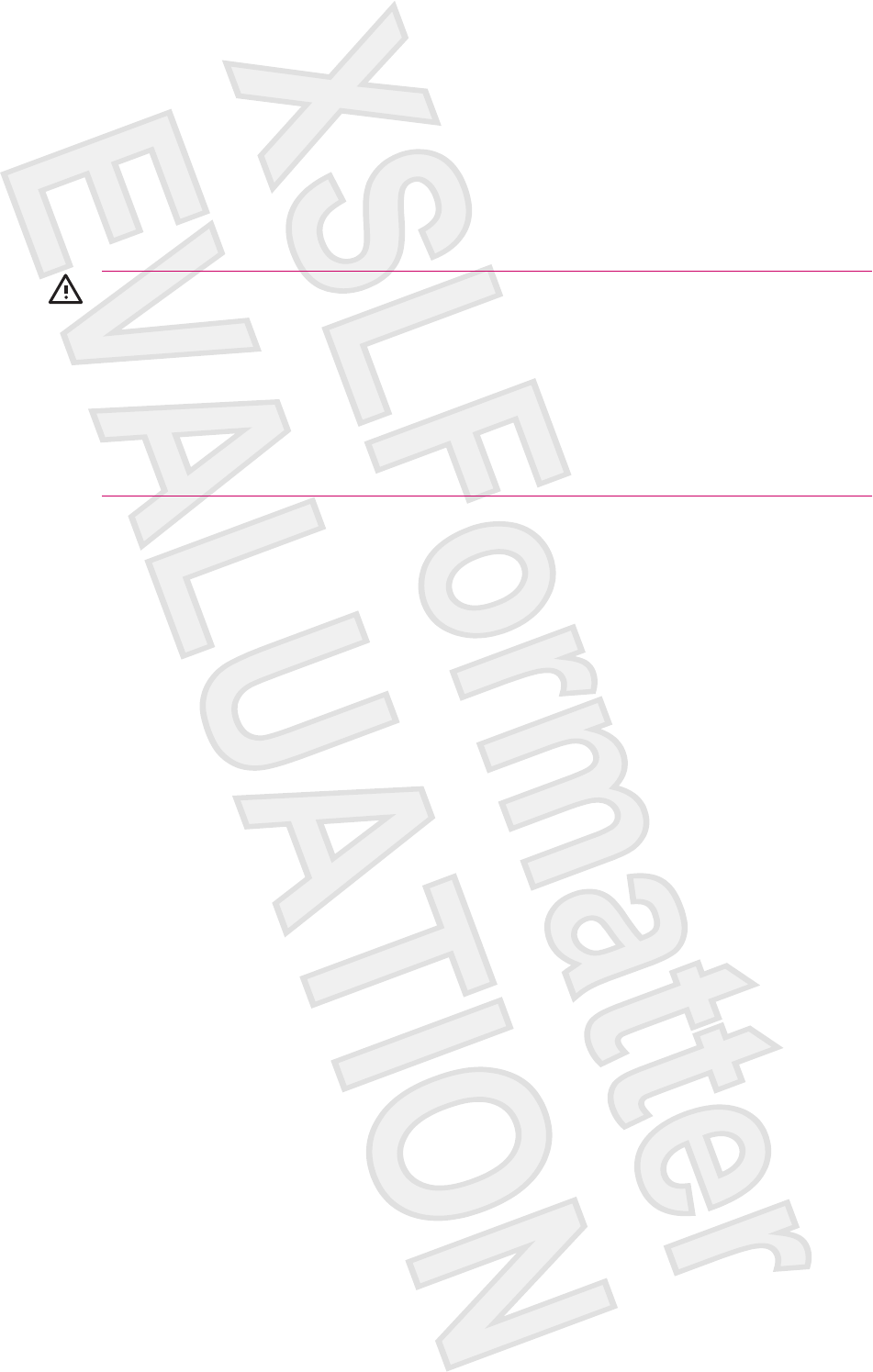
Wireless Notices
In some environments, the use of wireless devices may be restricted. Such restrictions may apply aboard
airplanes, in hospitals, near explosives, in hazardous locations, etc. If you are uncertain of the policy
that applies to the use of this device, please ask for authorization to use it prior to turning it on.
U.S. Regulatory Wireless Notice
WARNING! Exposure to Radio Frequency (RF) Radiation The radiated output power of this
device is below the FCC radio frequency exposure limits. Nevertheless, the device should be
used in such a manner that the potential for human contact during normal operation is minimized.
To avoid the possibility of exceeding the FCC radio frequency exposure limits, human proximity
to the antenna should be minimized.
This PDA has been tested and demonstrated compliance when Bluetooth and WLAN are
transmitting simultaneously. This PDA must not be co-located or operating in conjunction with
any other antenna or transmitter.
Canadian Regulatory Wireless Notice
Operation is subject to the following two conditions: (1) this device may not cause interference, and (2)
this device must accept any interference, including interference that may cause undesired operation of
the device.
Brazilian Notice
Este equipamento opera em caráter secundário, isto é, não tem direito a proteção contra interferência
prejudicial, mesmo de estações do mesmo tipo, e não pode causar interferência a sistemas operando
em caráter primário.
ENWW Wireless Notices 113
Antenna House XSL Formatter (Evaluation) http://www.antennahouse.com/
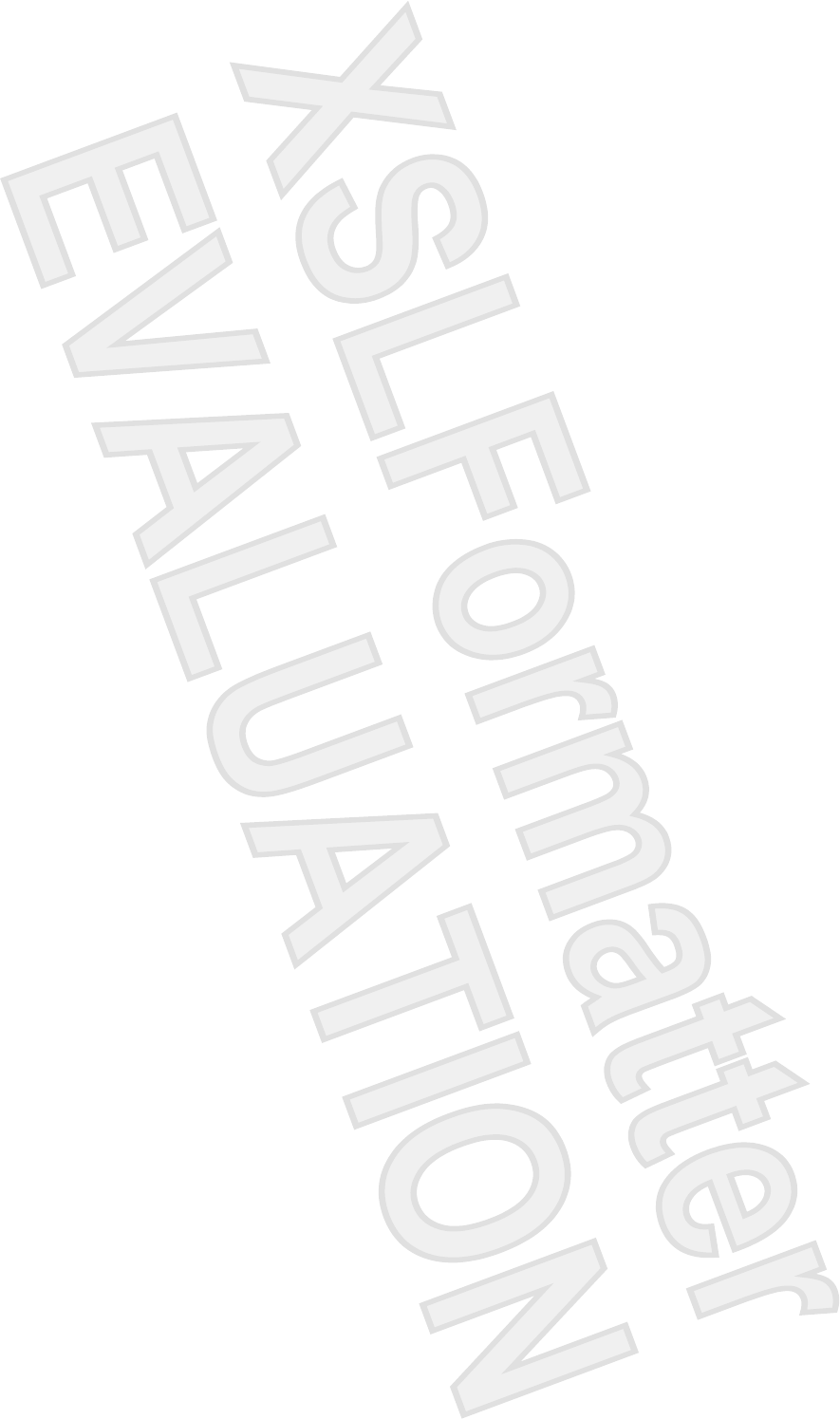
Index
A
alarms
setting 69
attachments
adding to messages 56
receiving in messages 54
B
backlight
adjusting brightness 65
dimming 65
Bluetooth
COM port 43
device profiles 41
making a device
discoverable 43
making connections 41
partnerships 42
settings 43
terms 40
working with Bluetooth
Manager 40
Brazilian notice 113
C
calendar
accessing 75
canceling appointments 78
display of work week 75
setting default reminders 76
updating appointments 77
Canadian notice 113
Canadian notices 108
categories
assigning 72
creating 72
clock
setting alarms 69
showing in all programs 71
closing programs 67
Connections
advanced proxy settings 32
automatic connection
choice 30
changing an intranet URL 29
connecting to intranets 28
connection group name 35
connections 27
ending connections 36
proxy server settings 31
using advanced connection
settings 33
using VPNs 34
contacts
adding pictures 85
changing information 82
copying 83
creating 79
deleting 81
finding 80
information summary 86
listing 86
removing pictures 85
searching 86
sending e-mail messages 84
working with the contact
list 86
cost saving
wireless synchronization
tips 97
customizing the HP iPAQ 68
D
Declaration of Conformity 108
device
information 68
name 68
version 68
E
European Union notices 108
F
Federal Communications
Commission
cables 107
modifications 107
notice 107
G
GPS
configuring my GPS software to
connect to HP iPAQ 5
identifying the COM port for my
GPS receiver 7
identifying your HP iPAQ's
embedded receiver 8
losing the GPS signal
frequently 11
losing the GPS signal while in
my car 10
managing GPS
automatically 6
reasons for interference using
GPS software 12
using an external antenna with
your GPS receiver 9
verifying compatibility 4
I
imaging
attaching sounds to
pictures 46
backing up images 50
creating templates 49
e-mailing pictures 47
editing pictures 49
HP Photosmart Mobile 45
HP Photosmart Premier 49
ENWW Index 117
Antenna House XSL Formatter (Evaluation) http://www.antennahouse.com/
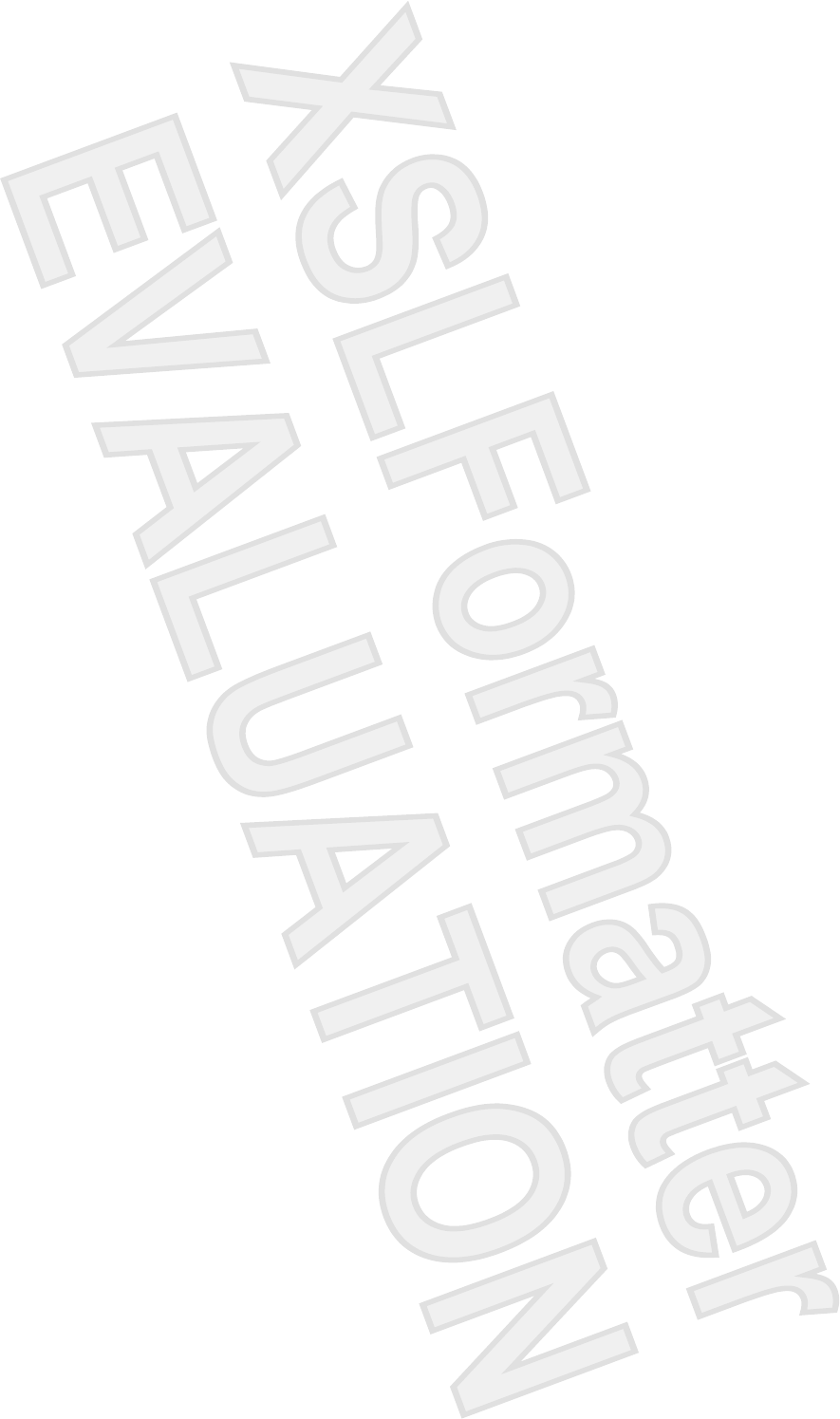
managing pictures 49
organizing pictures 49
printing pictures 45, 49
sending pictures 45
sharing pictures 50
viewing a slideshow 48
viewing pictures 45, 49
IMAP4 messaging
folders 52
installing programs 66
J
Japanese notice 114
K
Korean notice 116
M
meeting requests
receiving by e-mail 54
messaging
adding attachments to
messages 56
composing messages 56
downloading messages 56
downloading messages from a
server 57
forwarding messages 56
IMAP4 52
online address book 57
Outlook e-mail 52
POP3 52
receiving attachments 54
receiving meeting requests 54
replying to messages 56
sending e-mail messages to
contacts 84
sending messages 56
signatures 55
synchronizing e-mail 53
using folders 52
migrating data from Palm Desktop
to Windows Mobile 96
modifications, Federal
Communications
Commission 107
N
notes
converting handwritten notes to
typed text 88
copying 89
writing 87
notices
Brazilian 113
Canadian 108, 113
European Union 108
Federal Communications
Commission 107
Japanese 114
Korean 116
Taiwan 115
O
opening programs 67
operating environment
specifications 106
operating system
viewing information 61
organizing appointments, contacts,
and tasks 72
Outlook e-mail
folders 52
owner information
entering 59
P
physical specifications 105
POP3 messaging
folders 52
power management
changing settings 64
programs
closing 67
installing 66
opening 67
removing 66
R
regional settings
changing 62
registering your iPAQ 1
registration 1
removing programs 66
S
scrolling speed 73
shortcut menus 70
specifications
operating environment 106
physical 105
system 103
storage cards
installing 92
removing 93
using 91
viewing content 94
synchronization
migrating from Palm Desktop to
Windows Mobile 96
synchronizing
copying files 95
extending battery life 97
keeping information up to
date 97
reducing network connection or
data transfer costs 97
transferring files 95
wireless cost saving tips 97
synchronizing e-mail 53
system specifications 103
T
Taiwan notice 115
tasks
marking as completed 102
setting display options 101
setting start and due dates 99
showing start and due
dates 100
TodayPanel Lite 60
V
viewing operating system
information 61
volume
adjusting 63
W
Wi-Fi
accessing corporate
networks 37
automatically connecting 38
configuring 802.1x
authentication settings 39
connecting to an 802.11b/g
WLAN 37
connecting to the Internet 37
deleting wireless networks 39
finding an IP address 38
manually connecting 38
terms 37
using hotspots 37
118 Index ENWW
Antenna House XSL Formatter (Evaluation) http://www.antennahouse.com/
